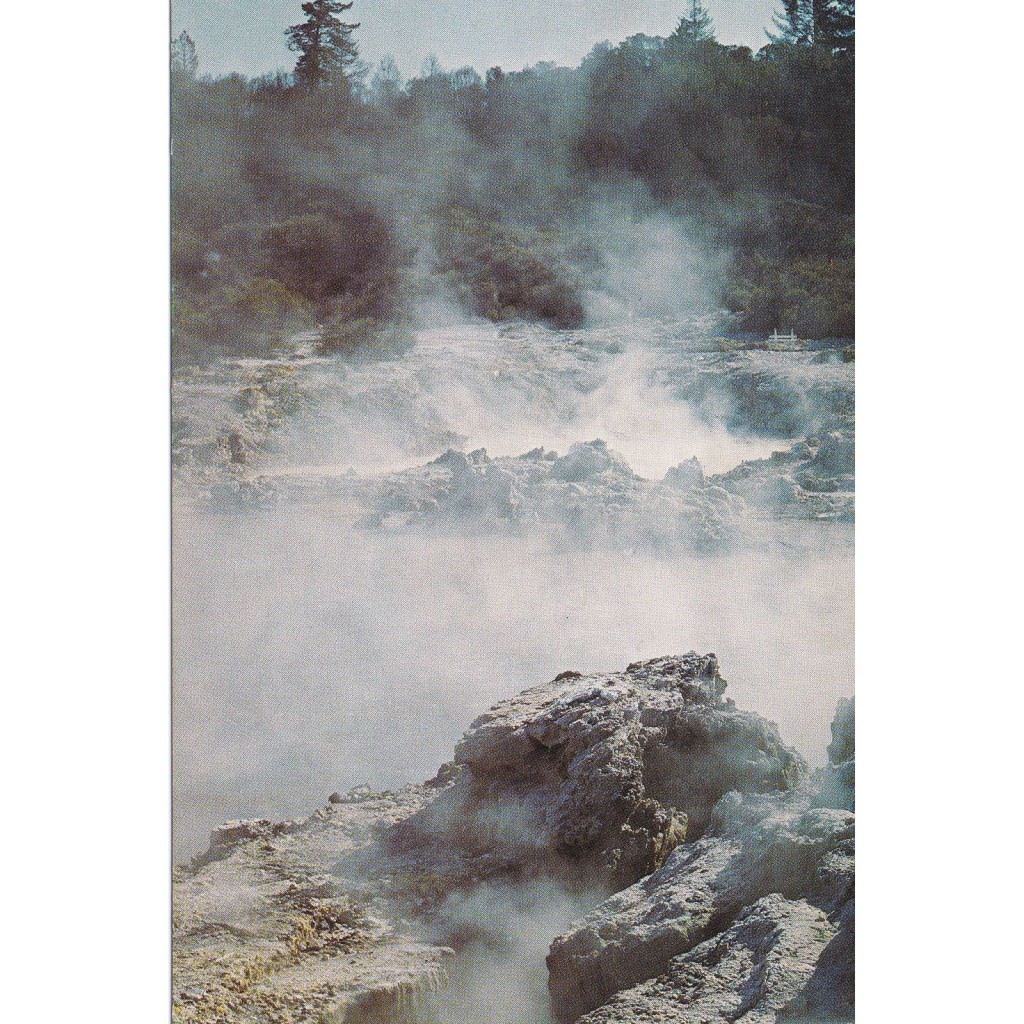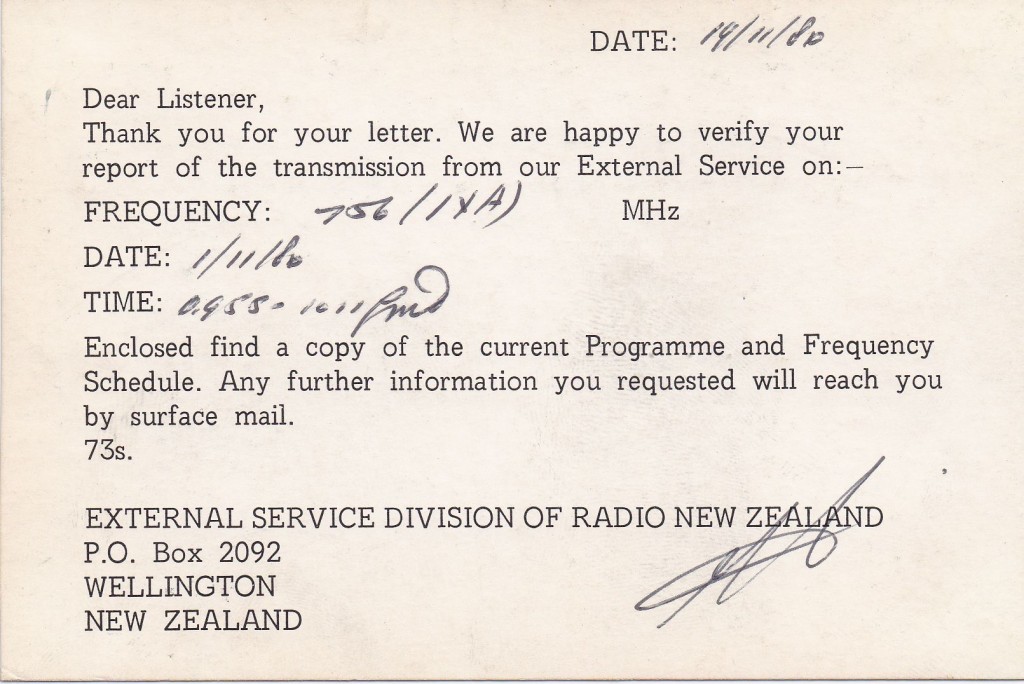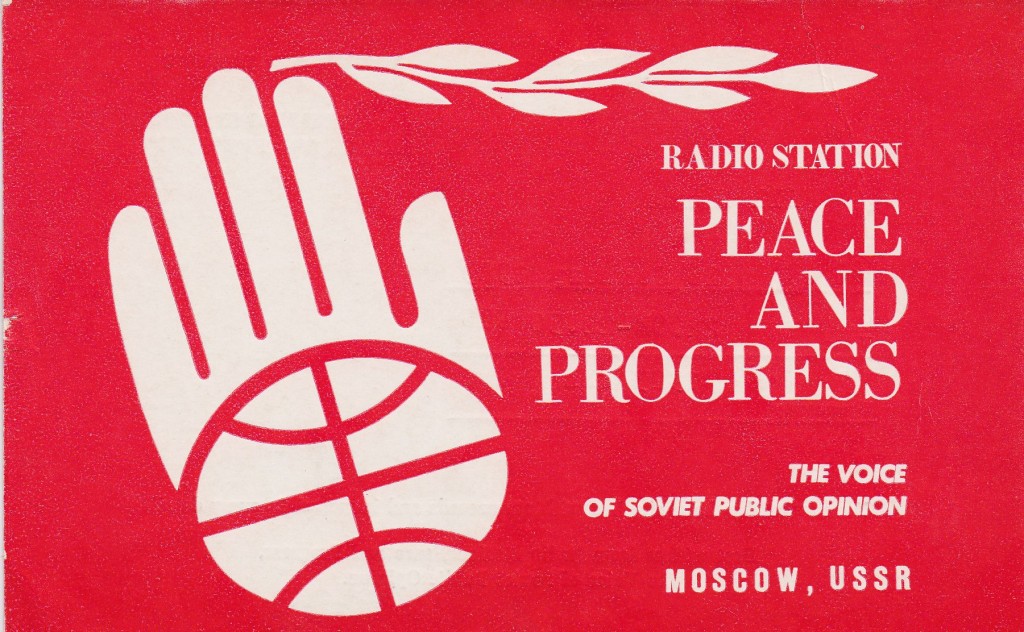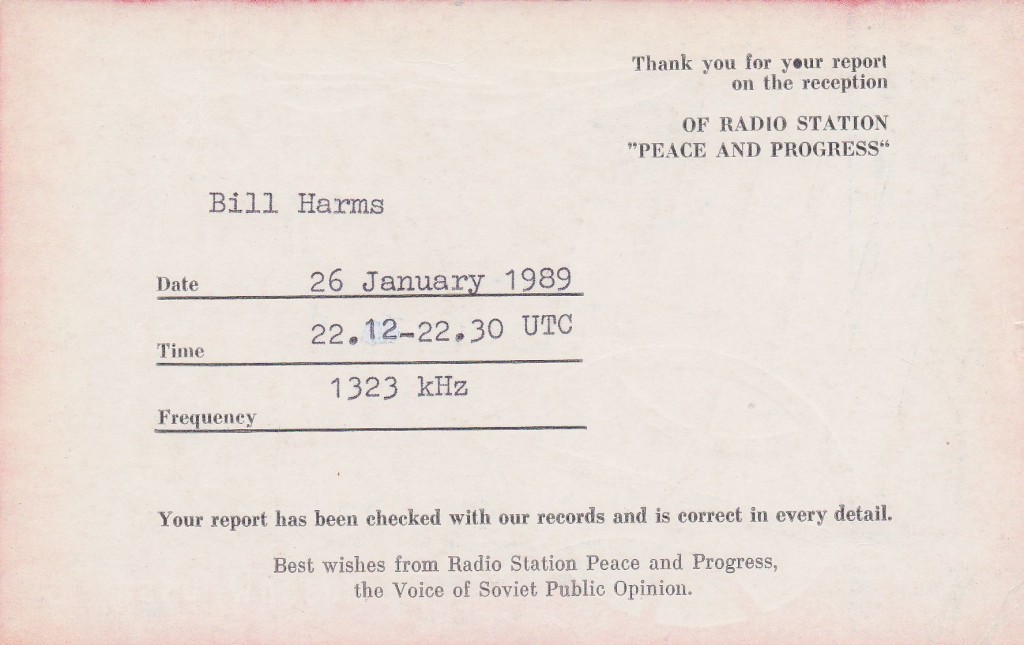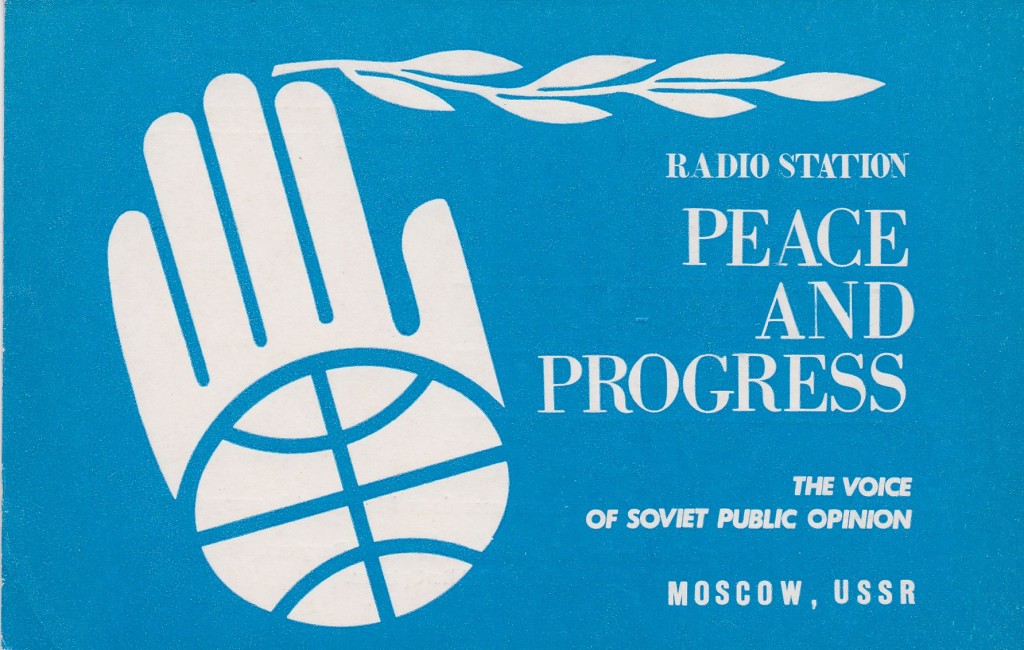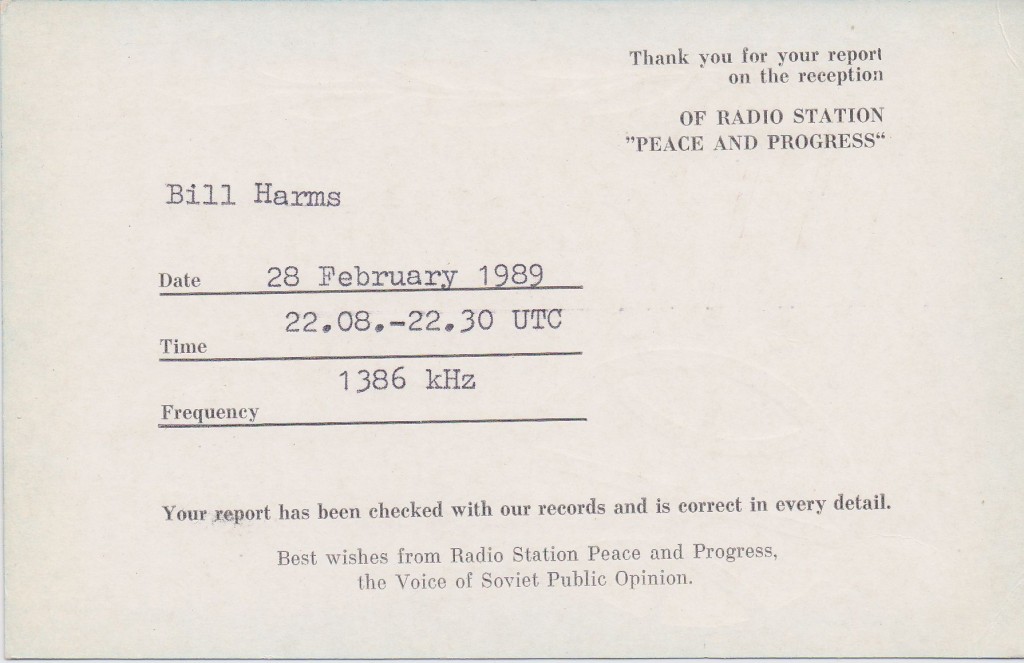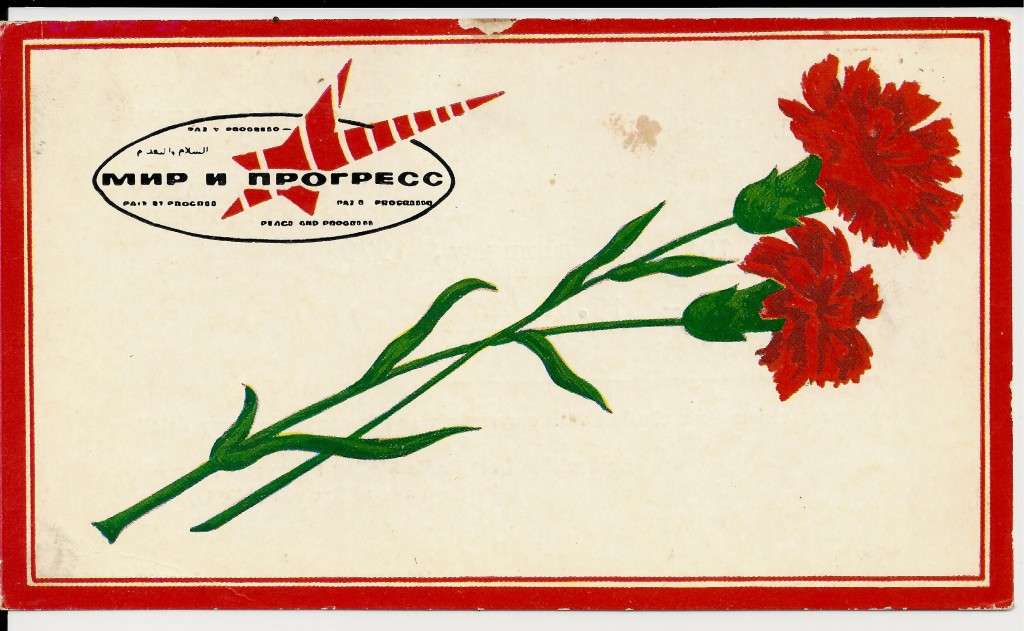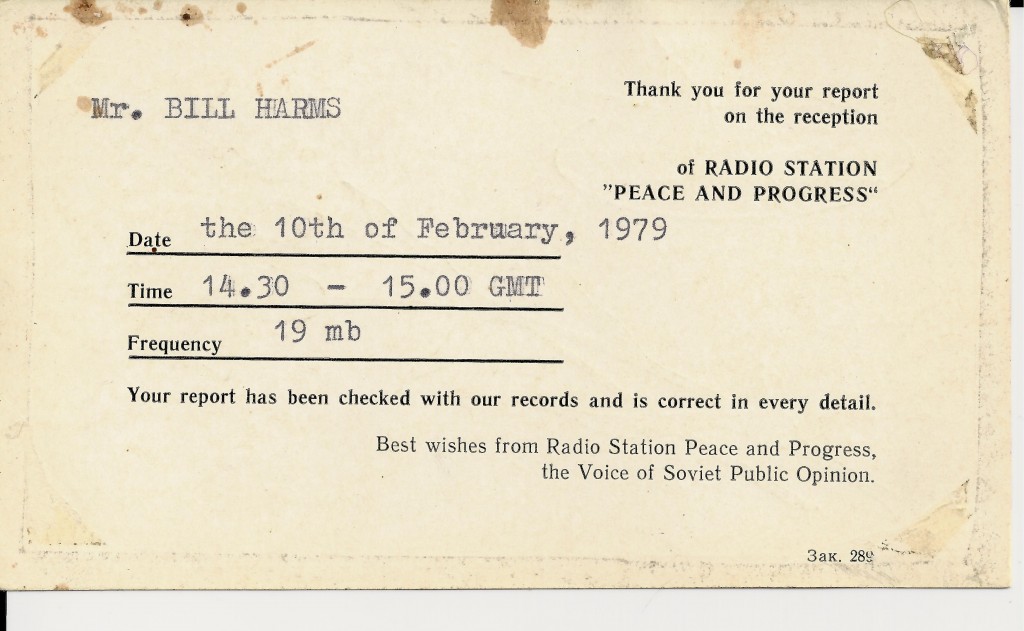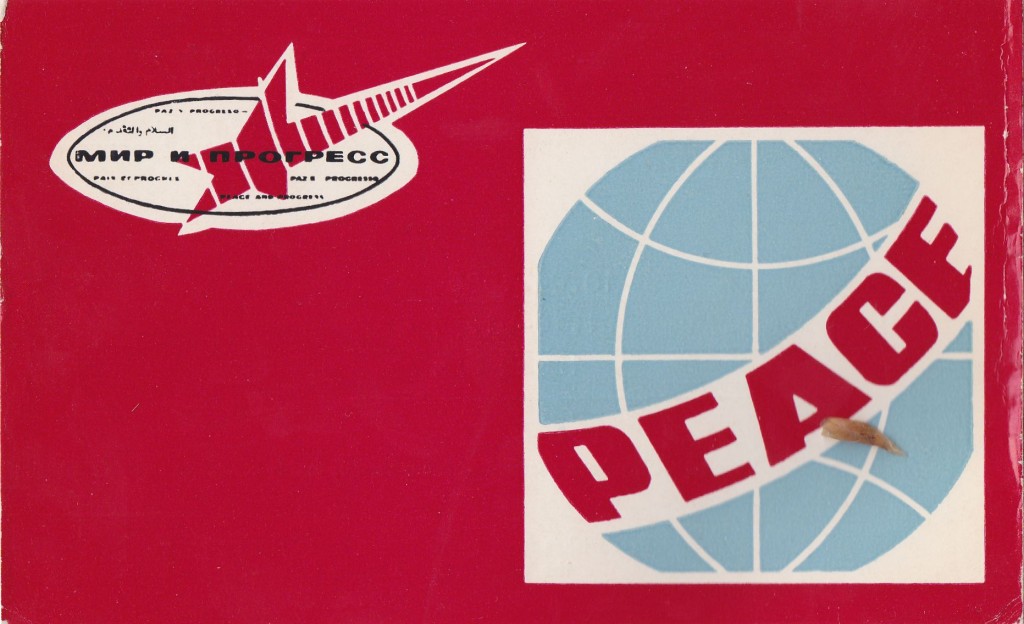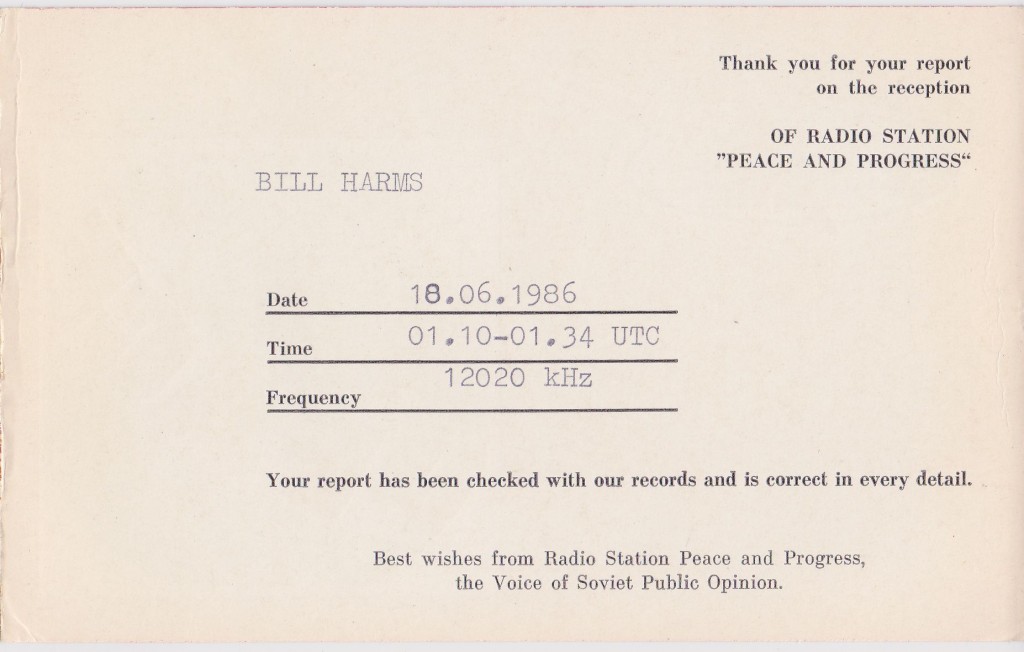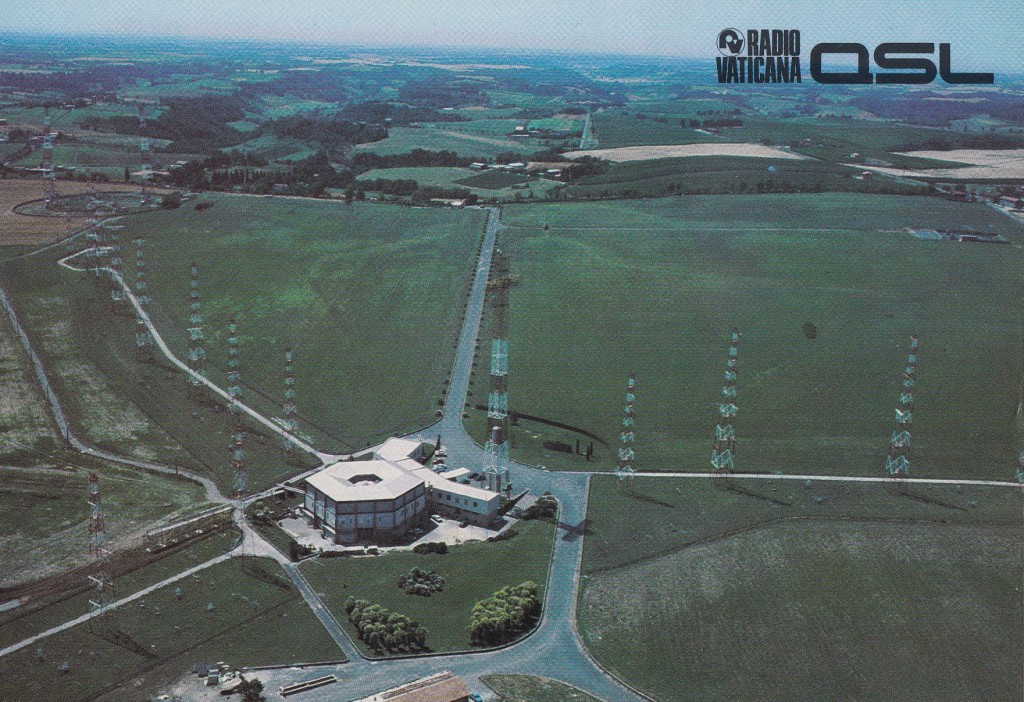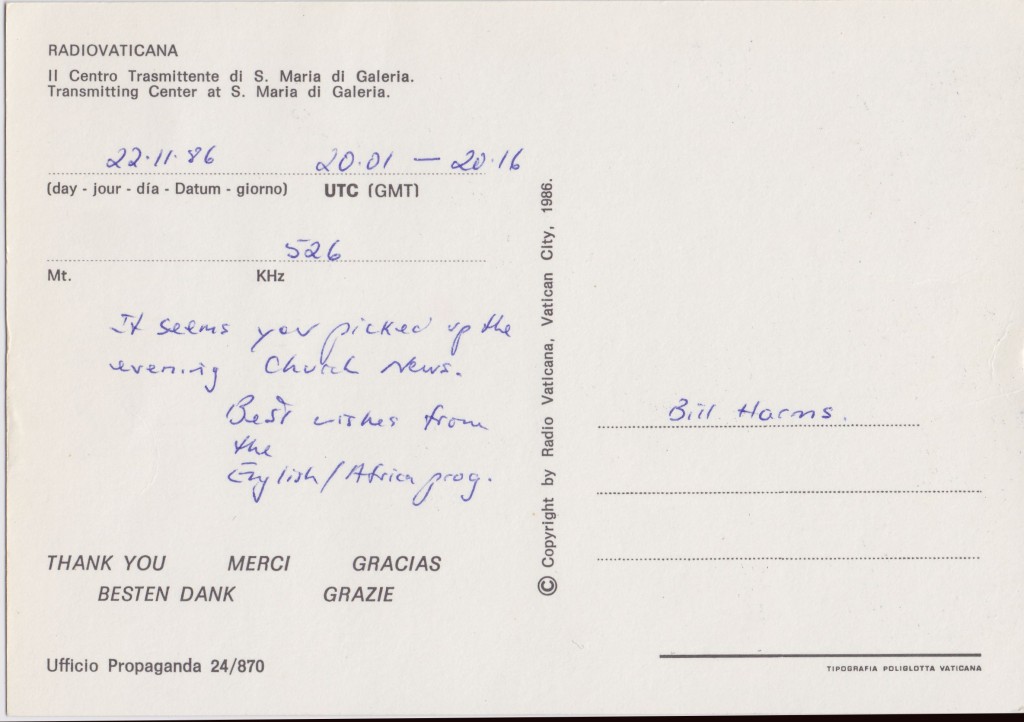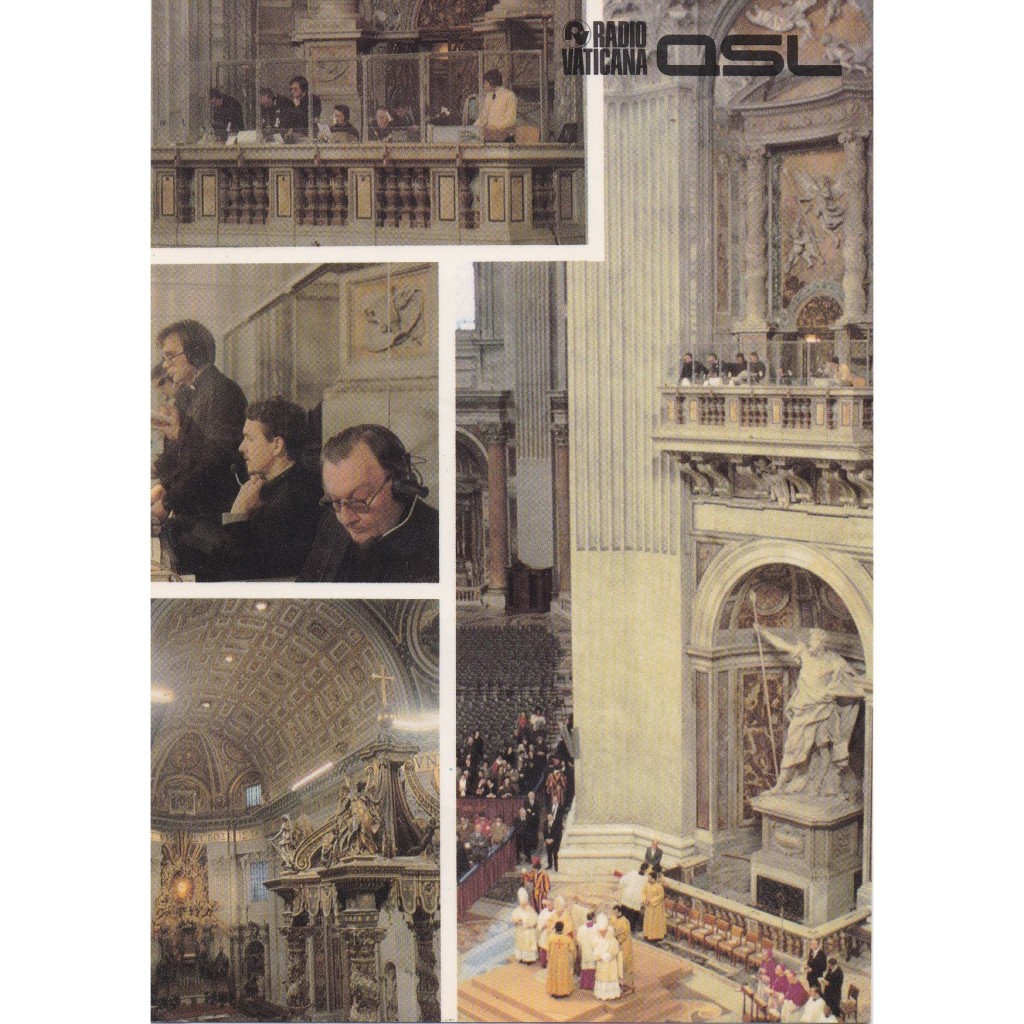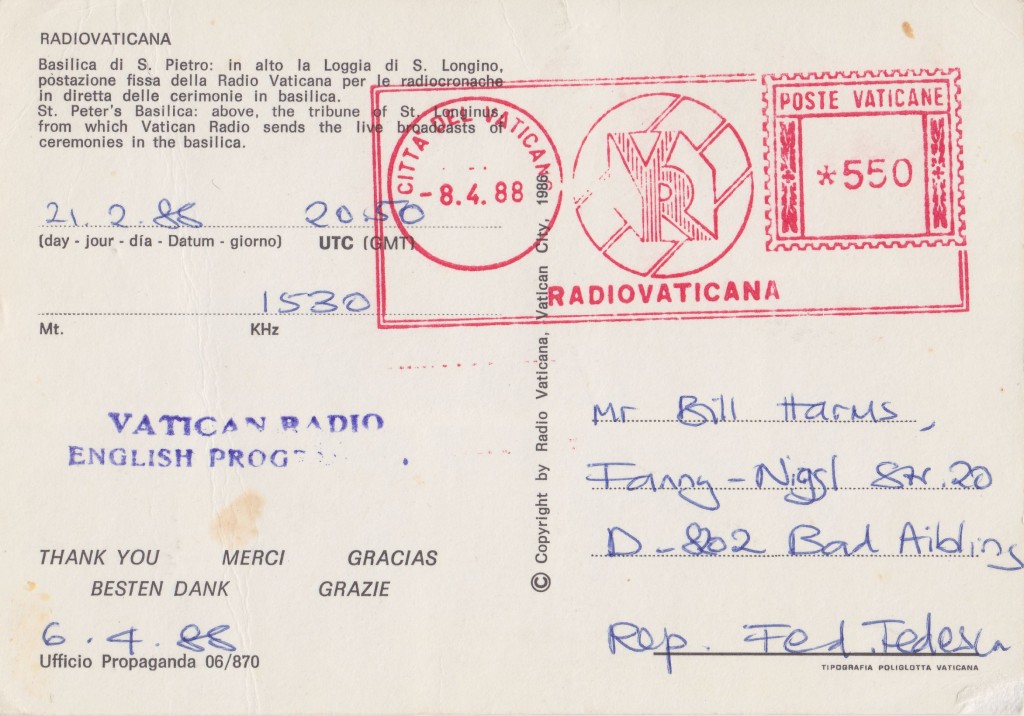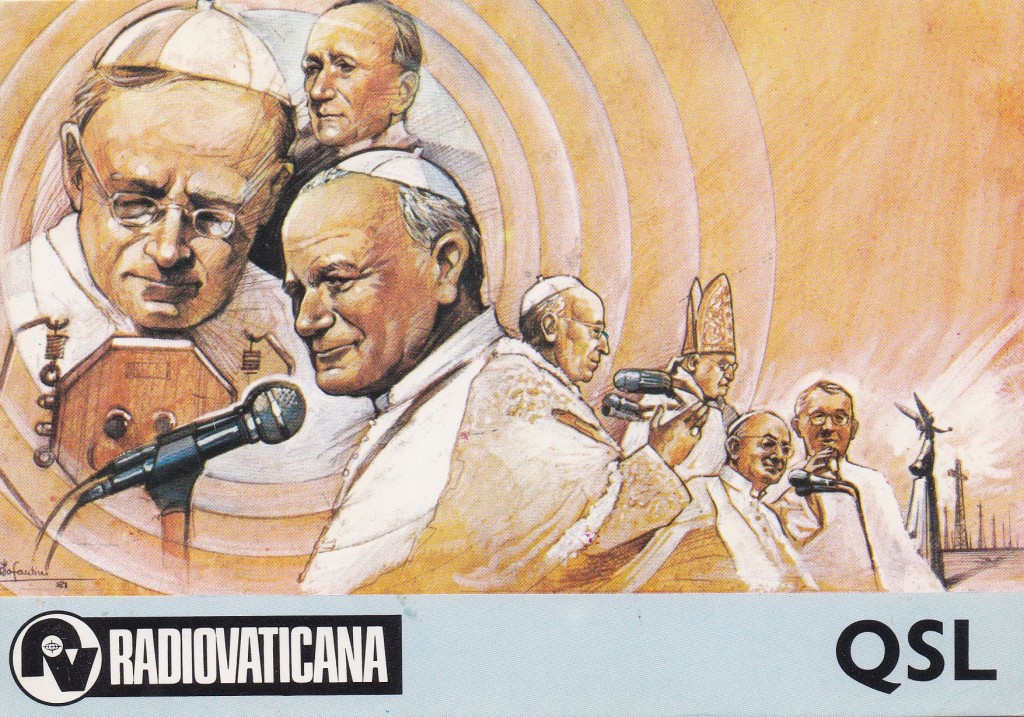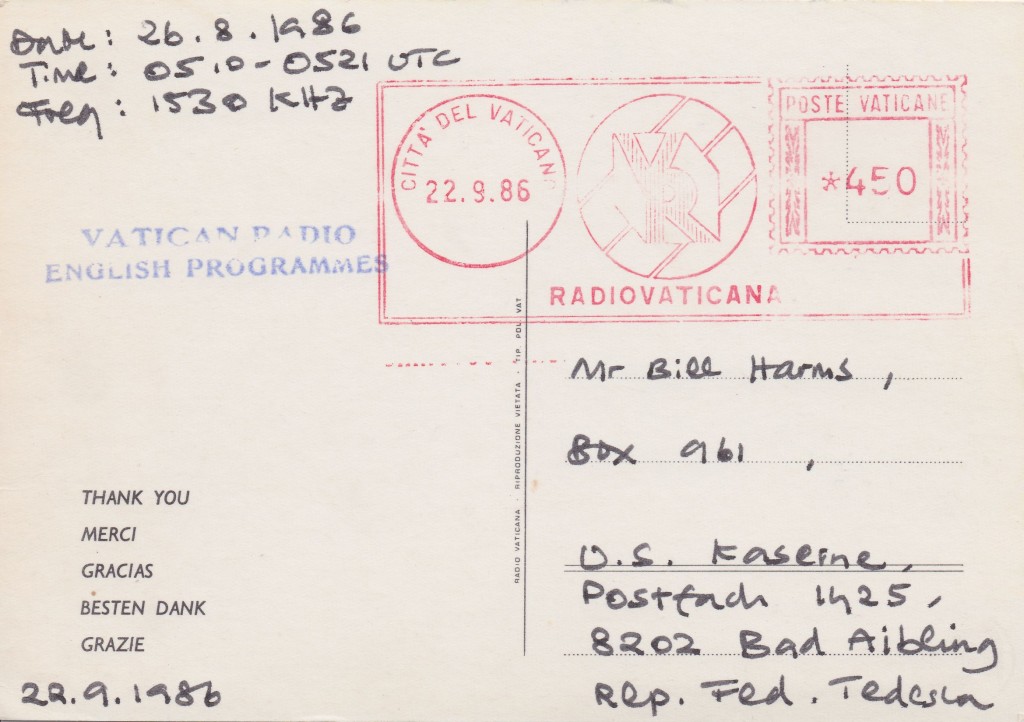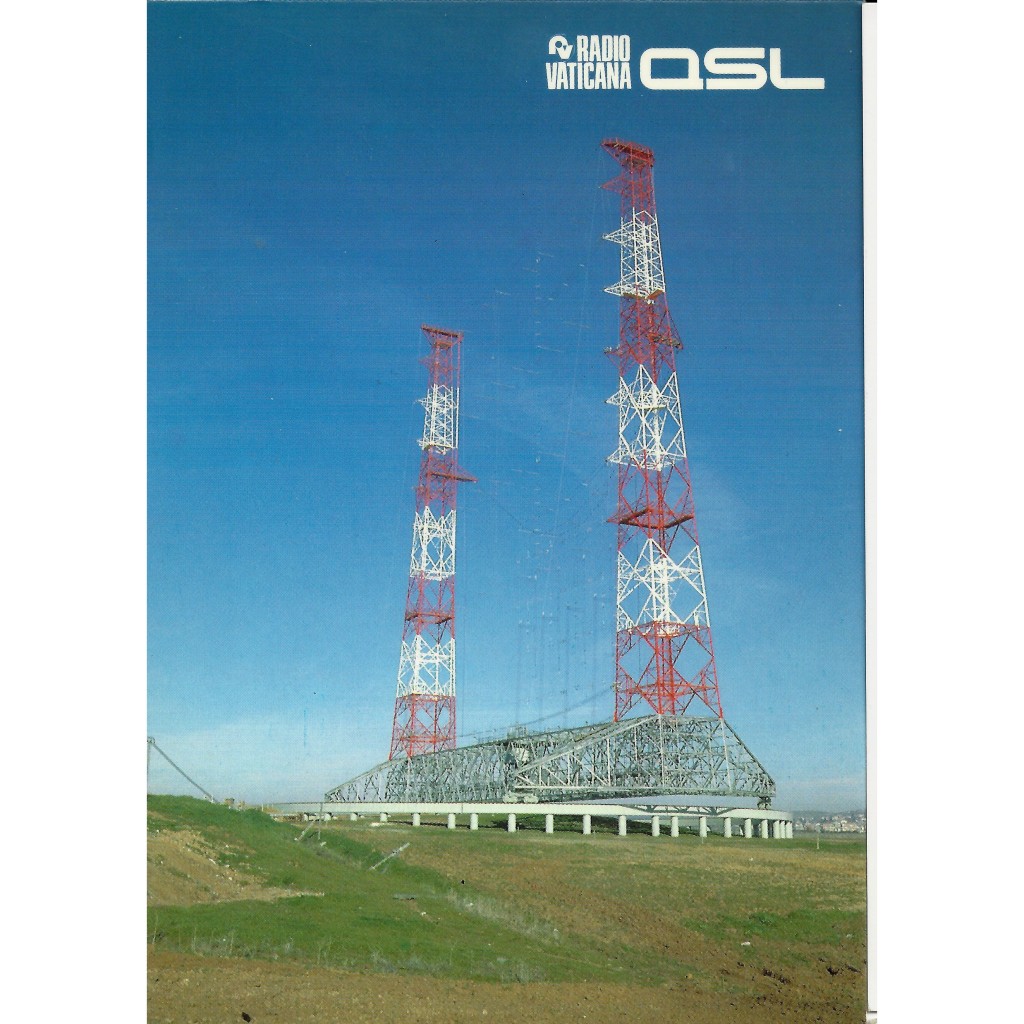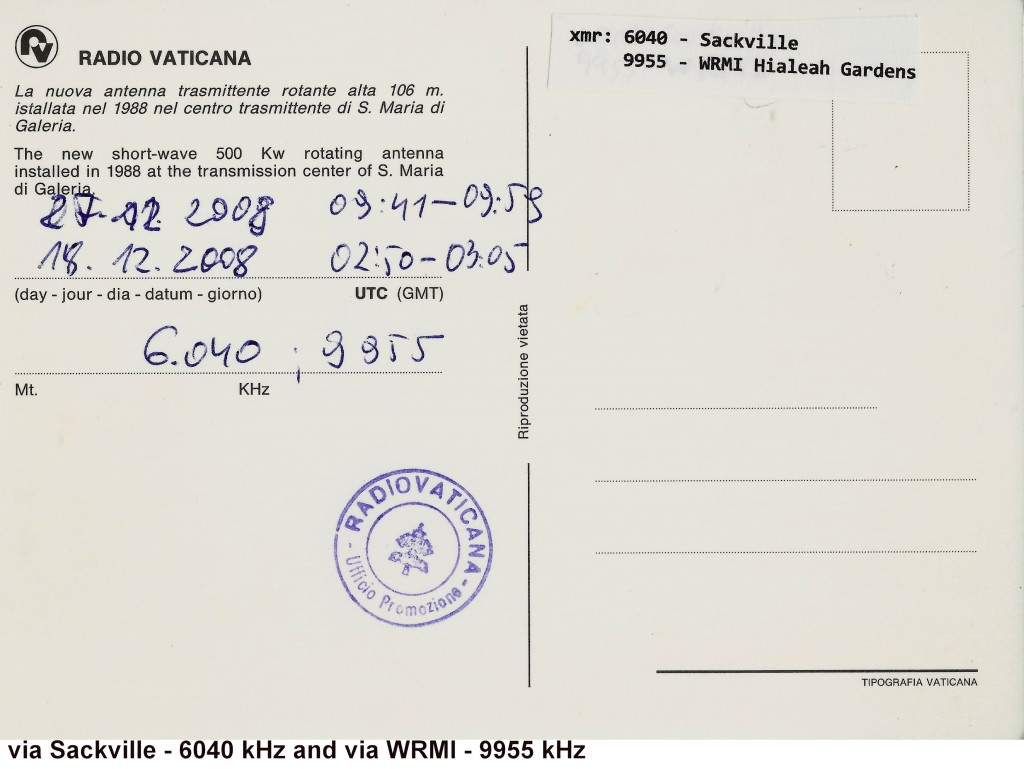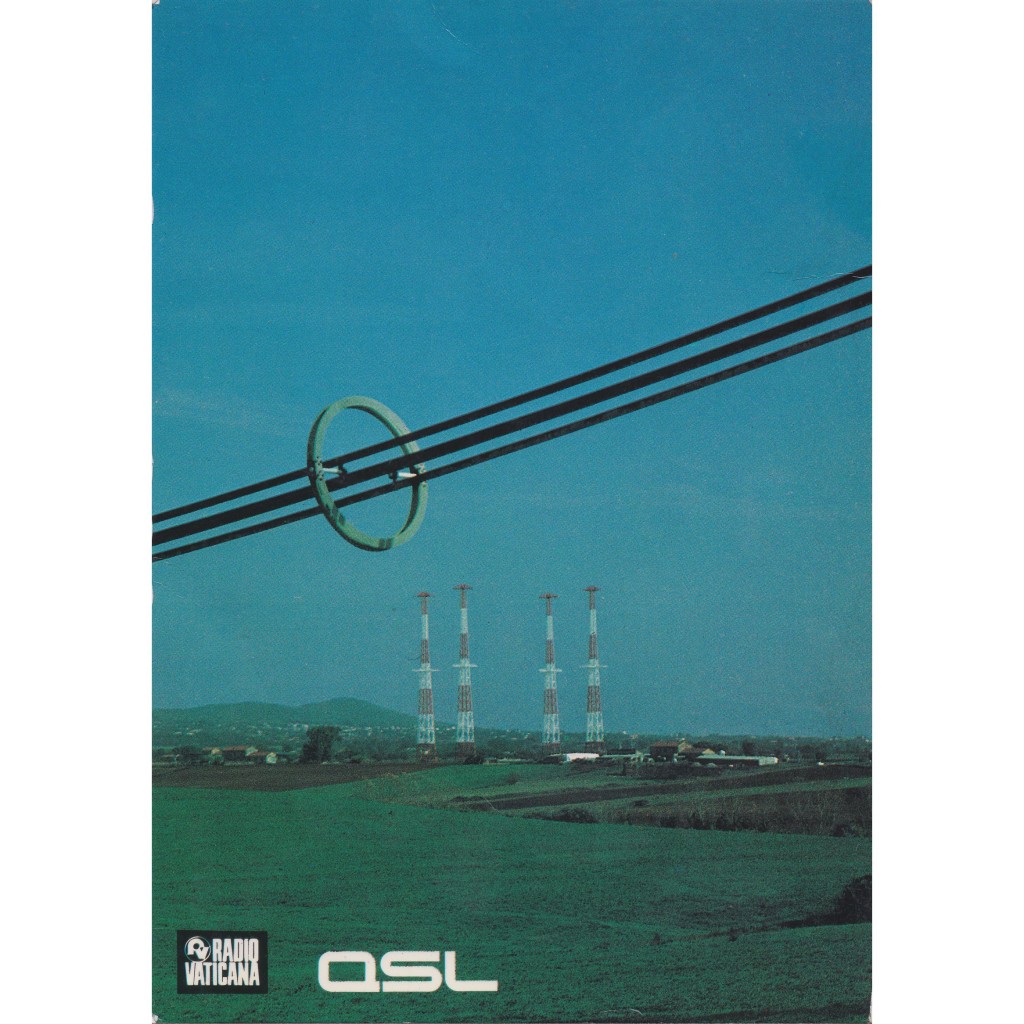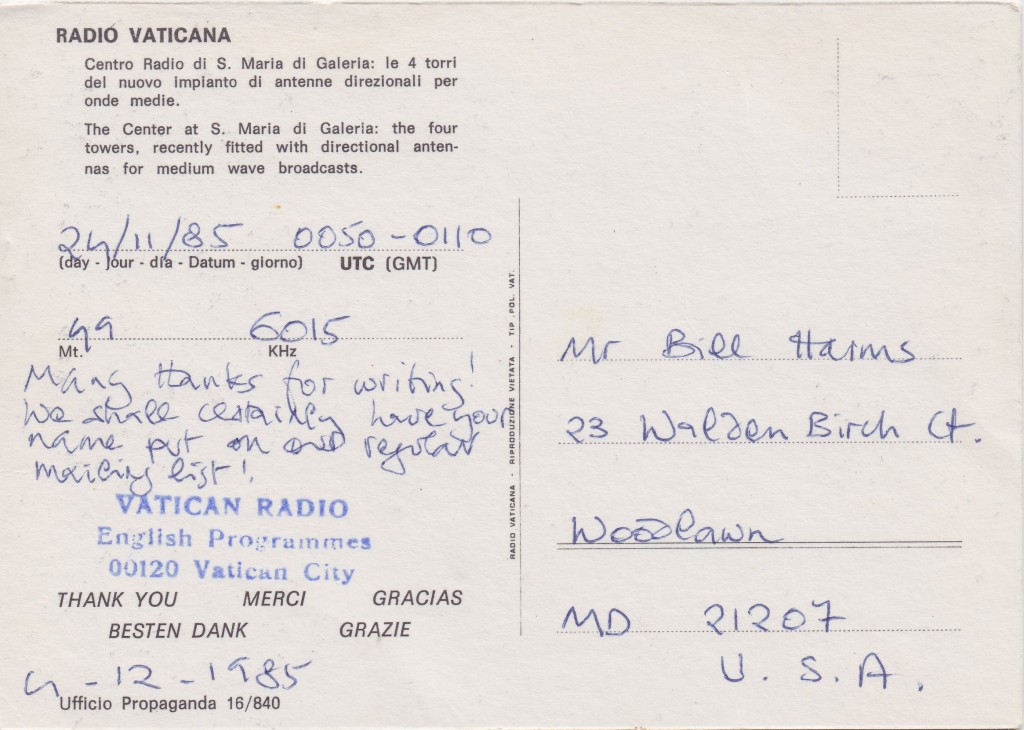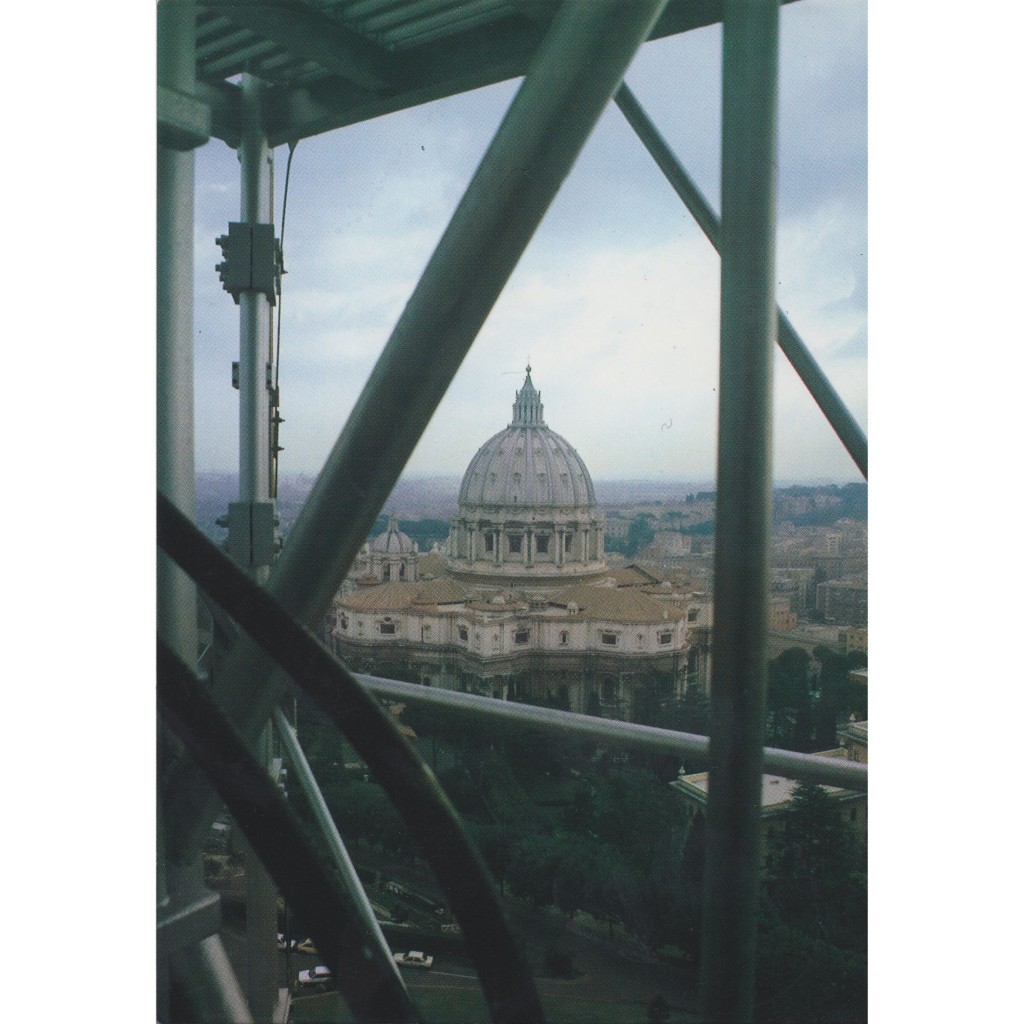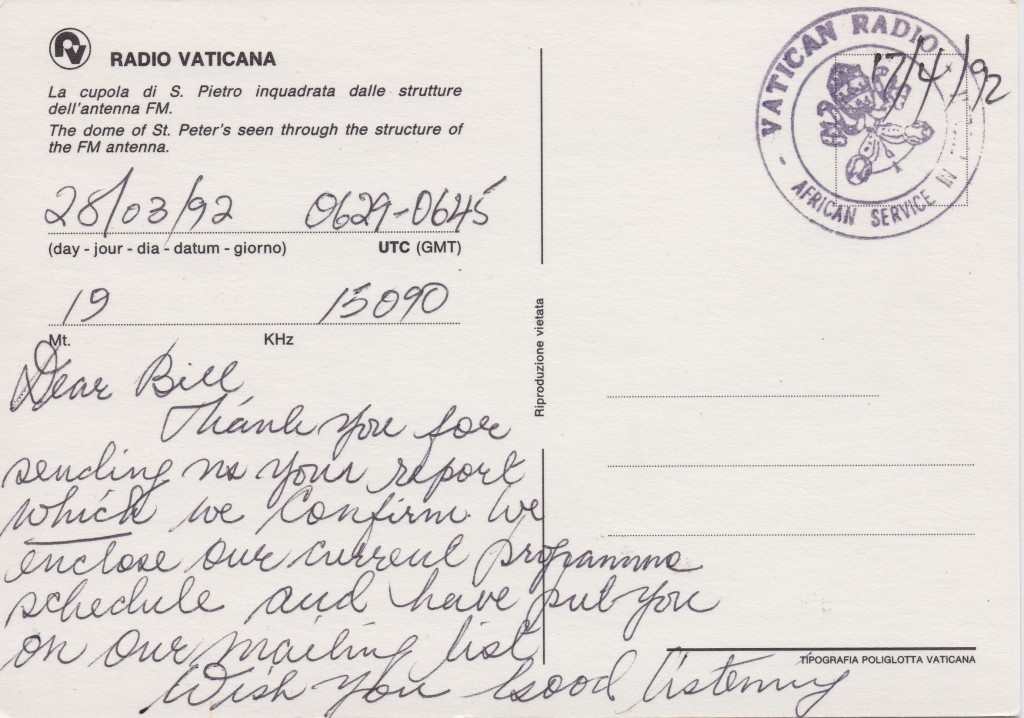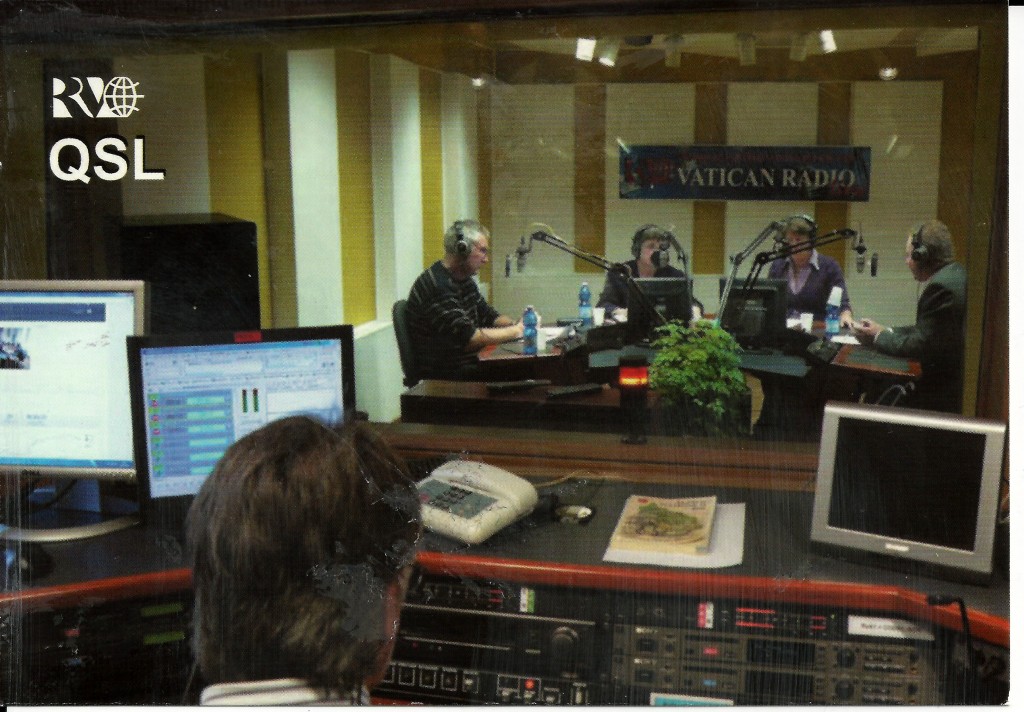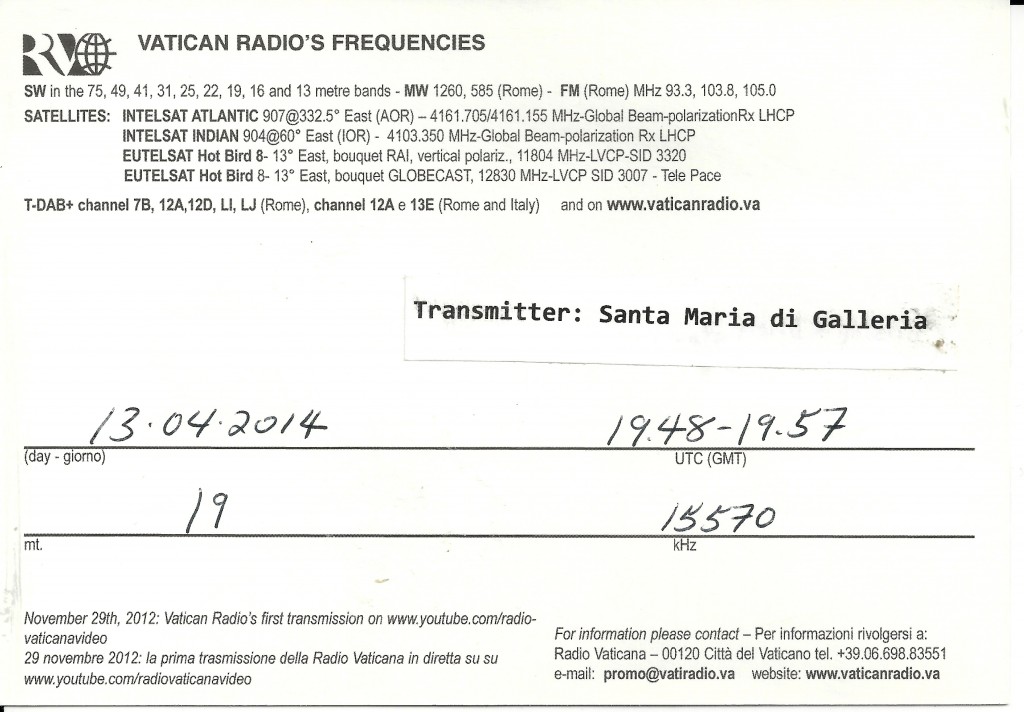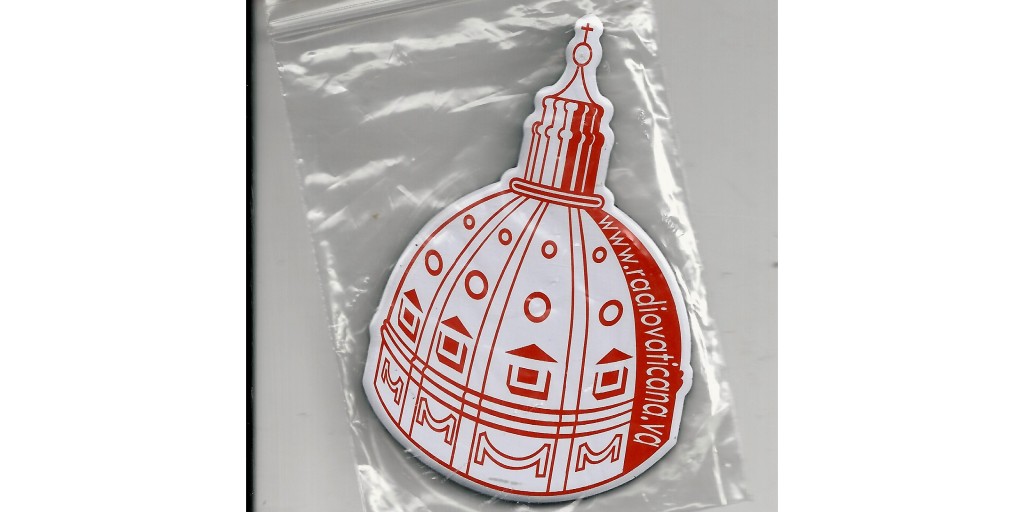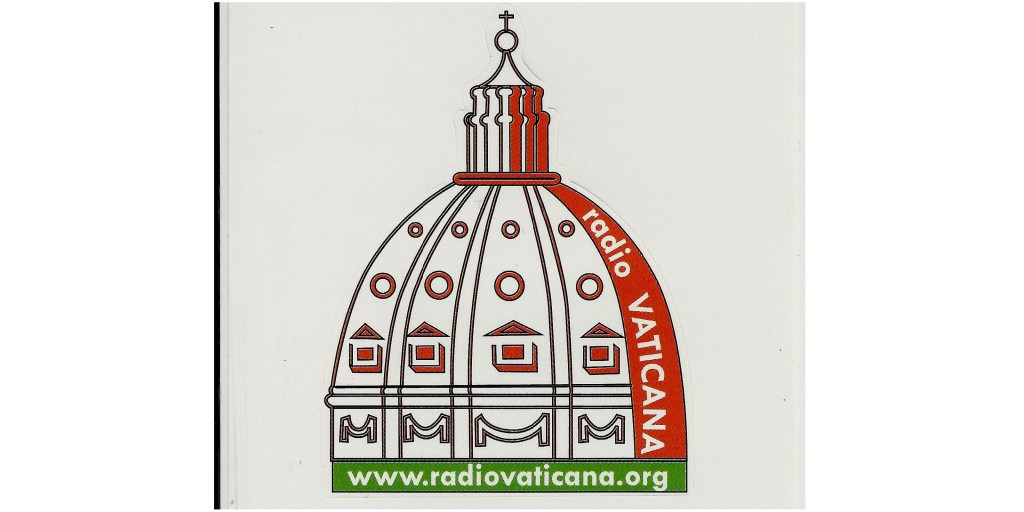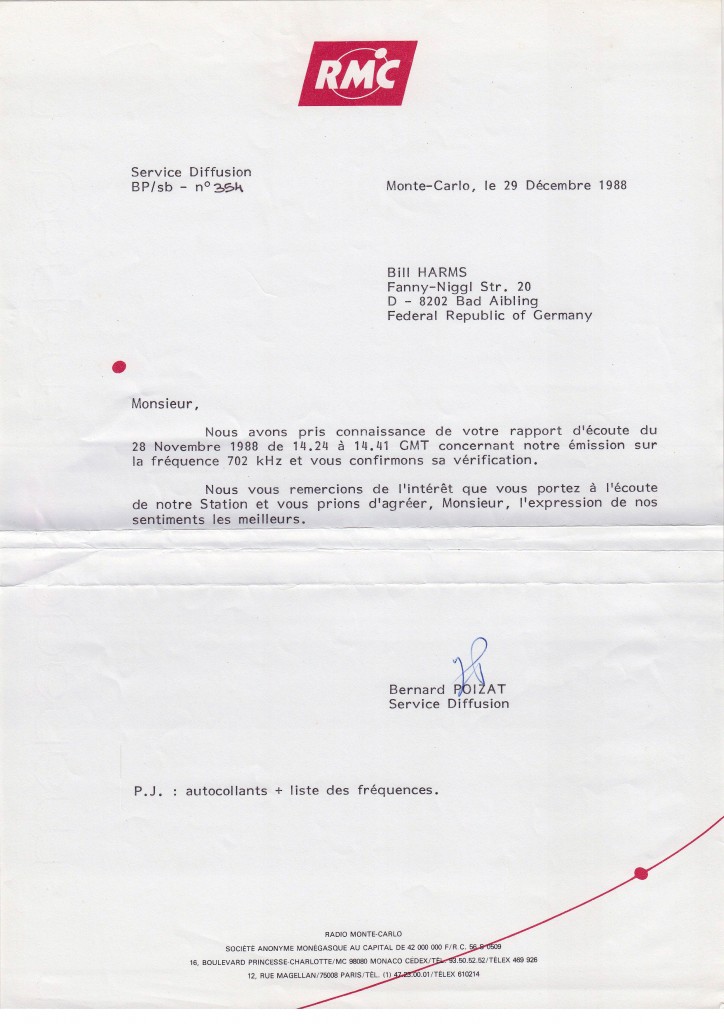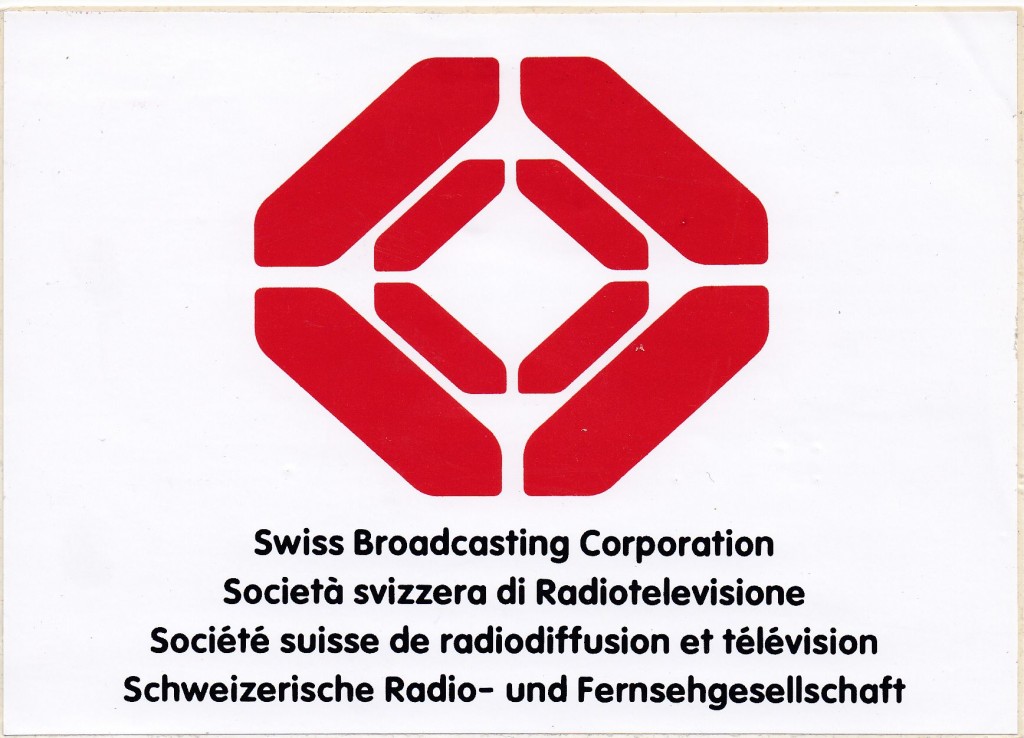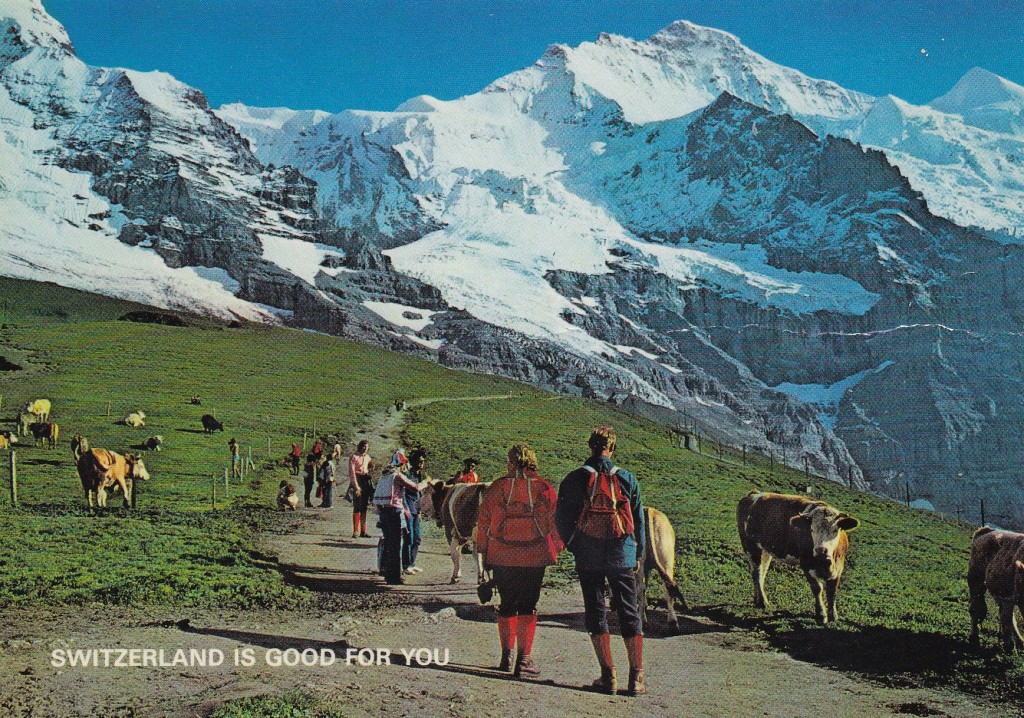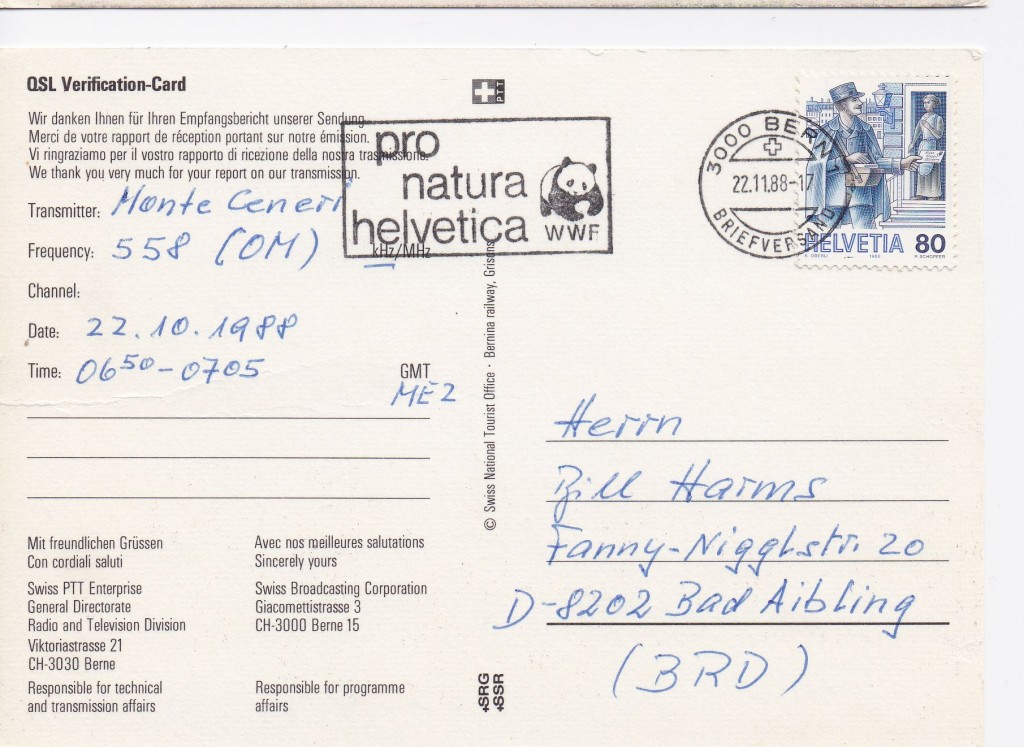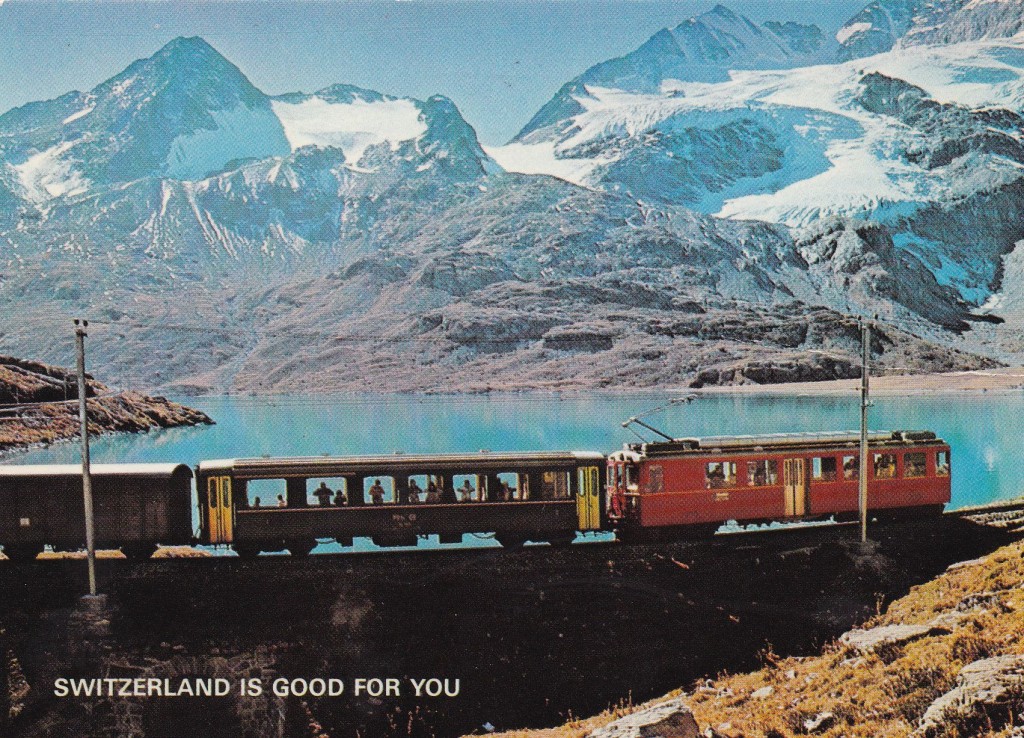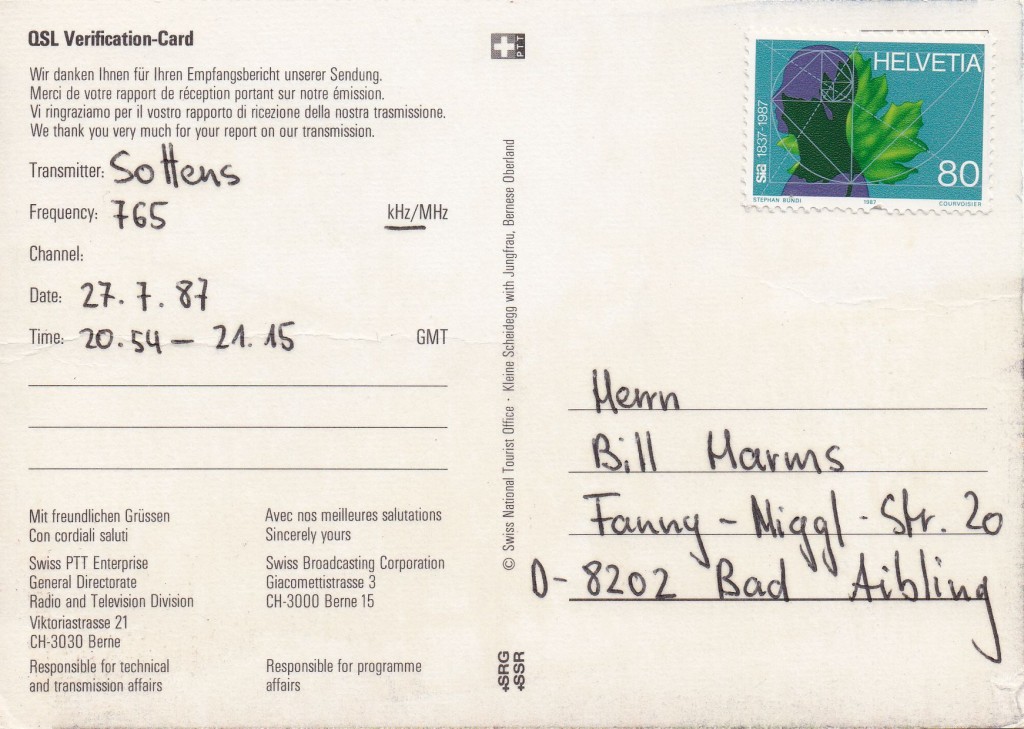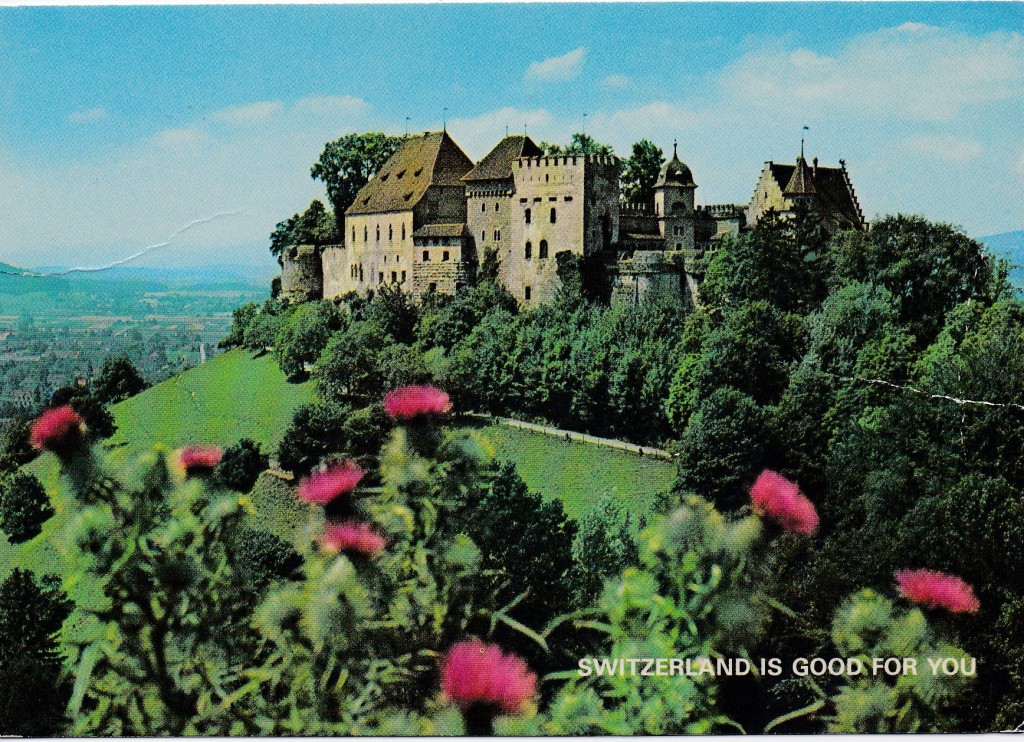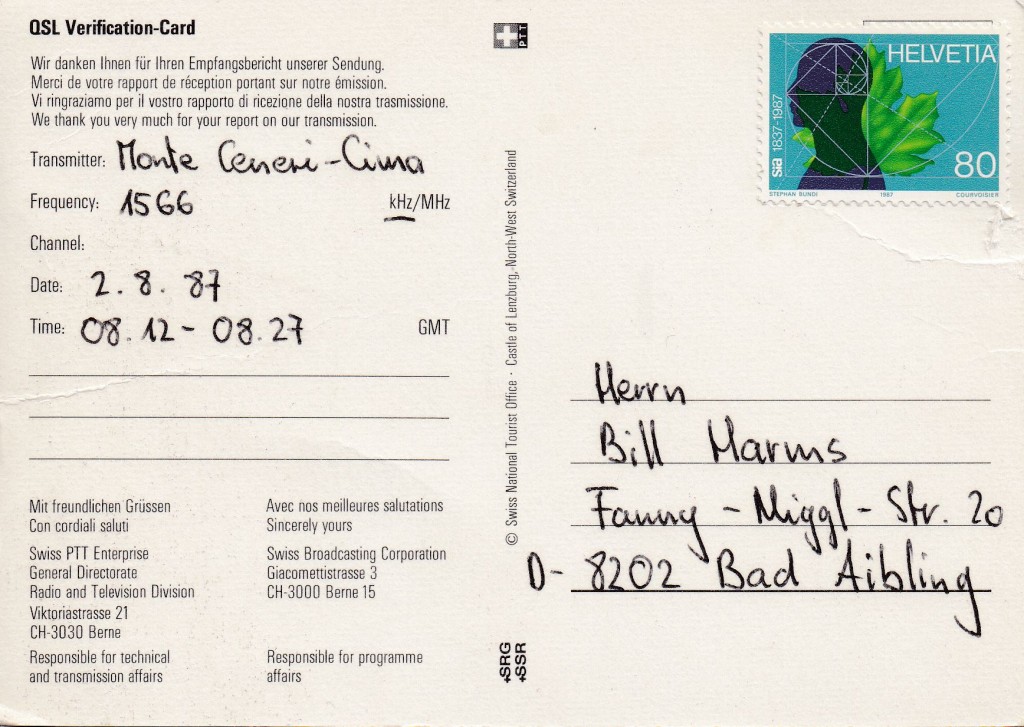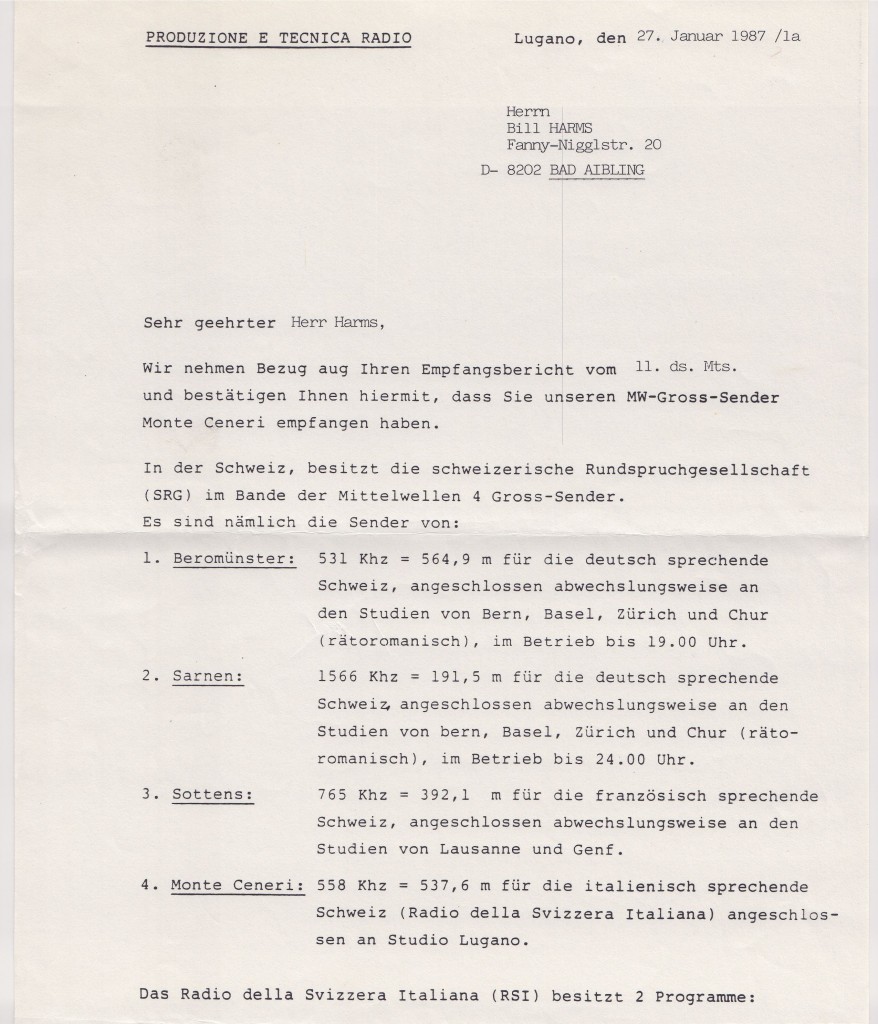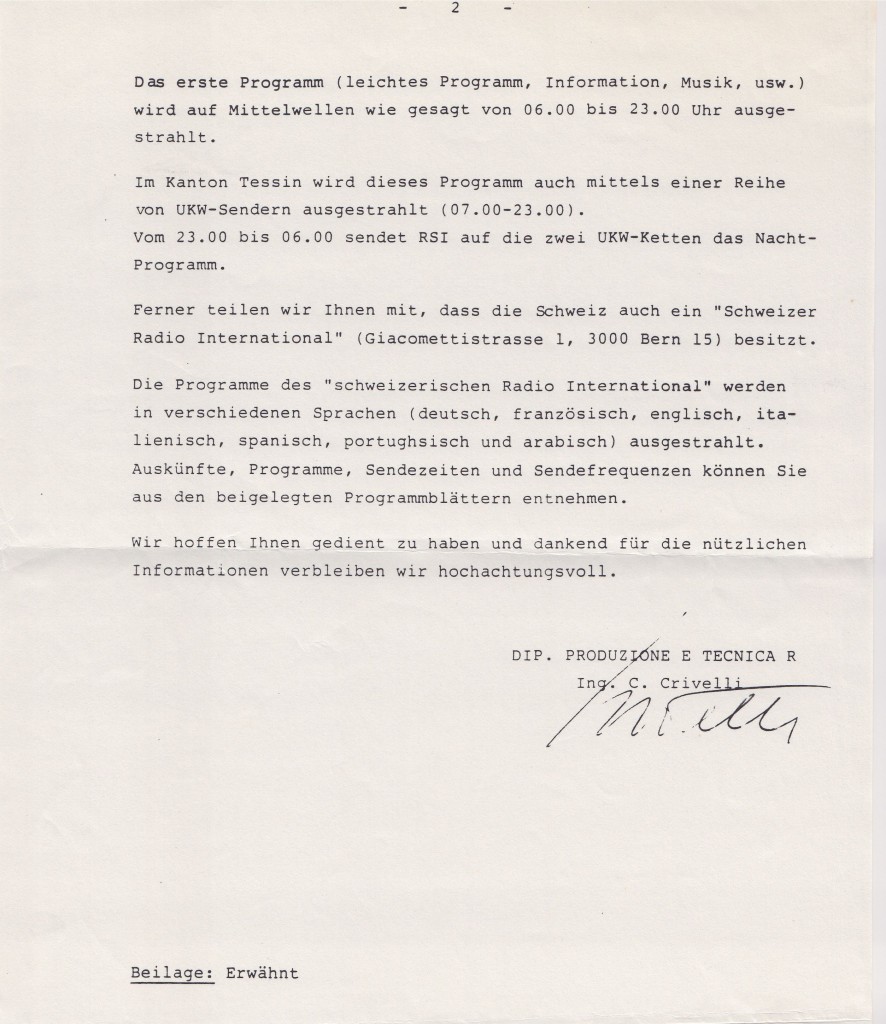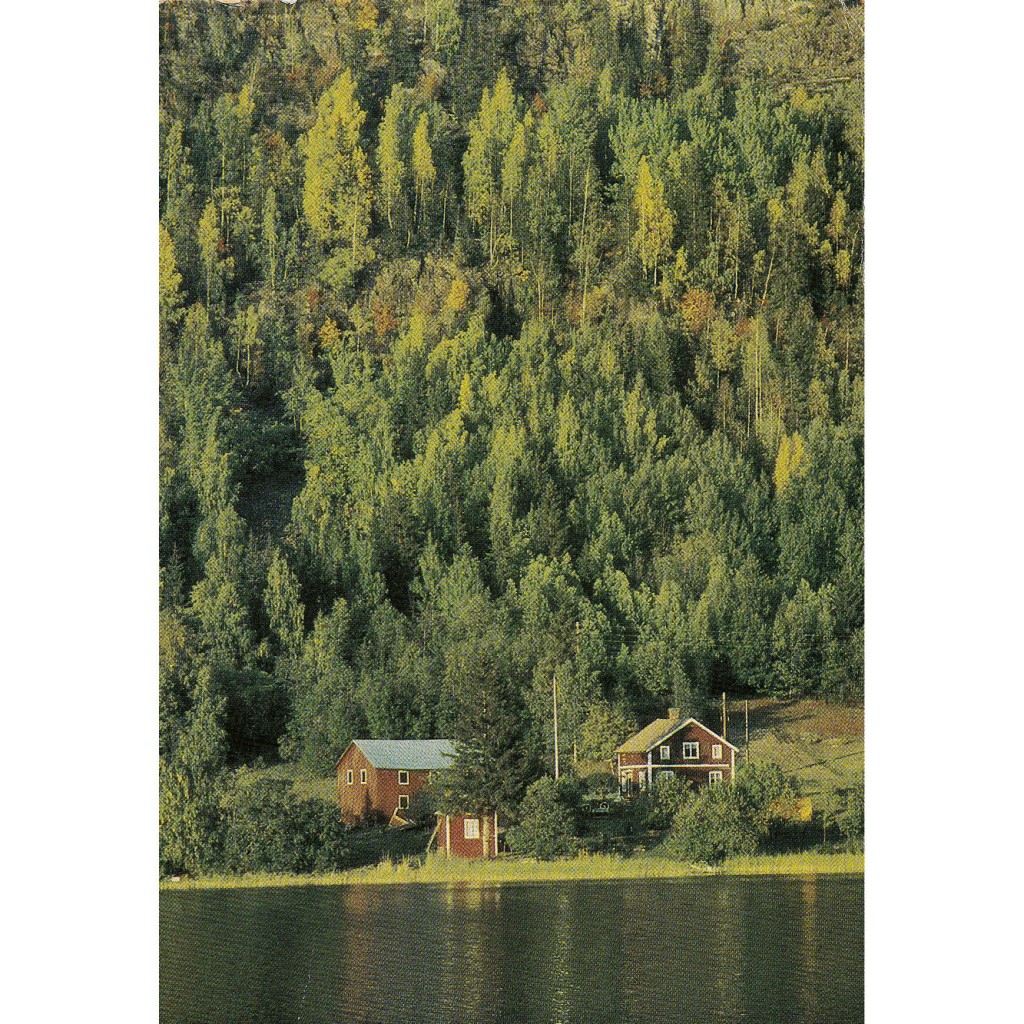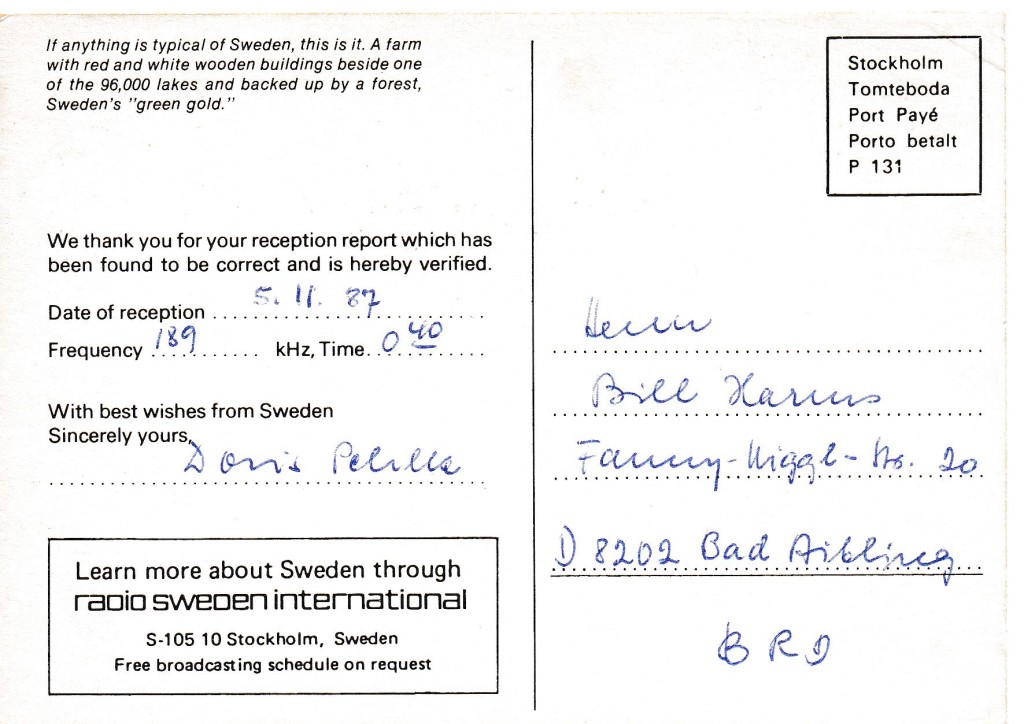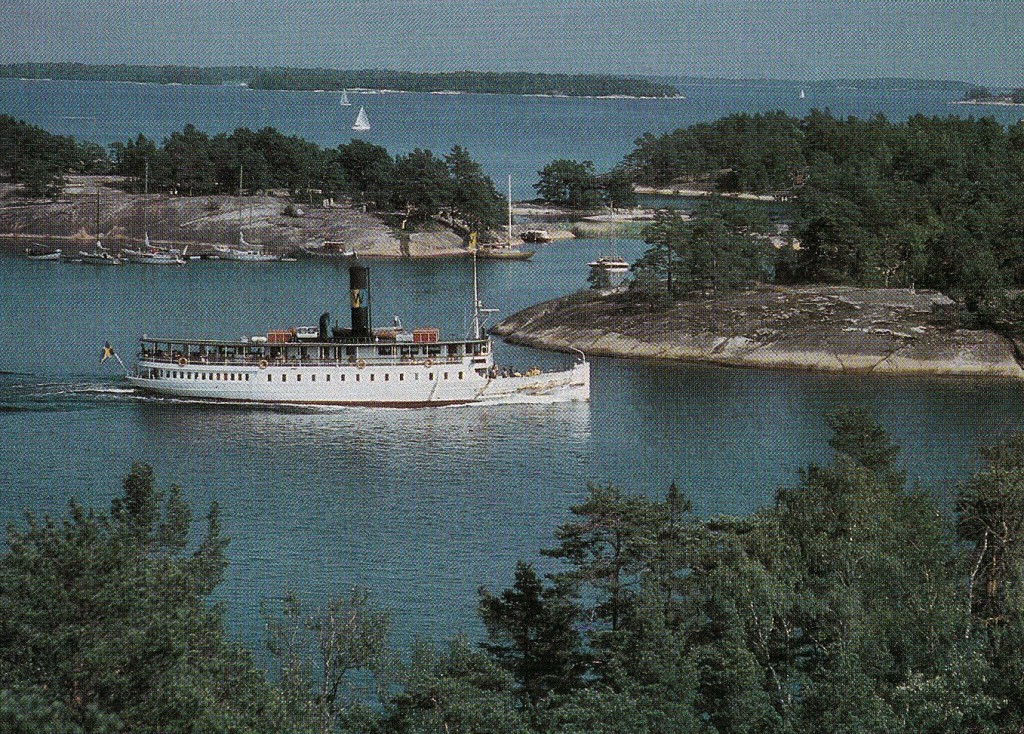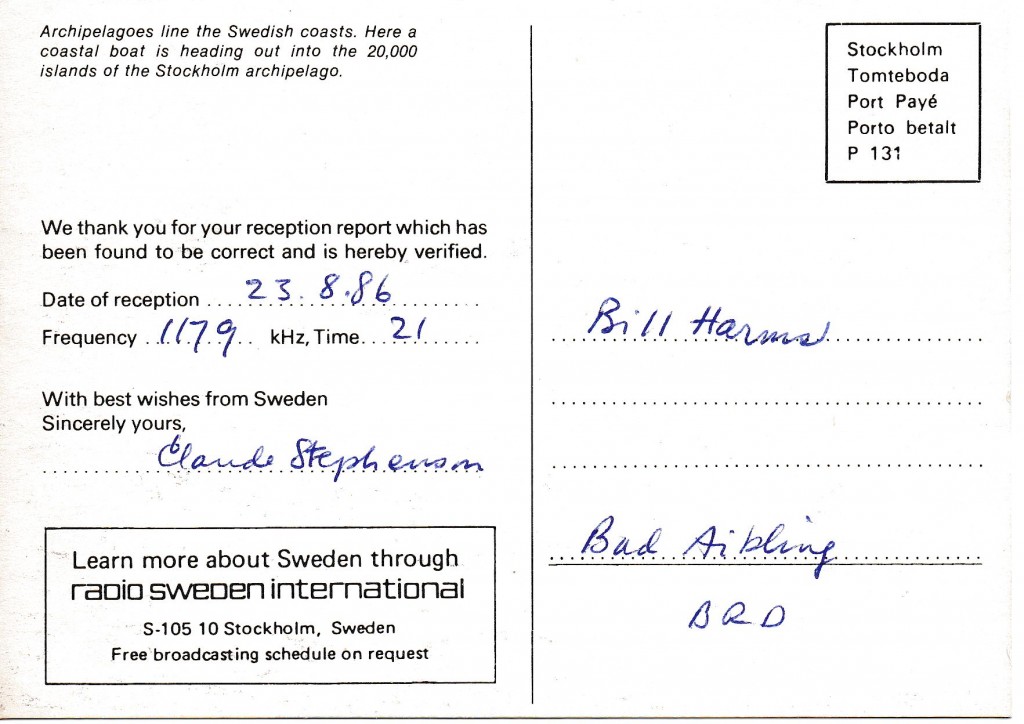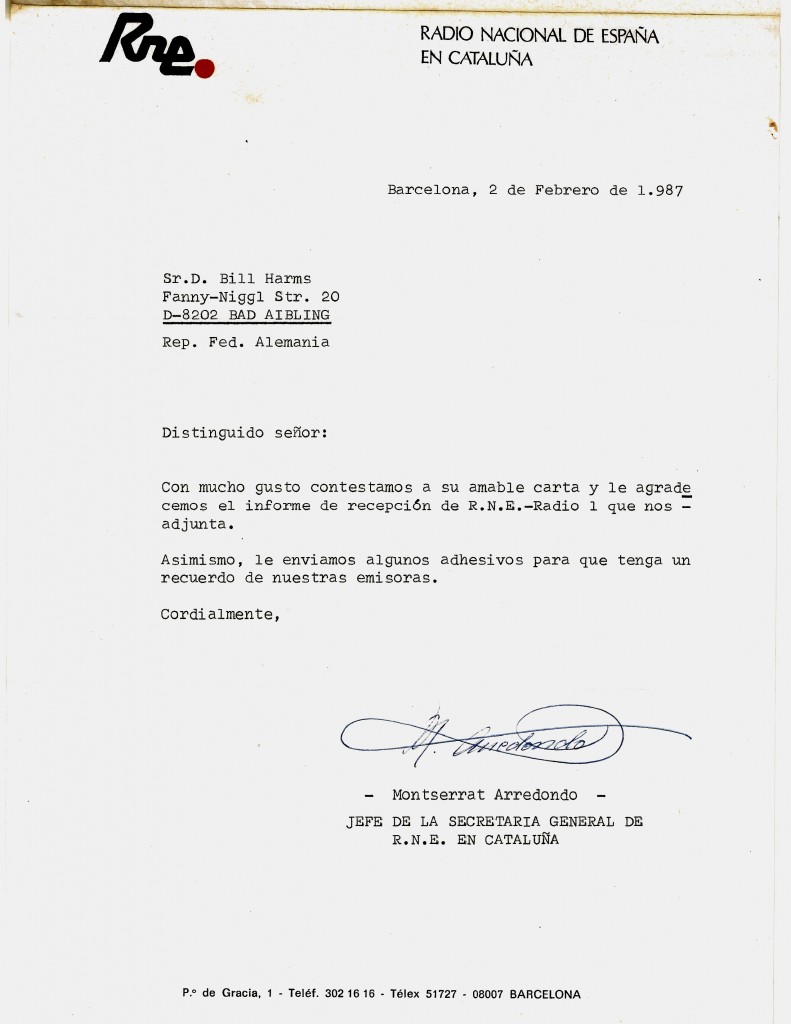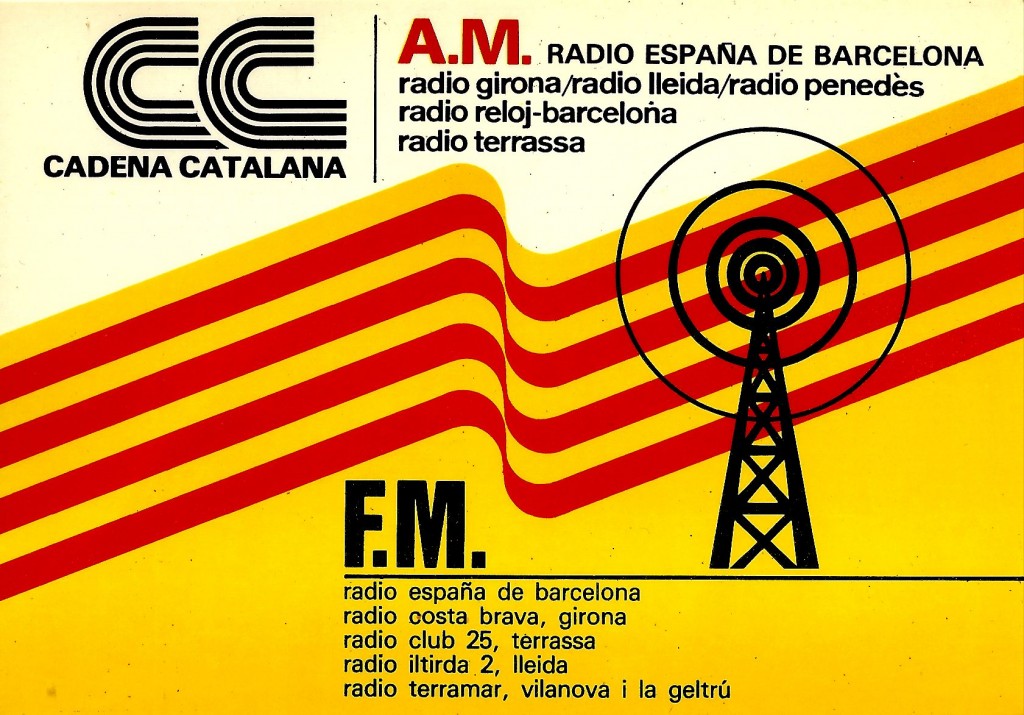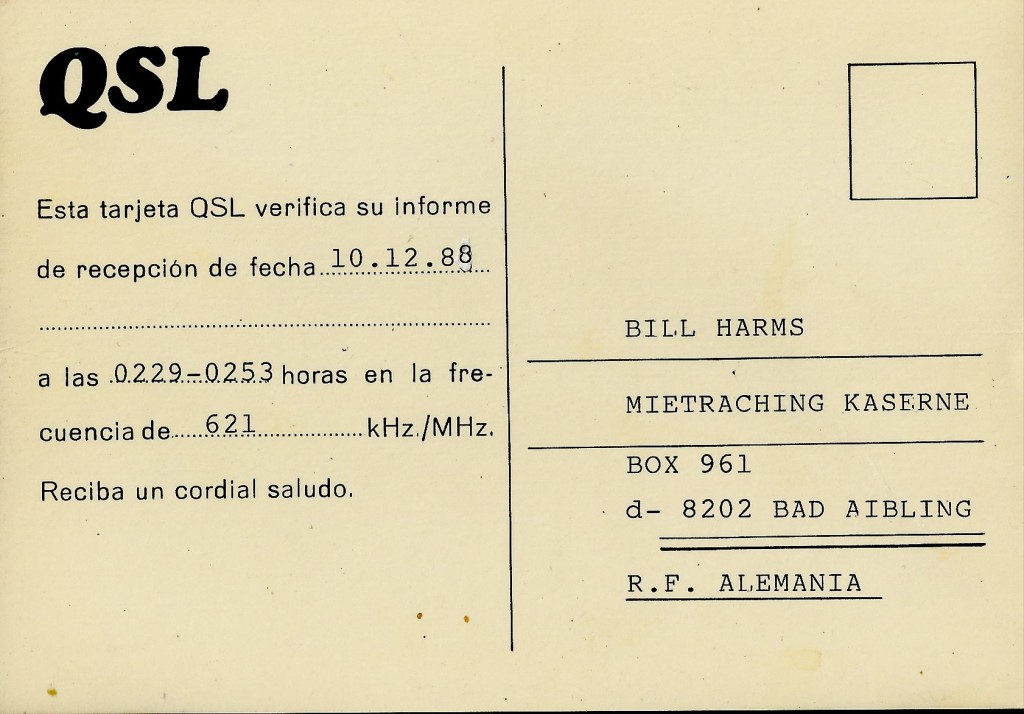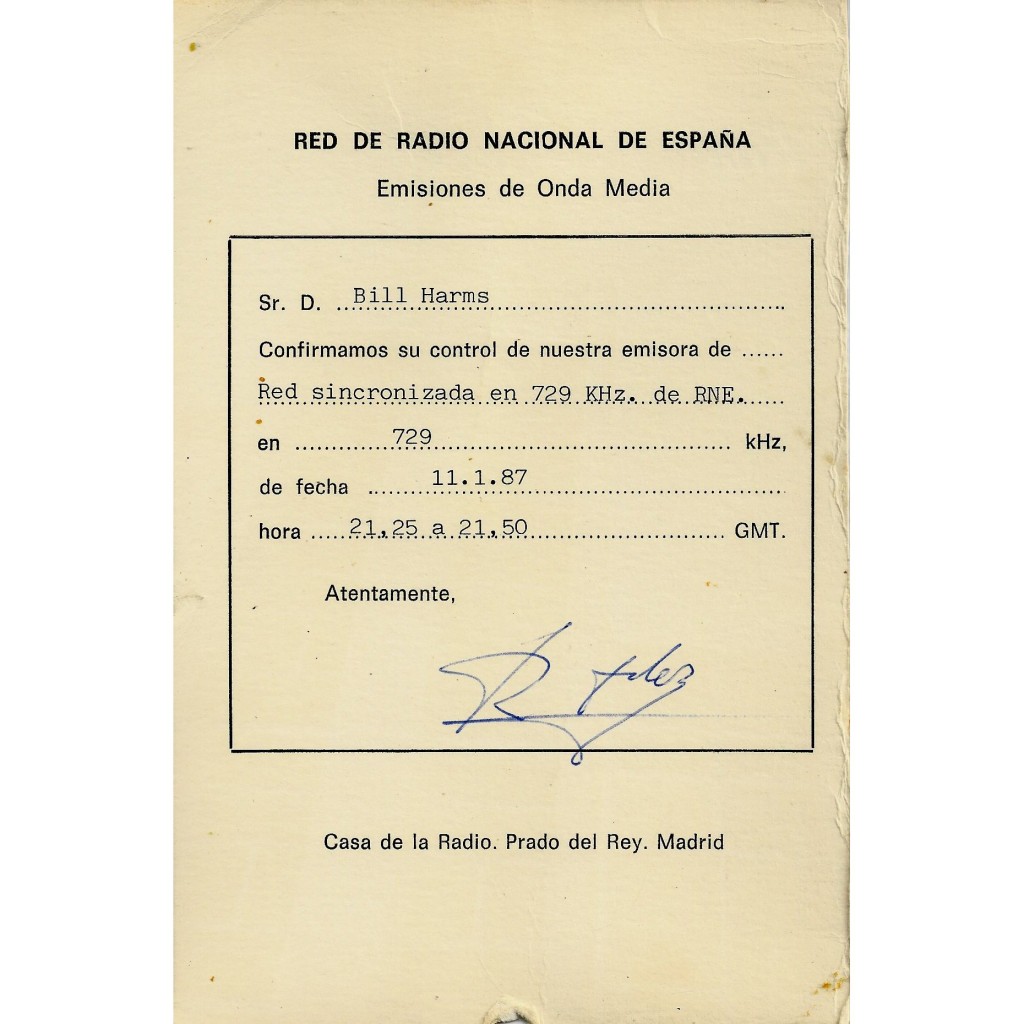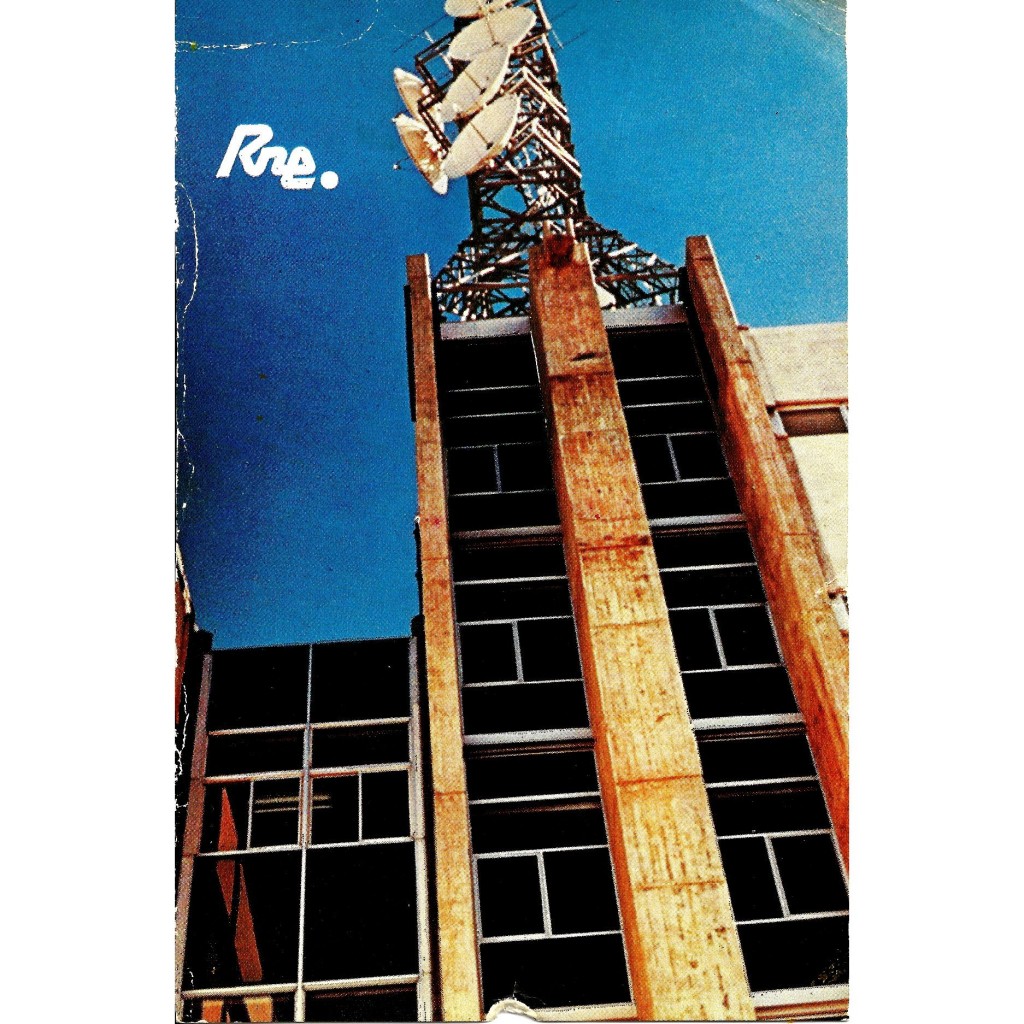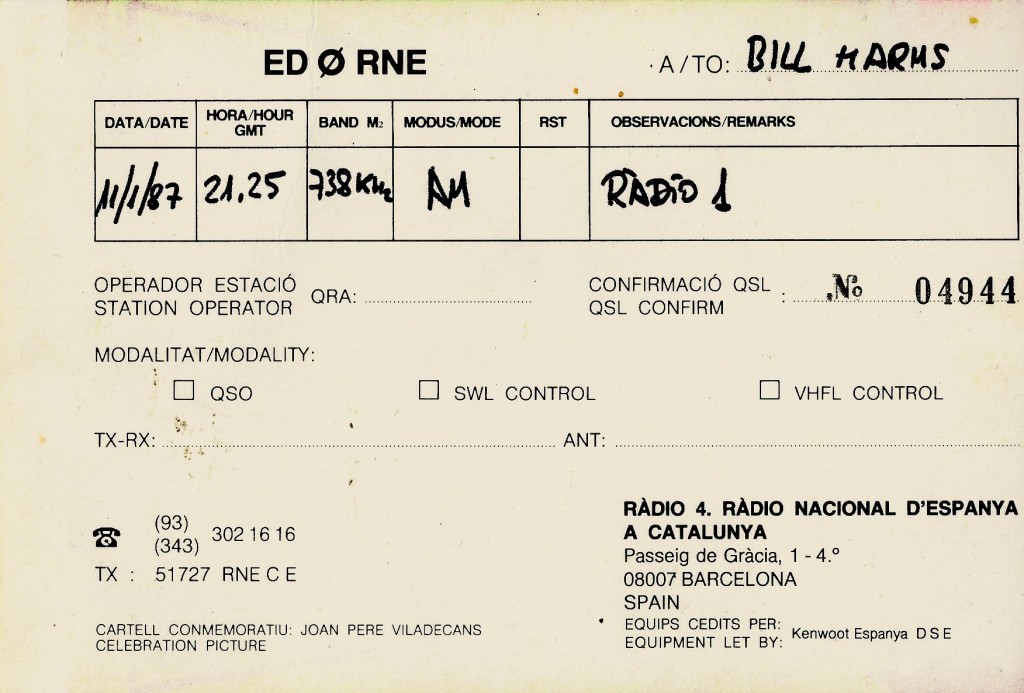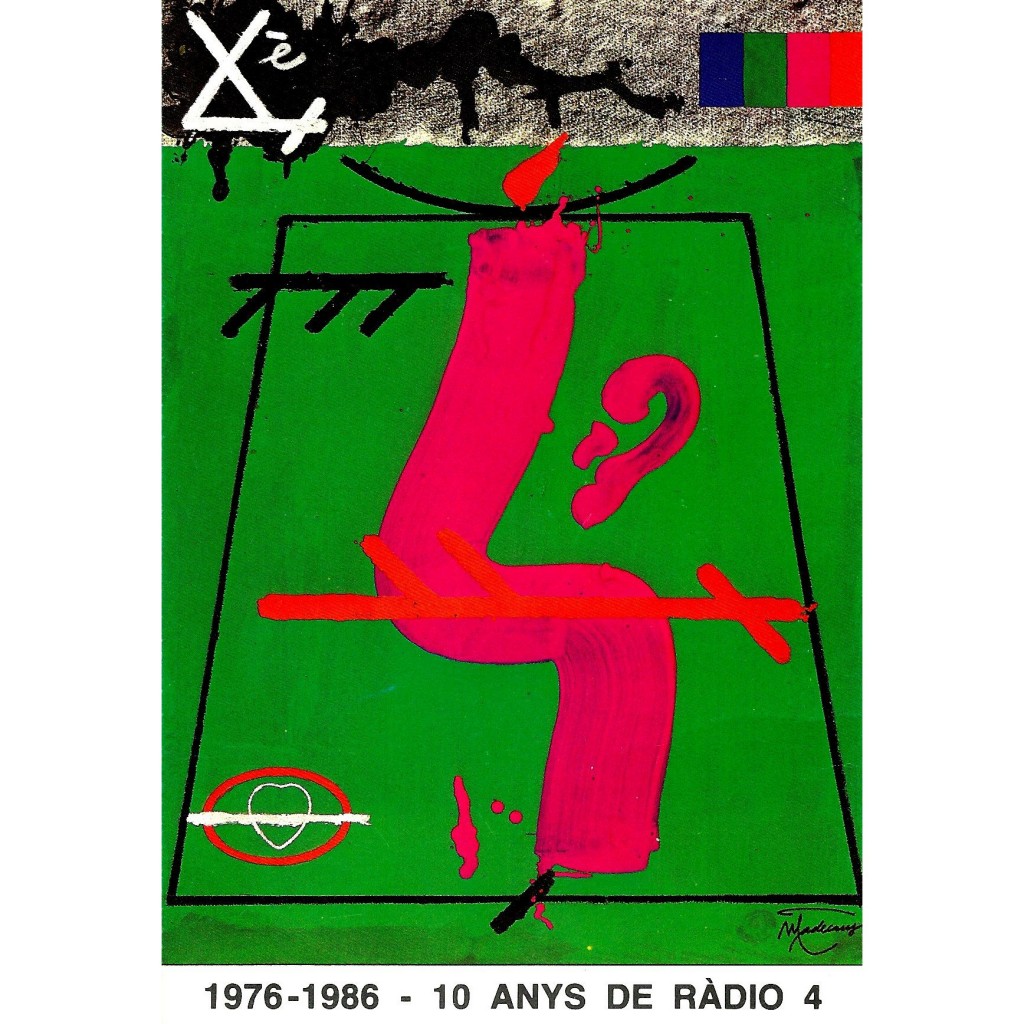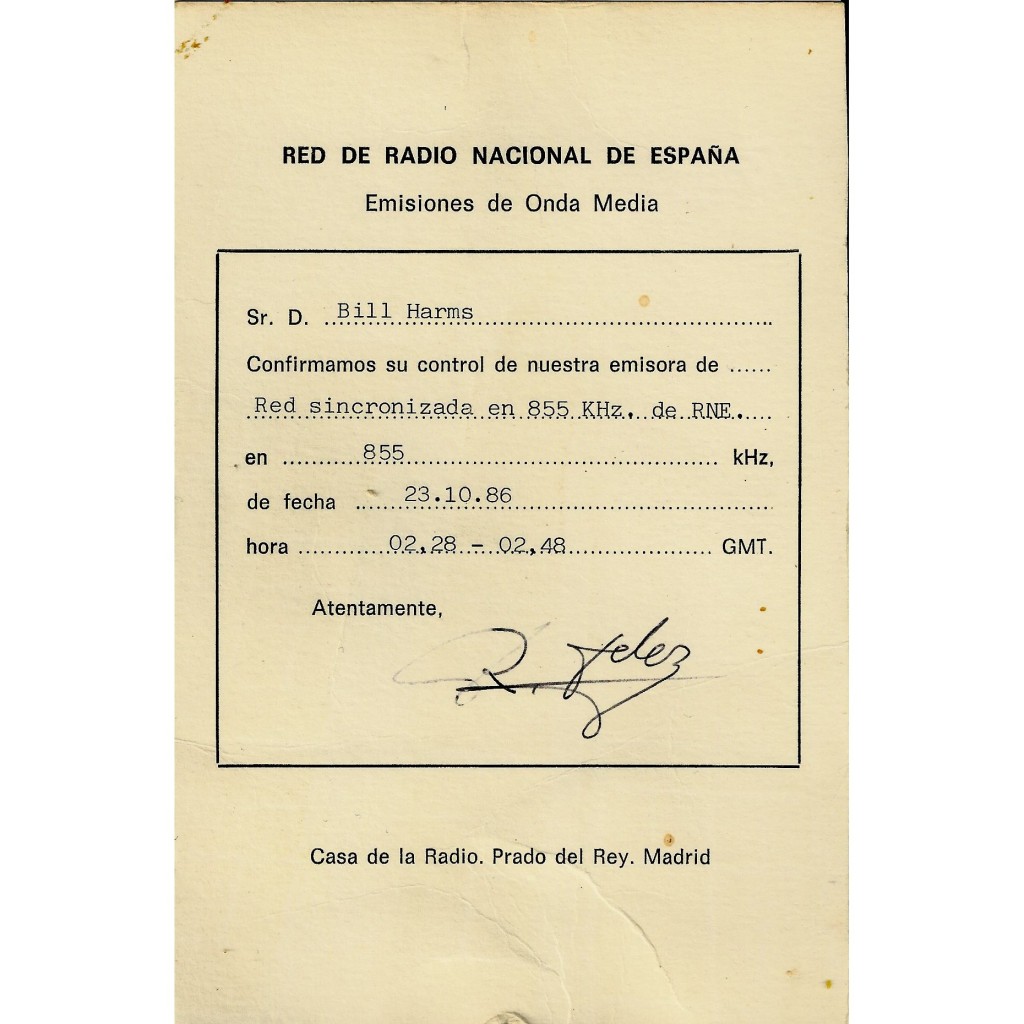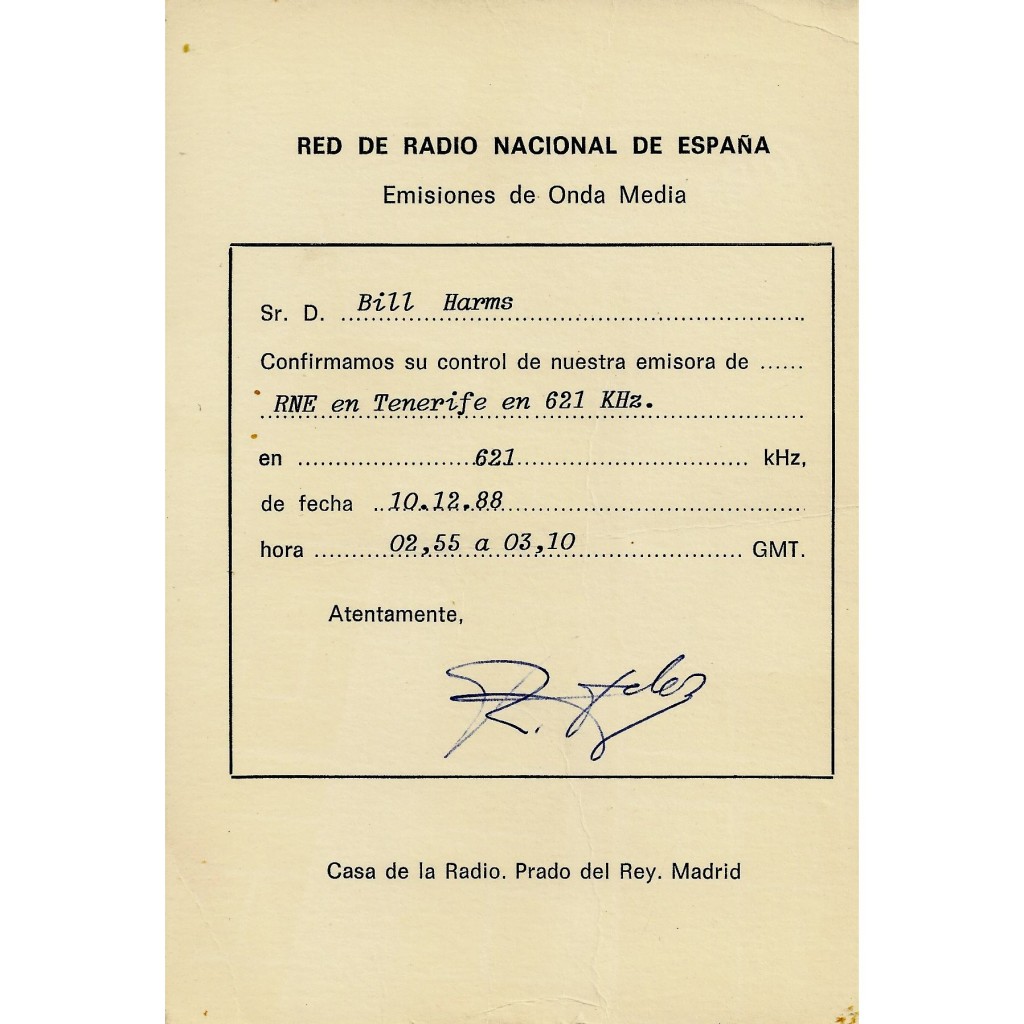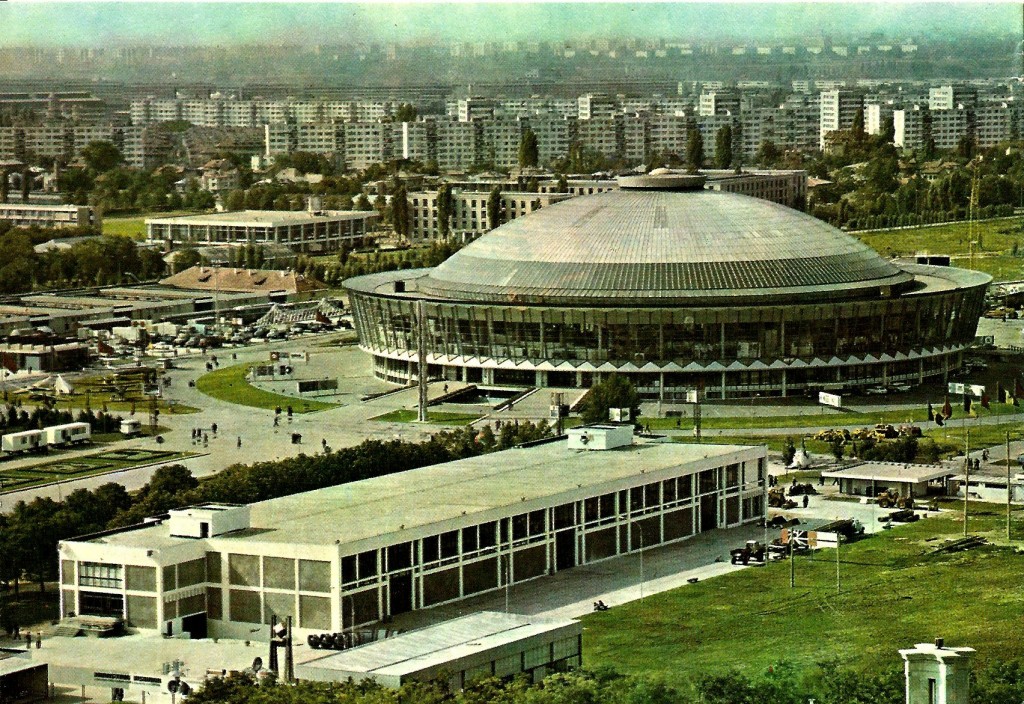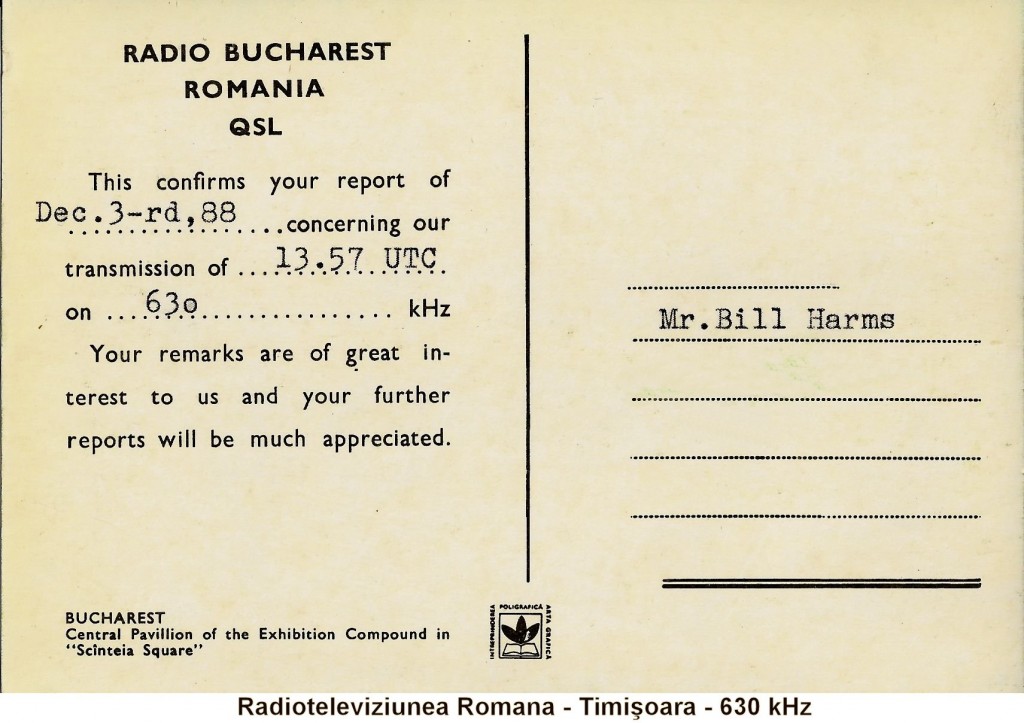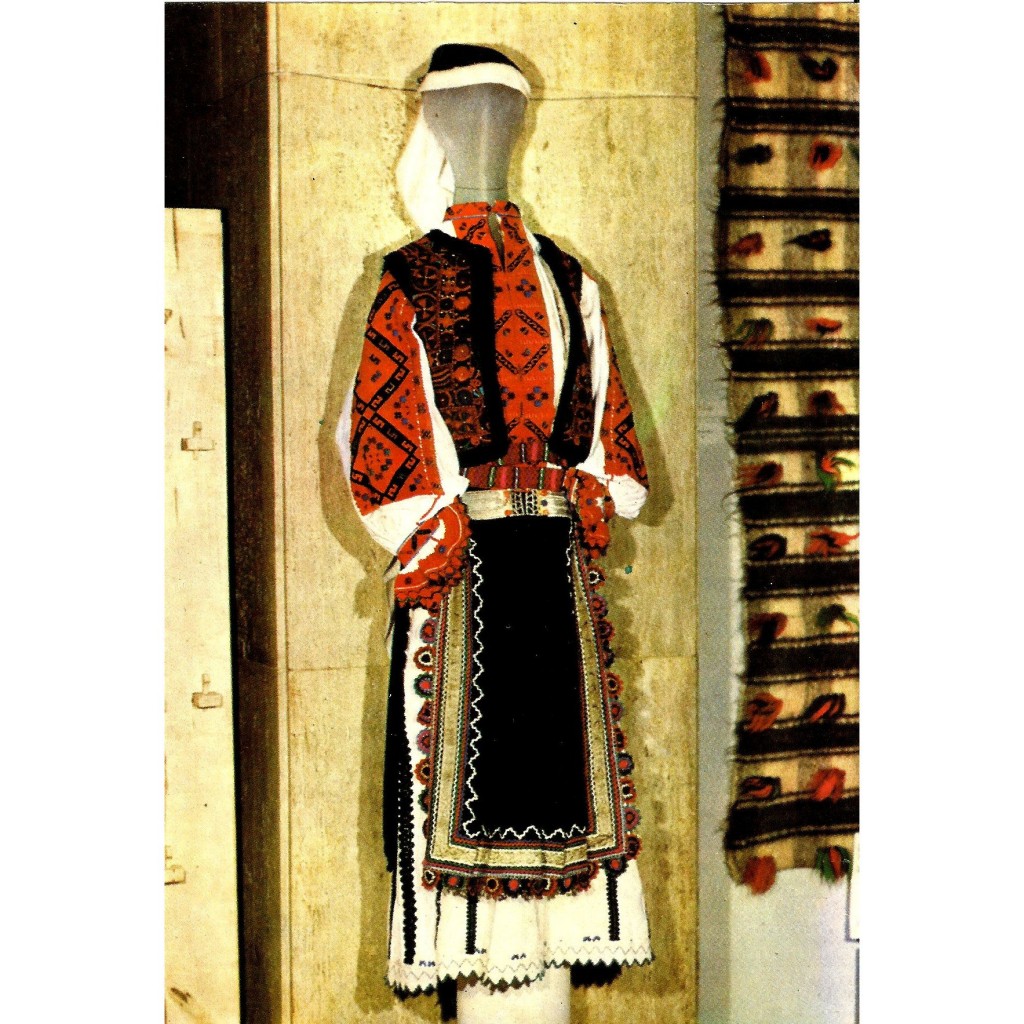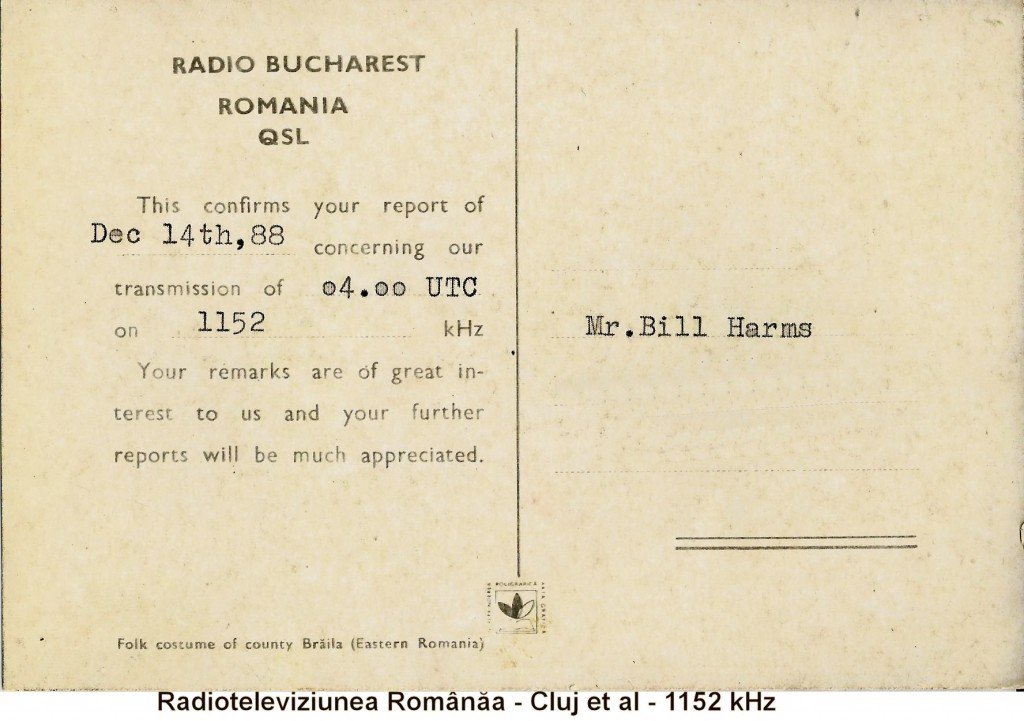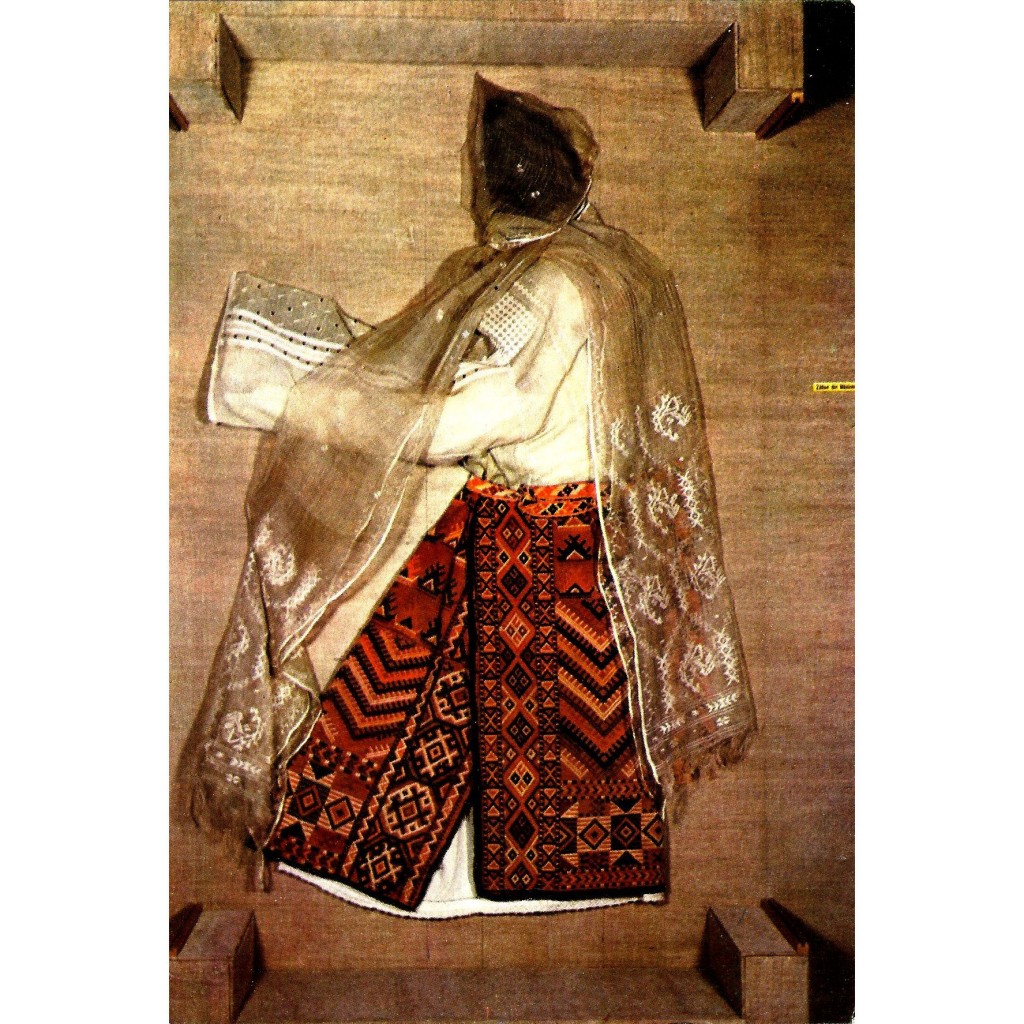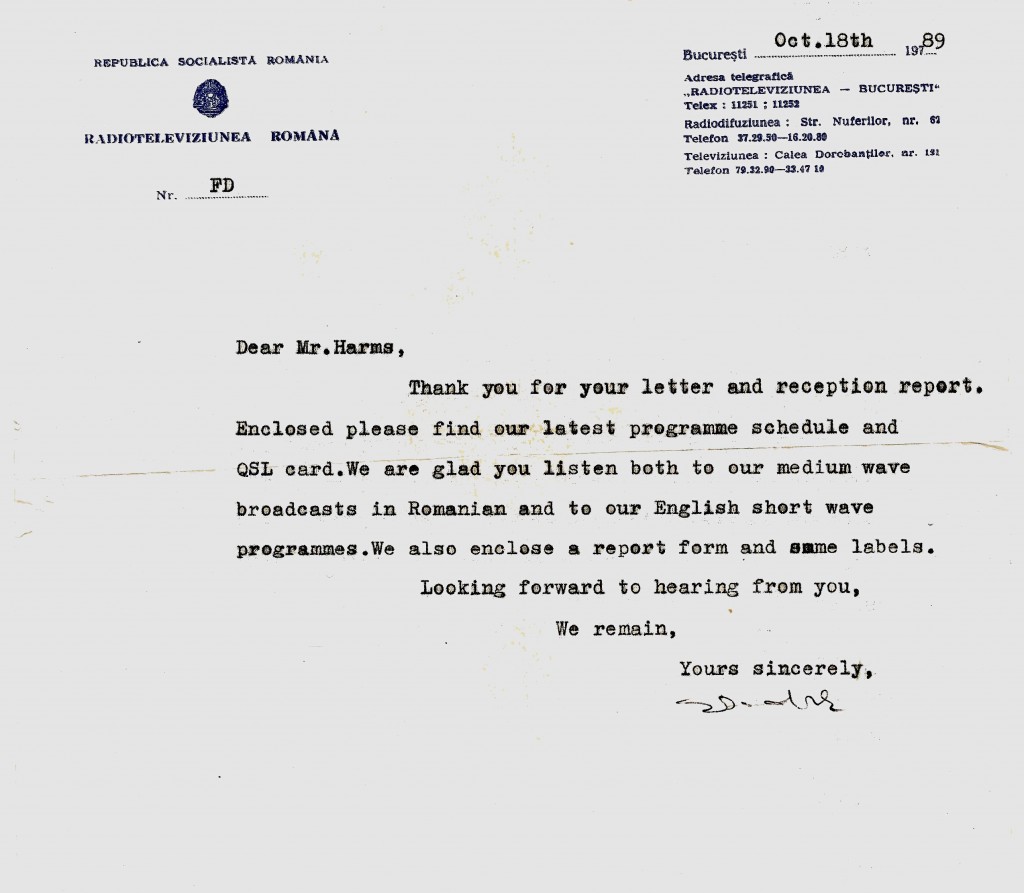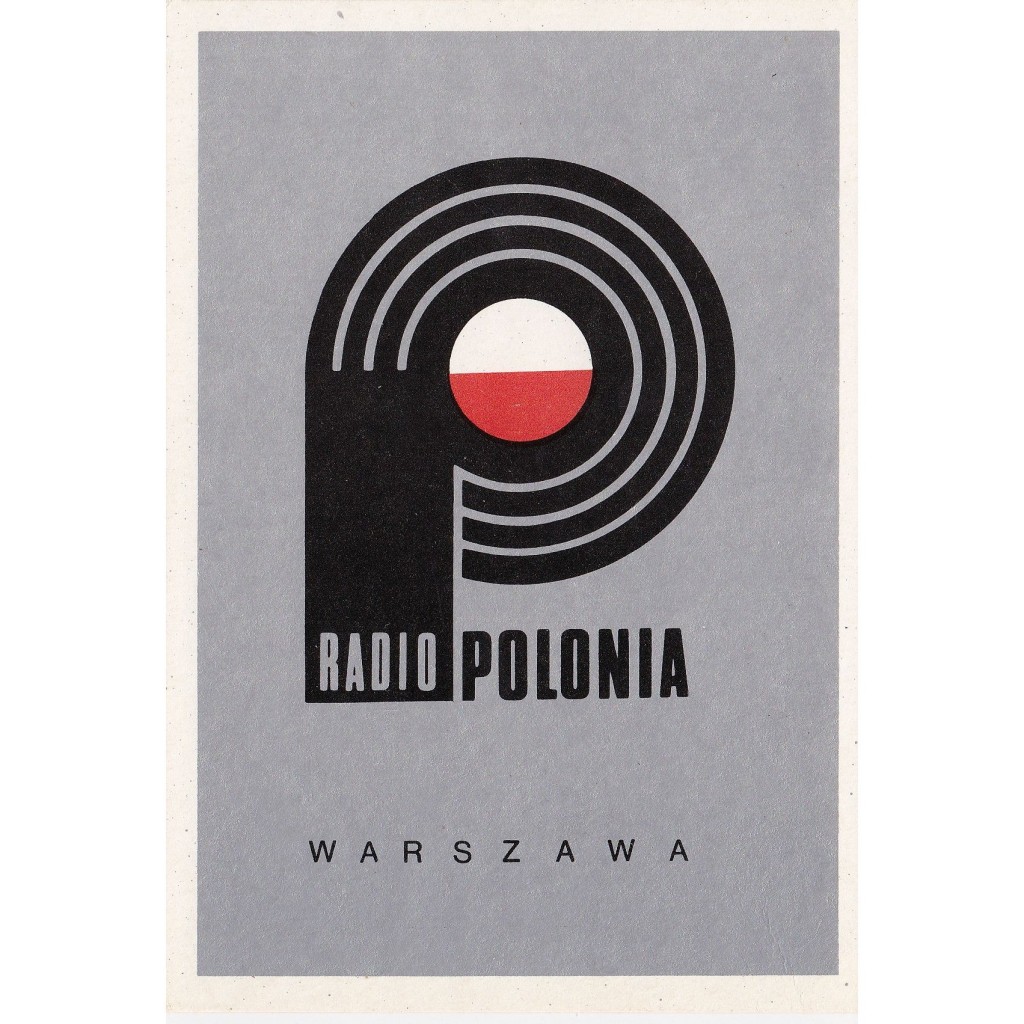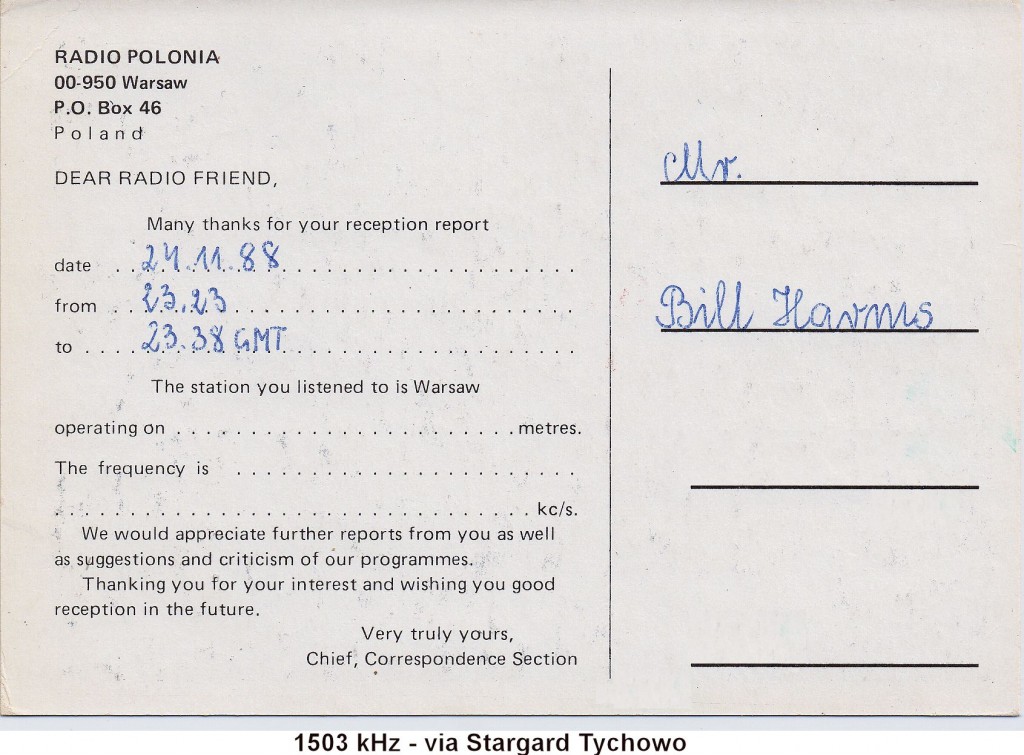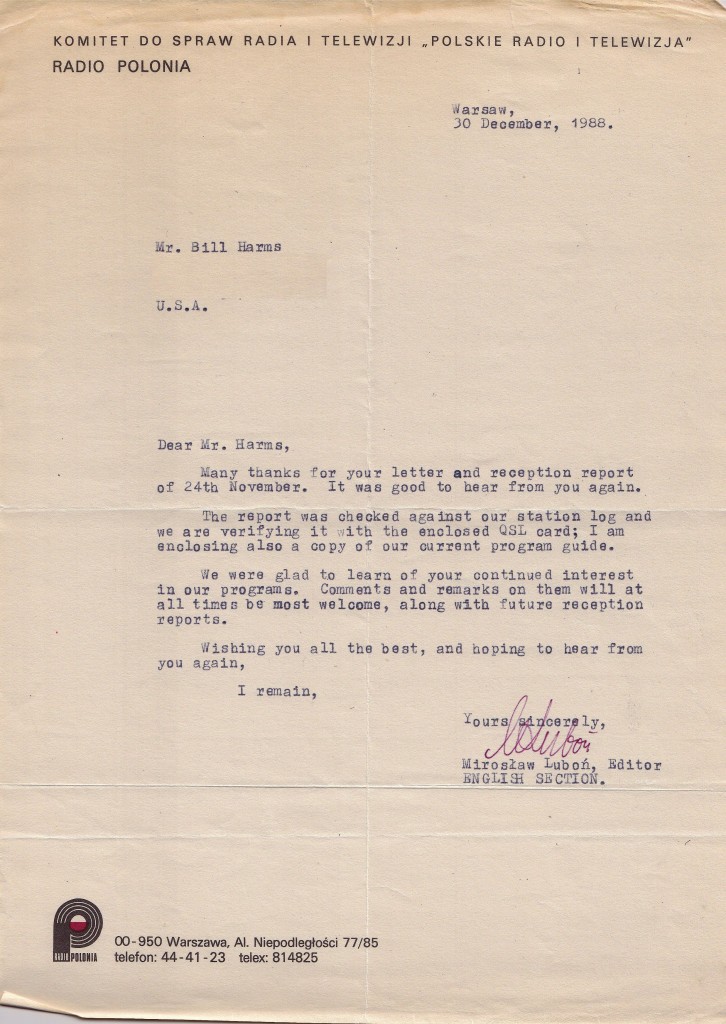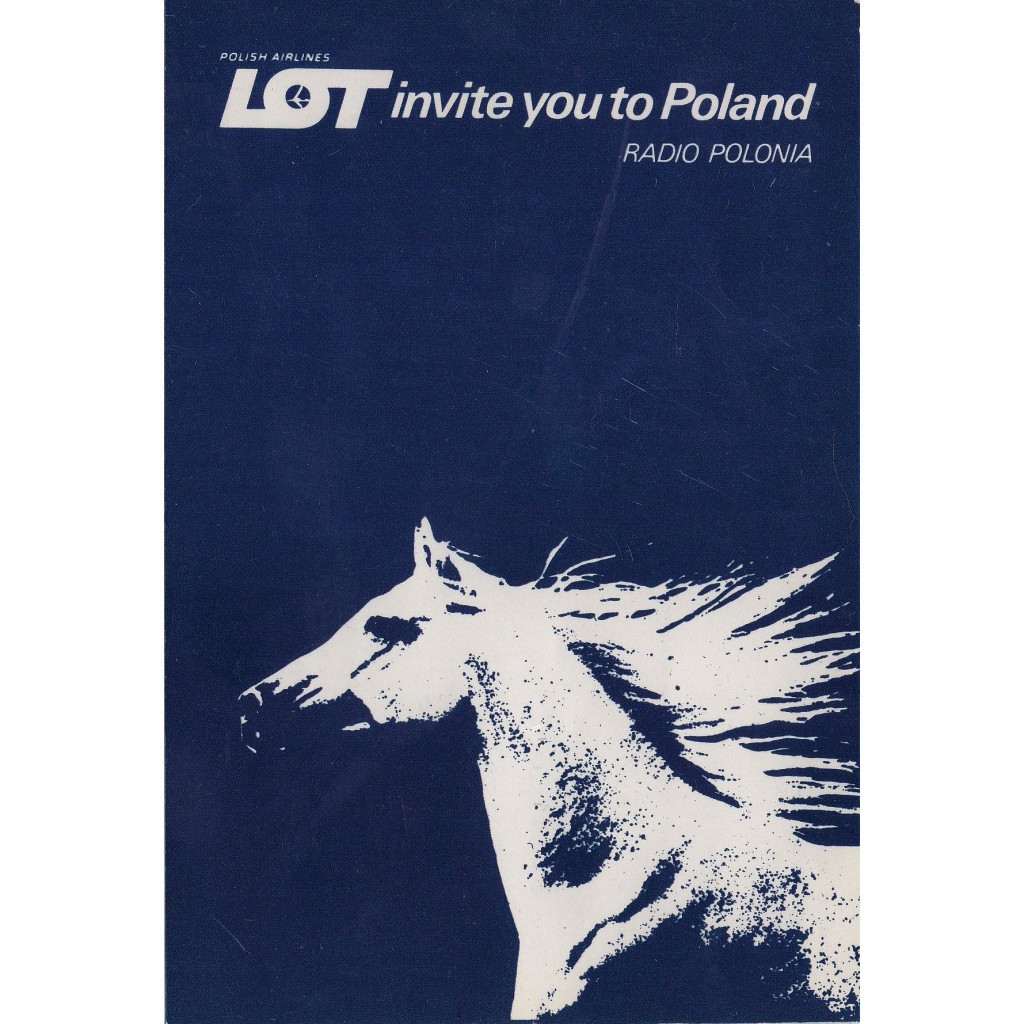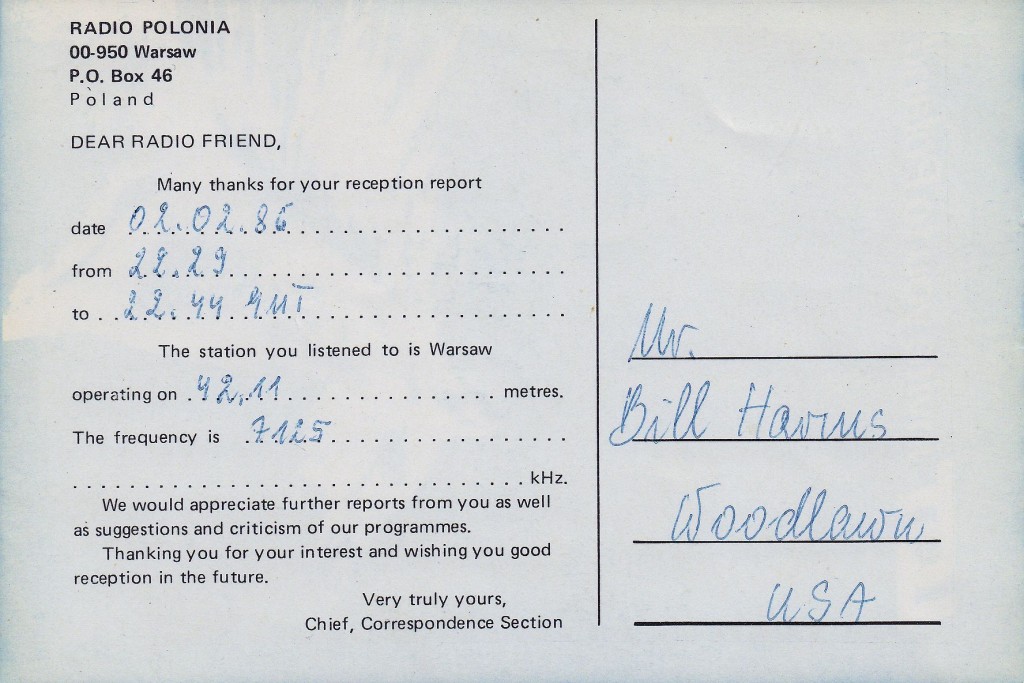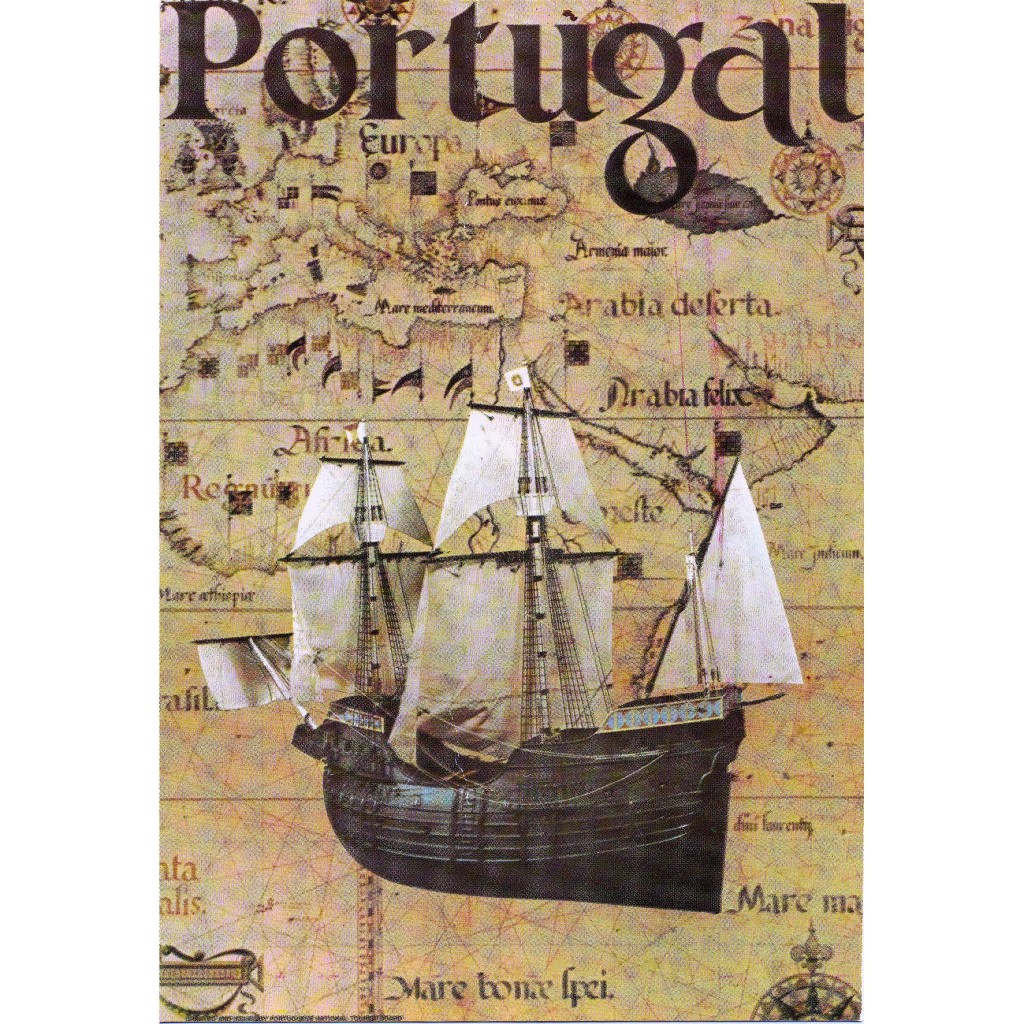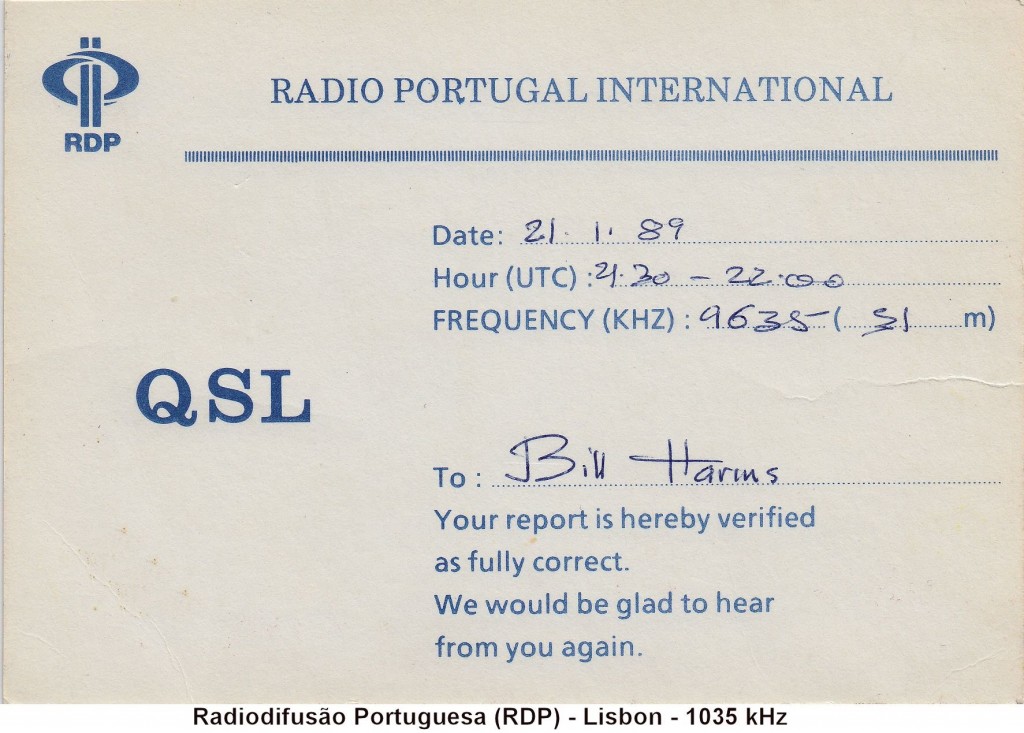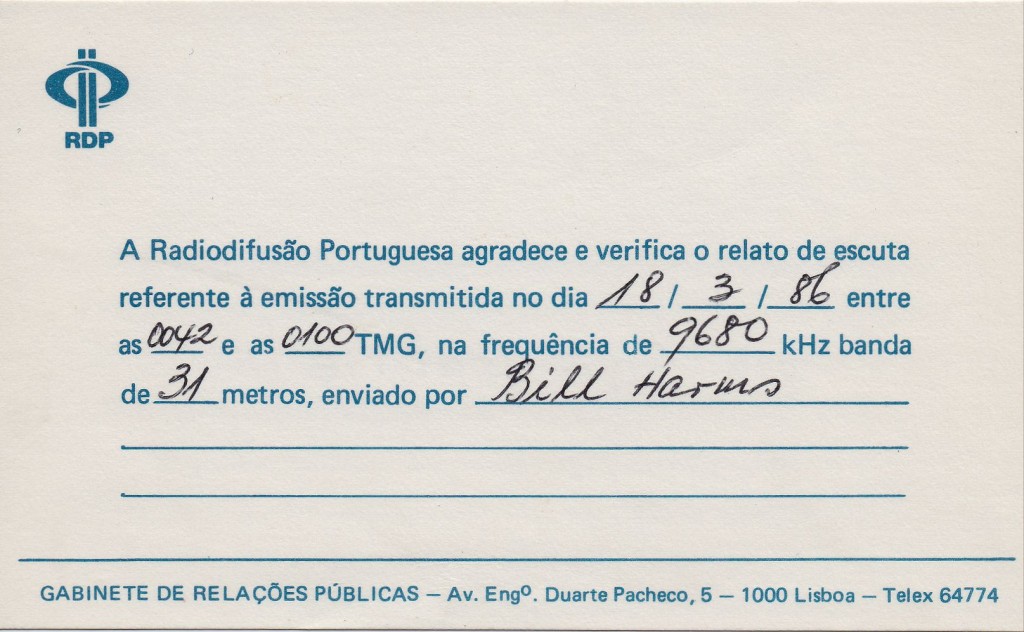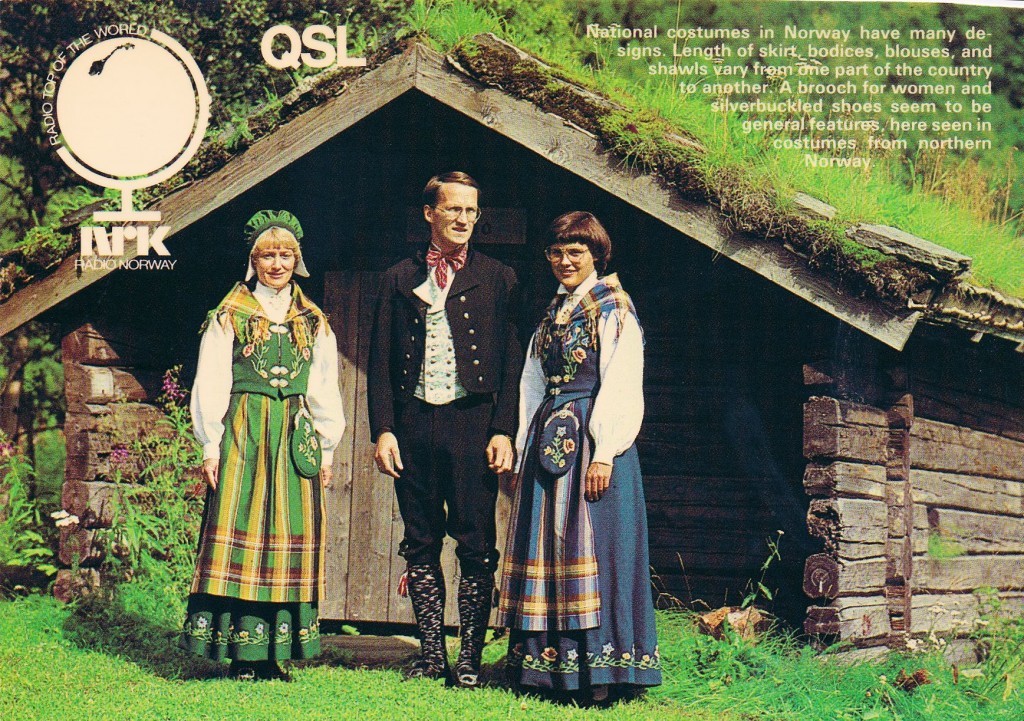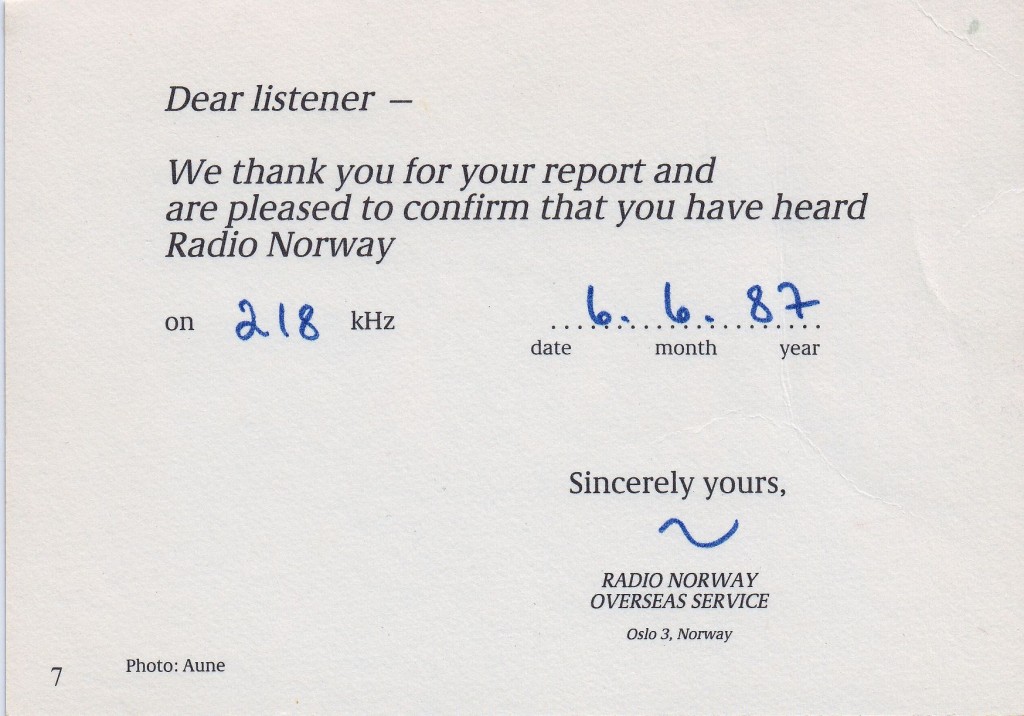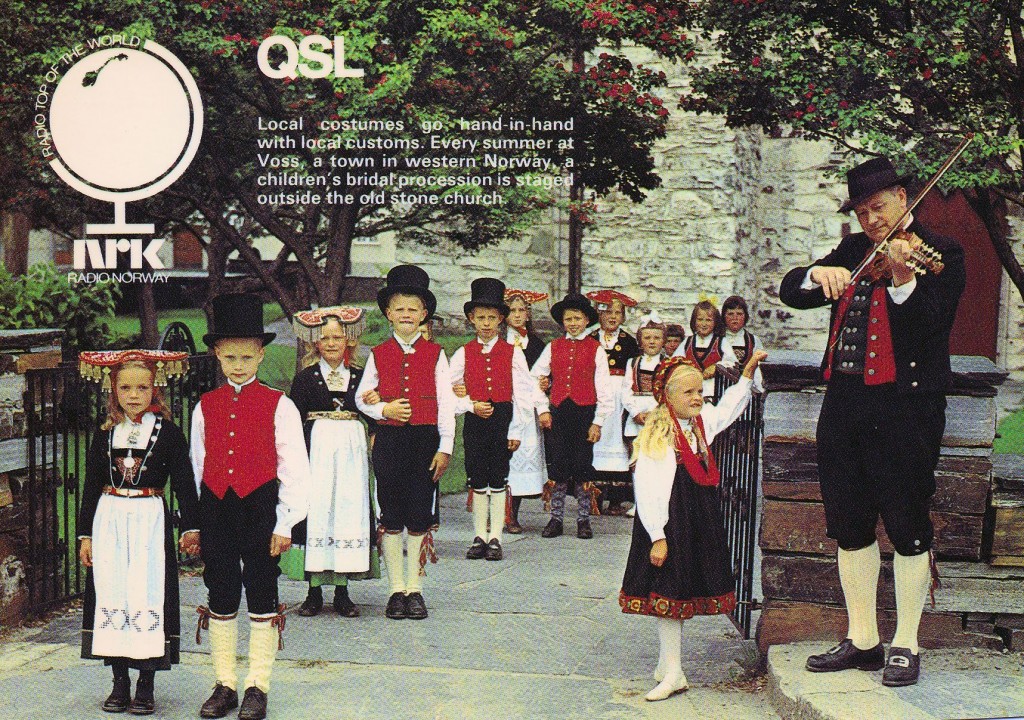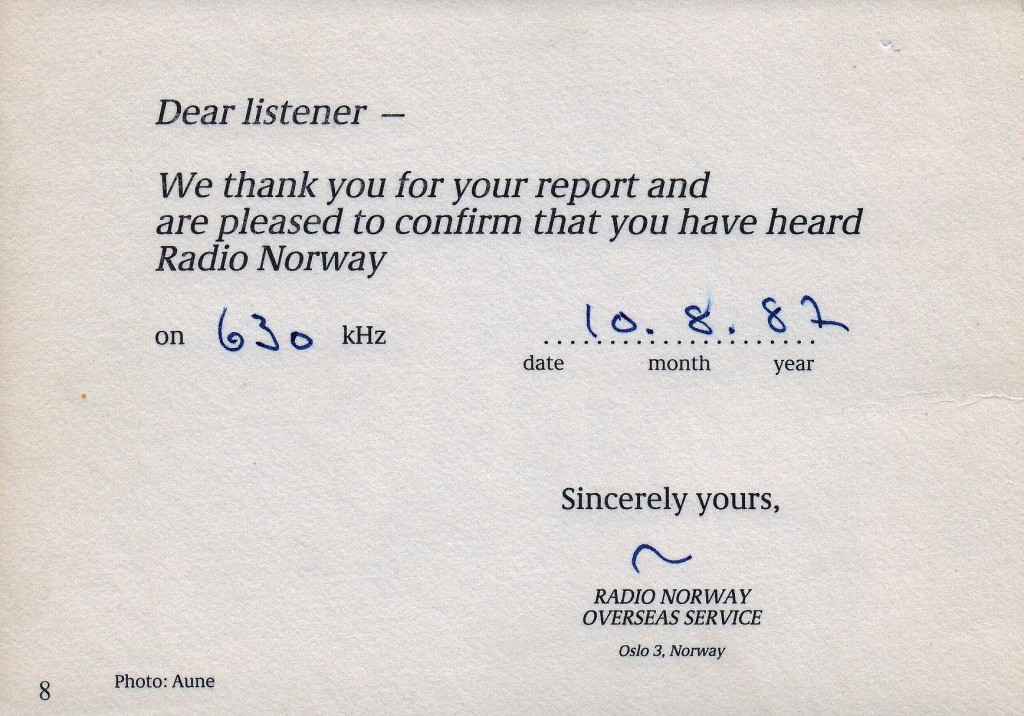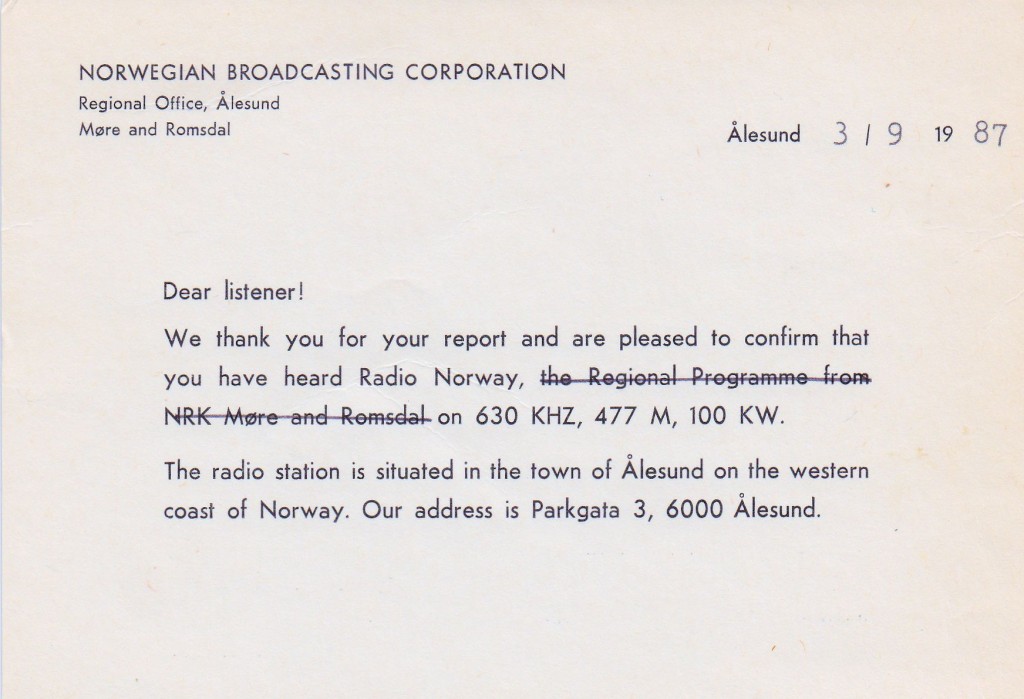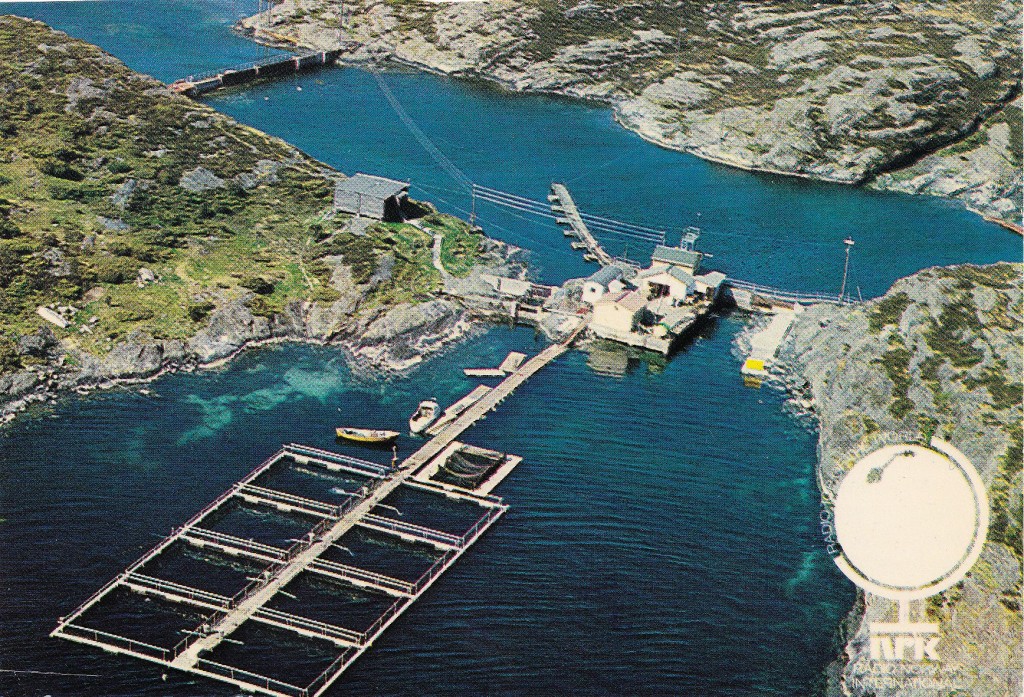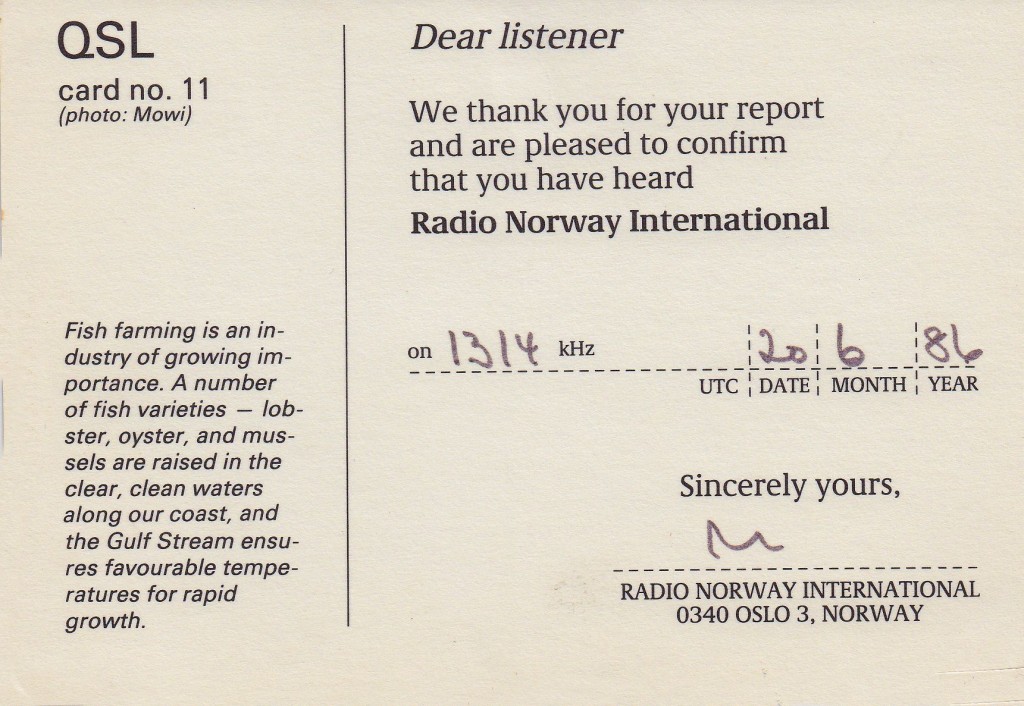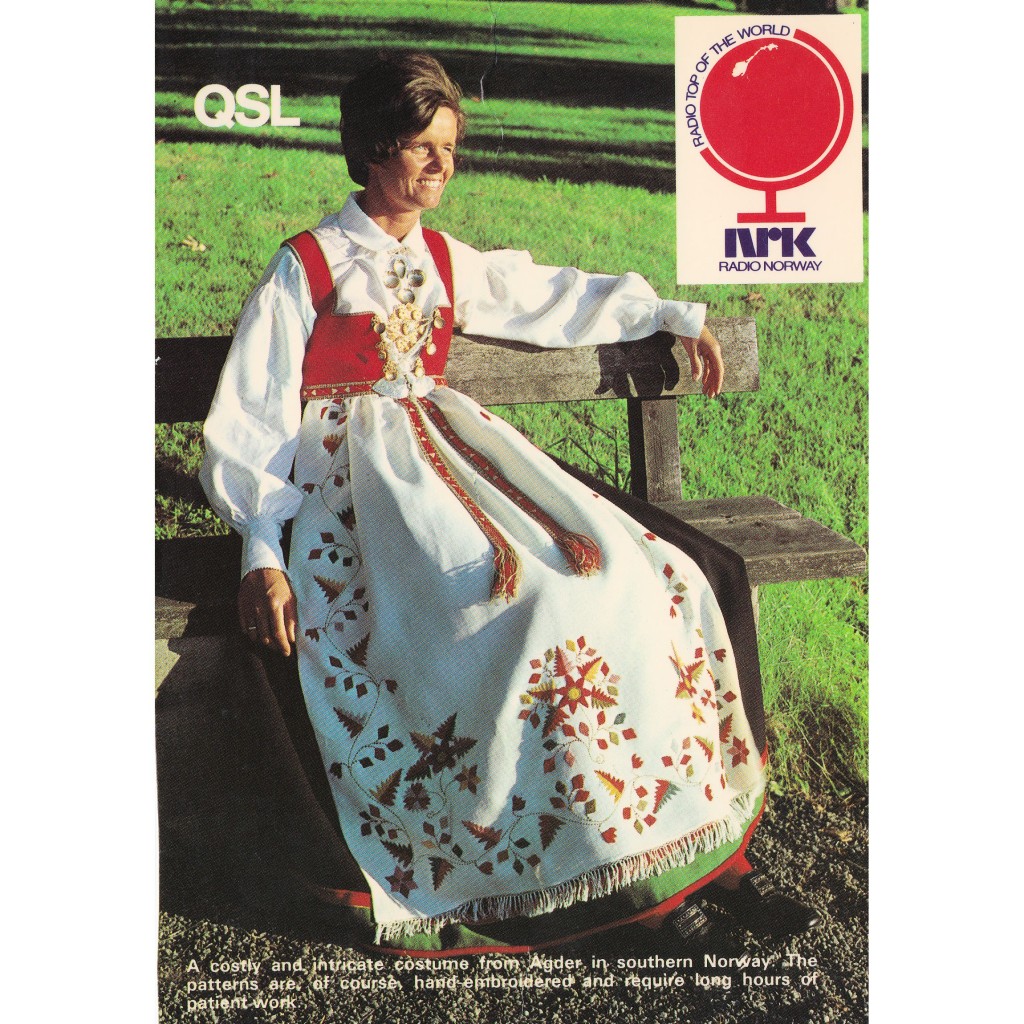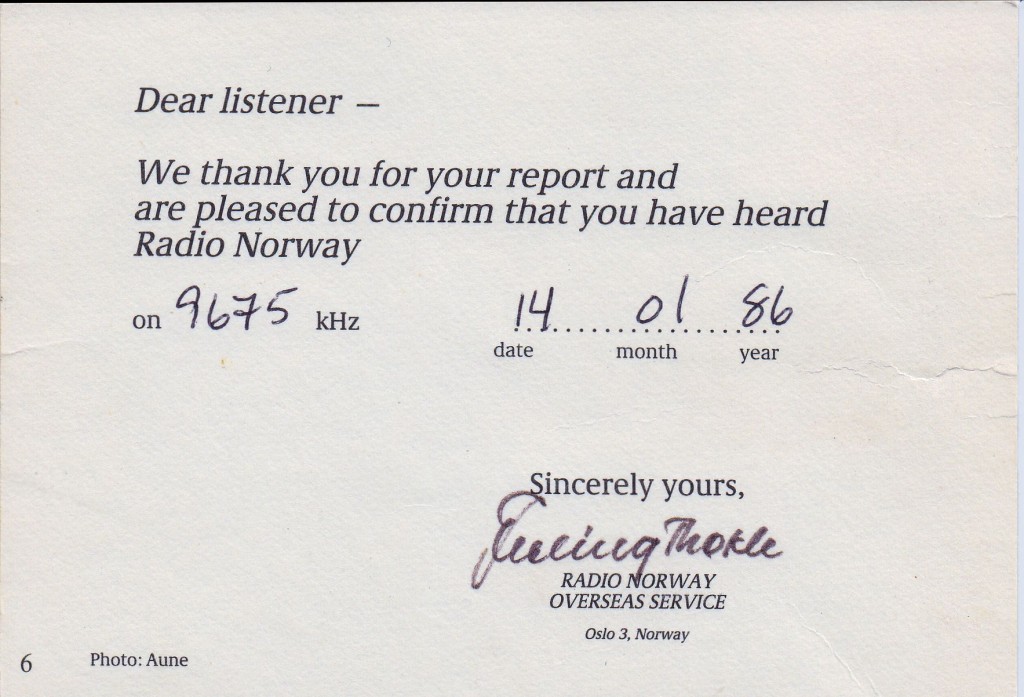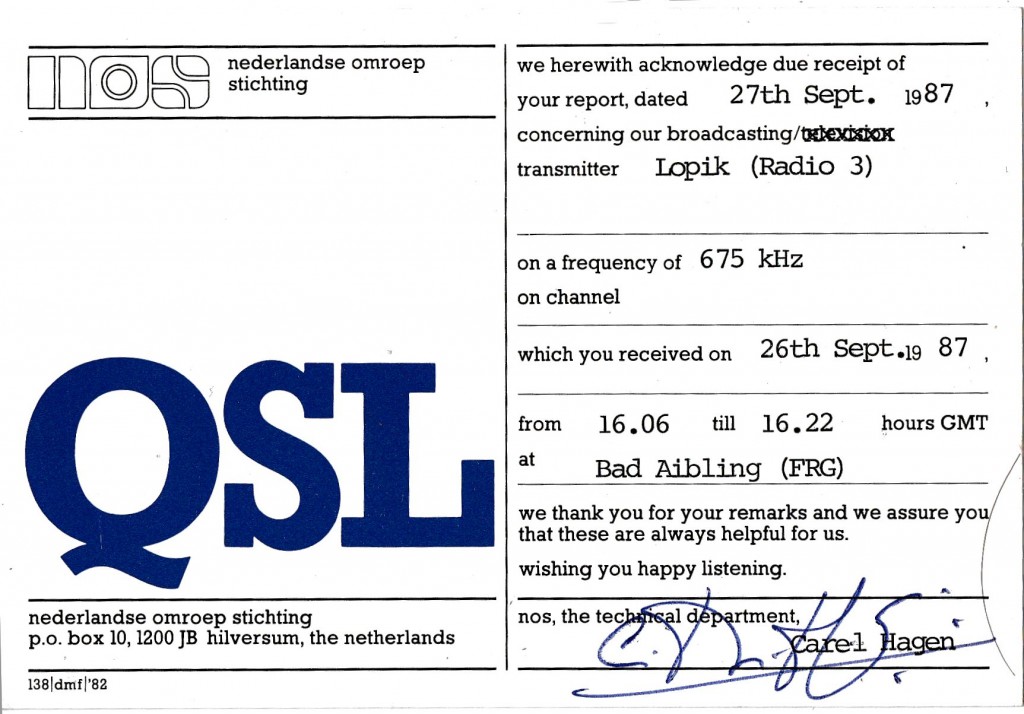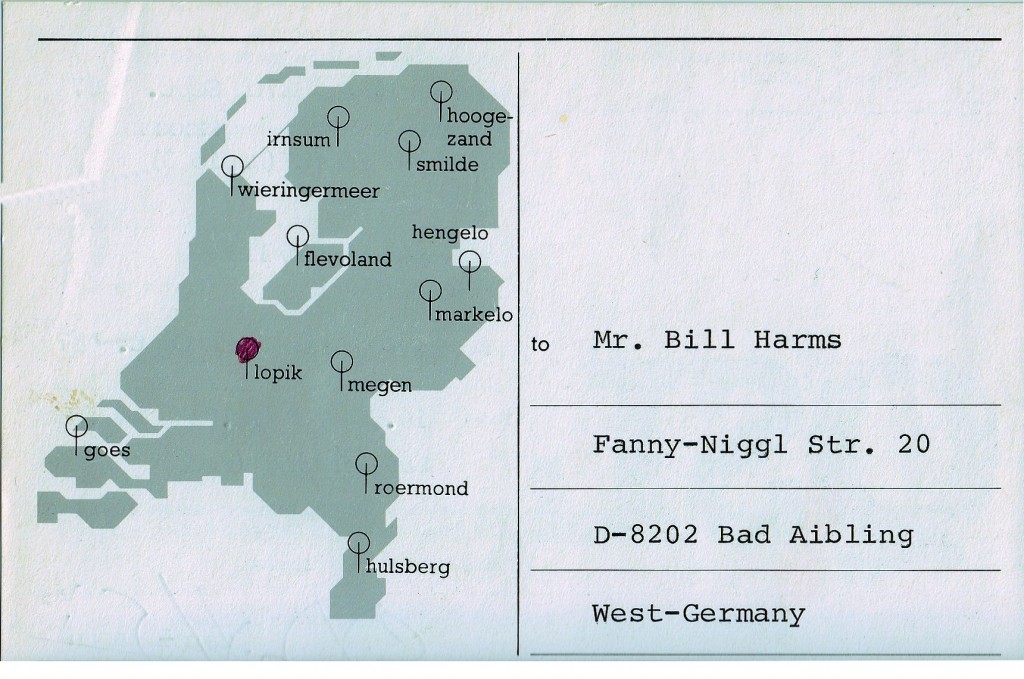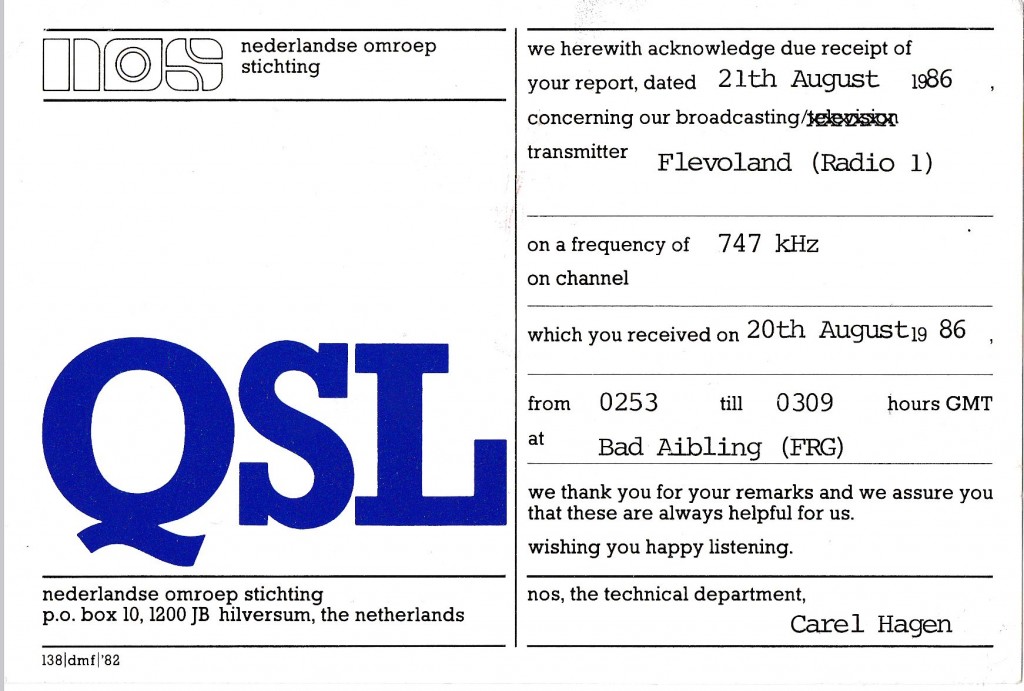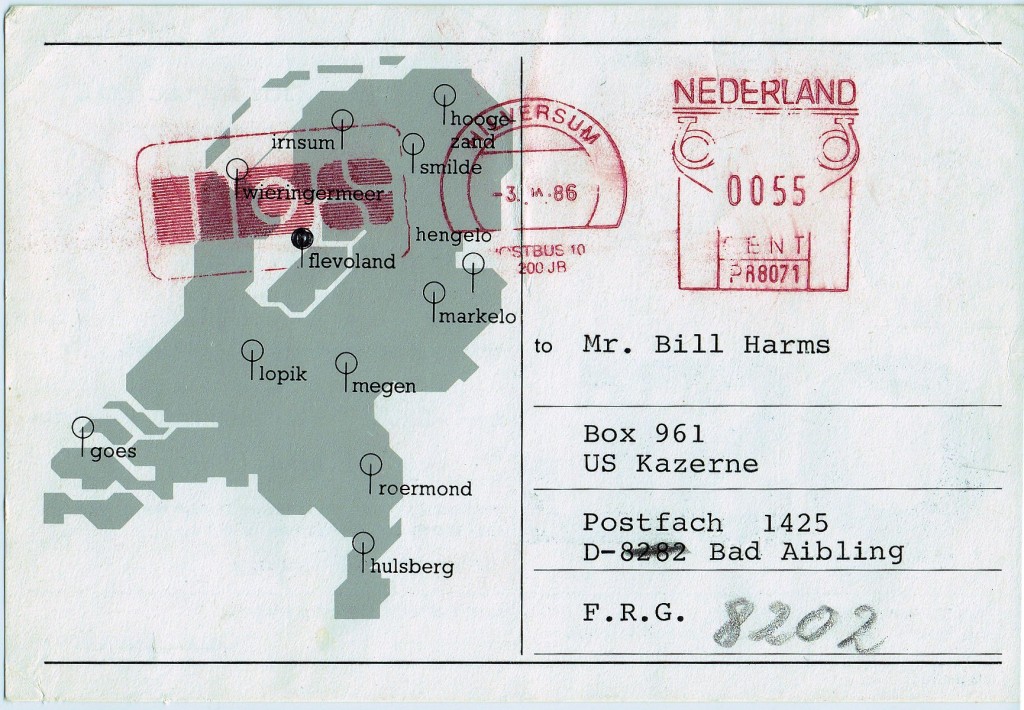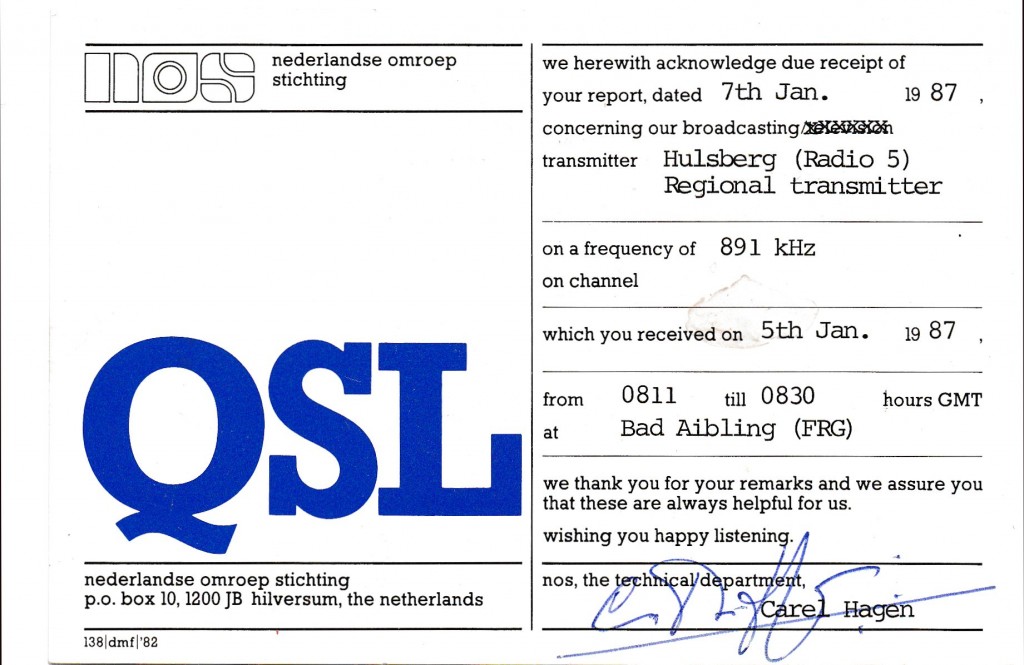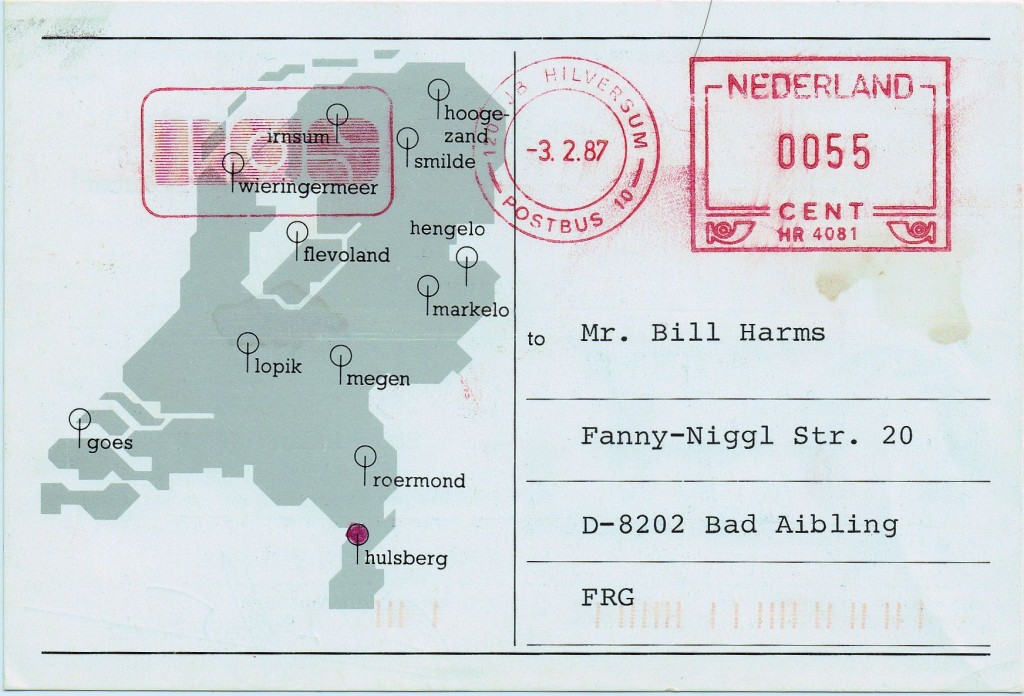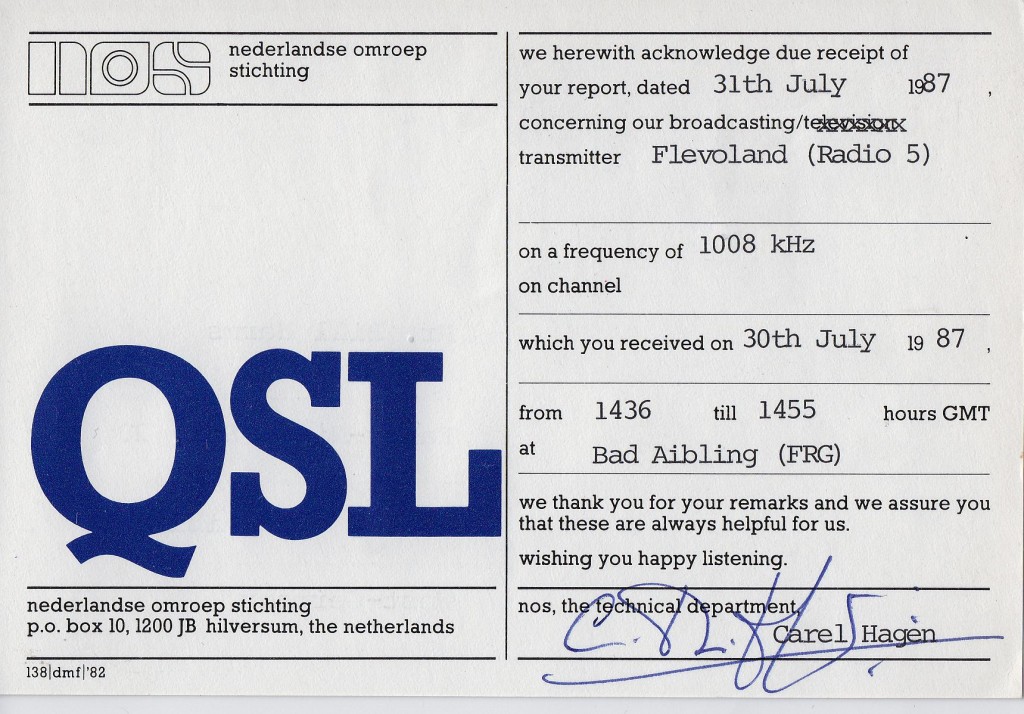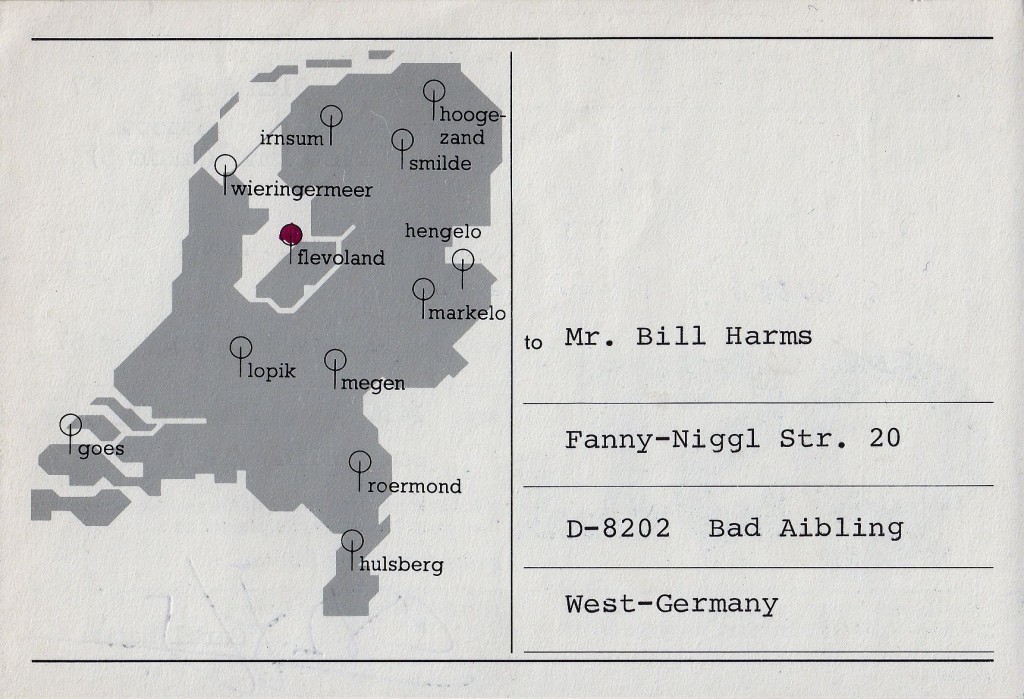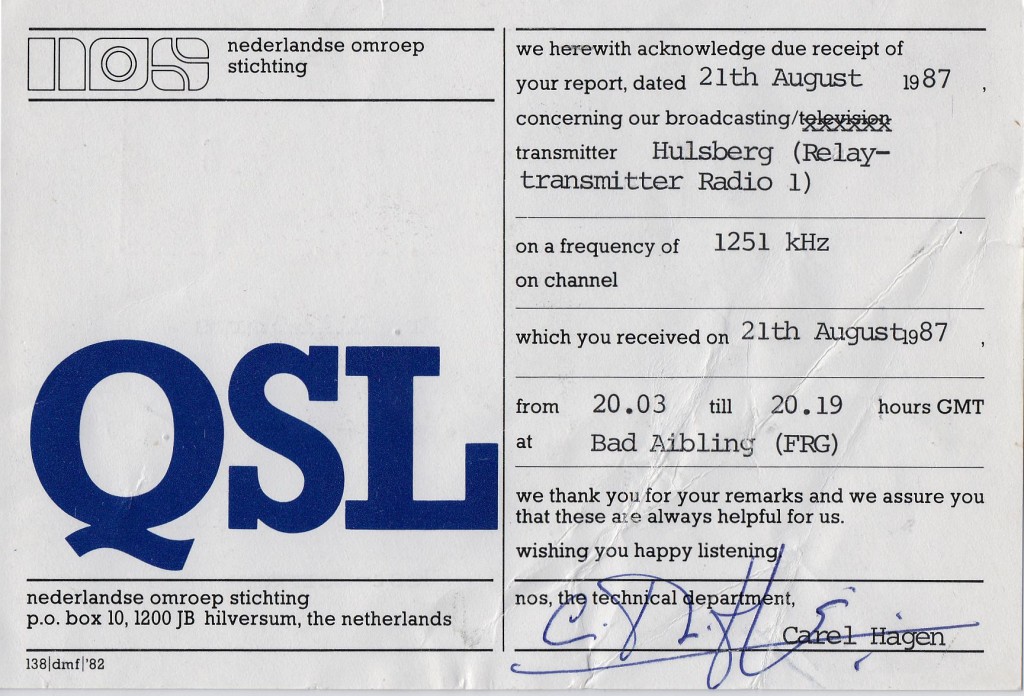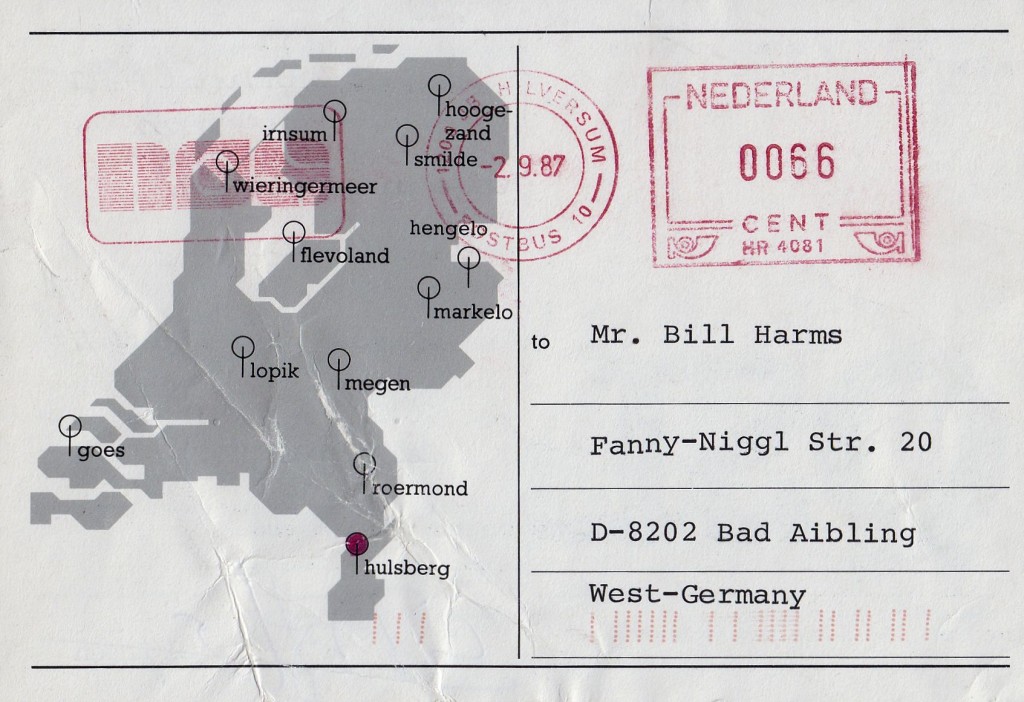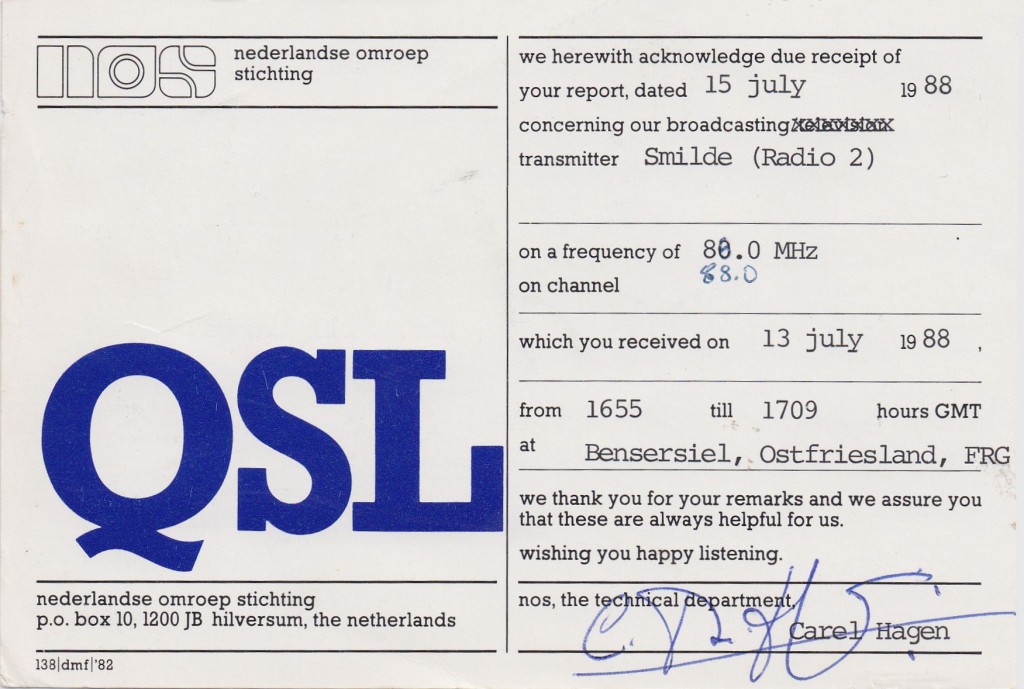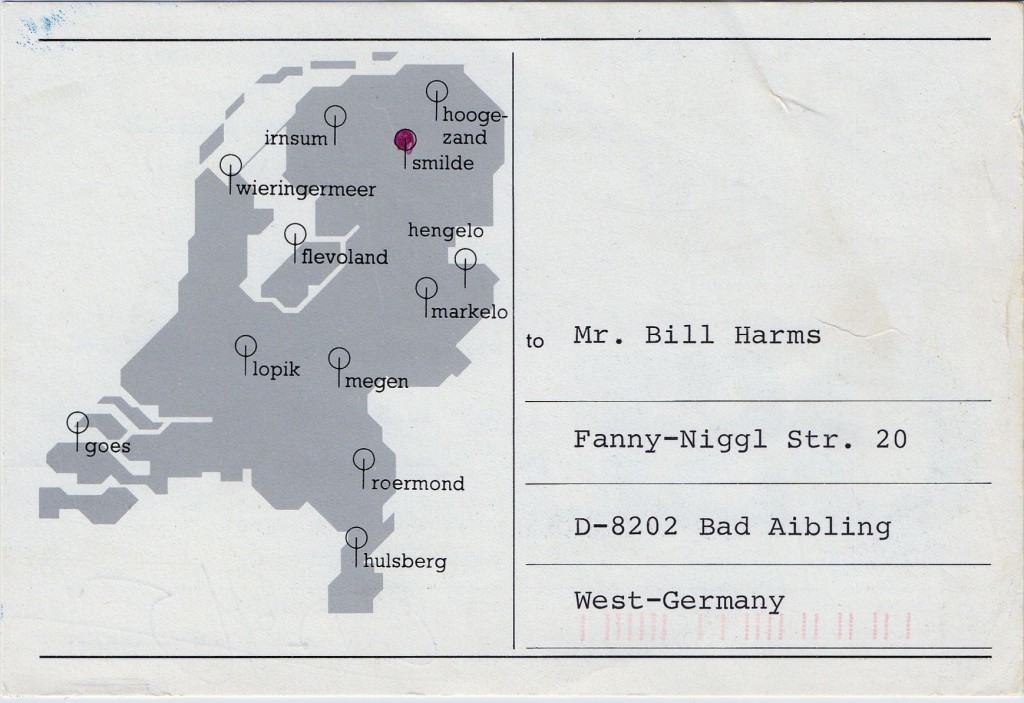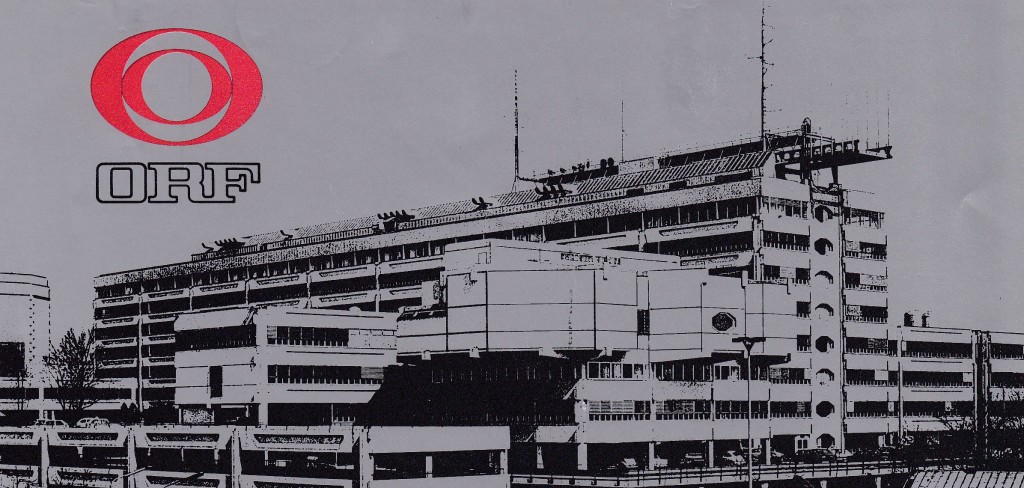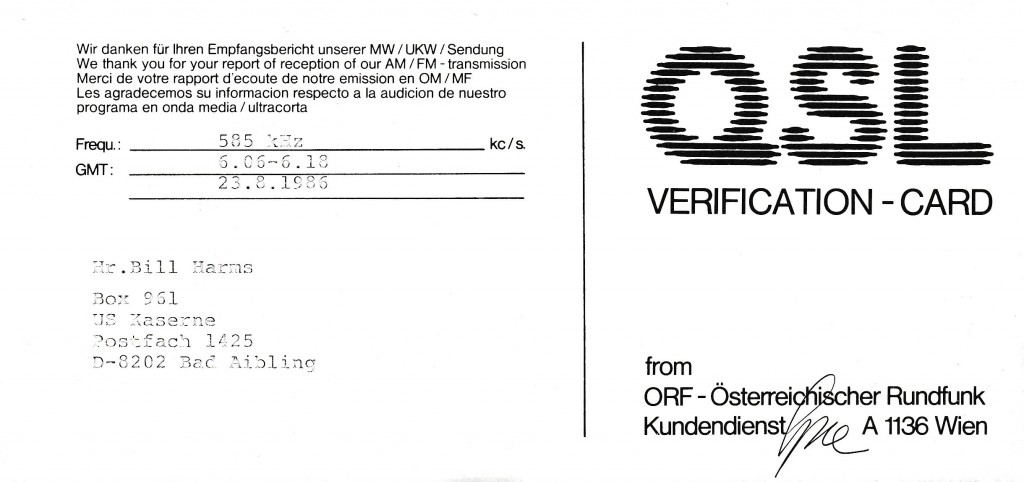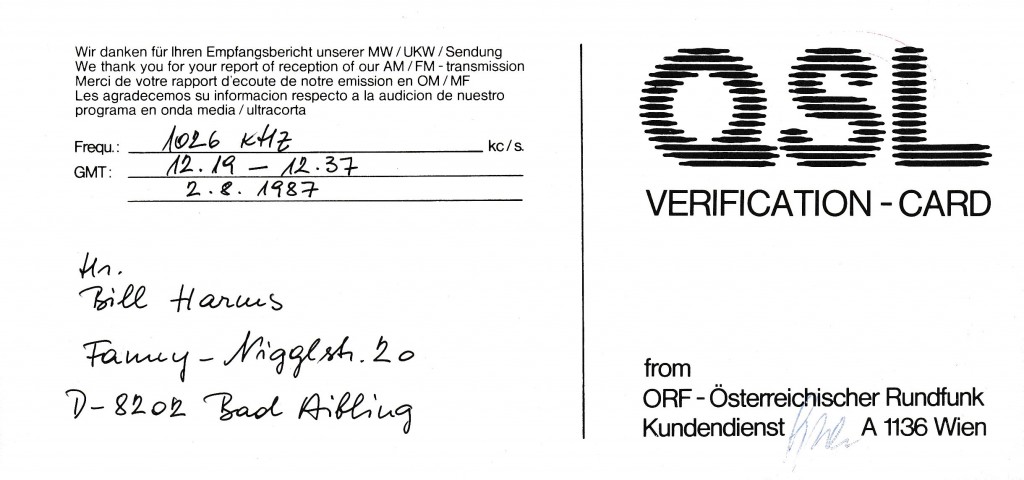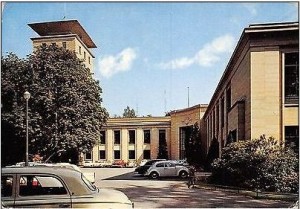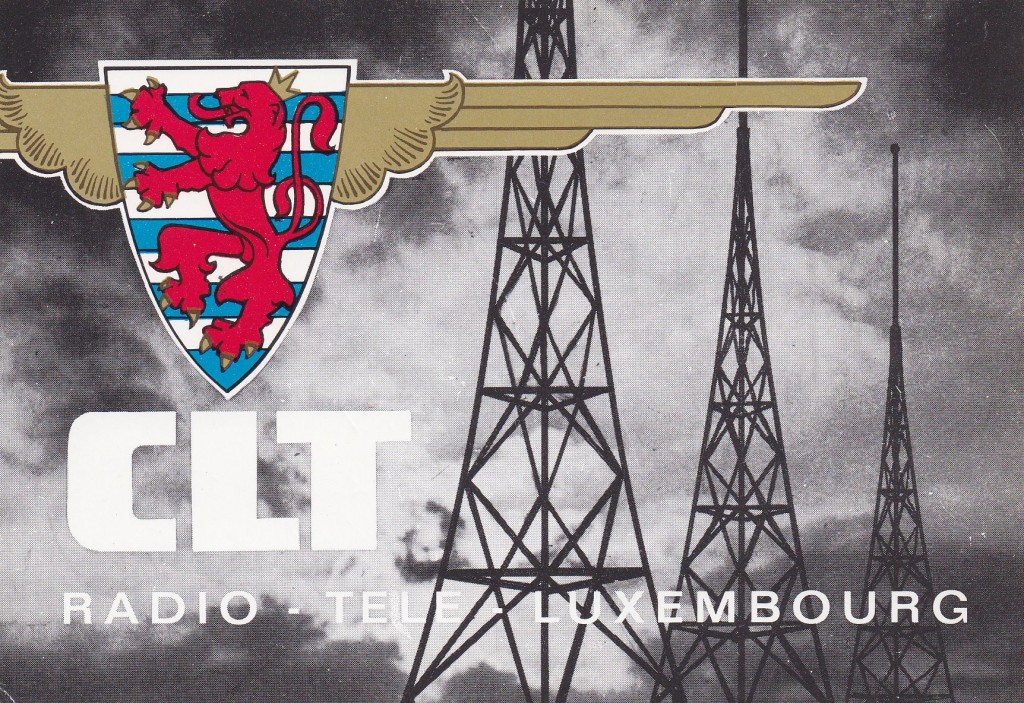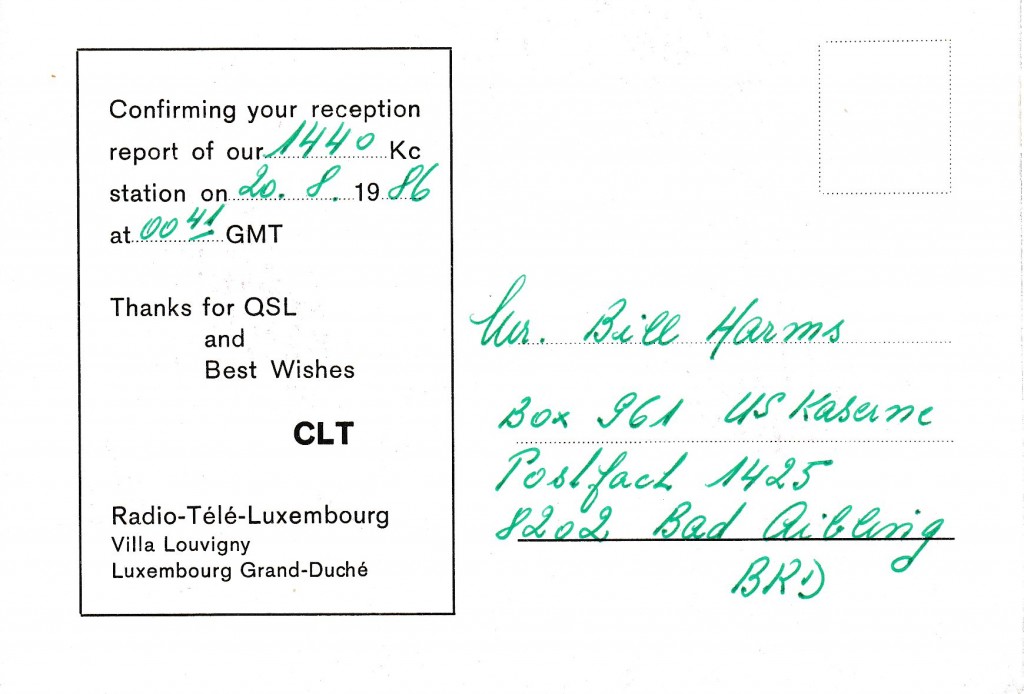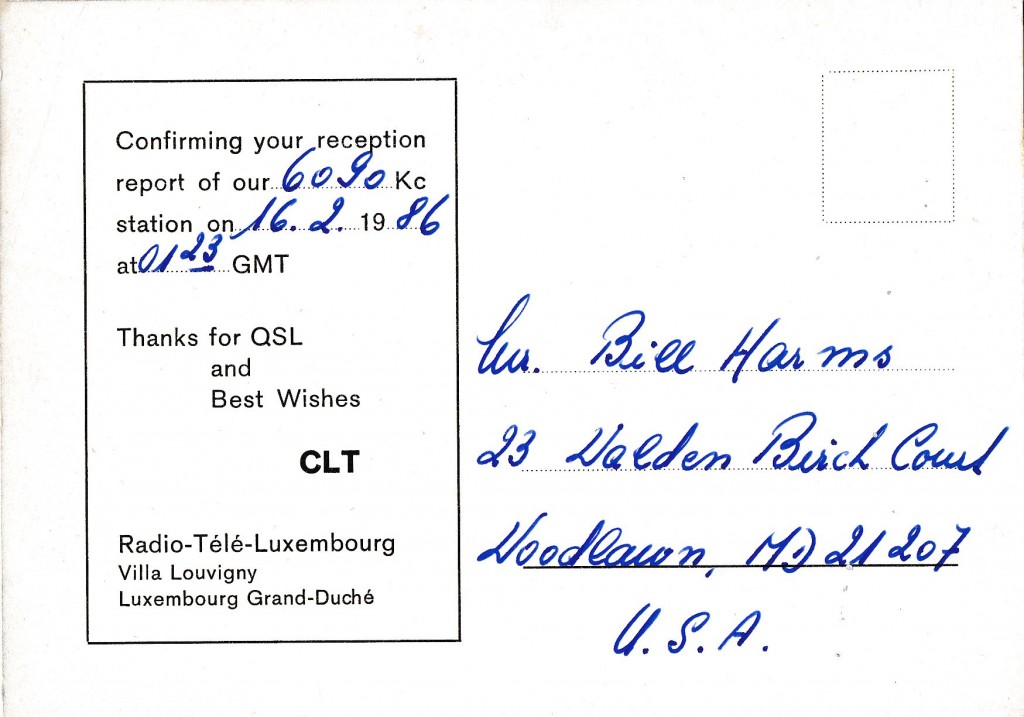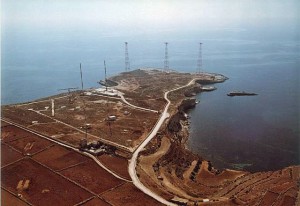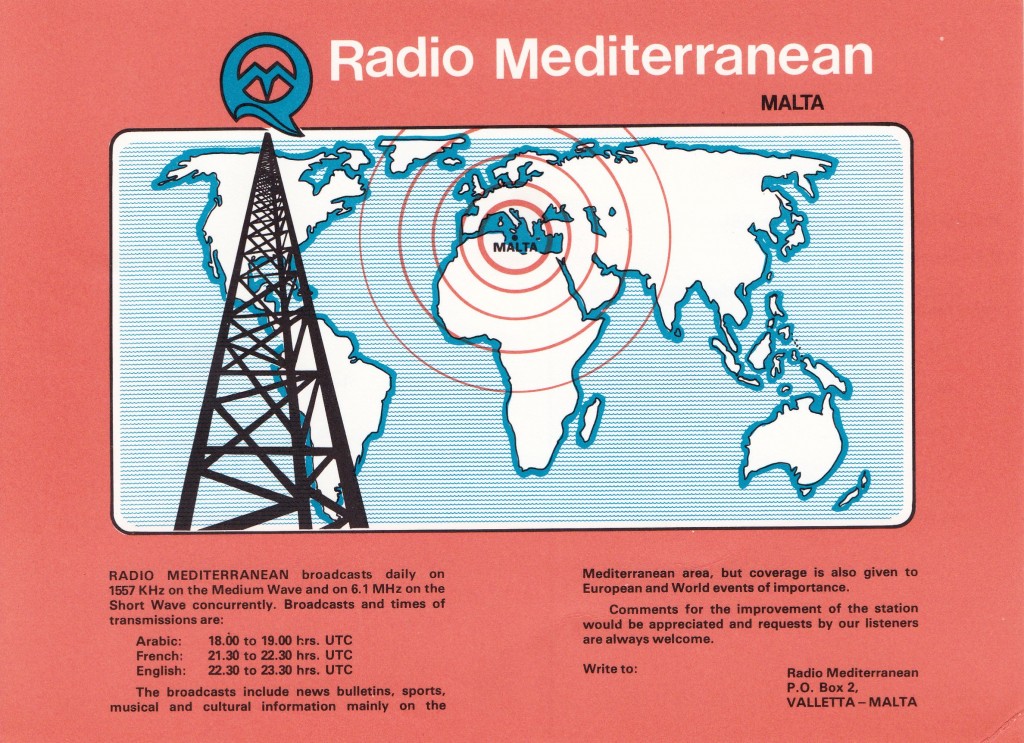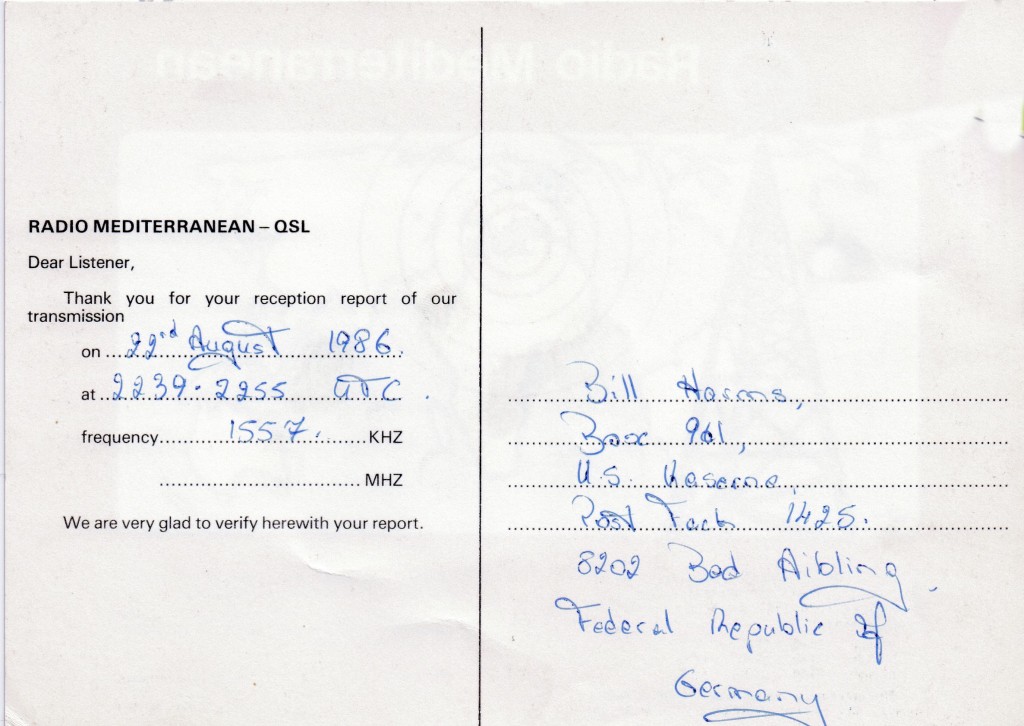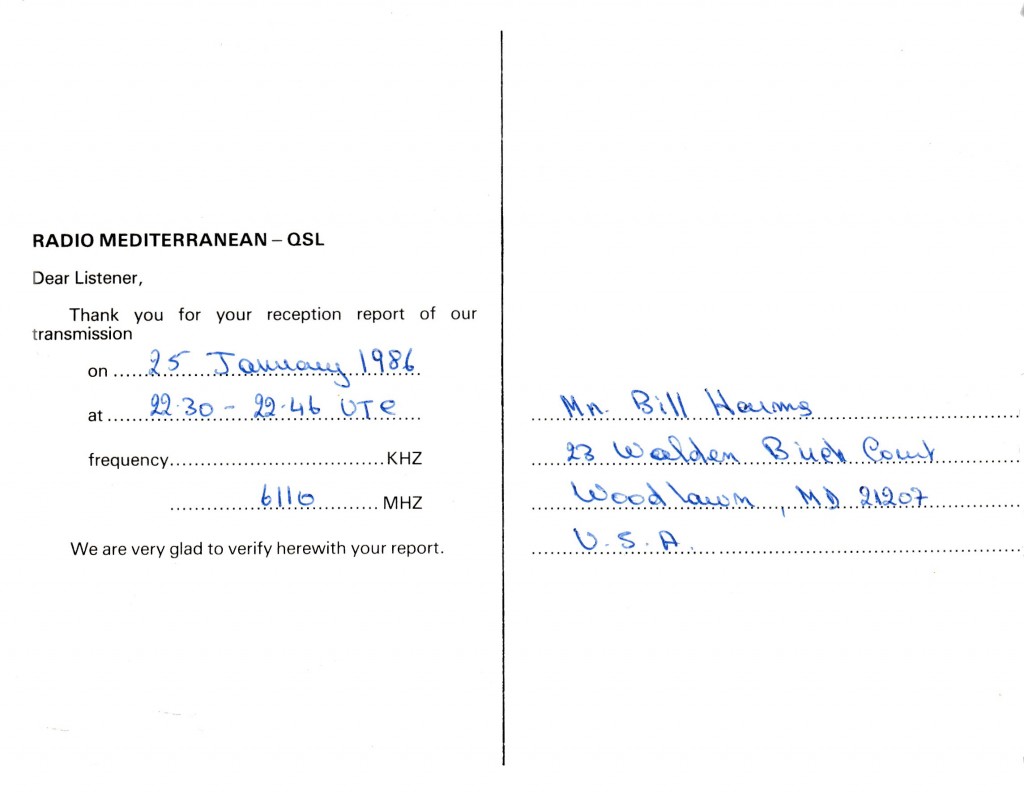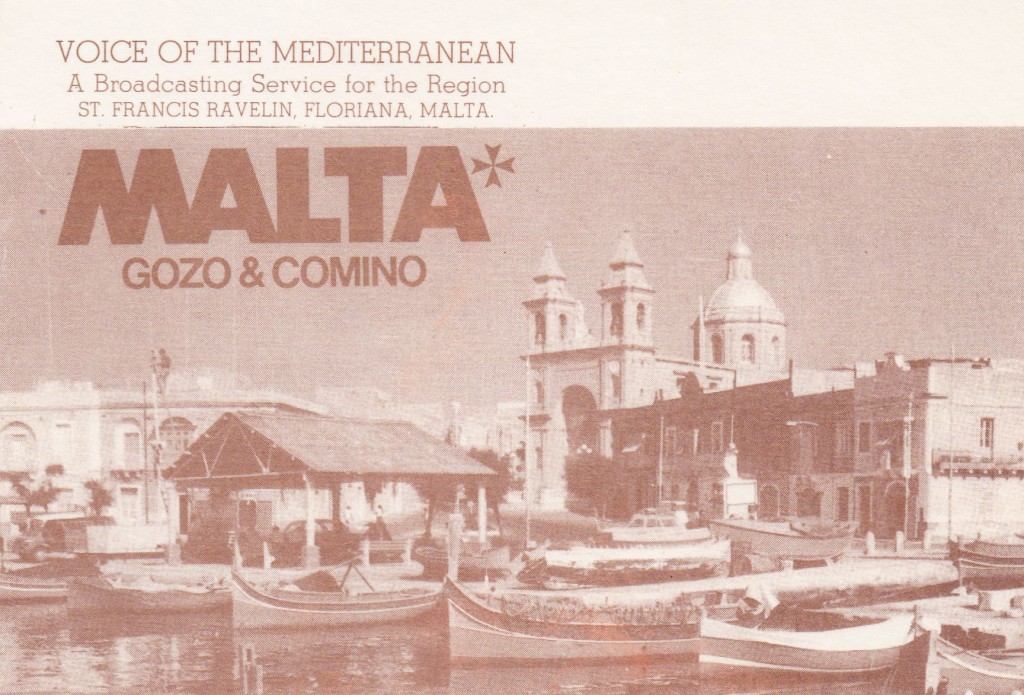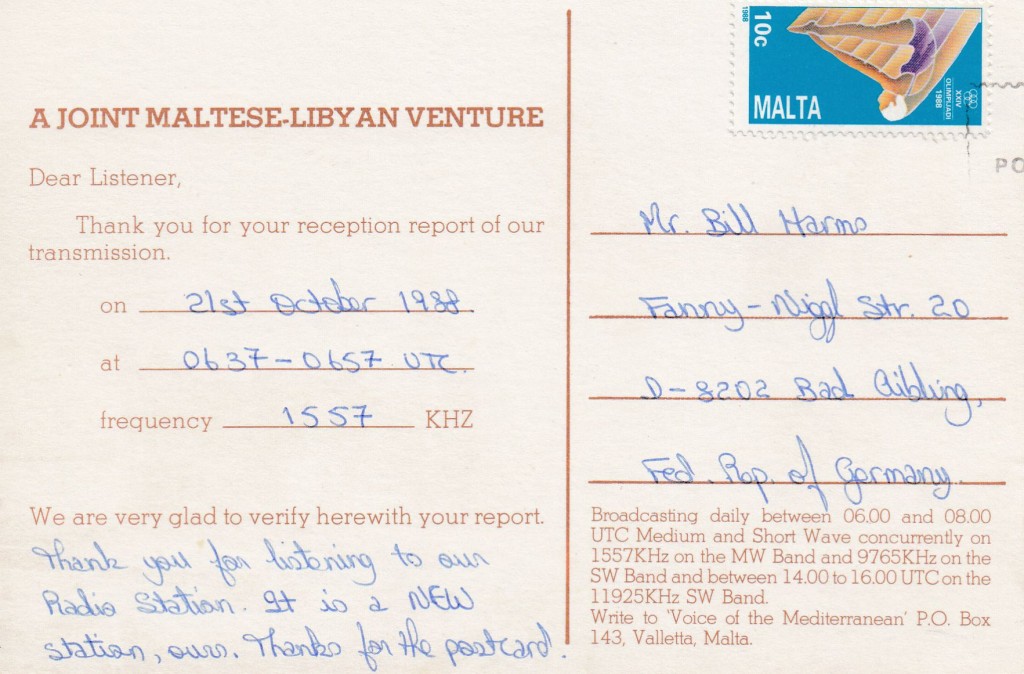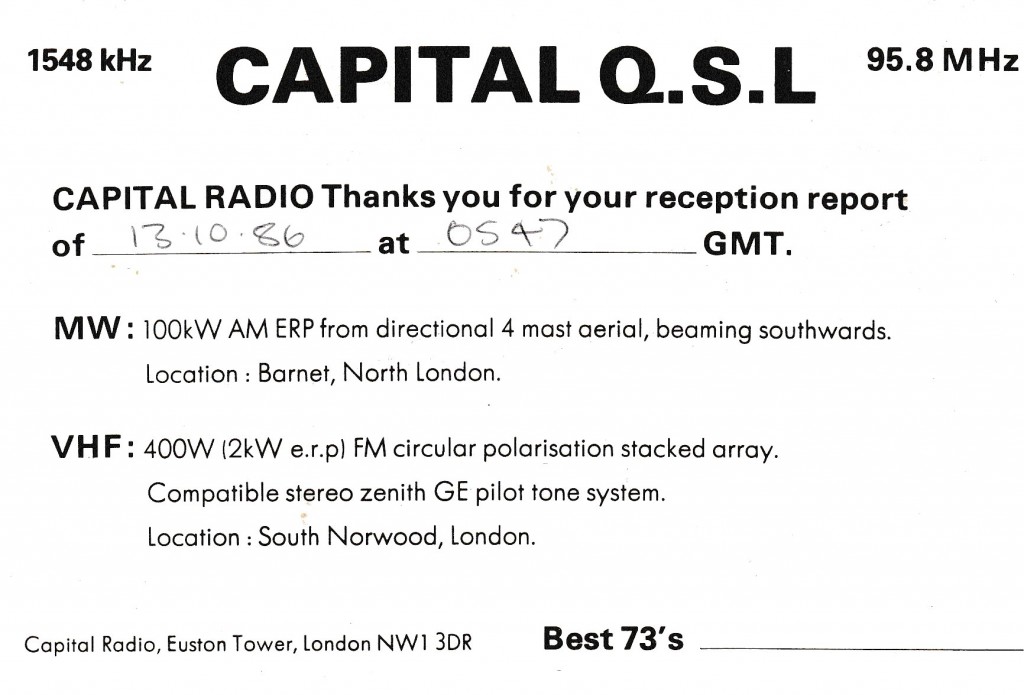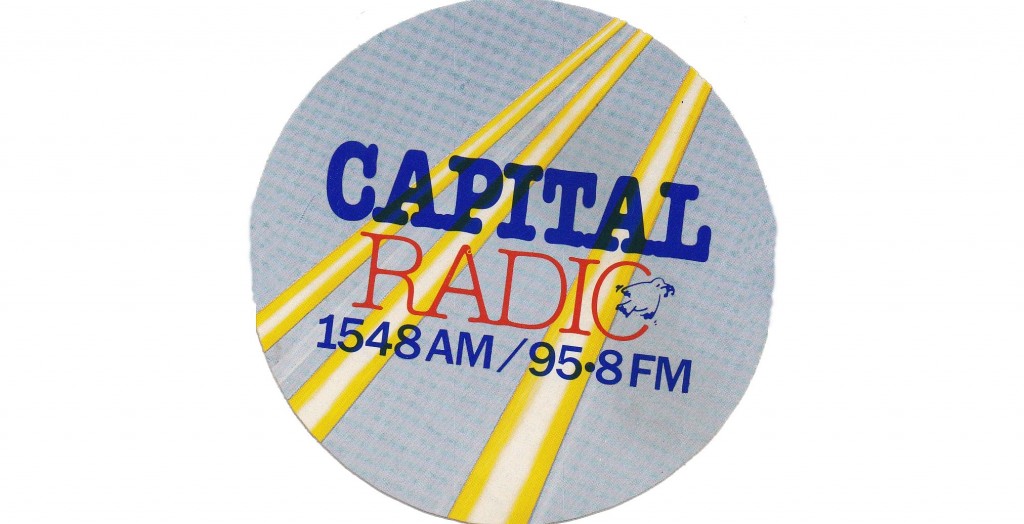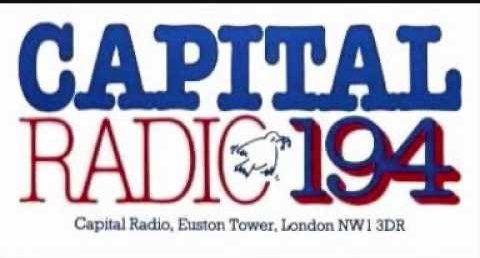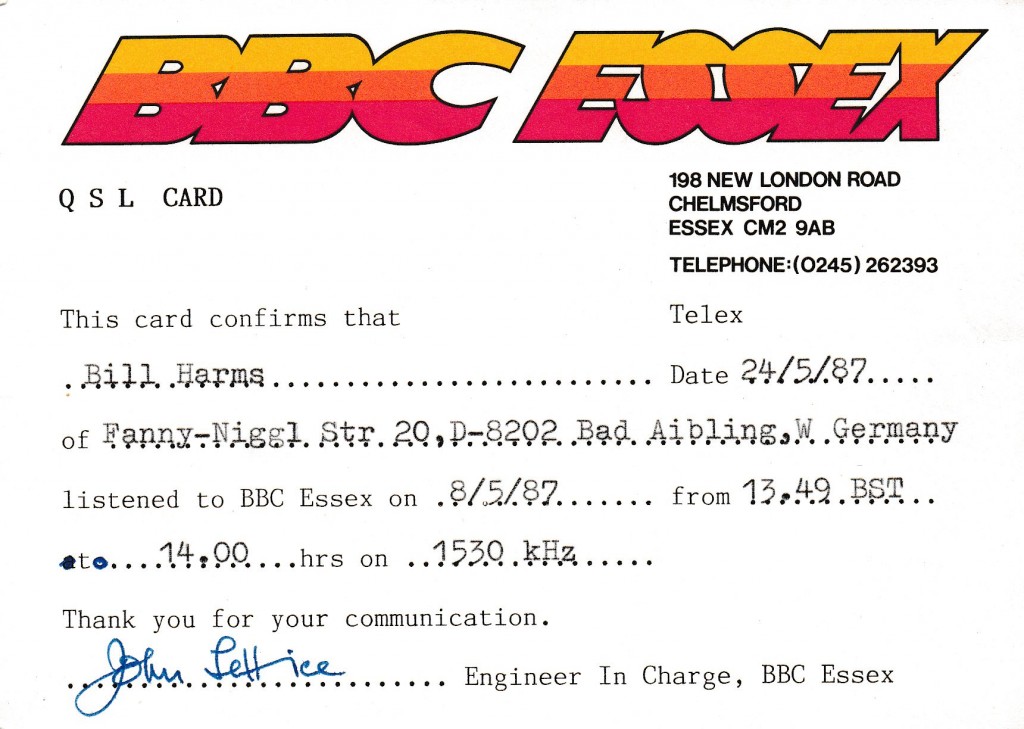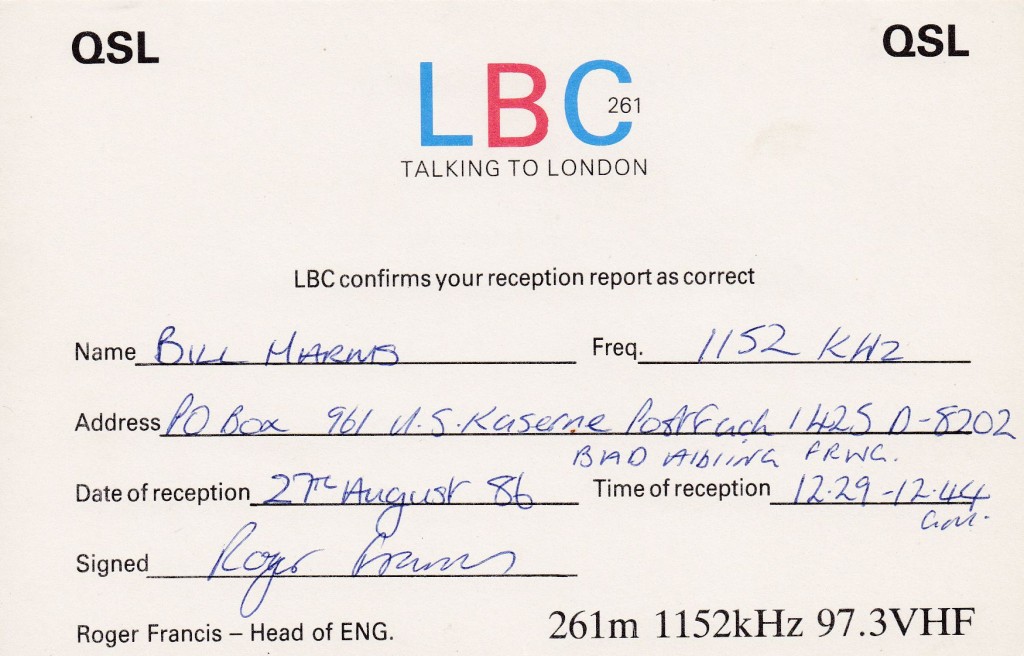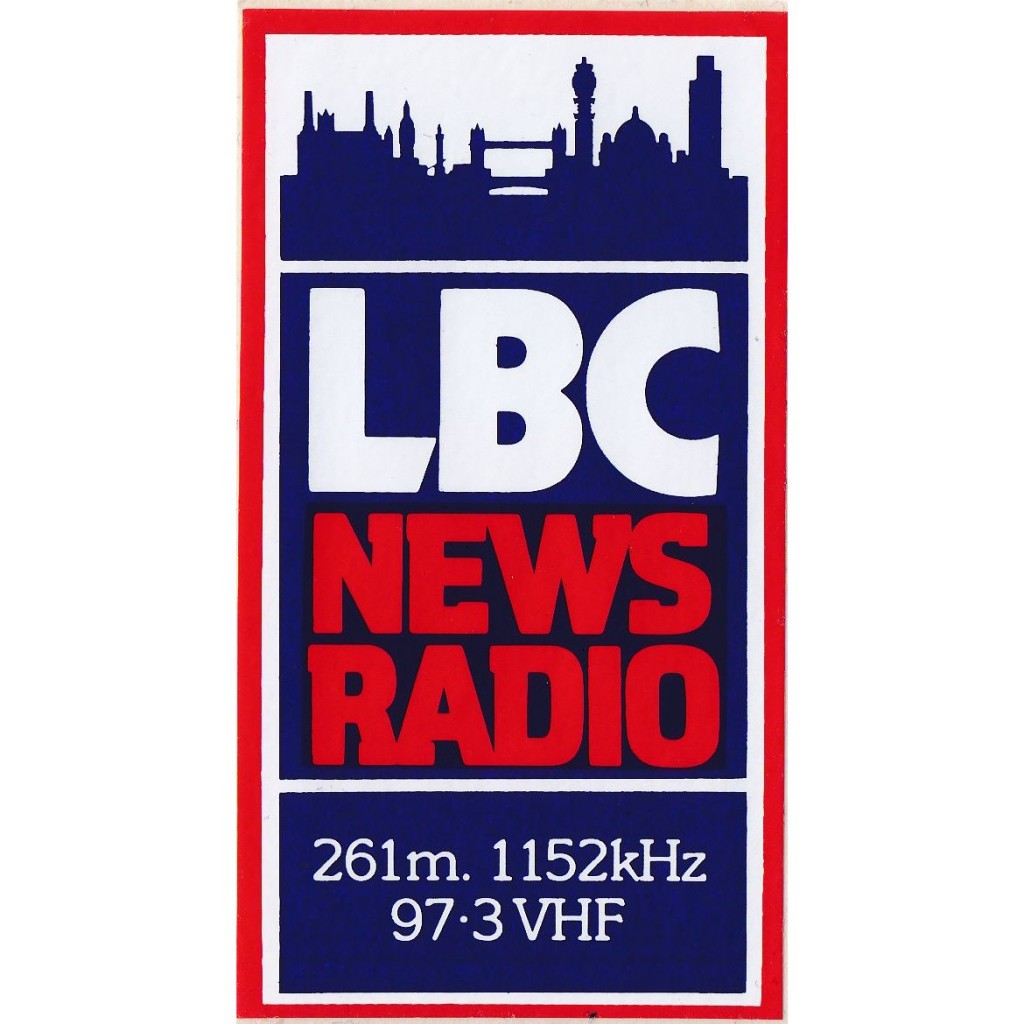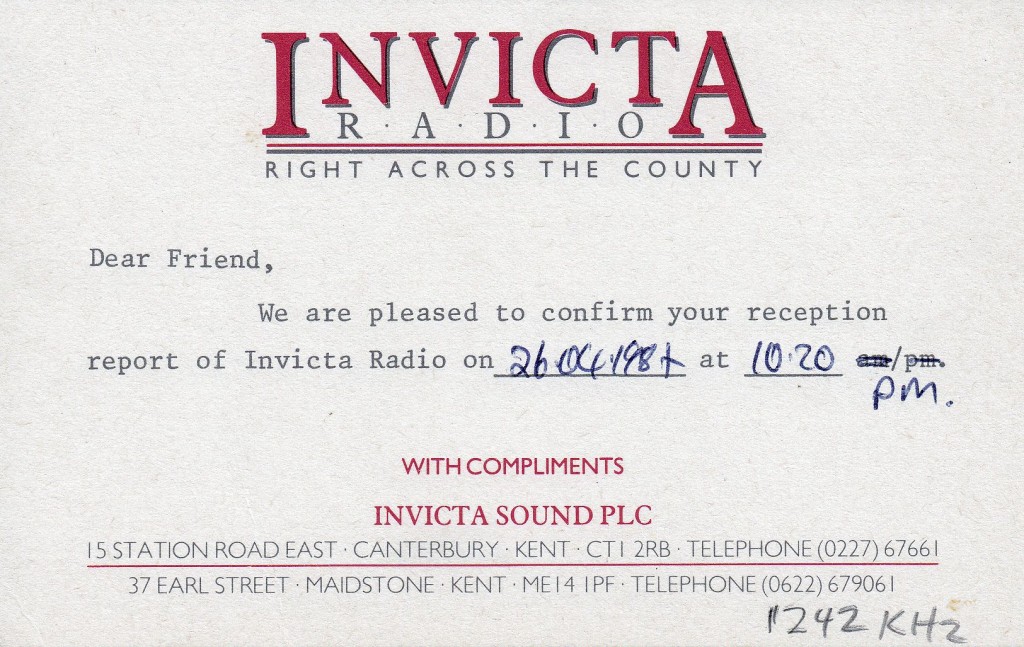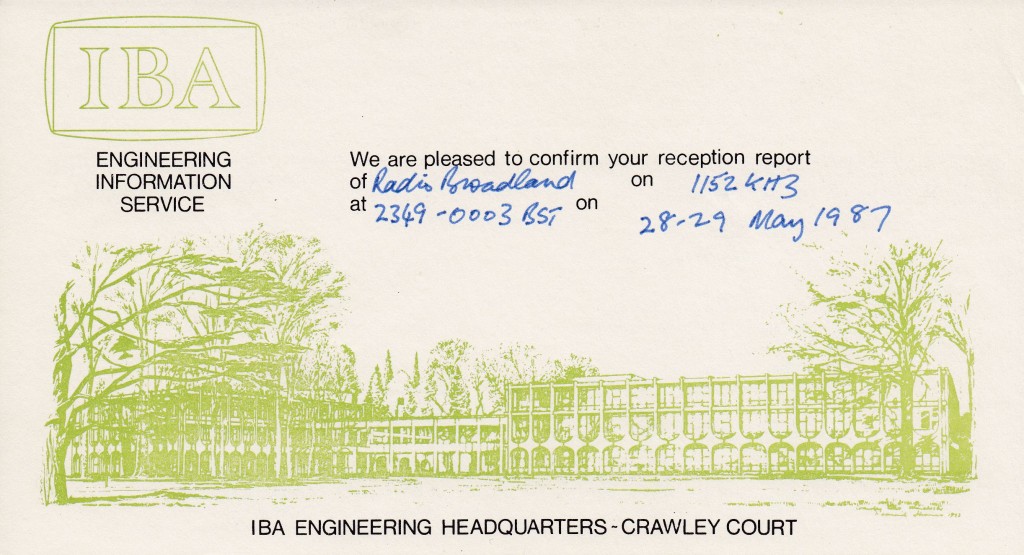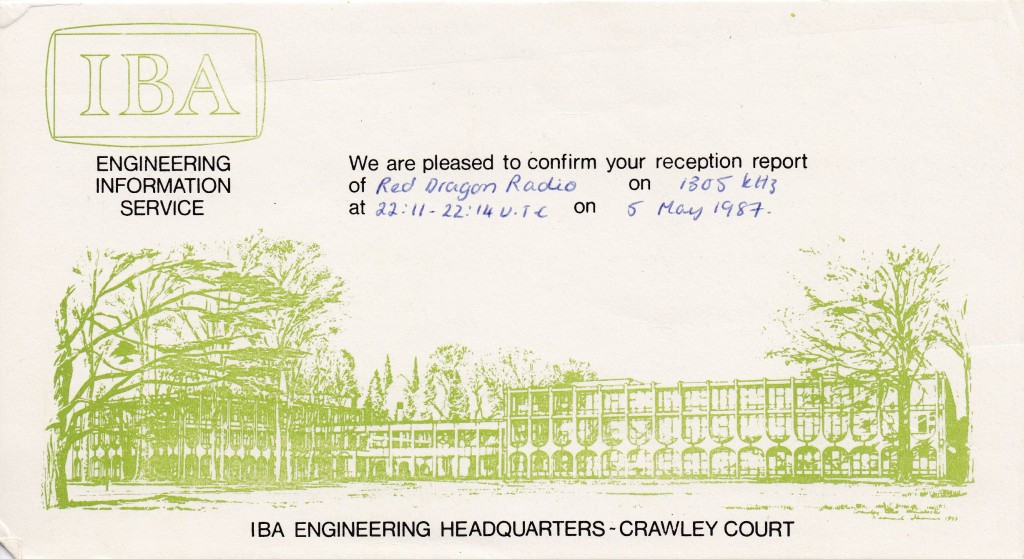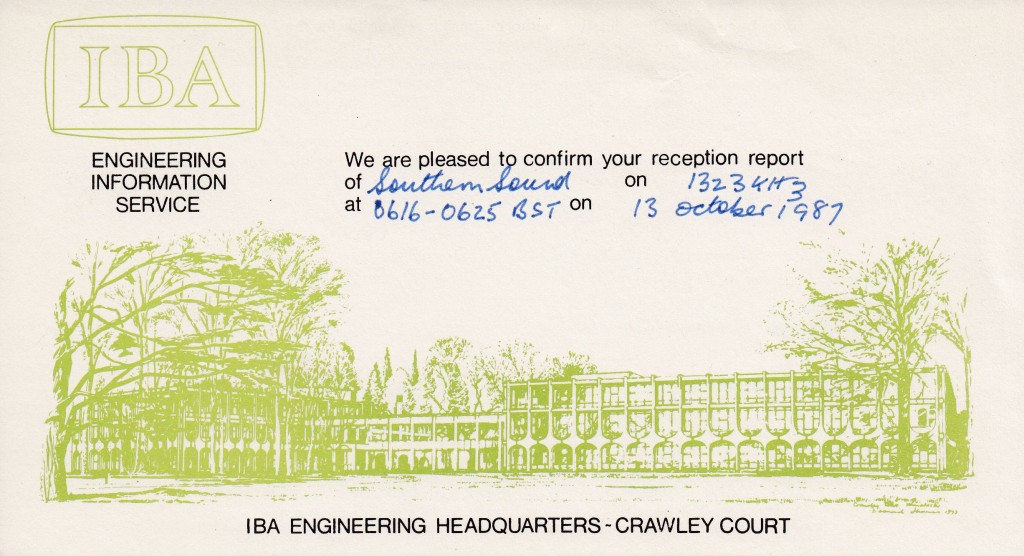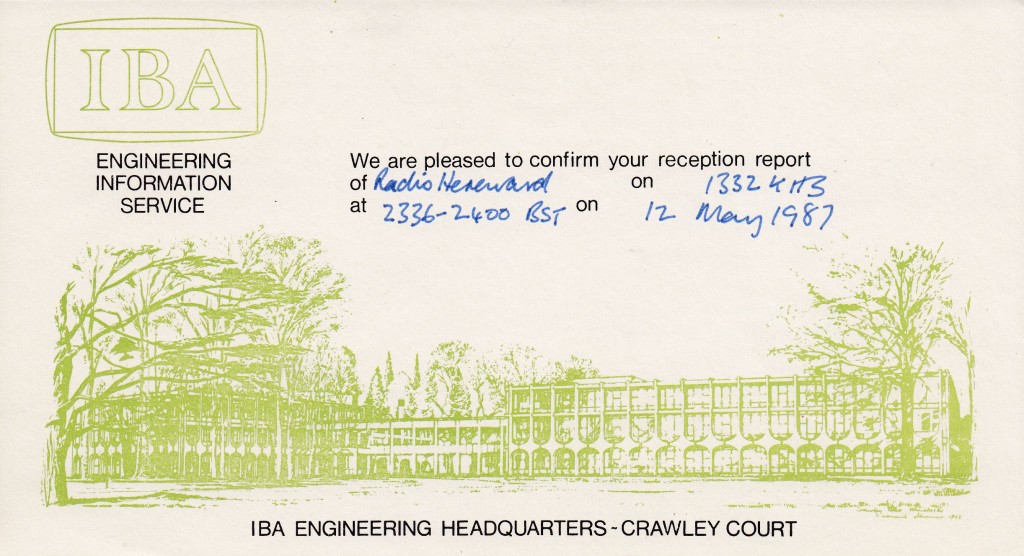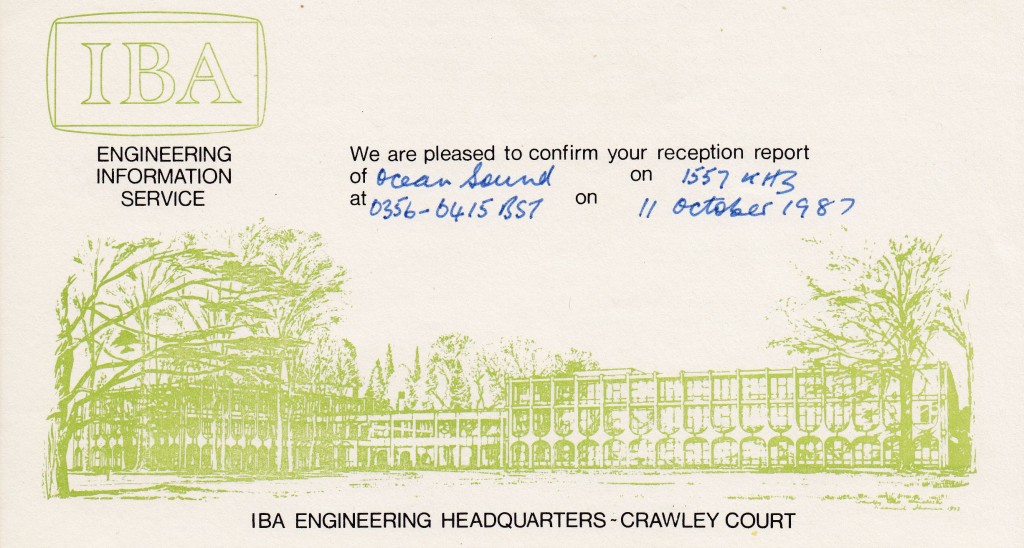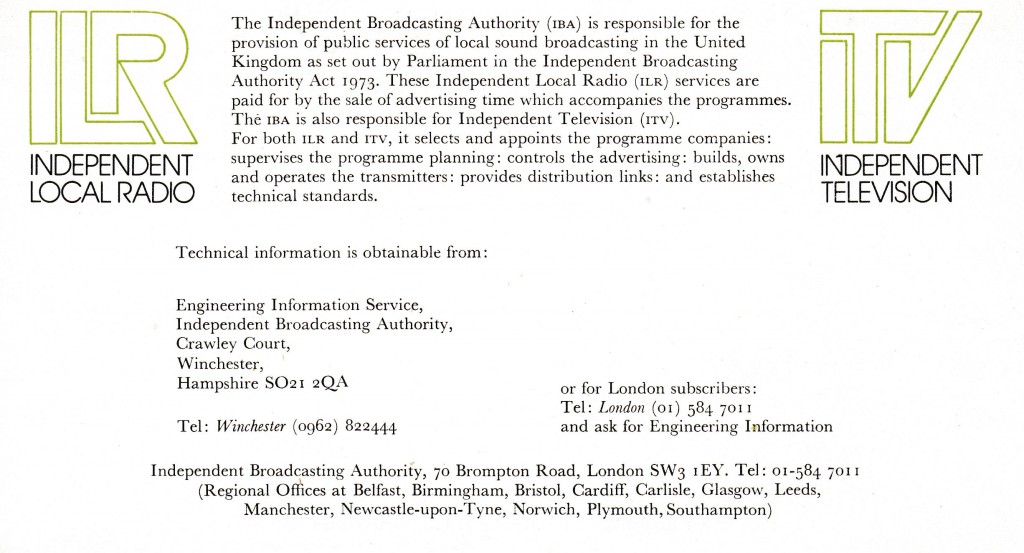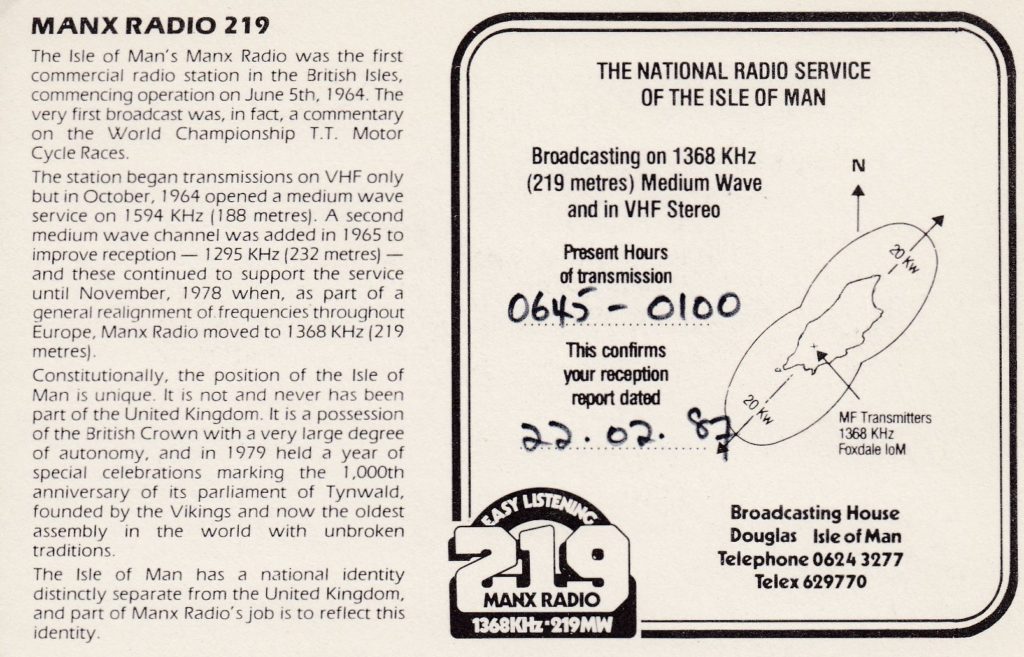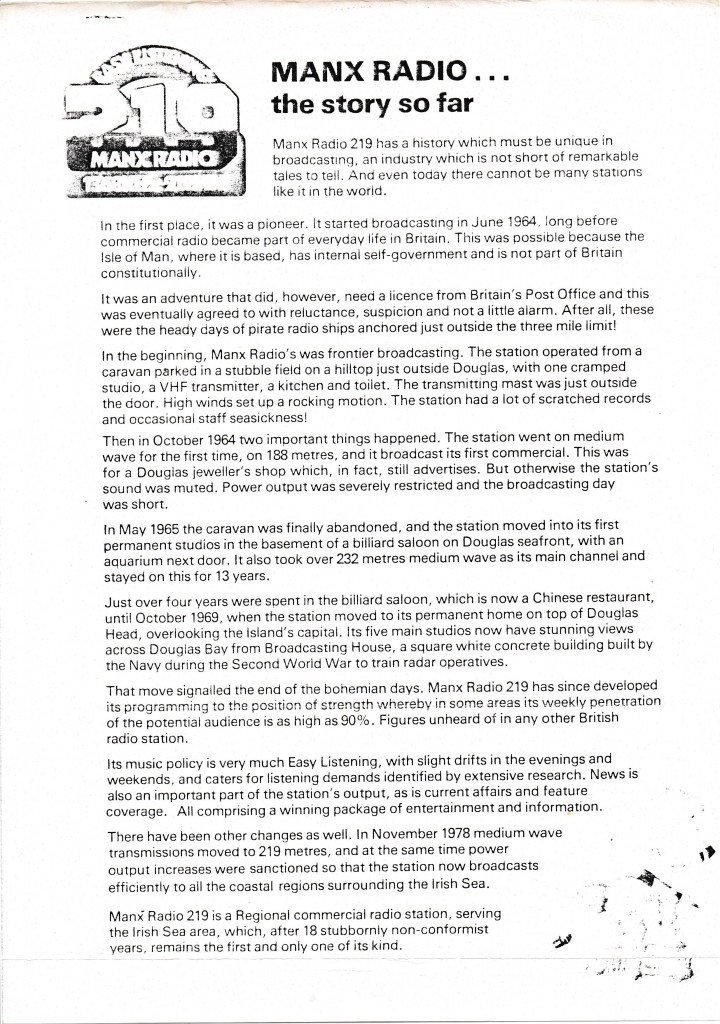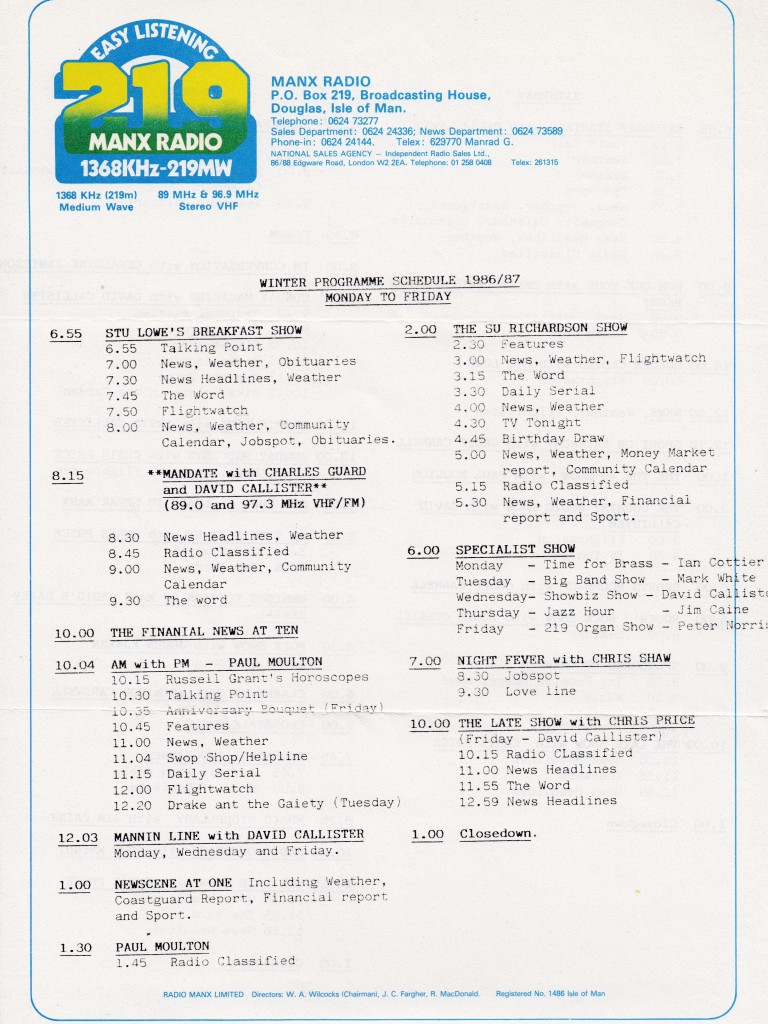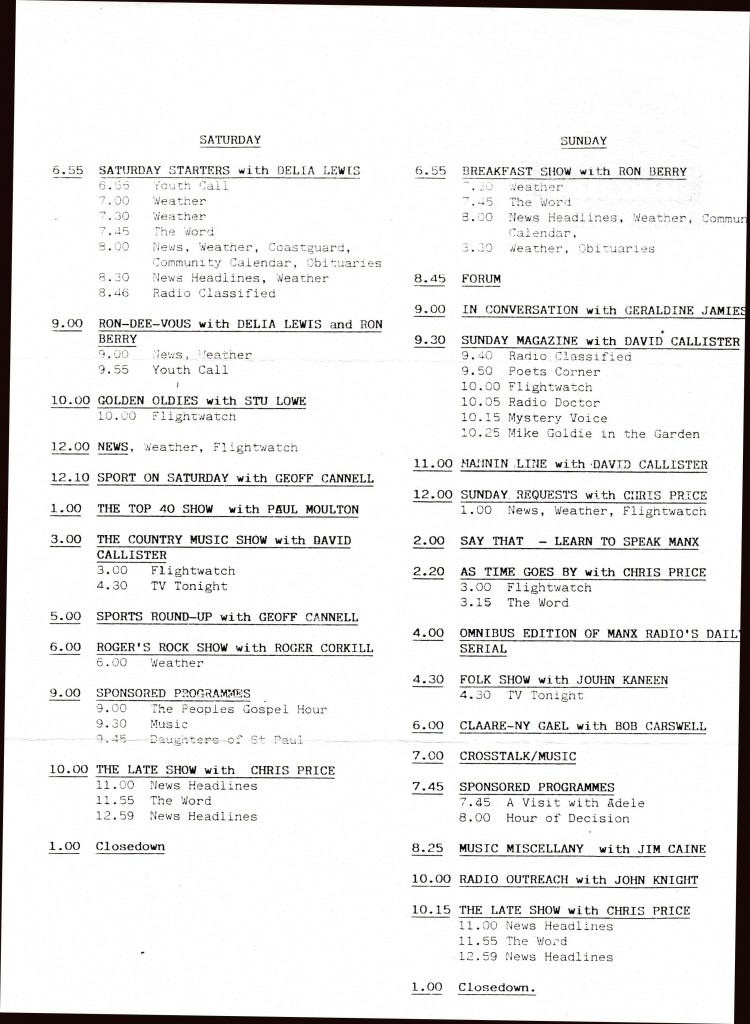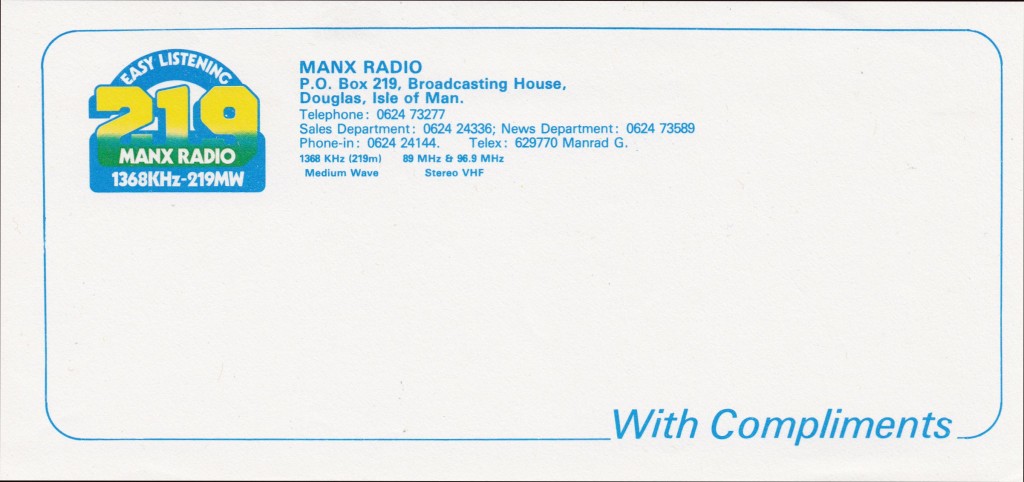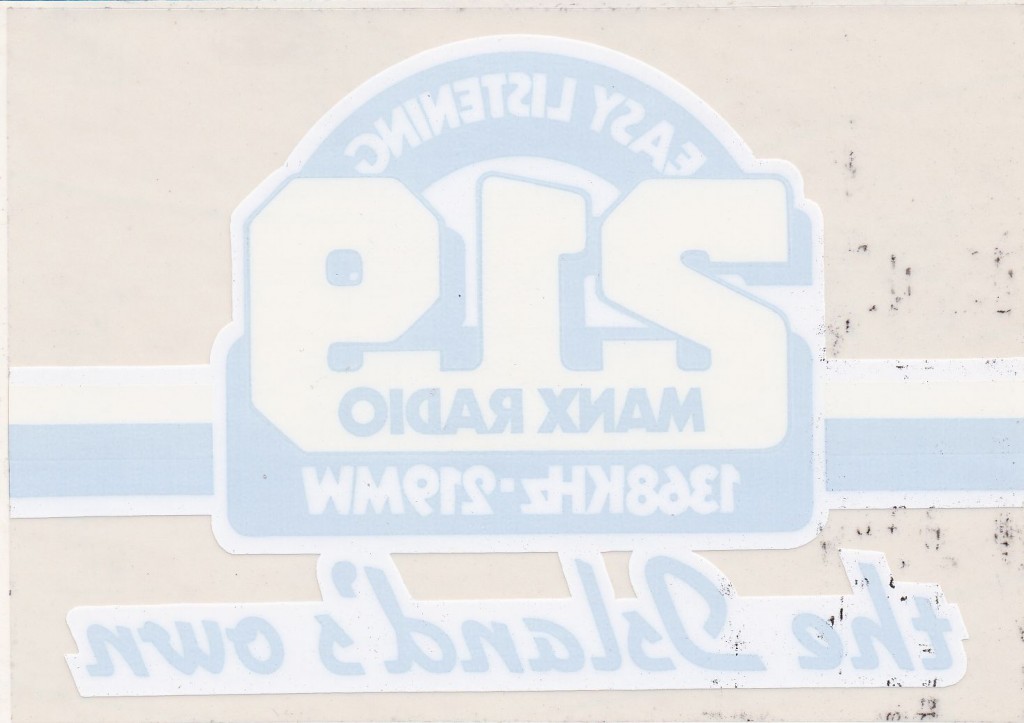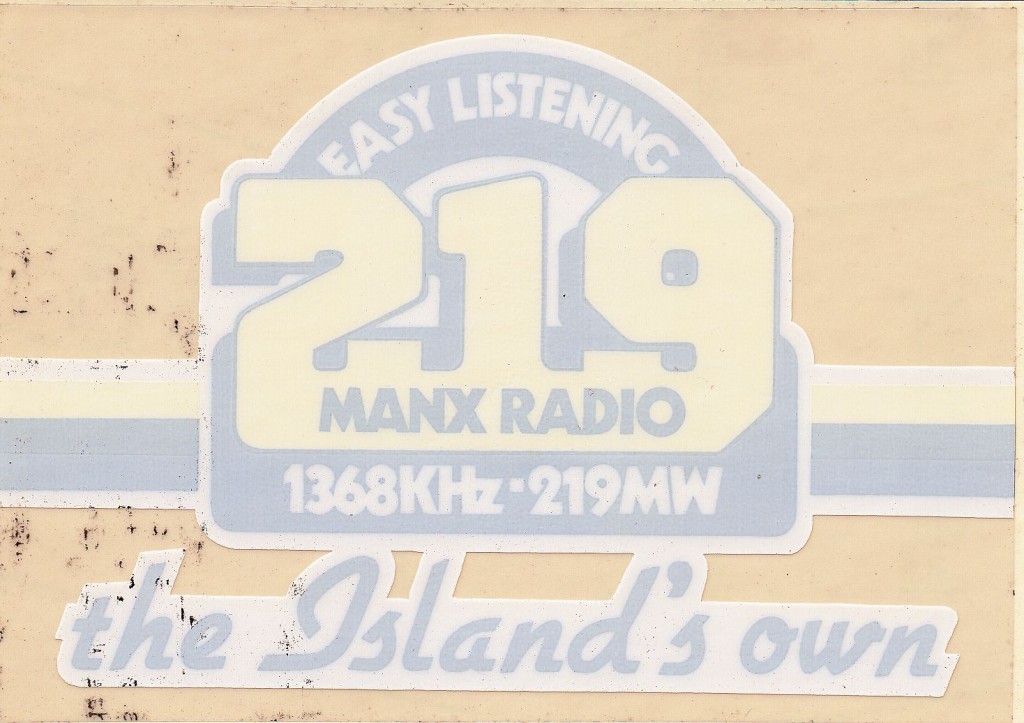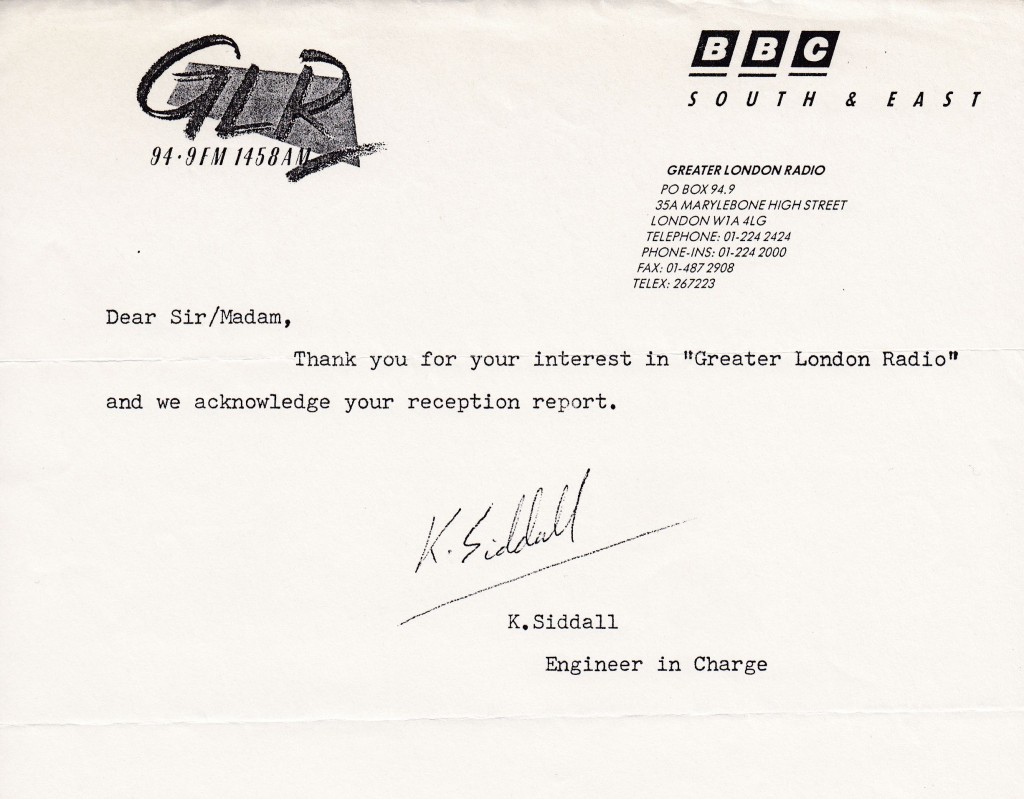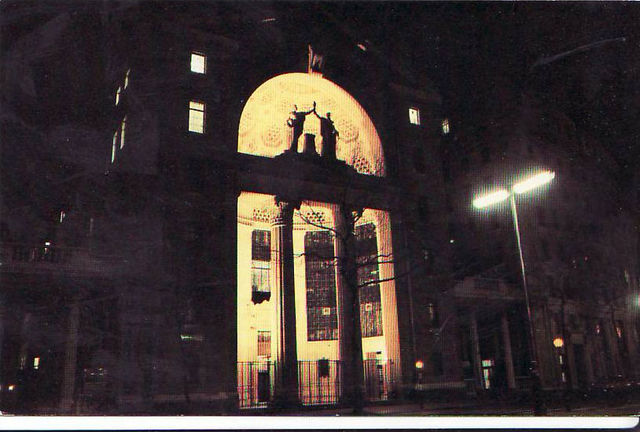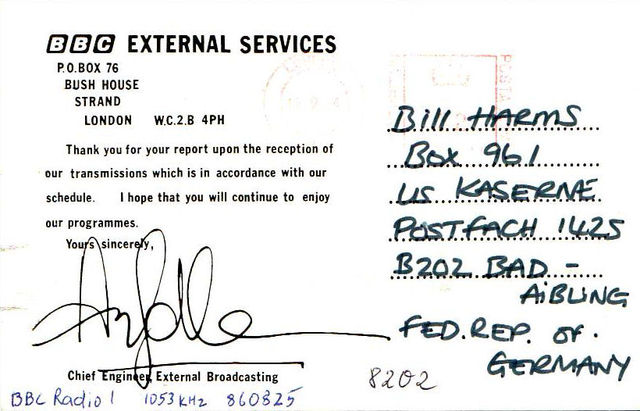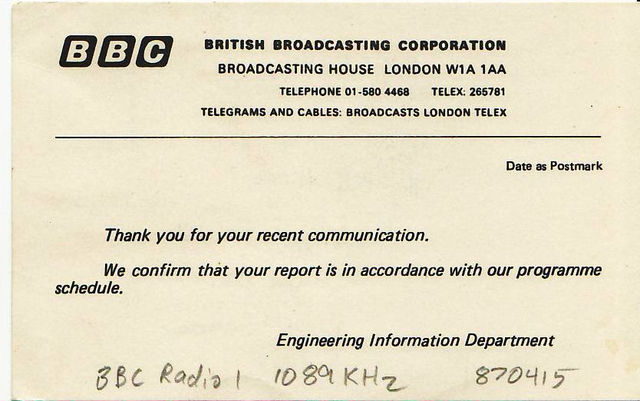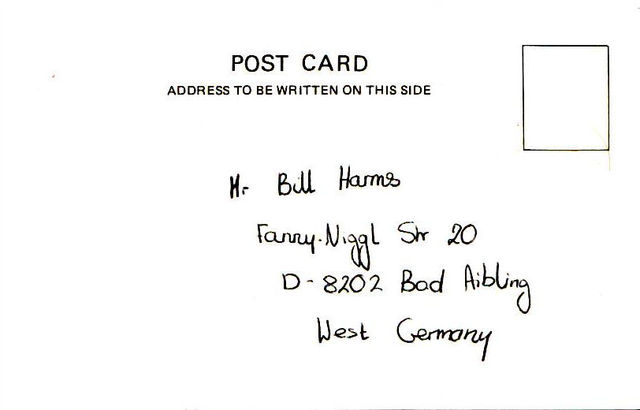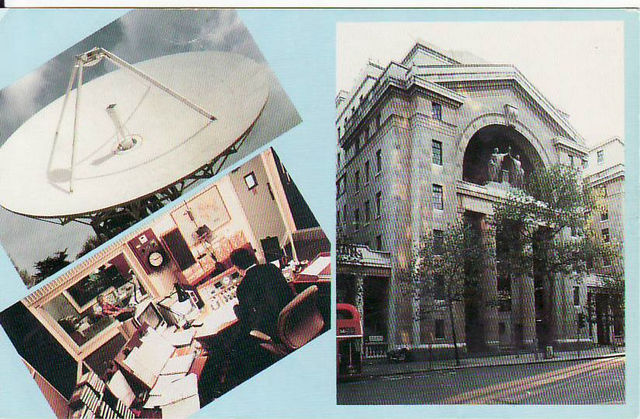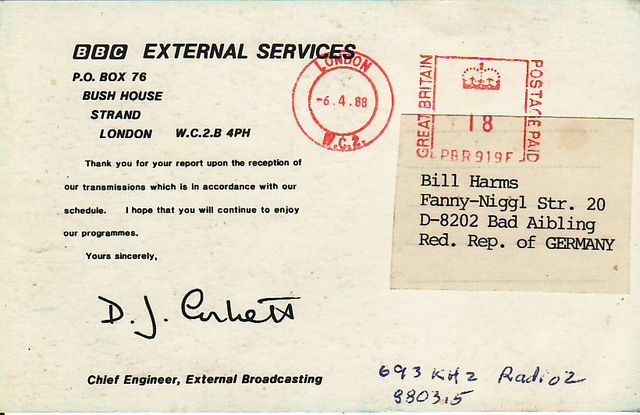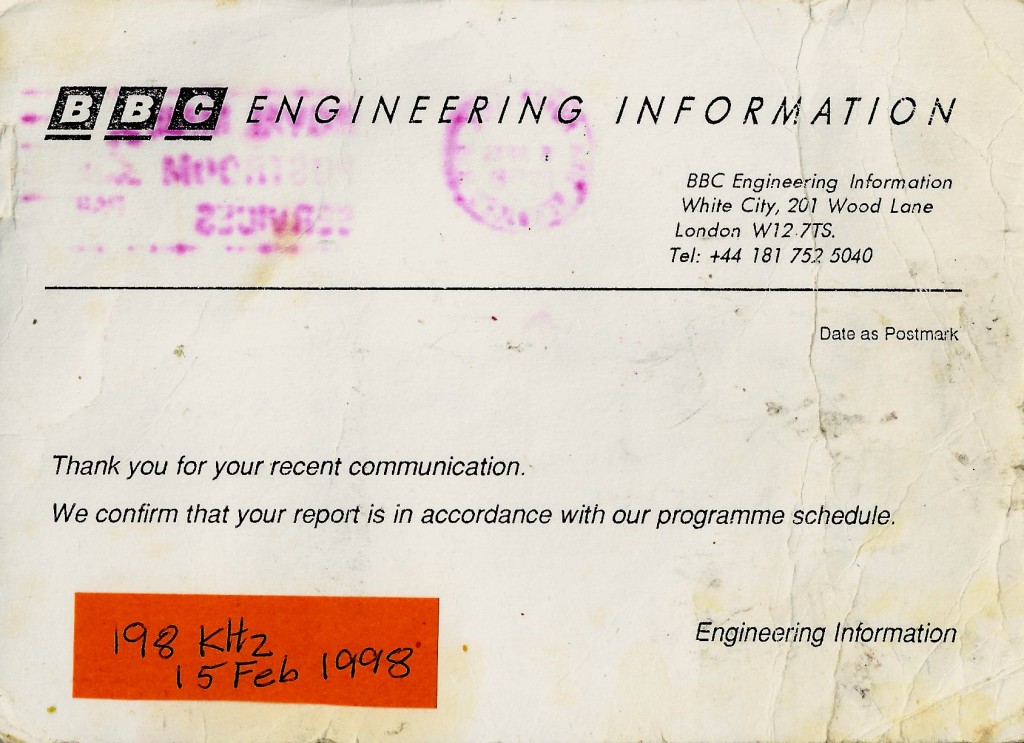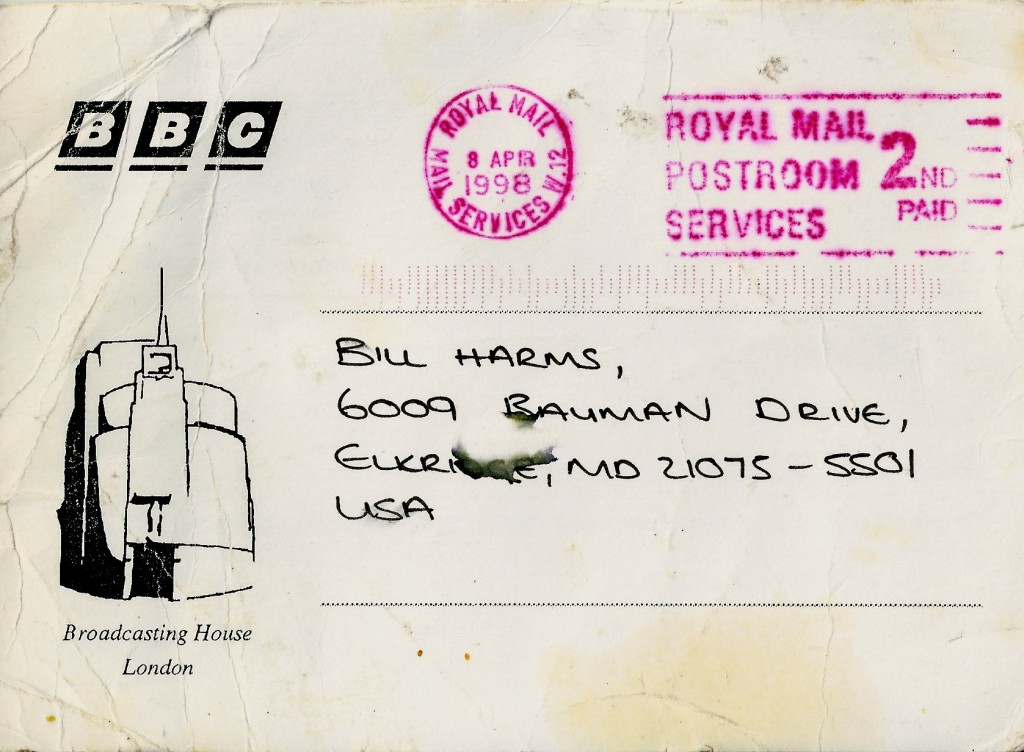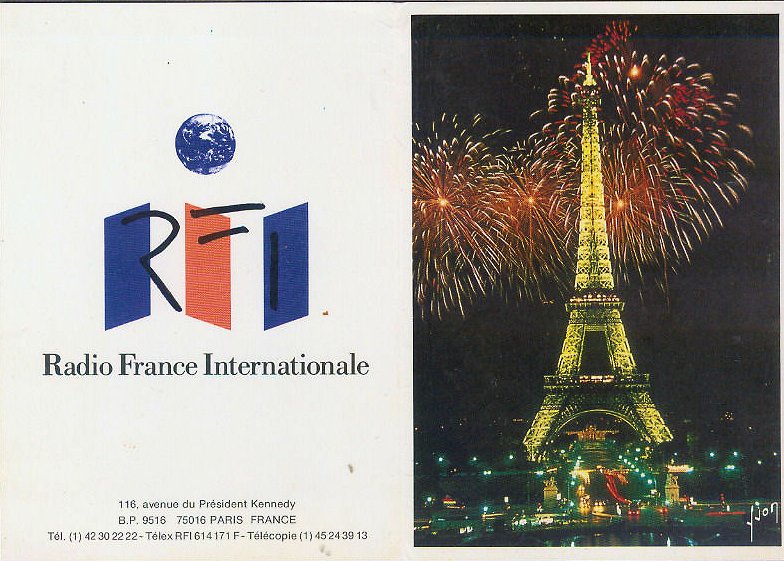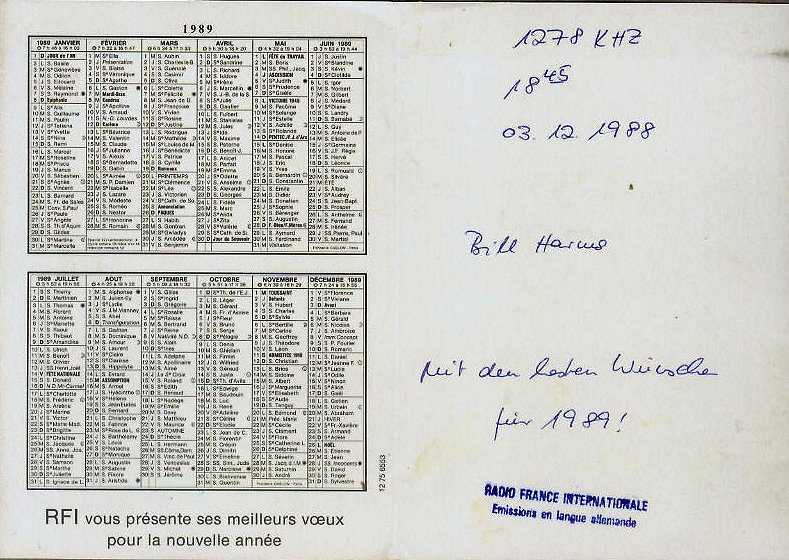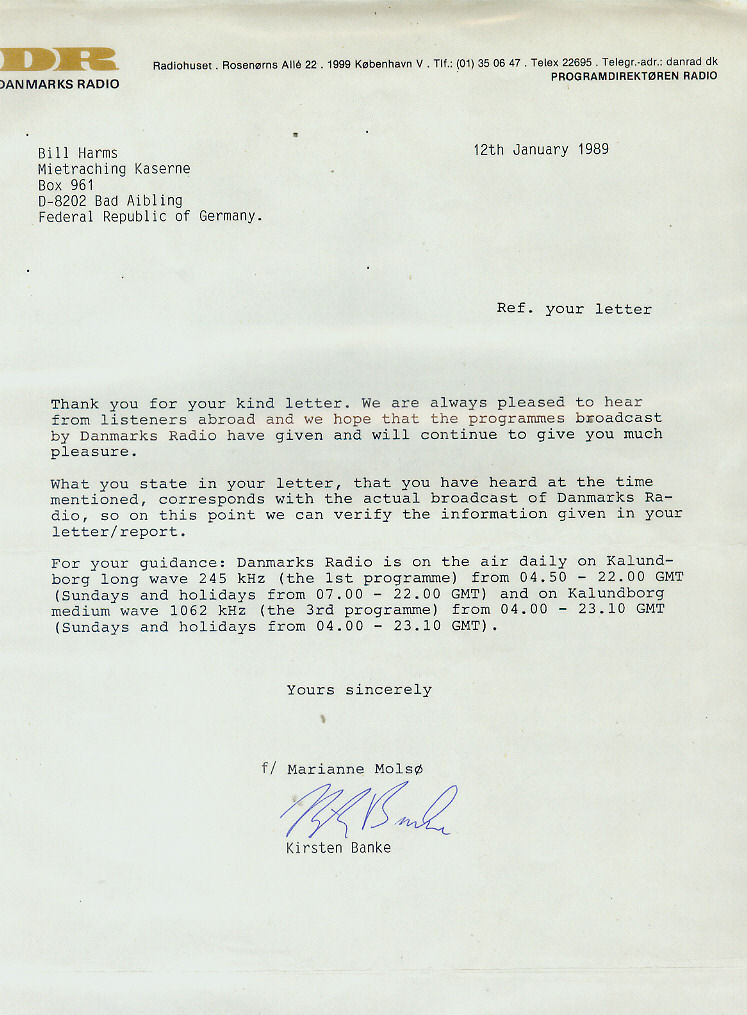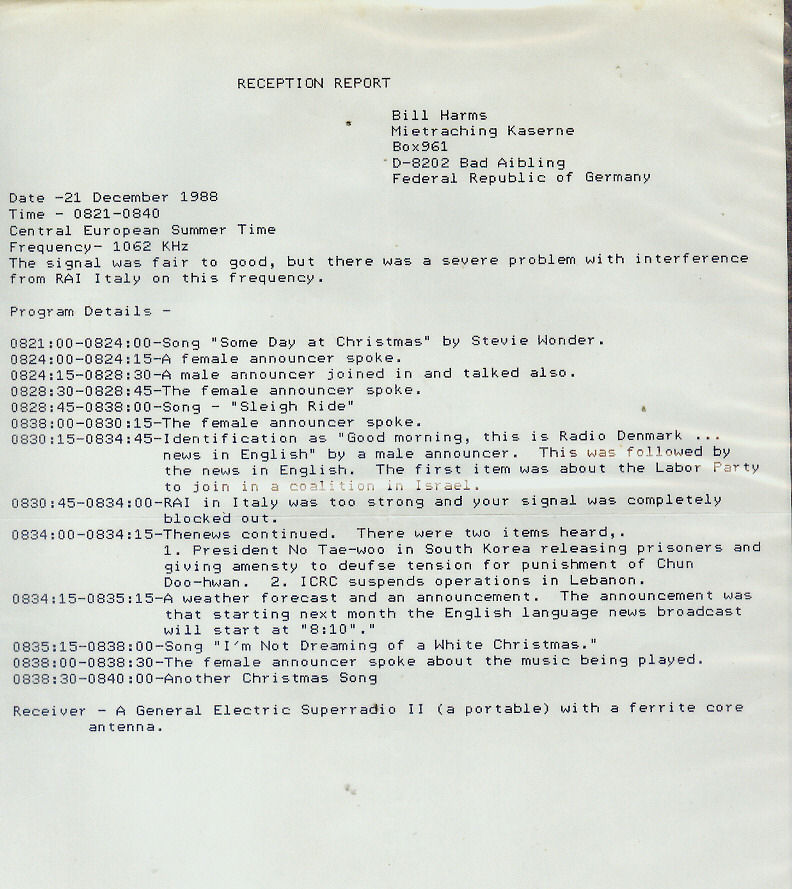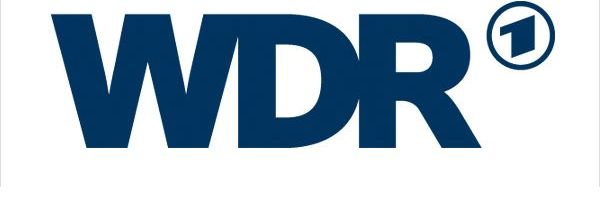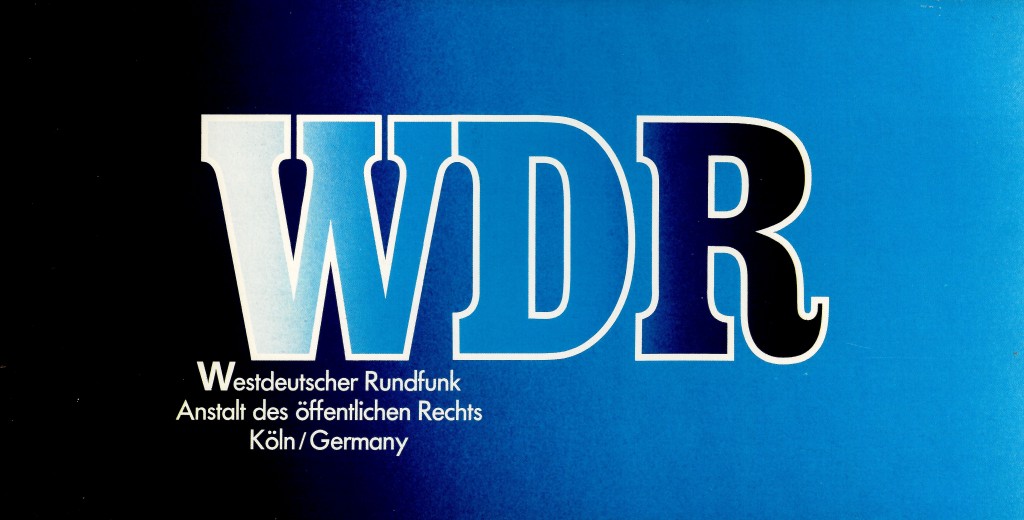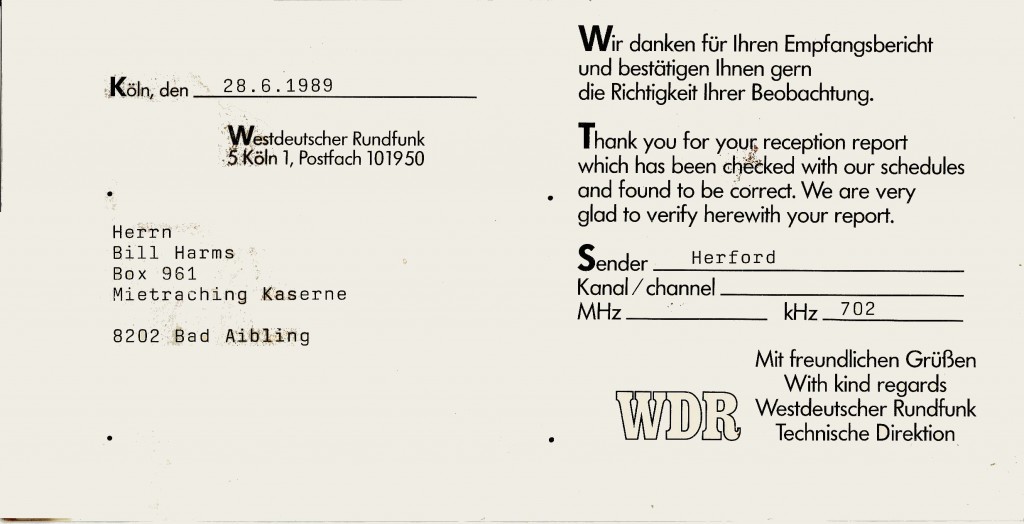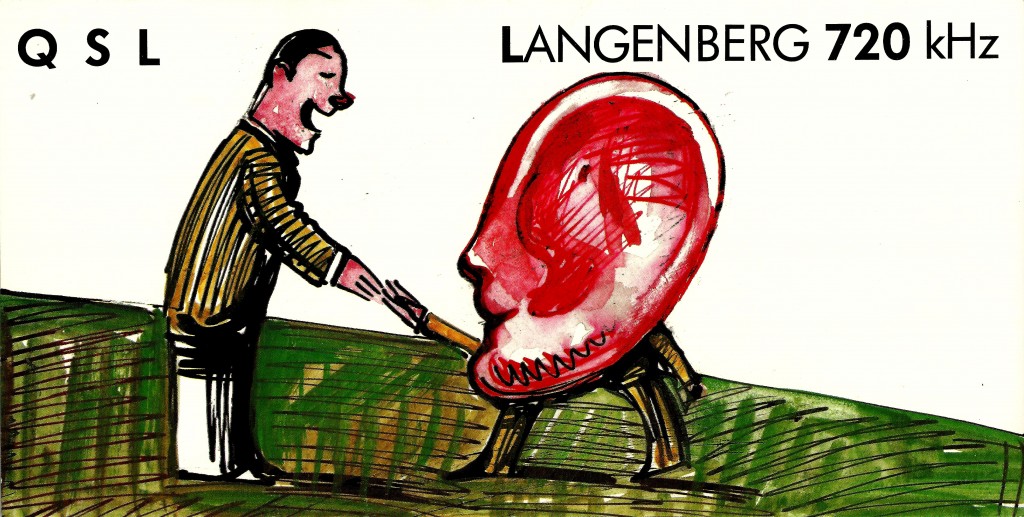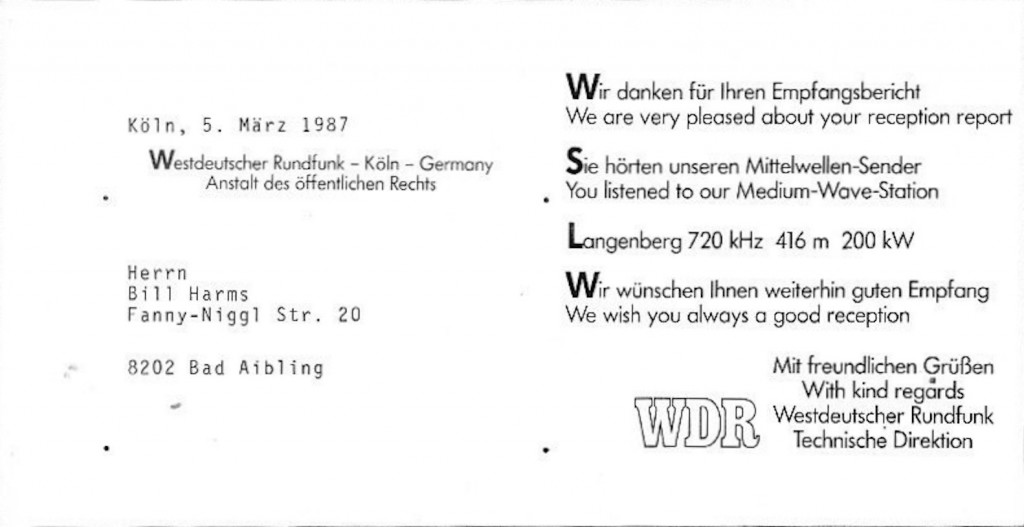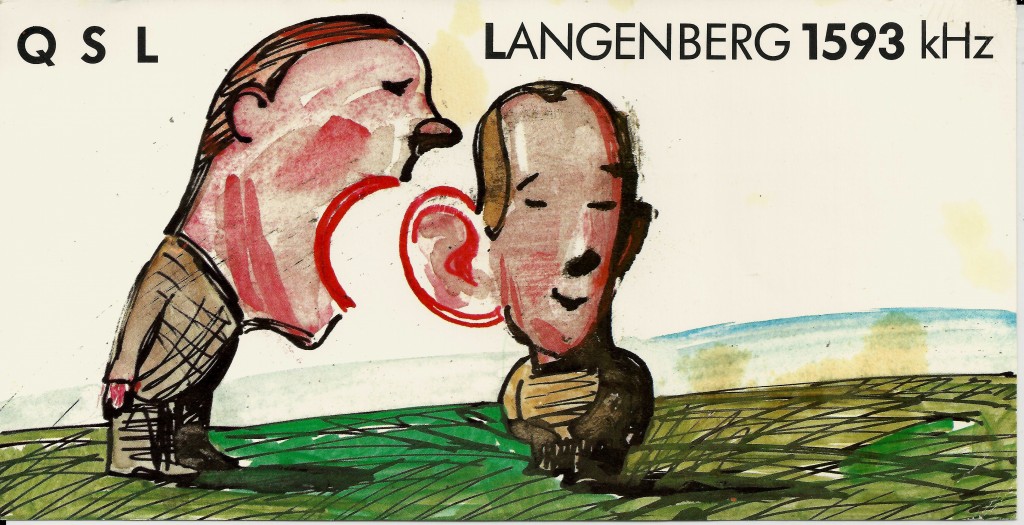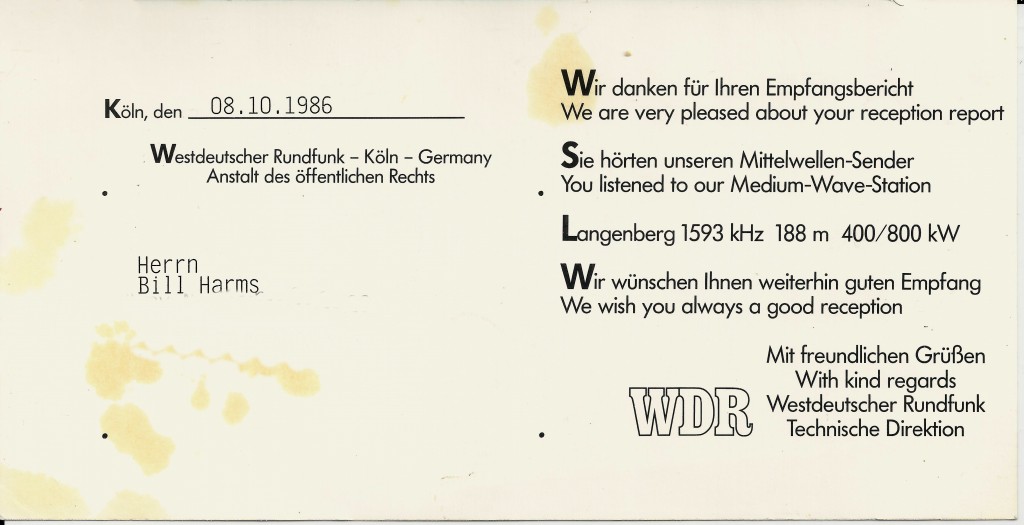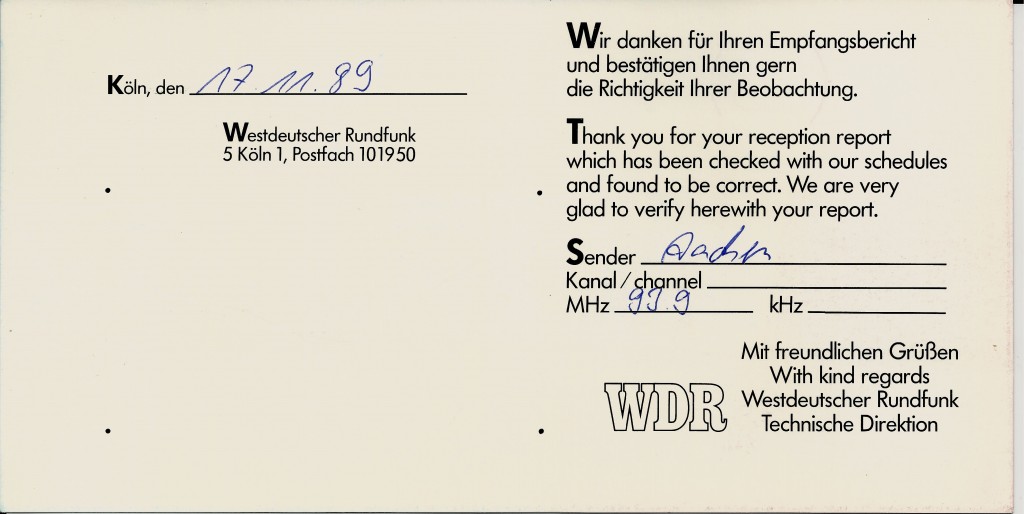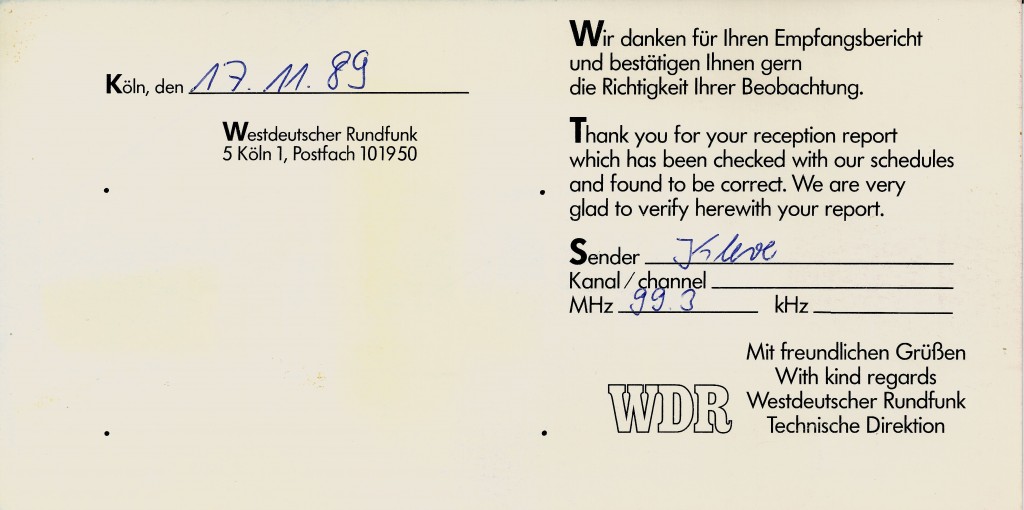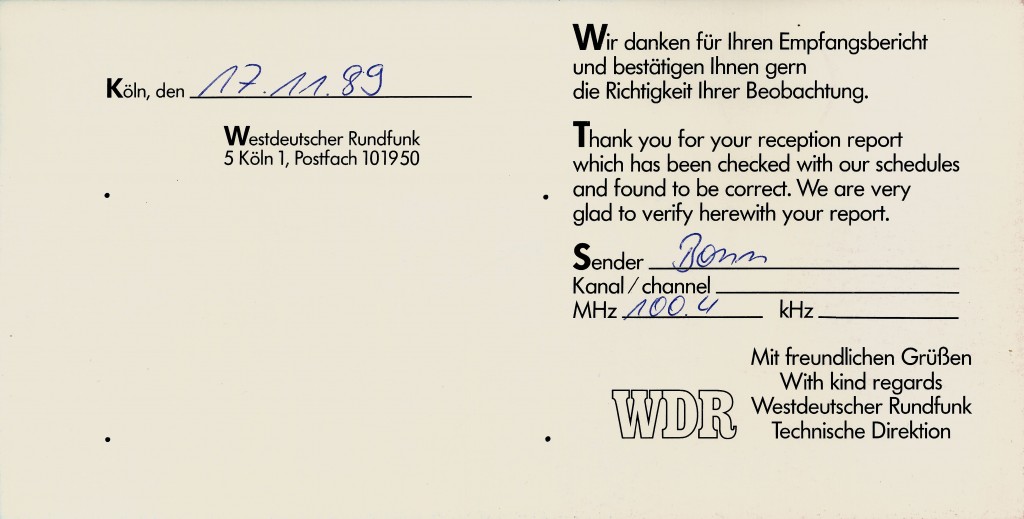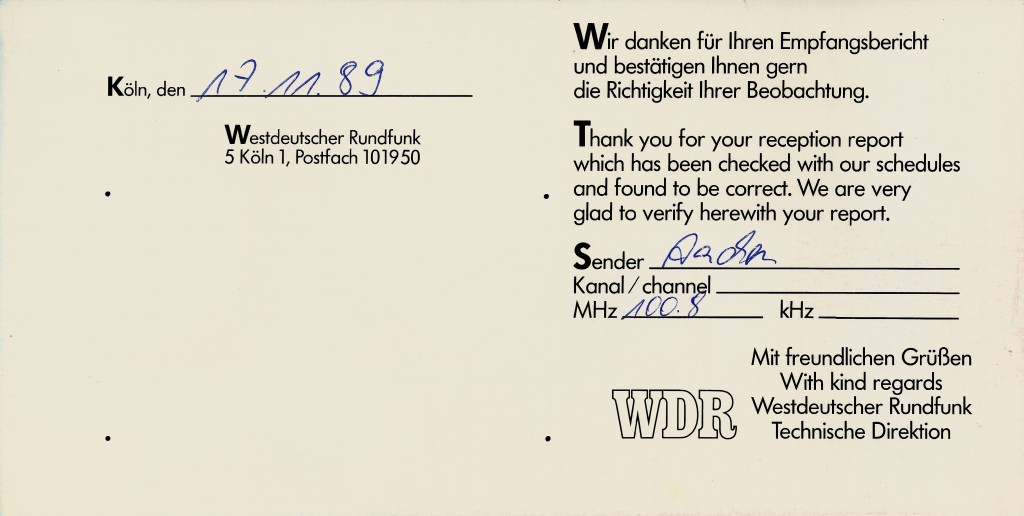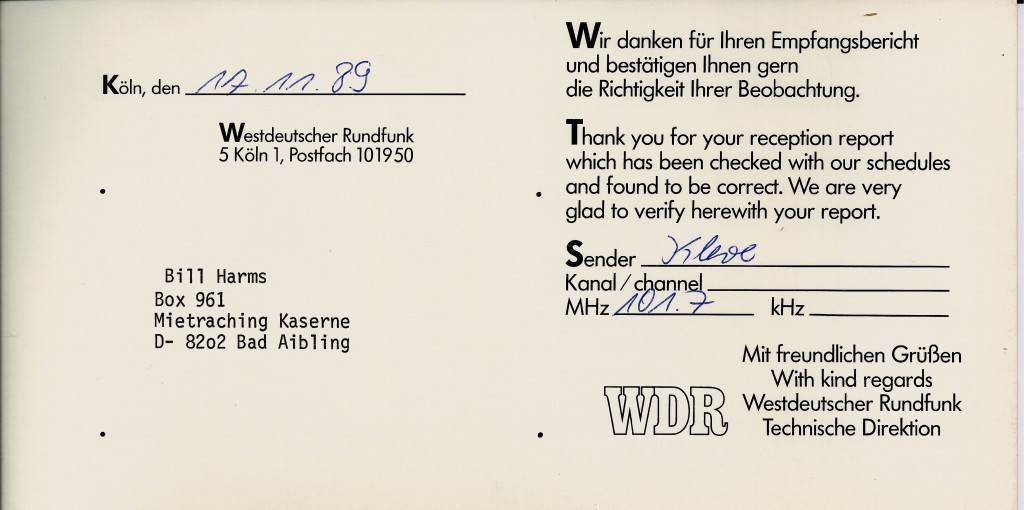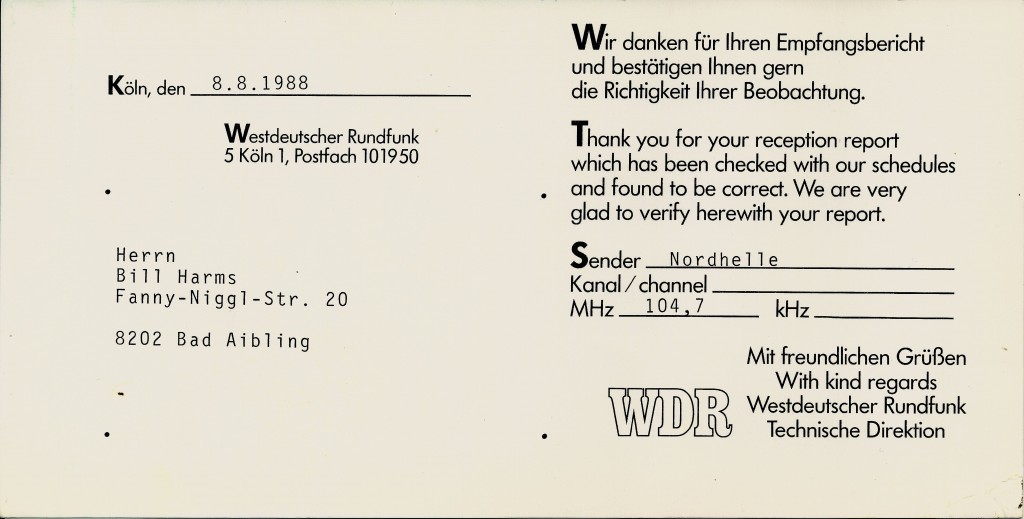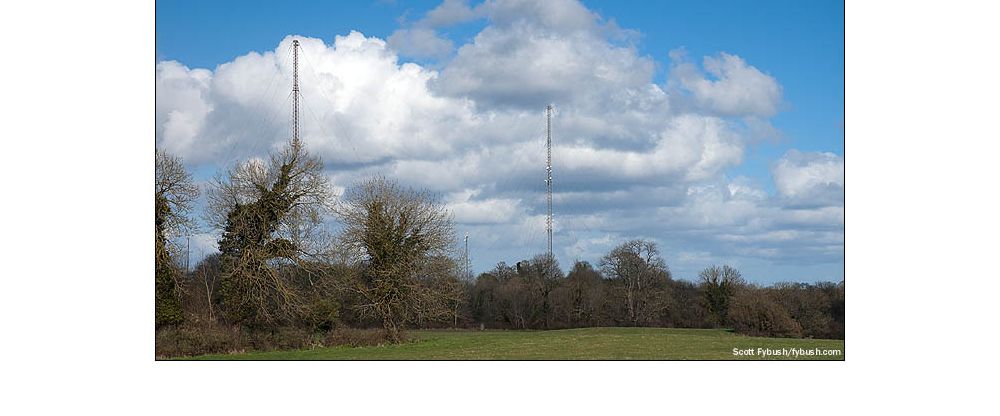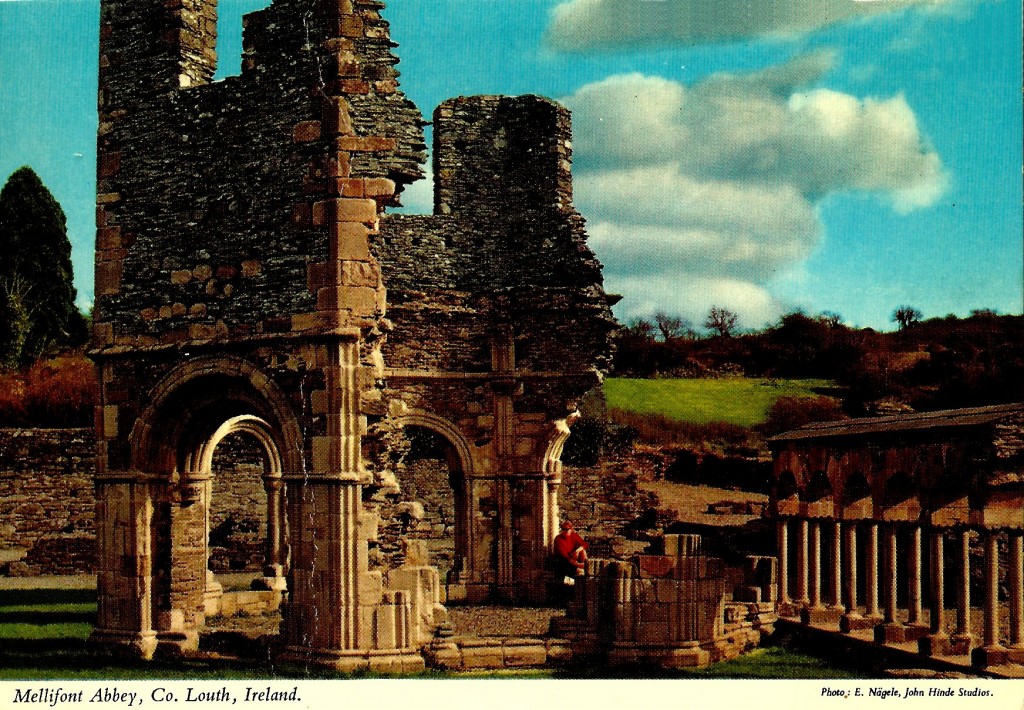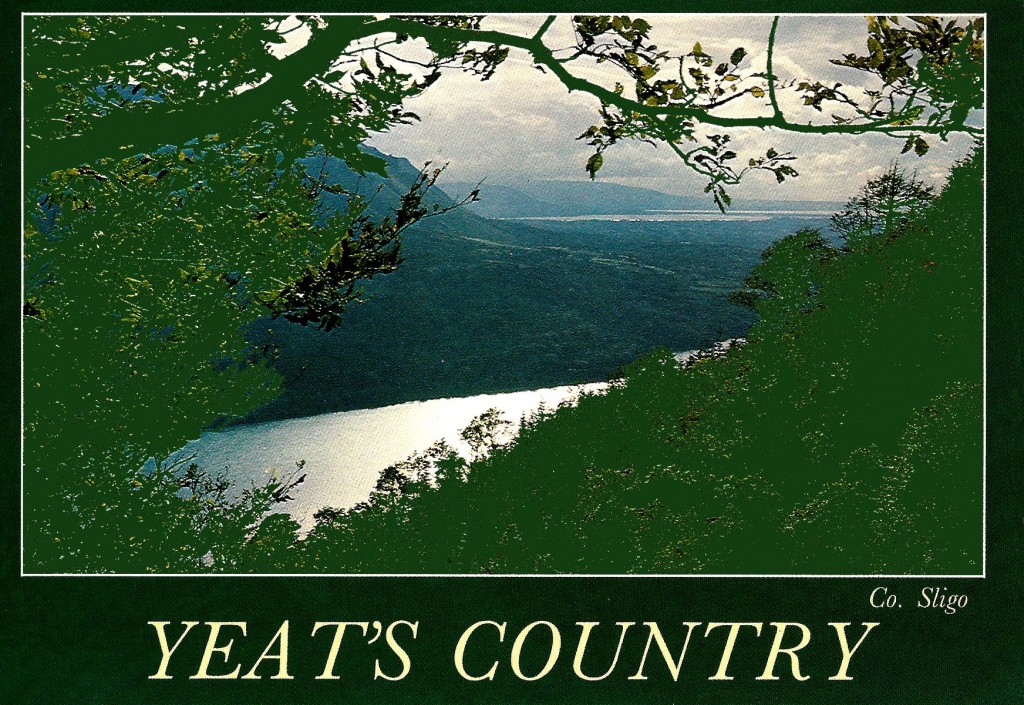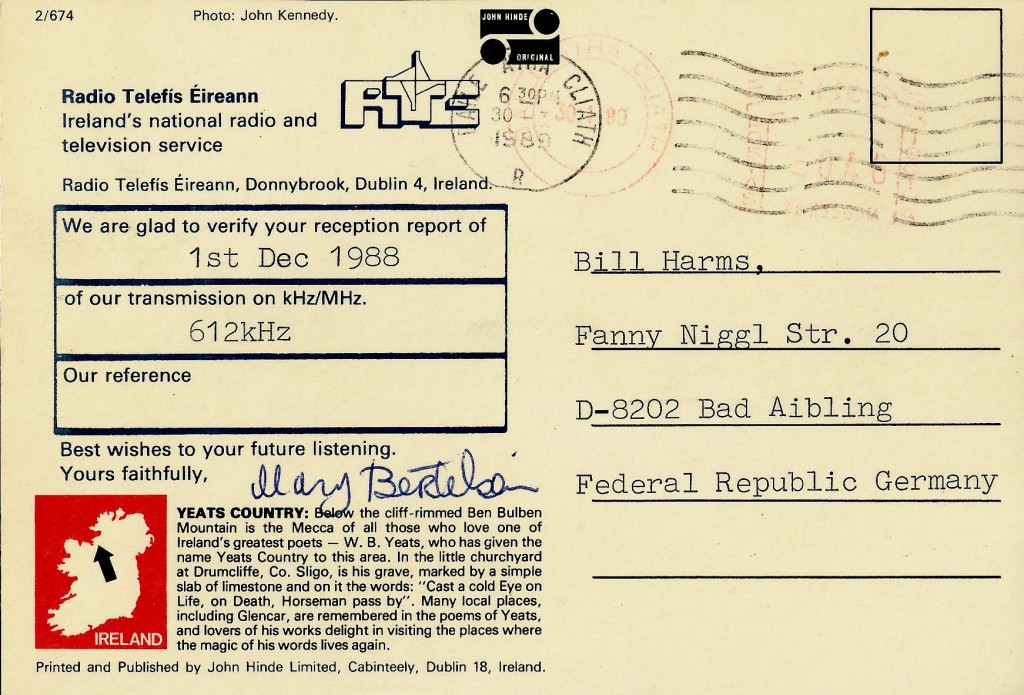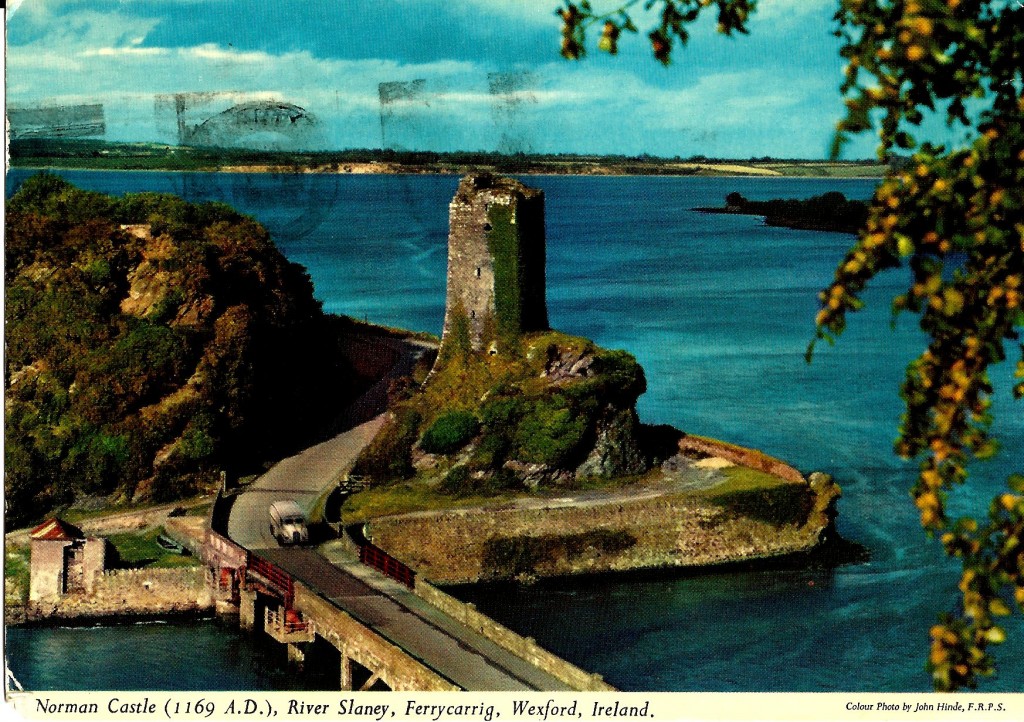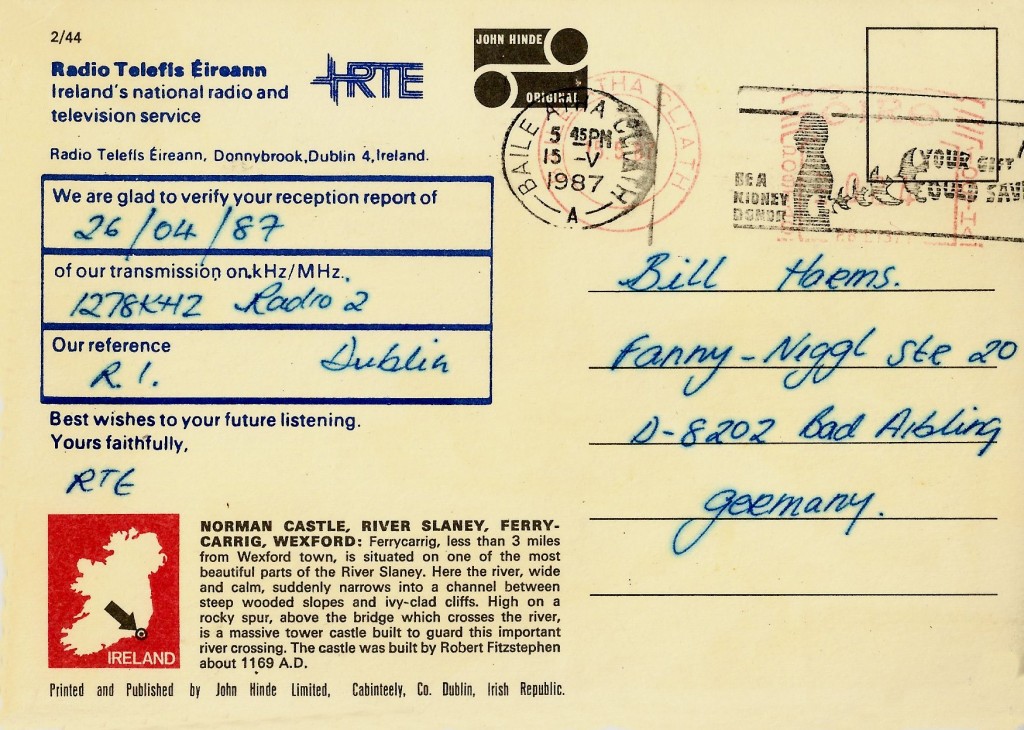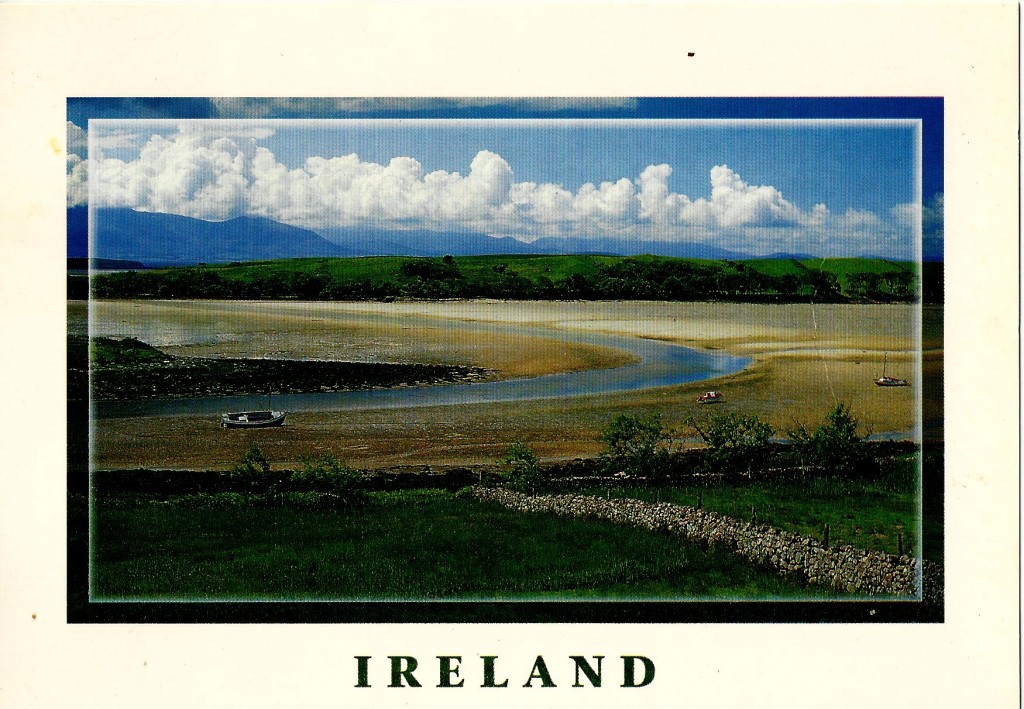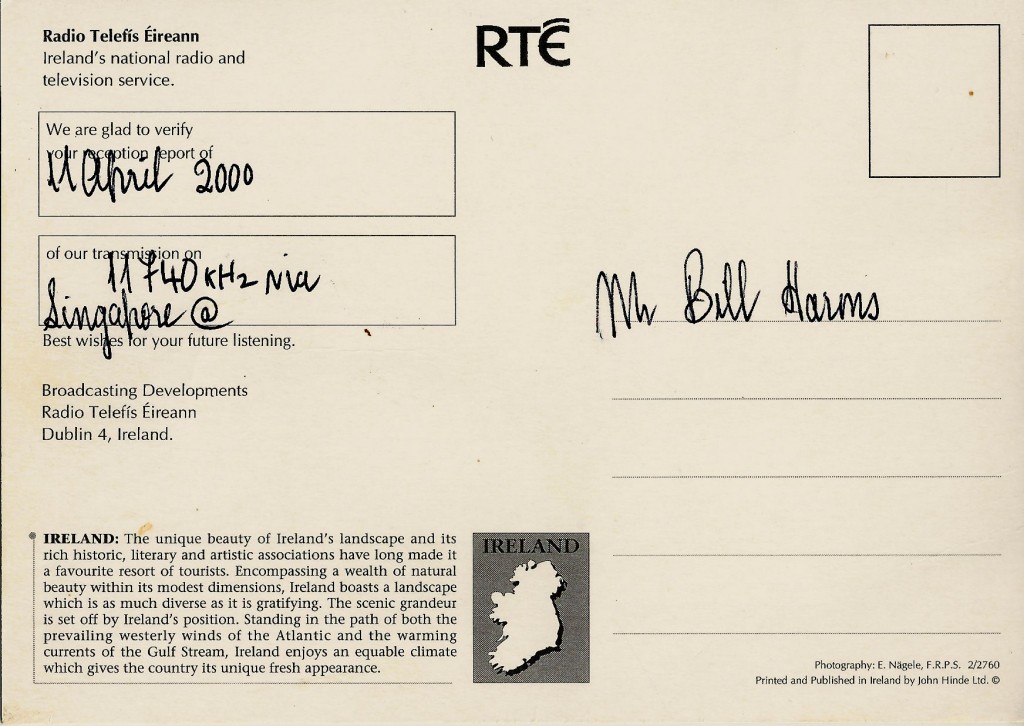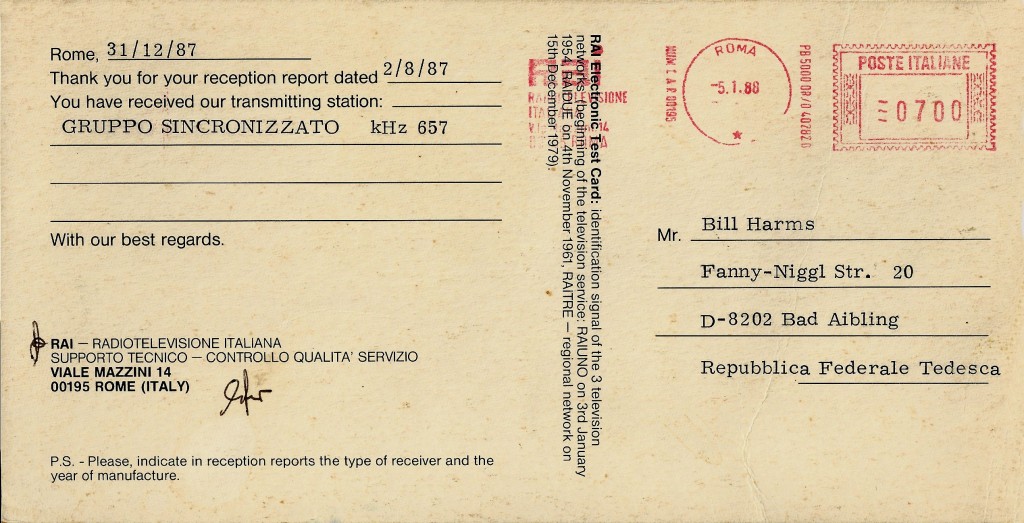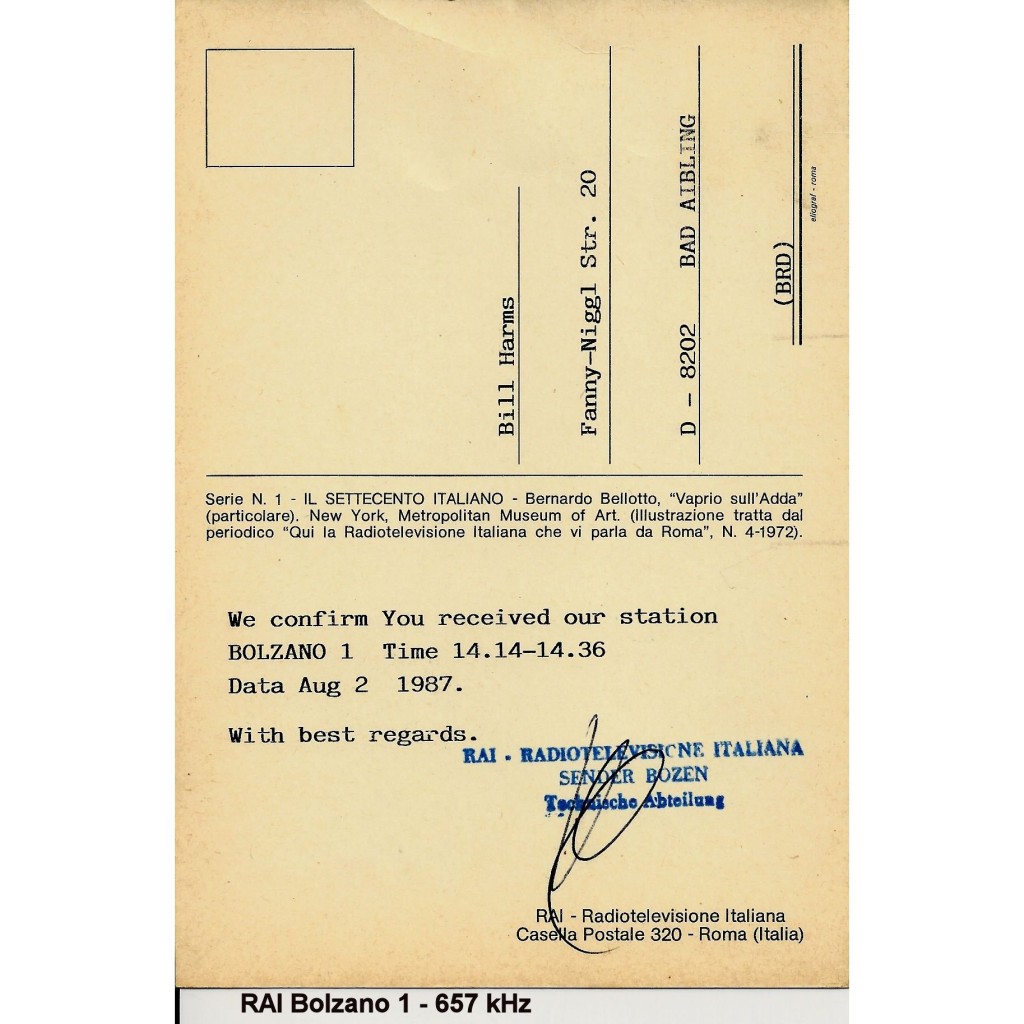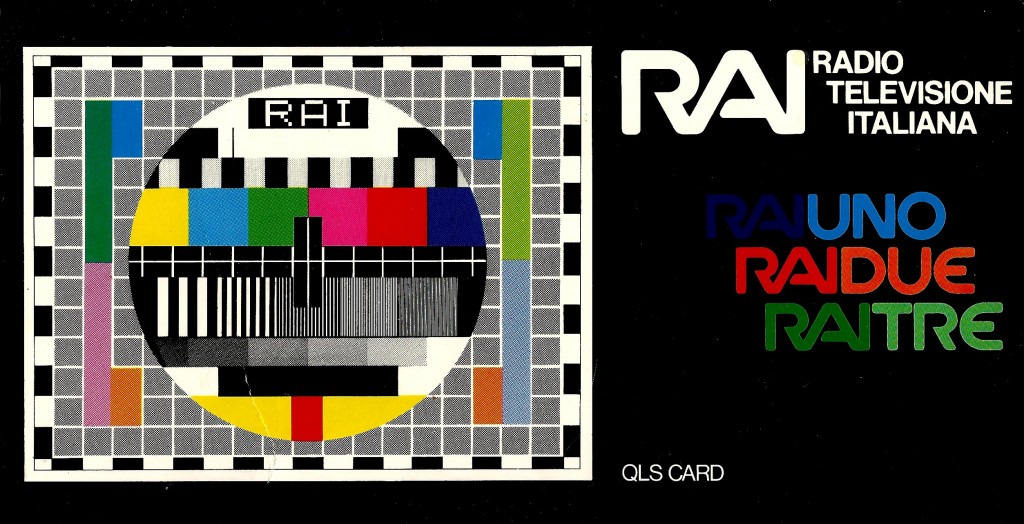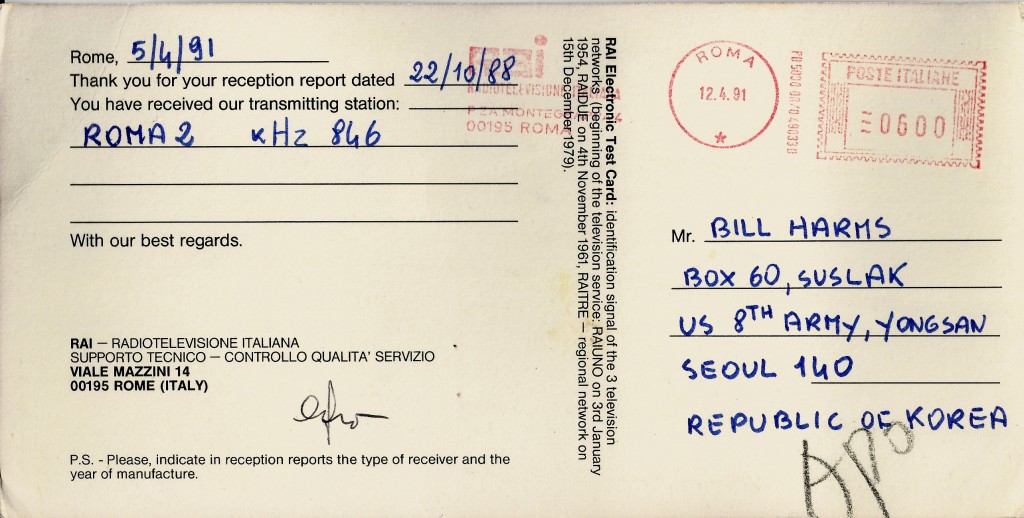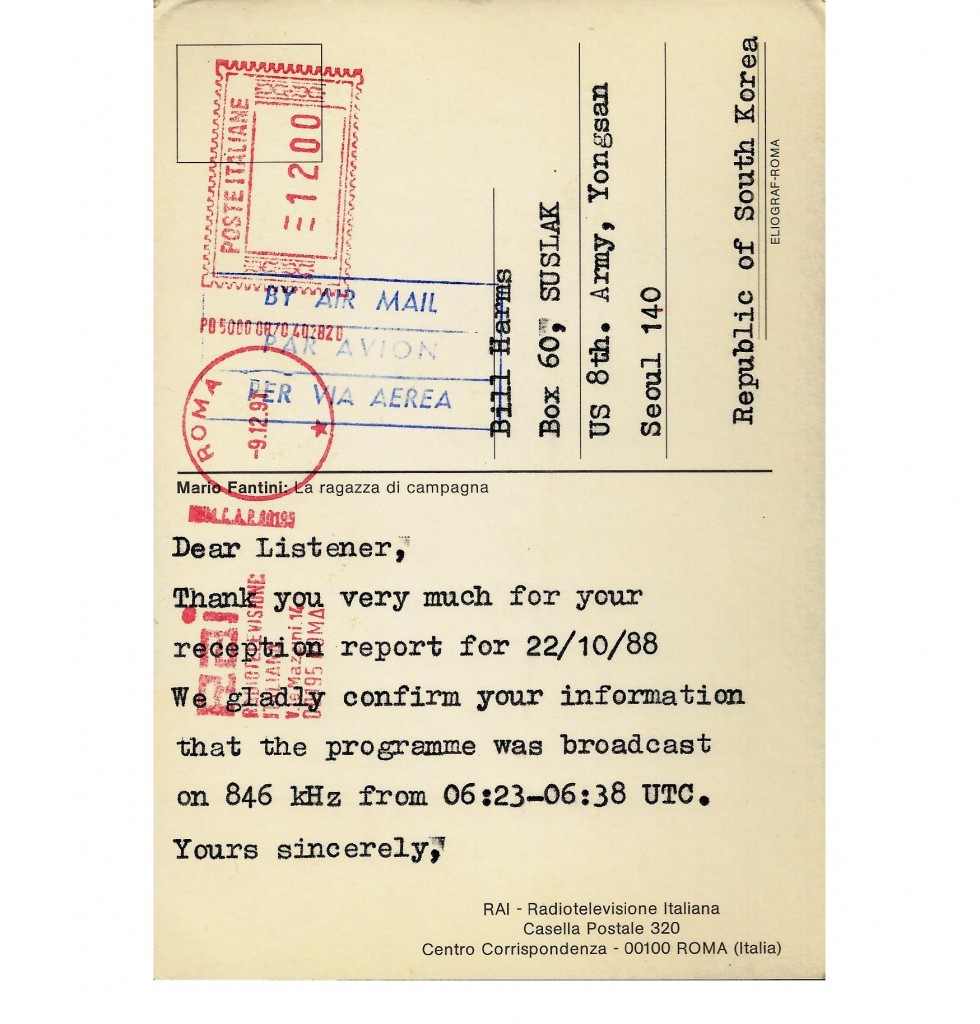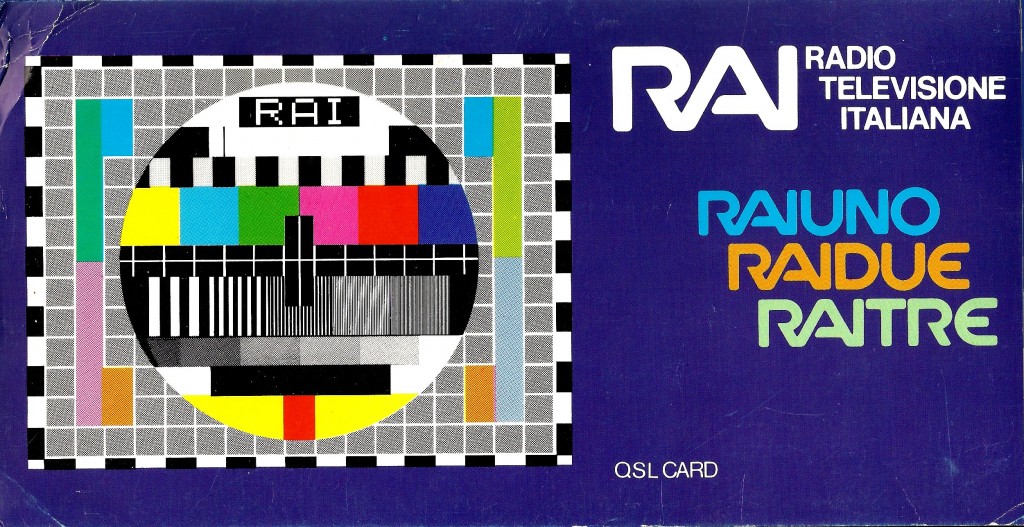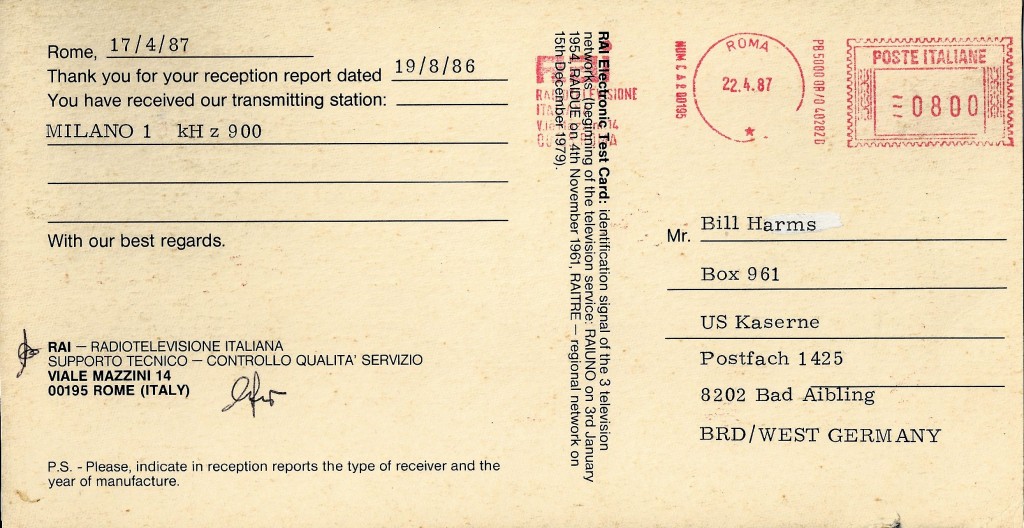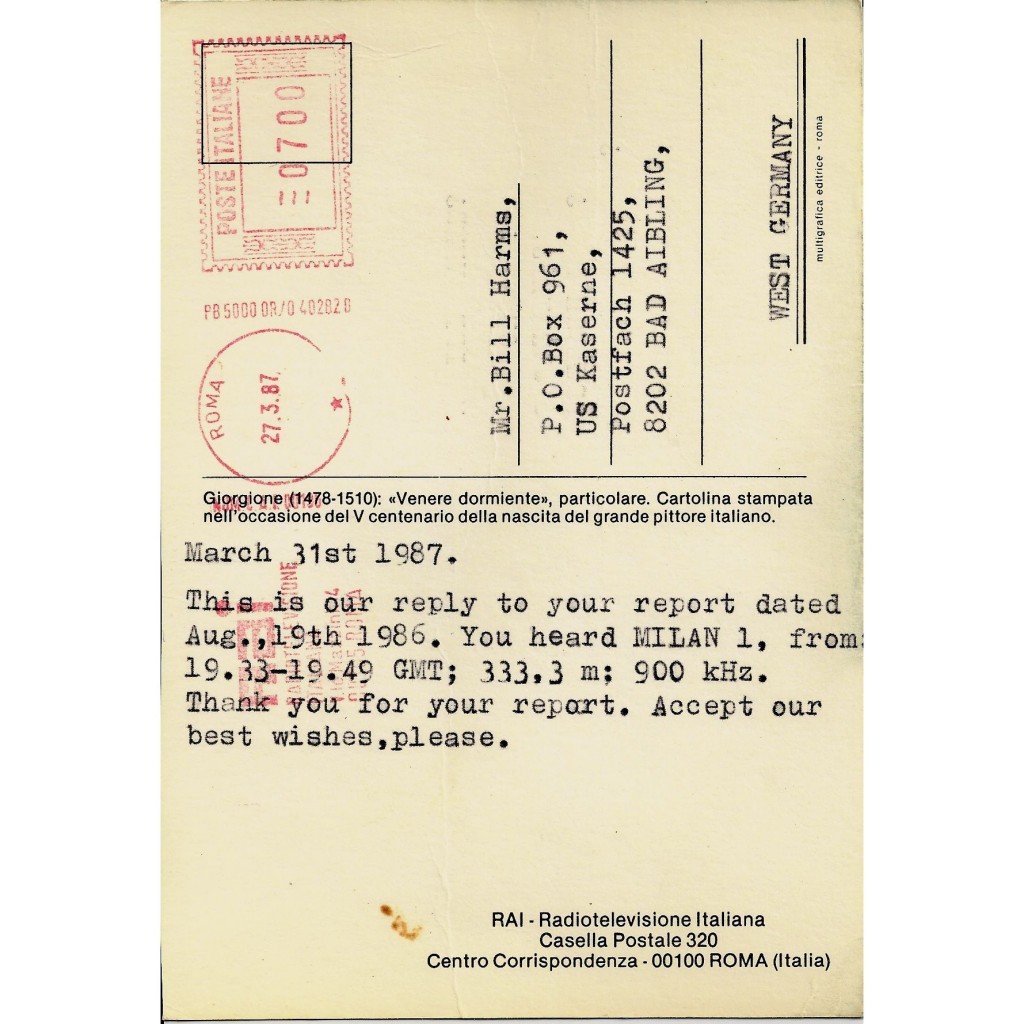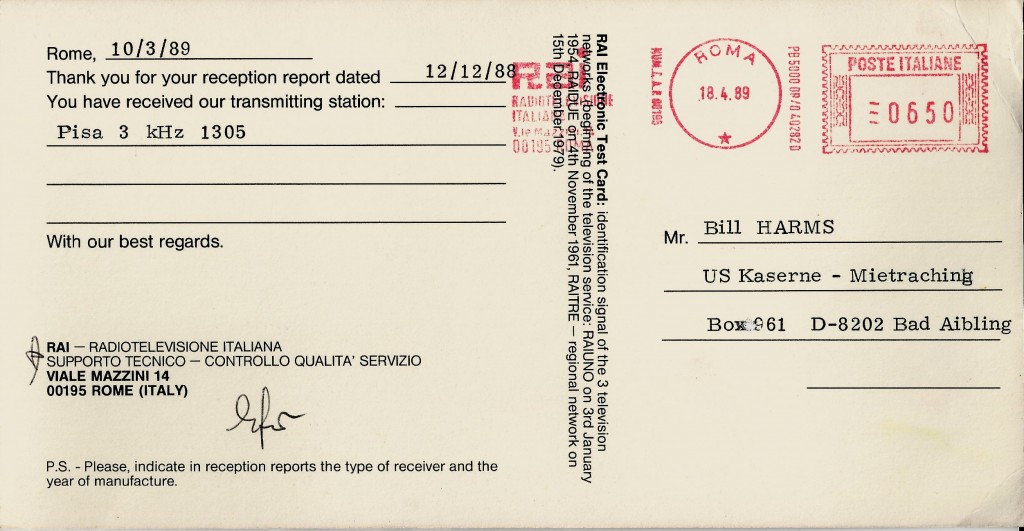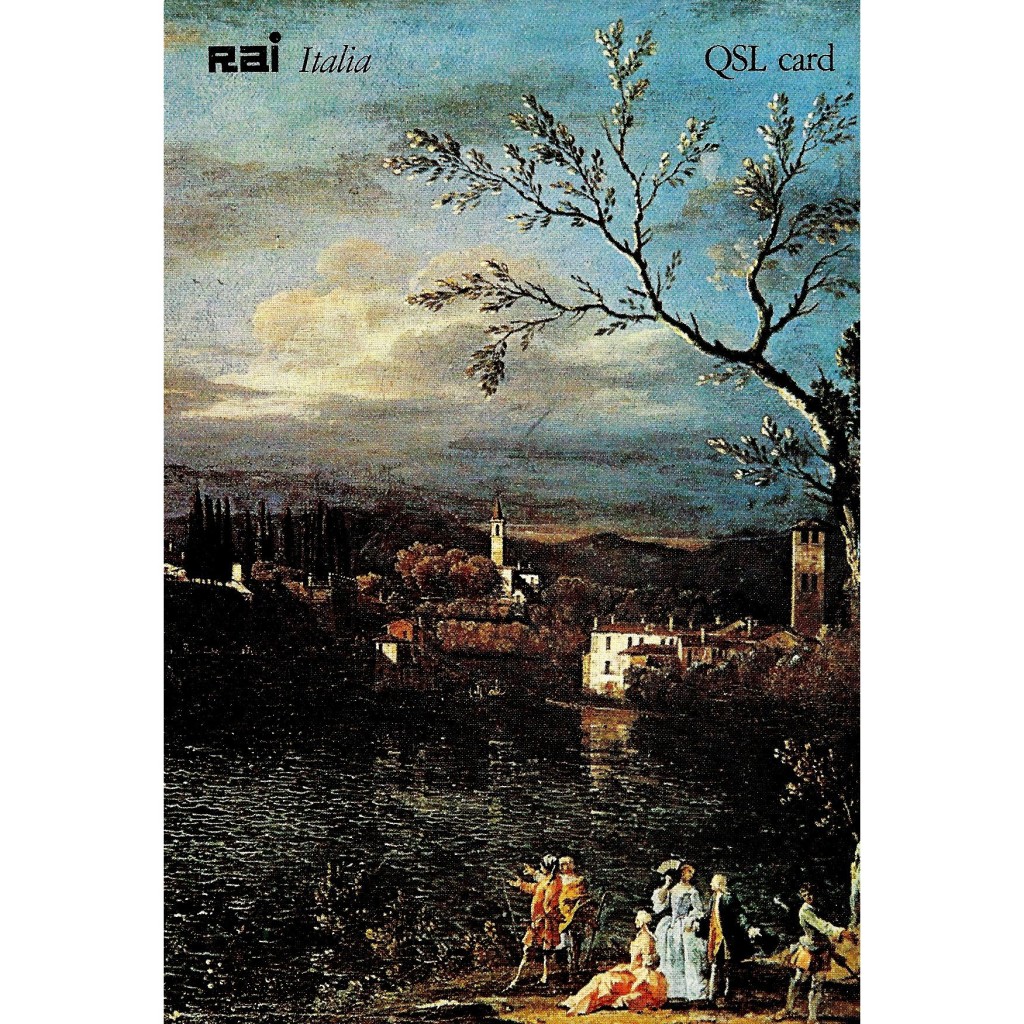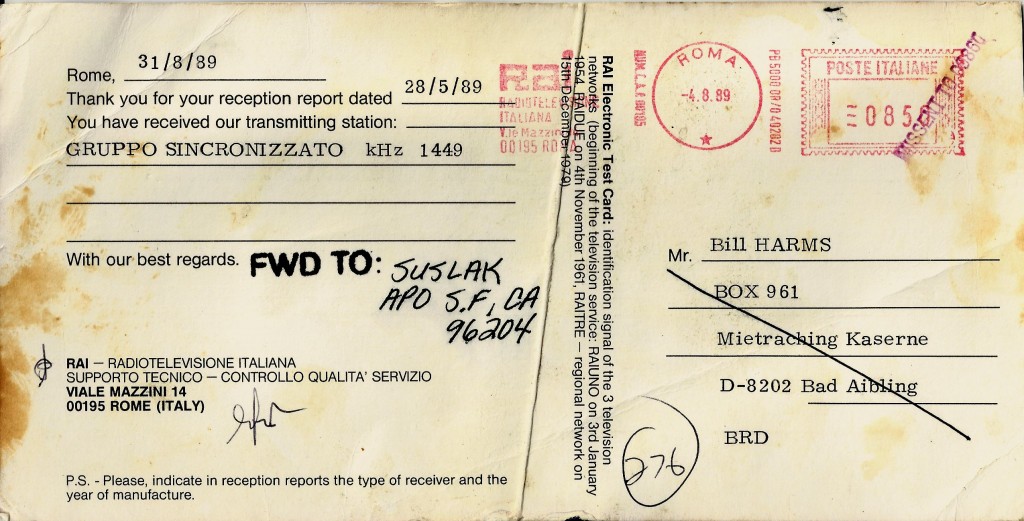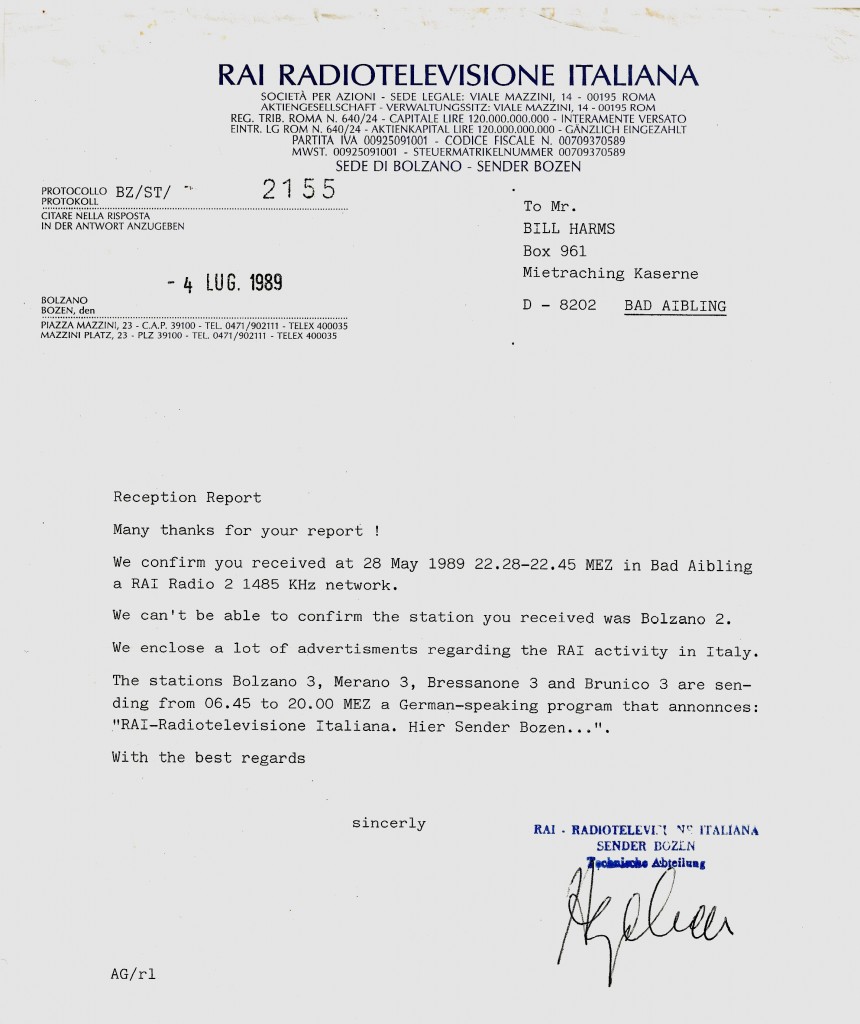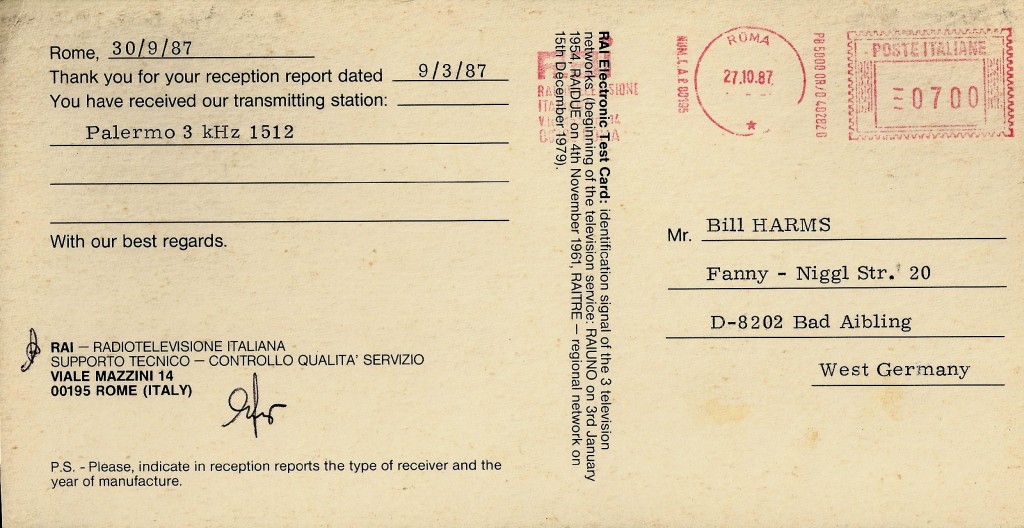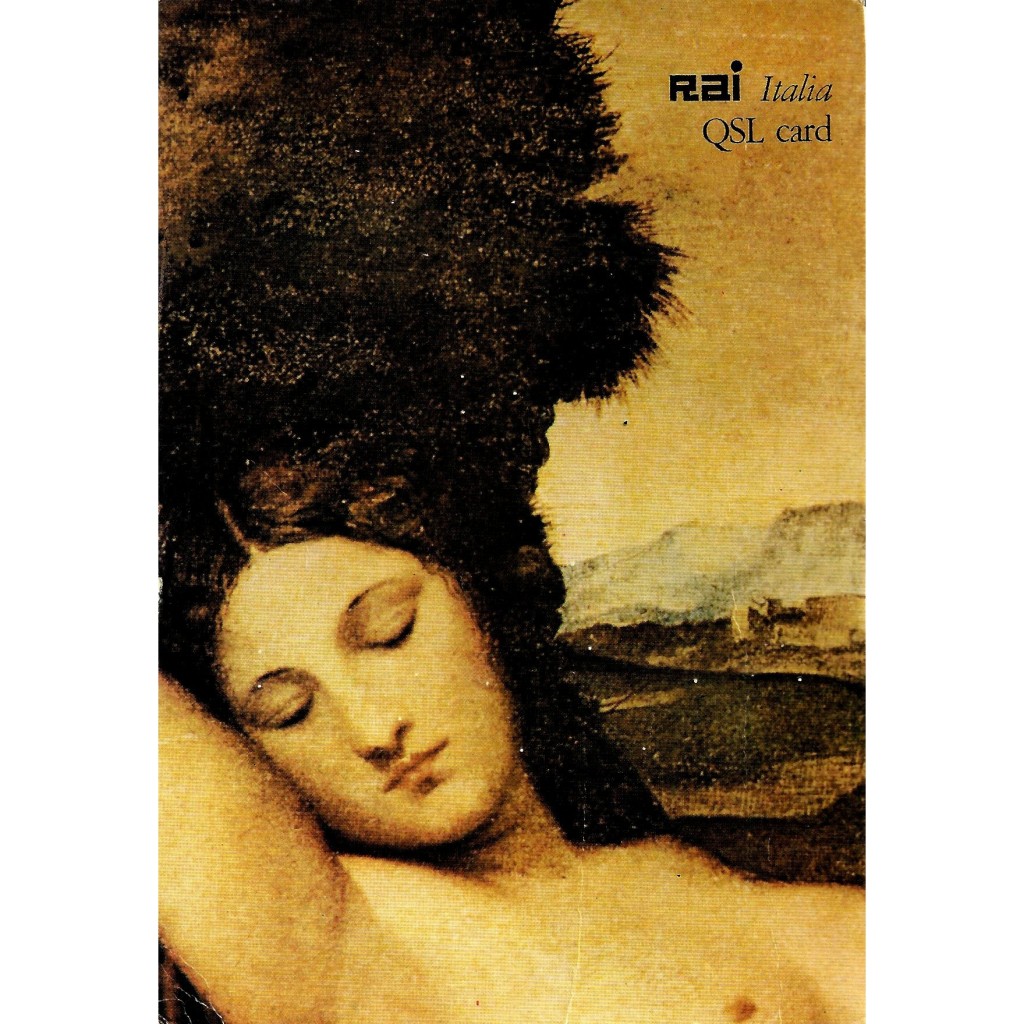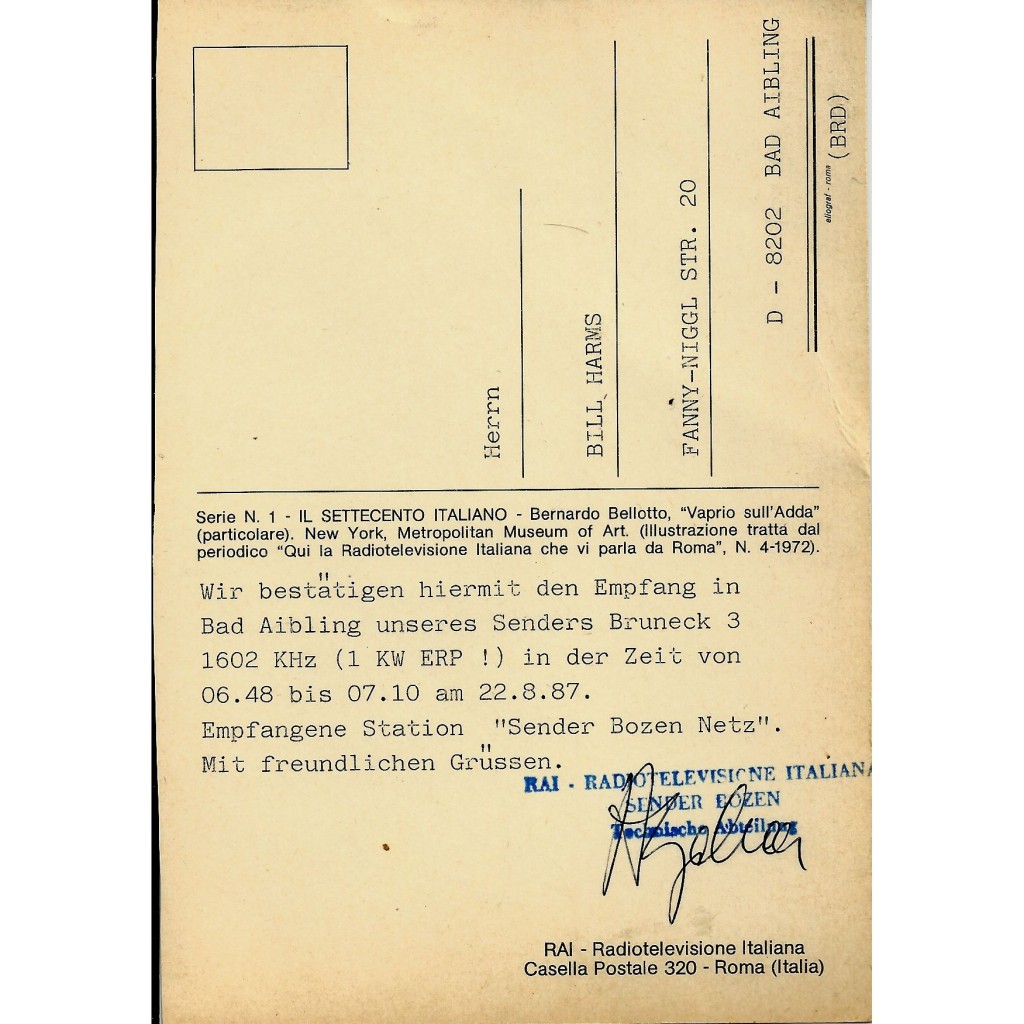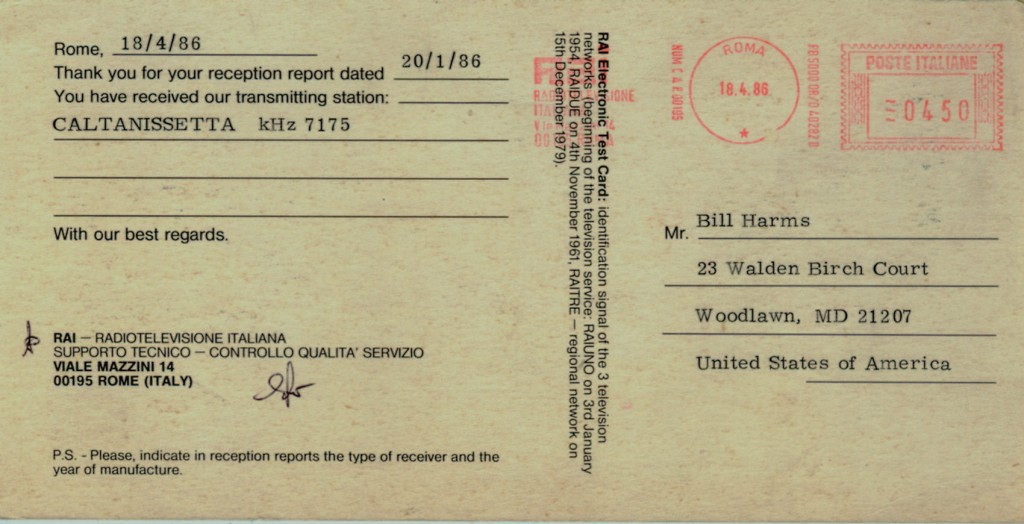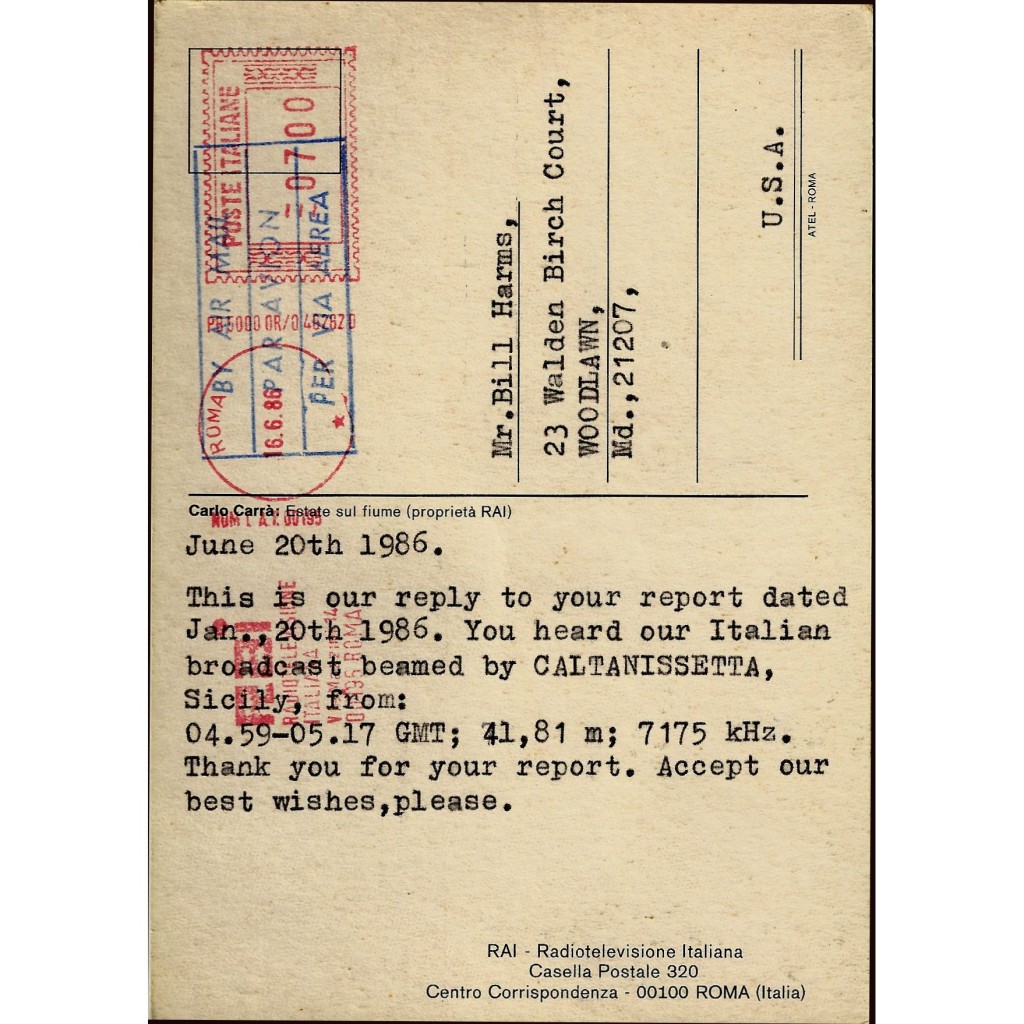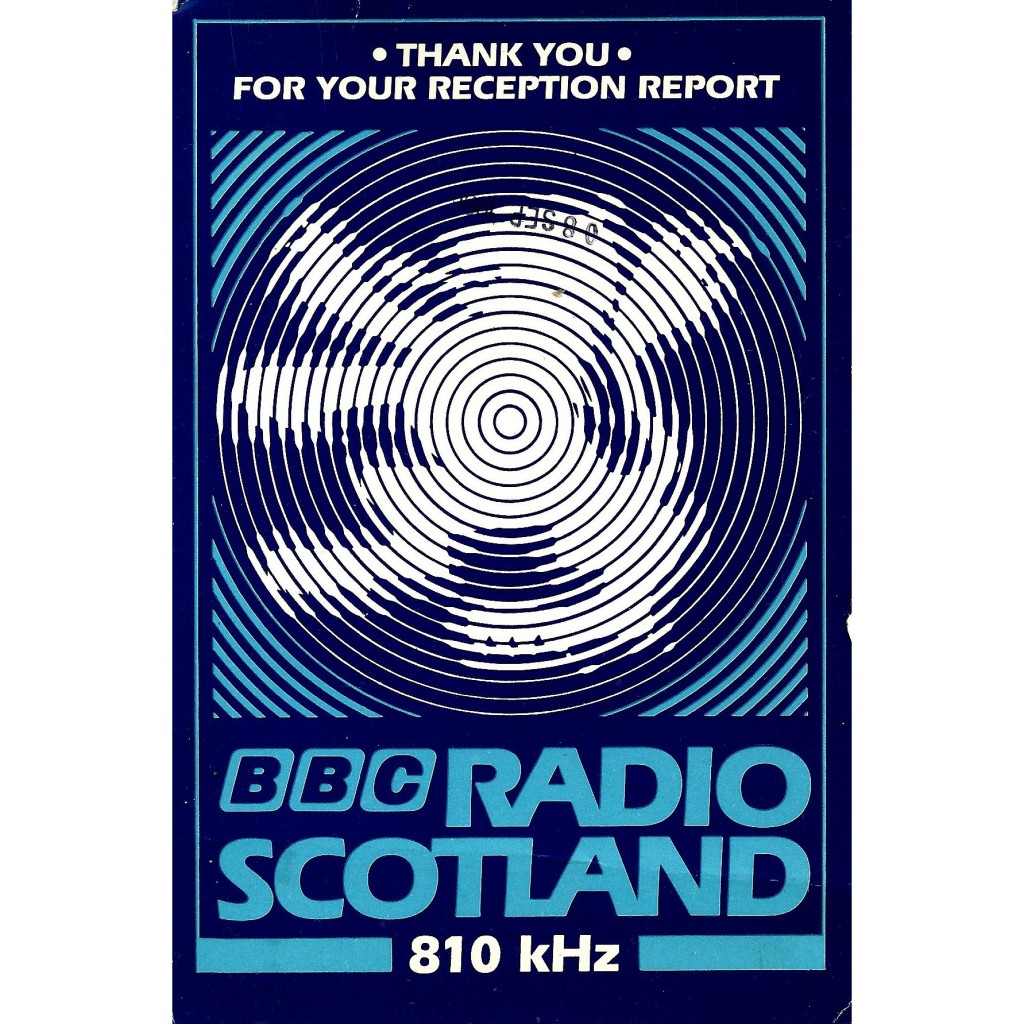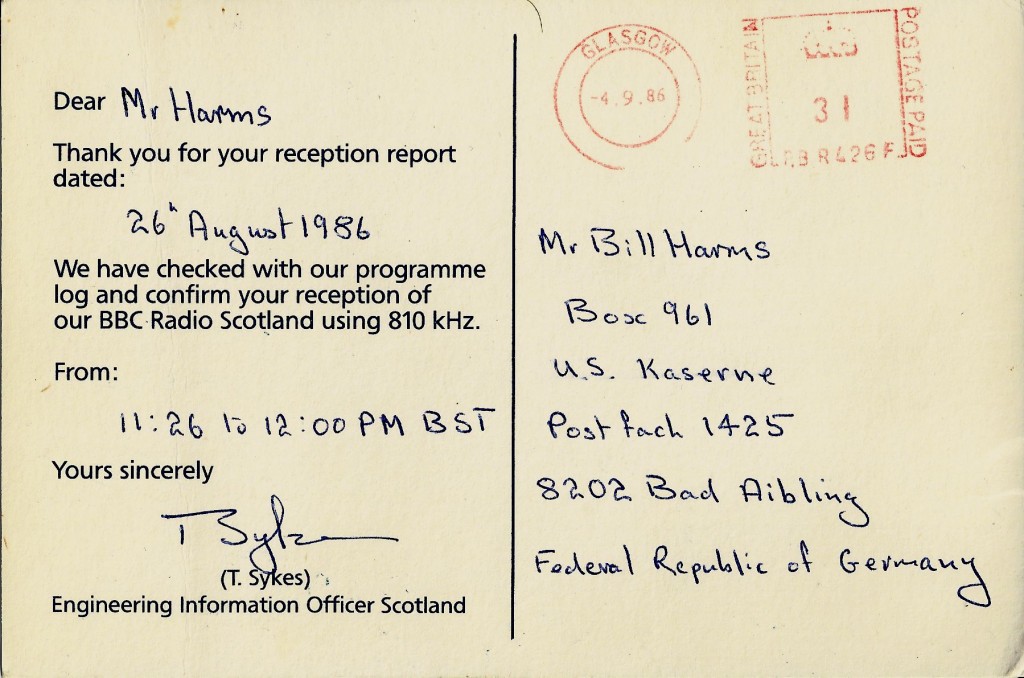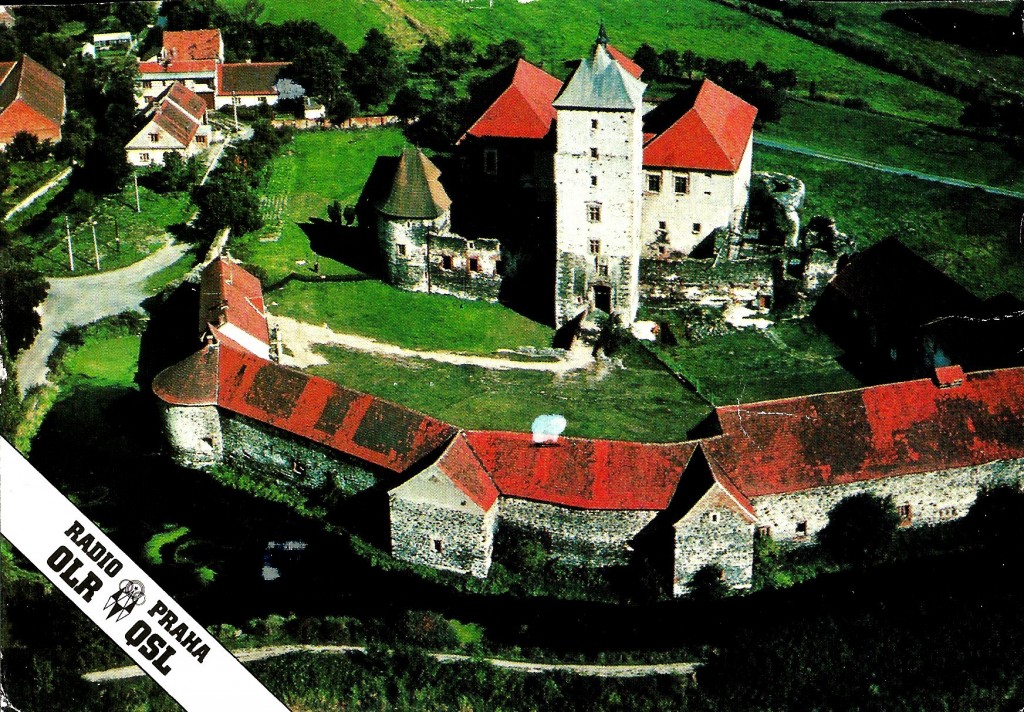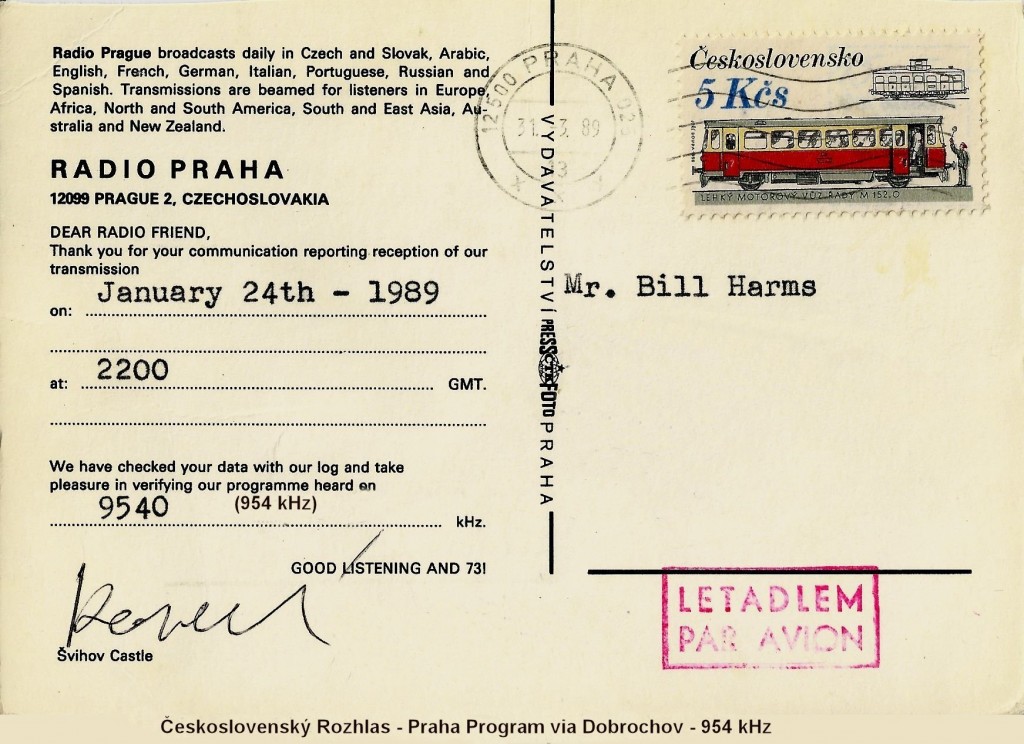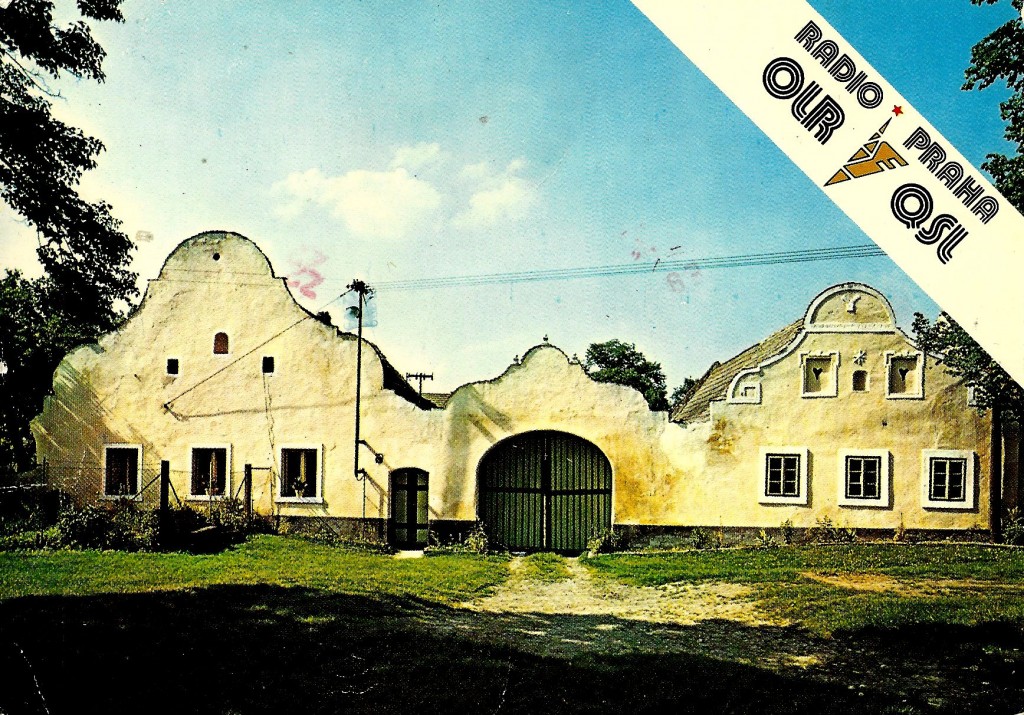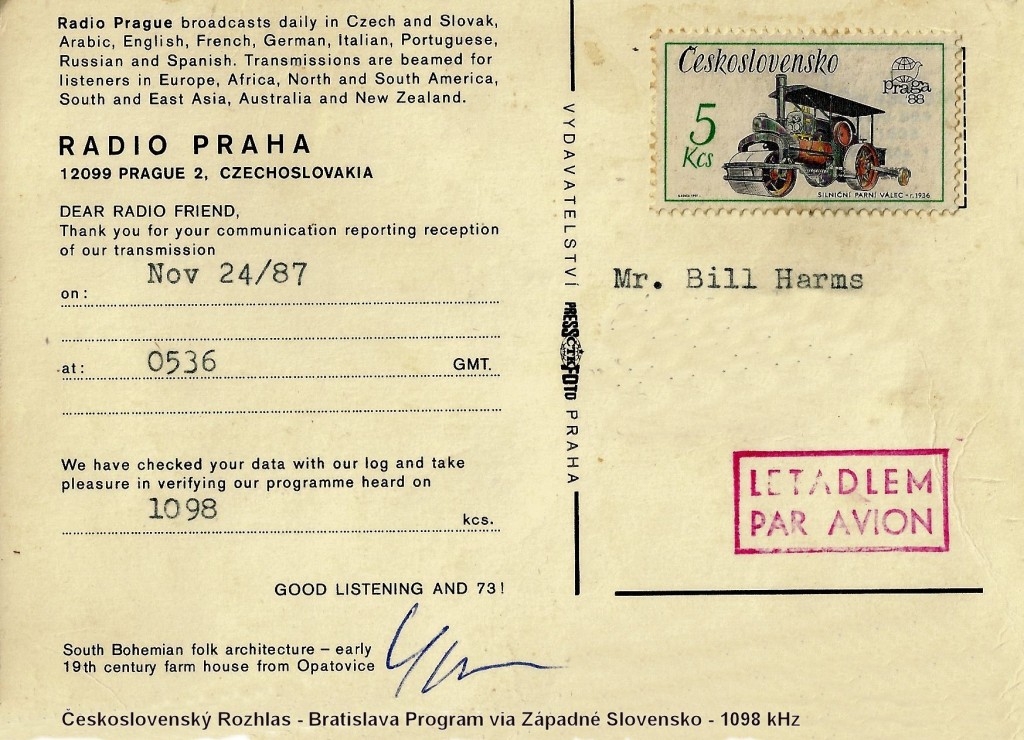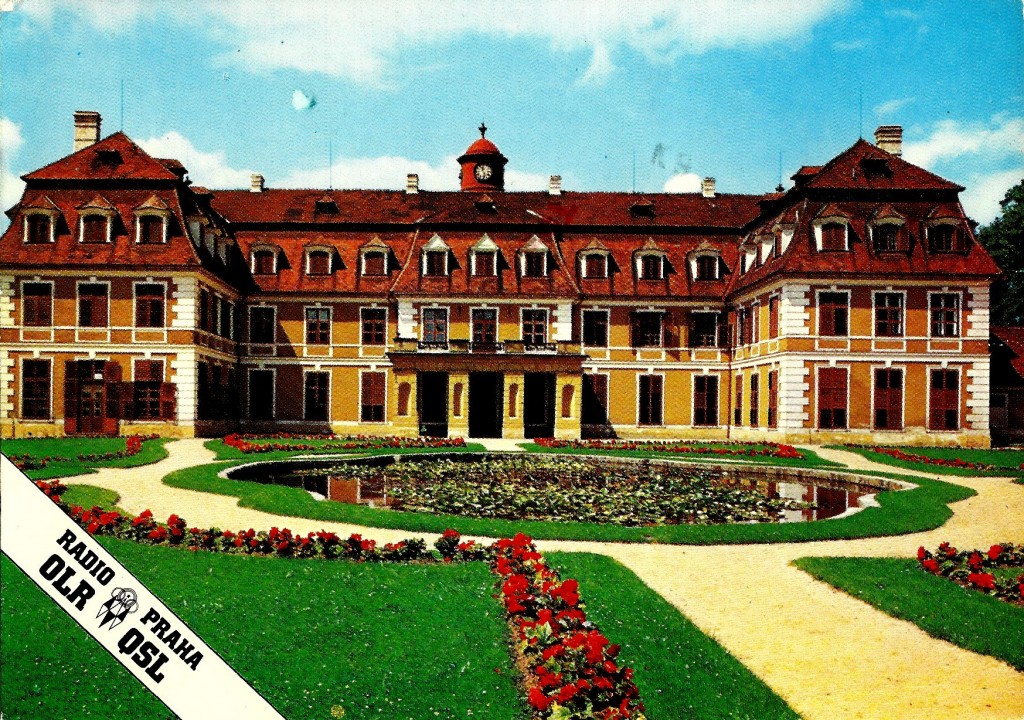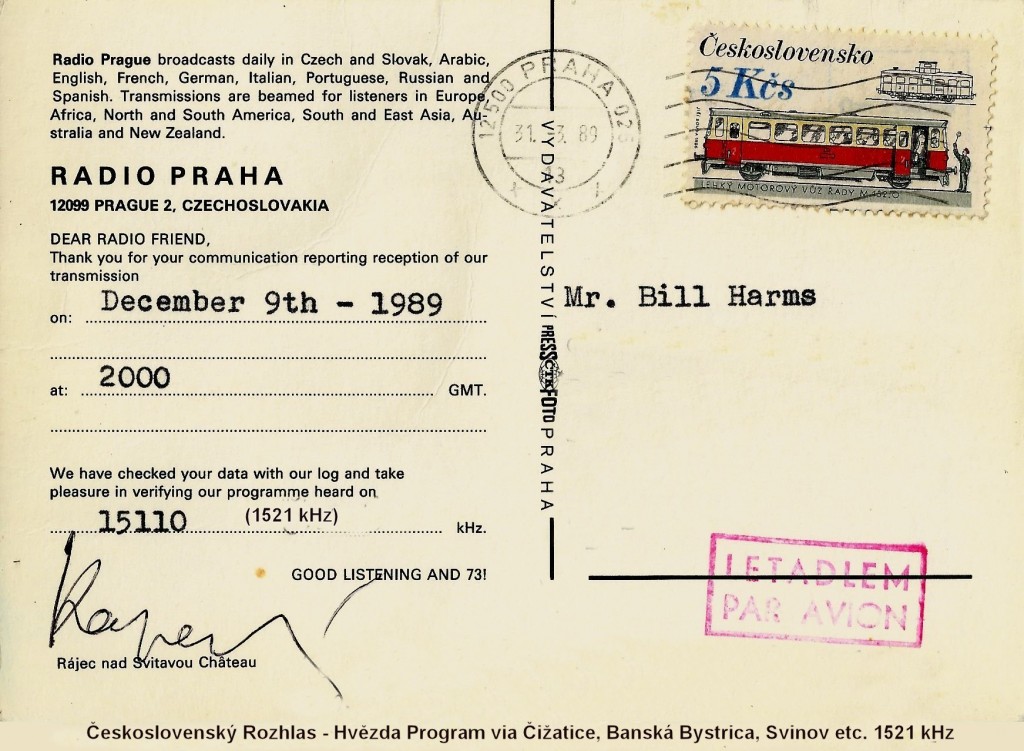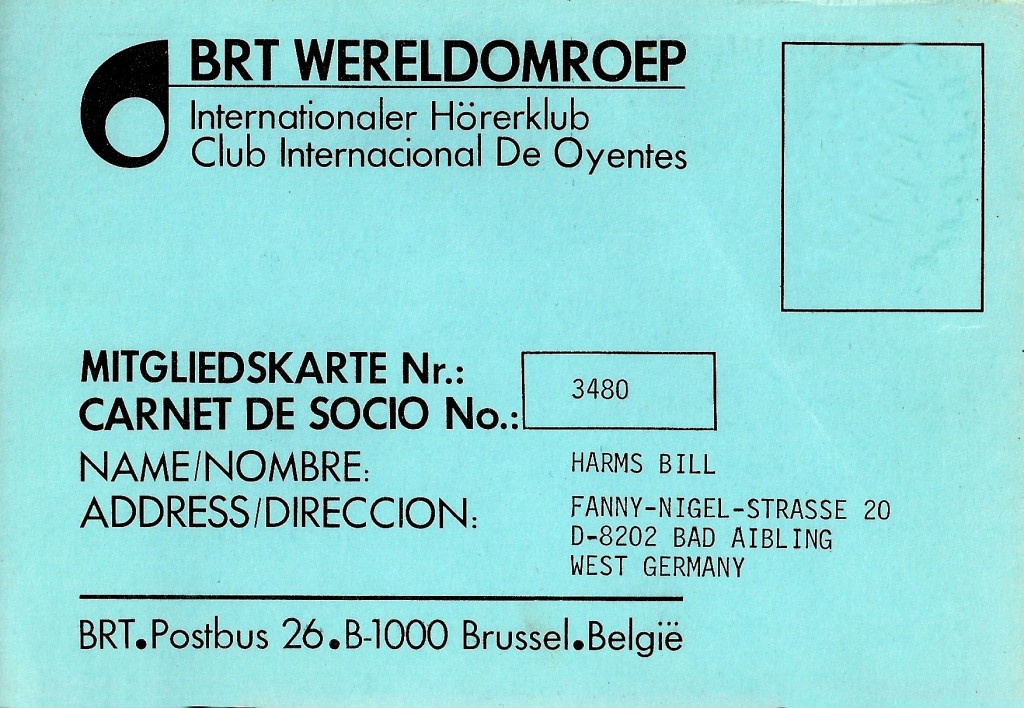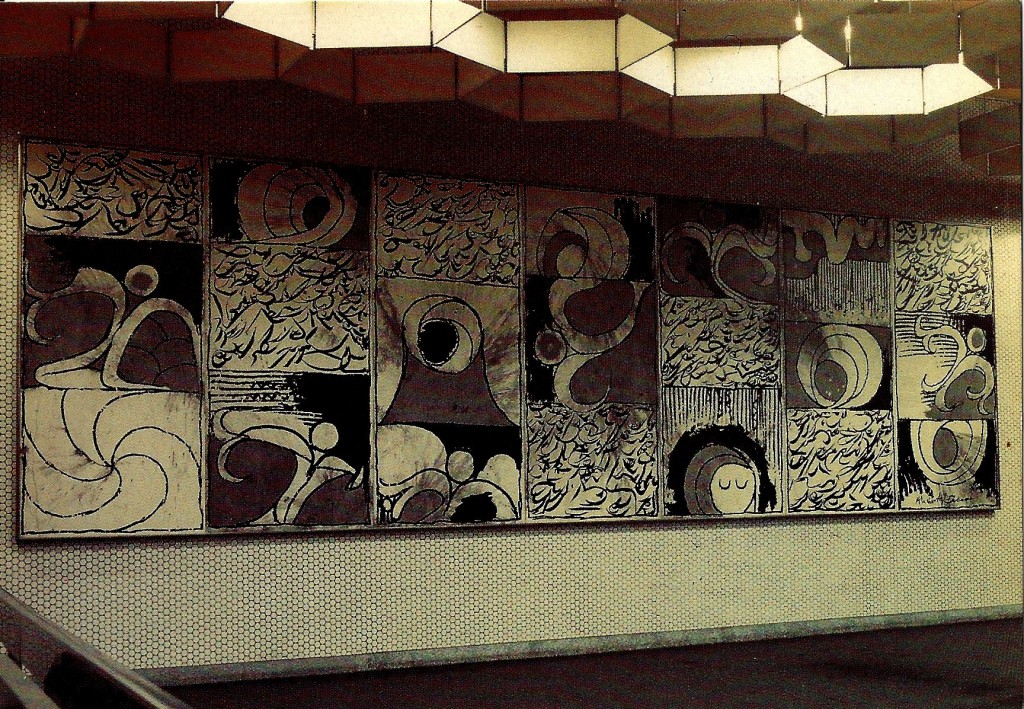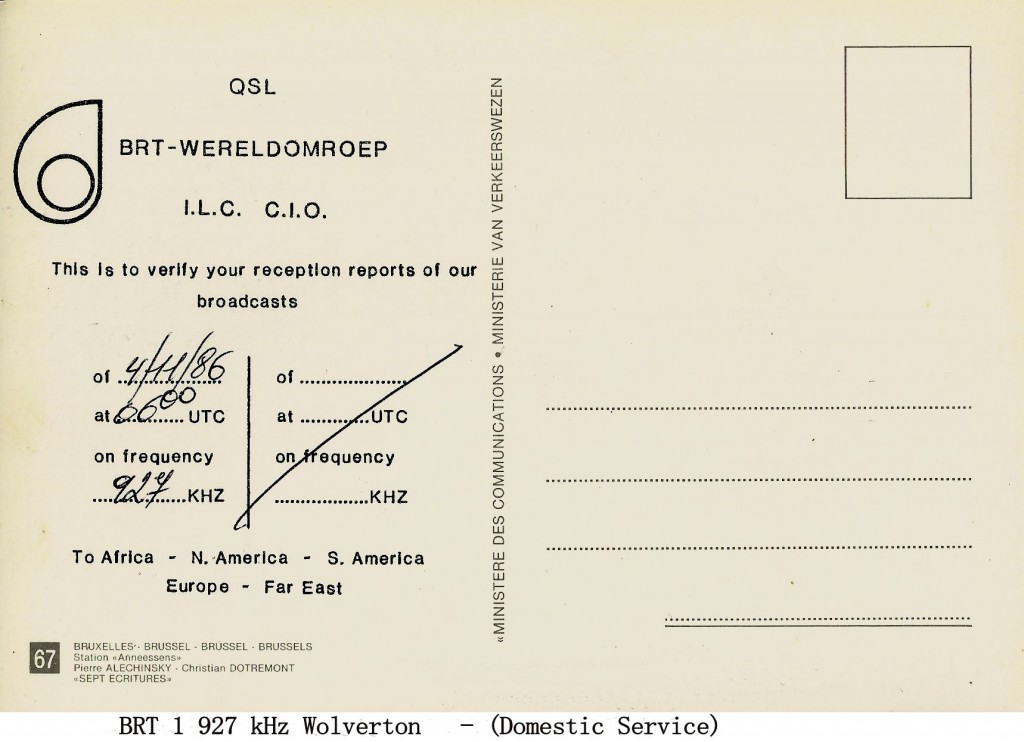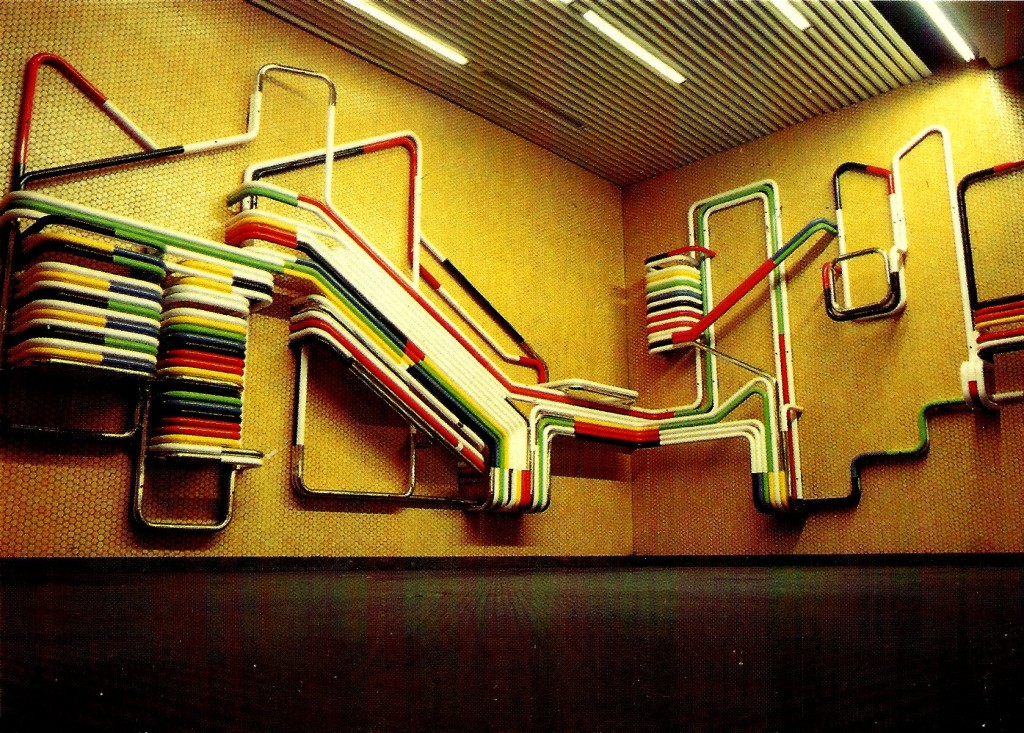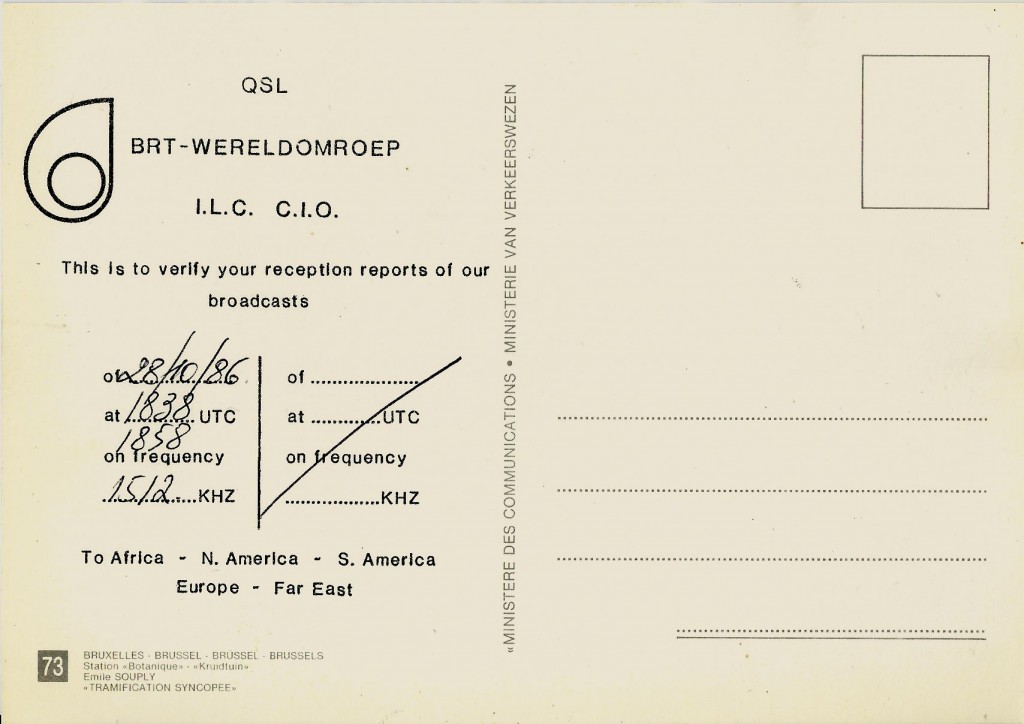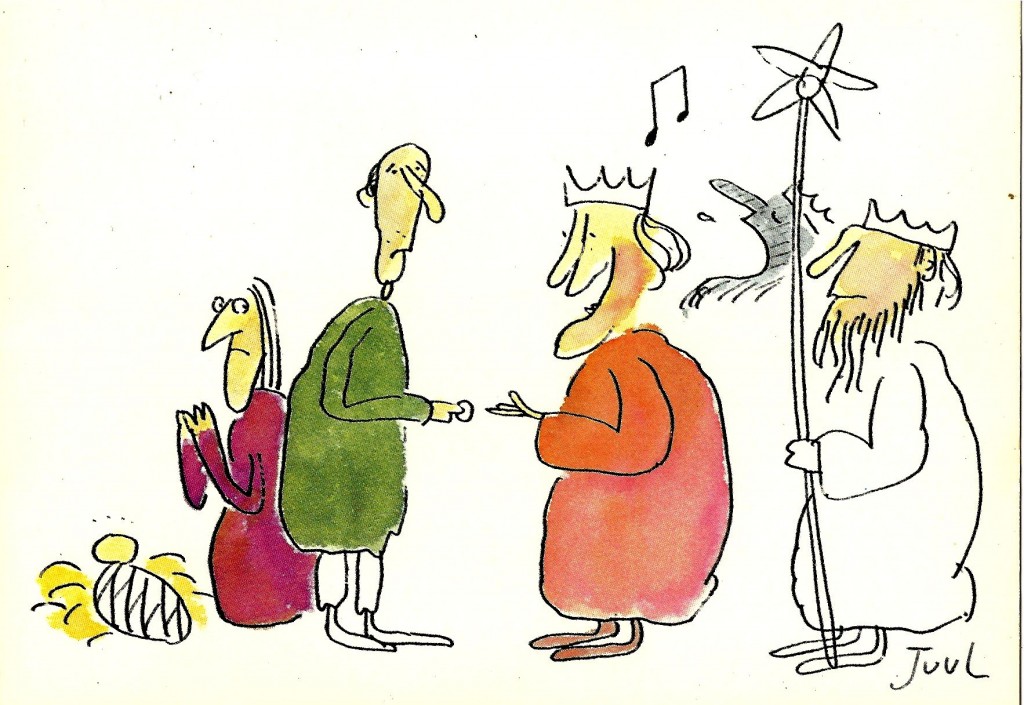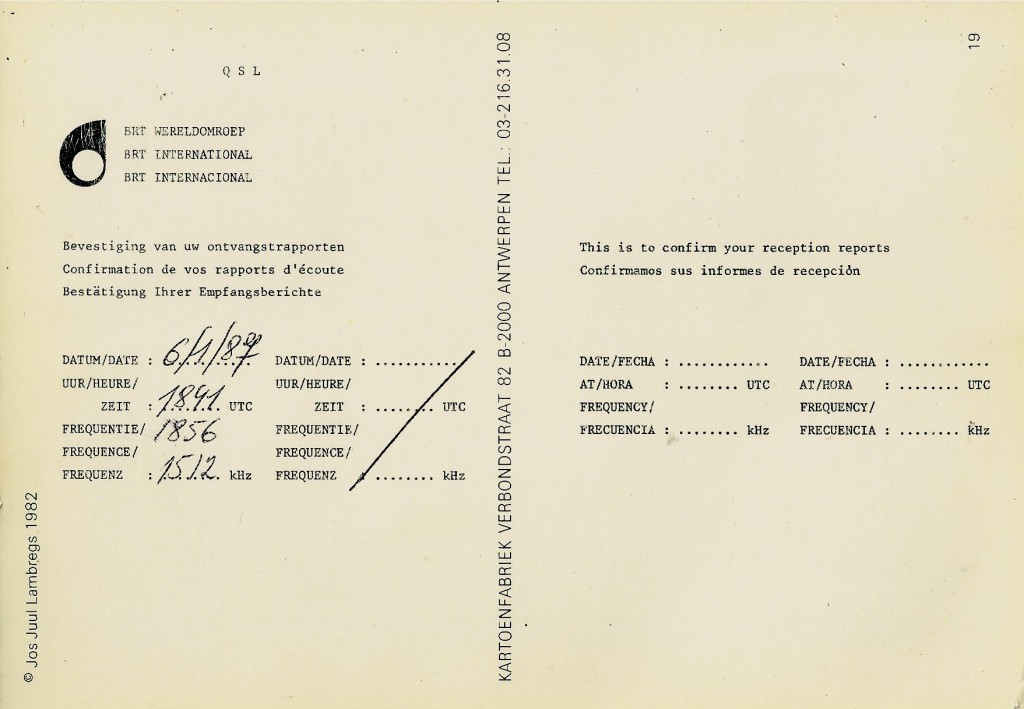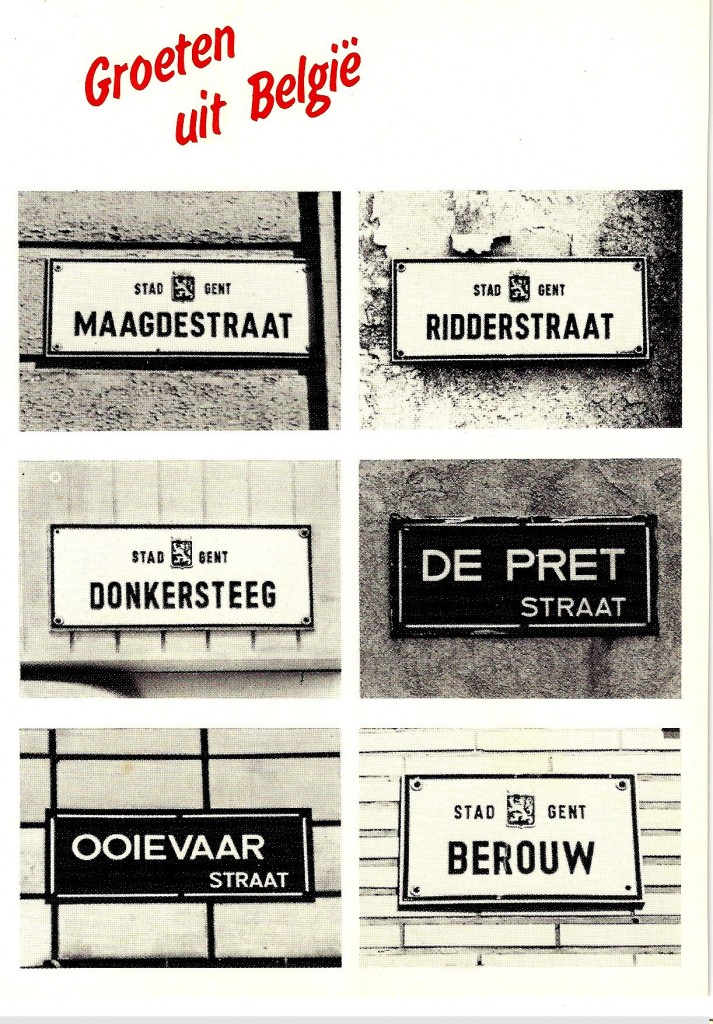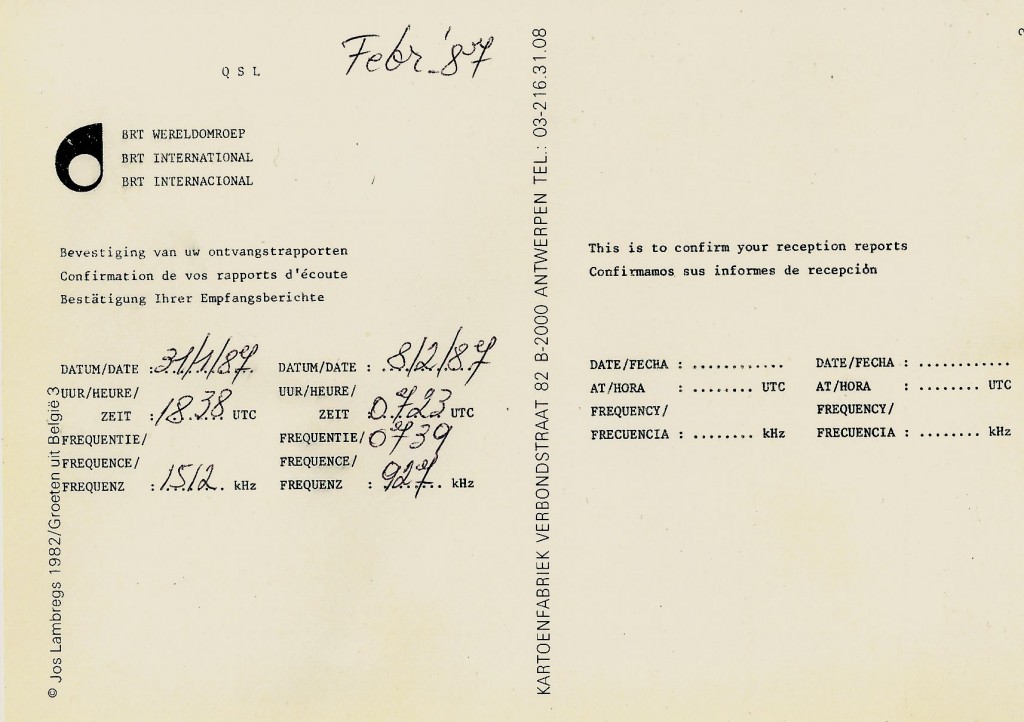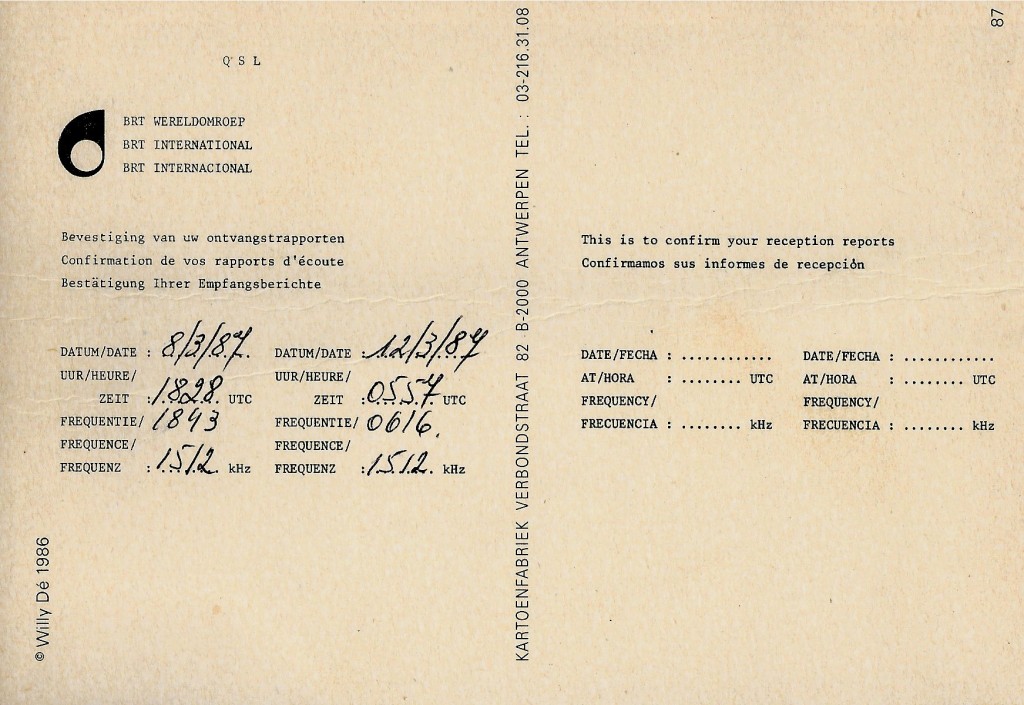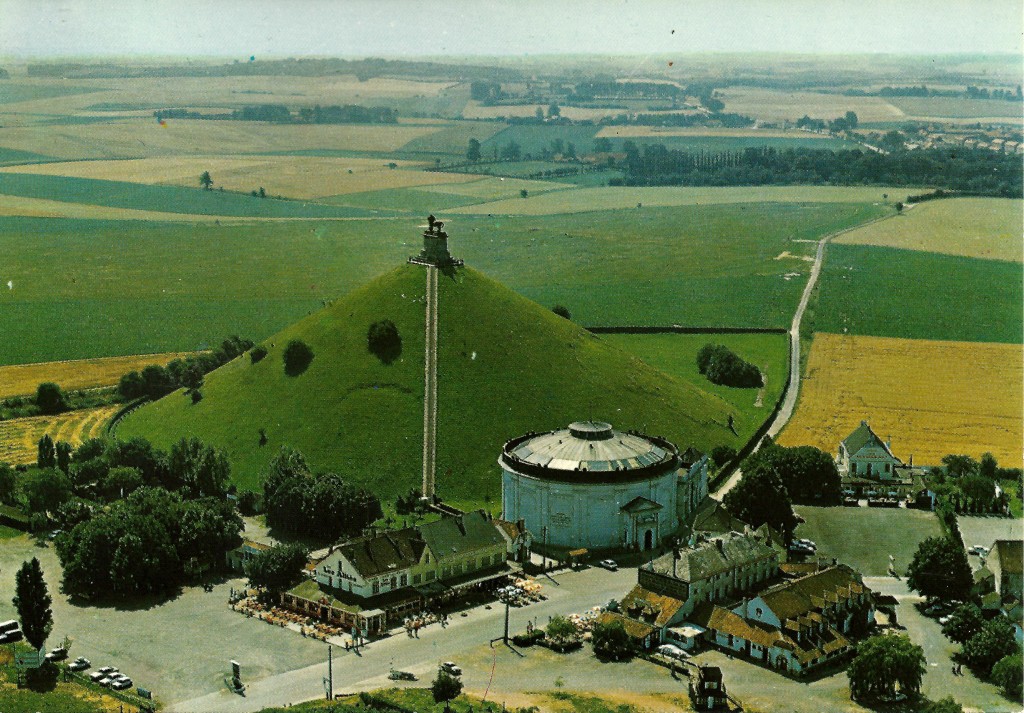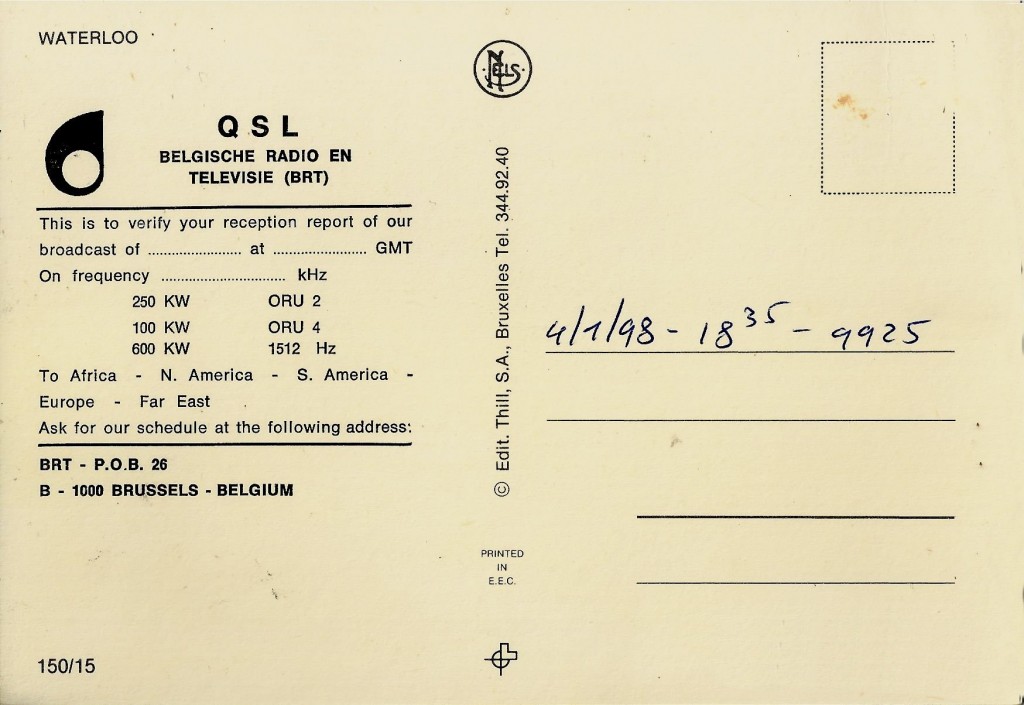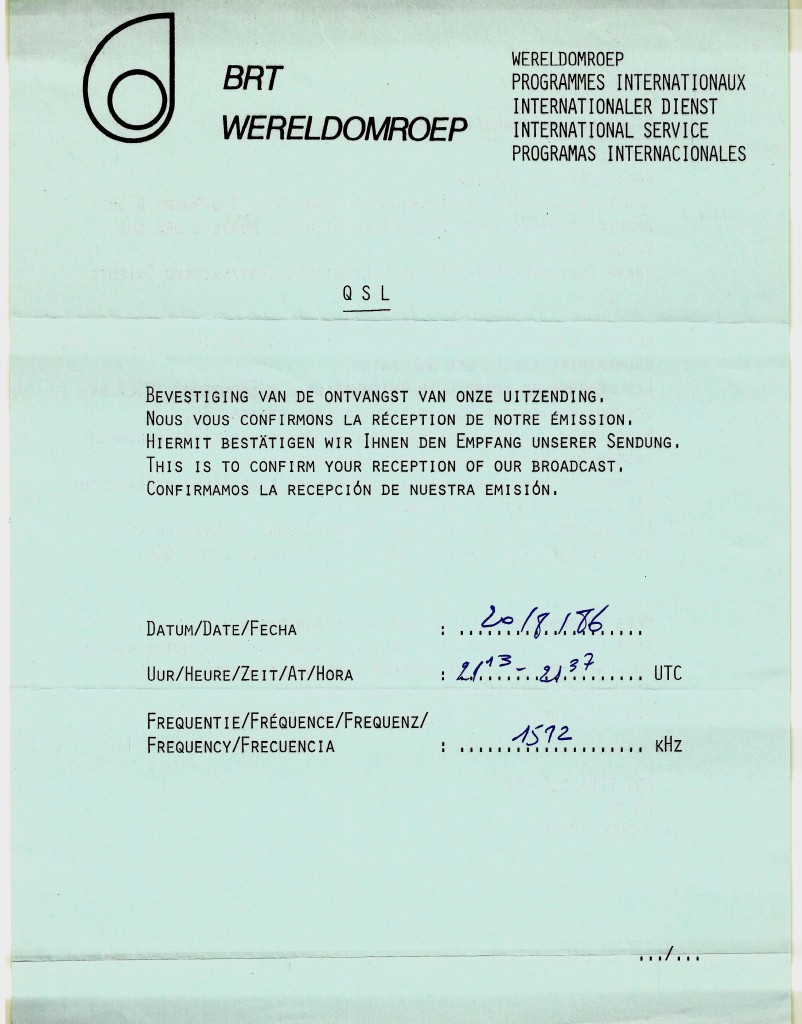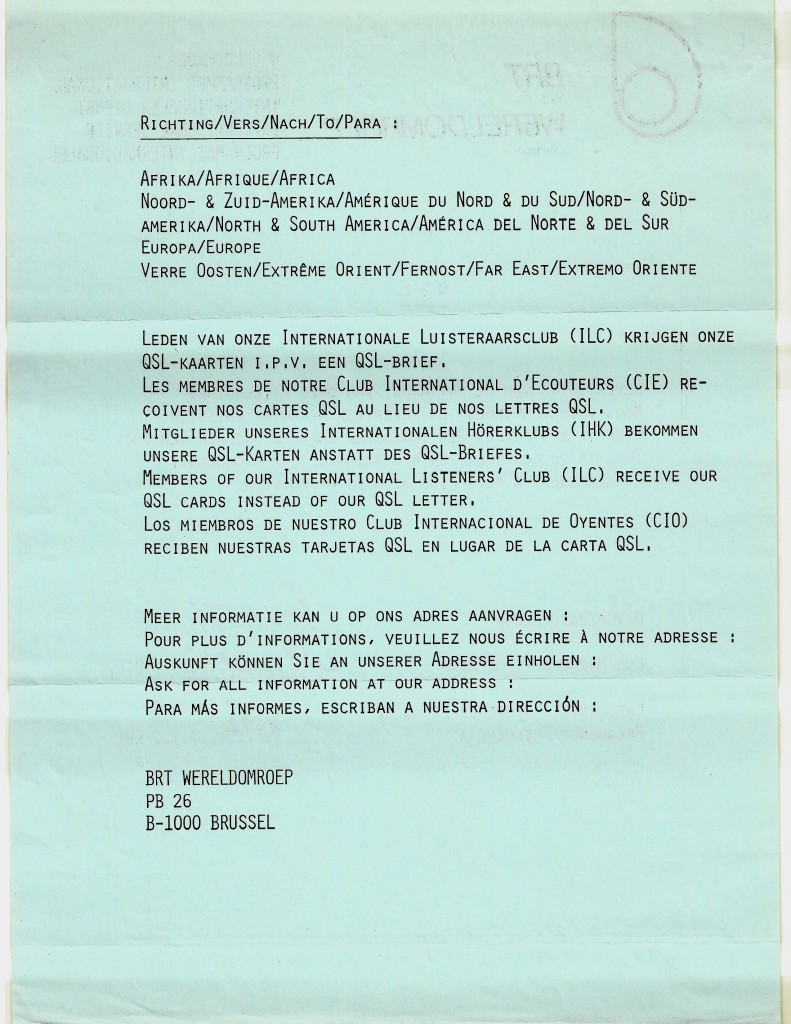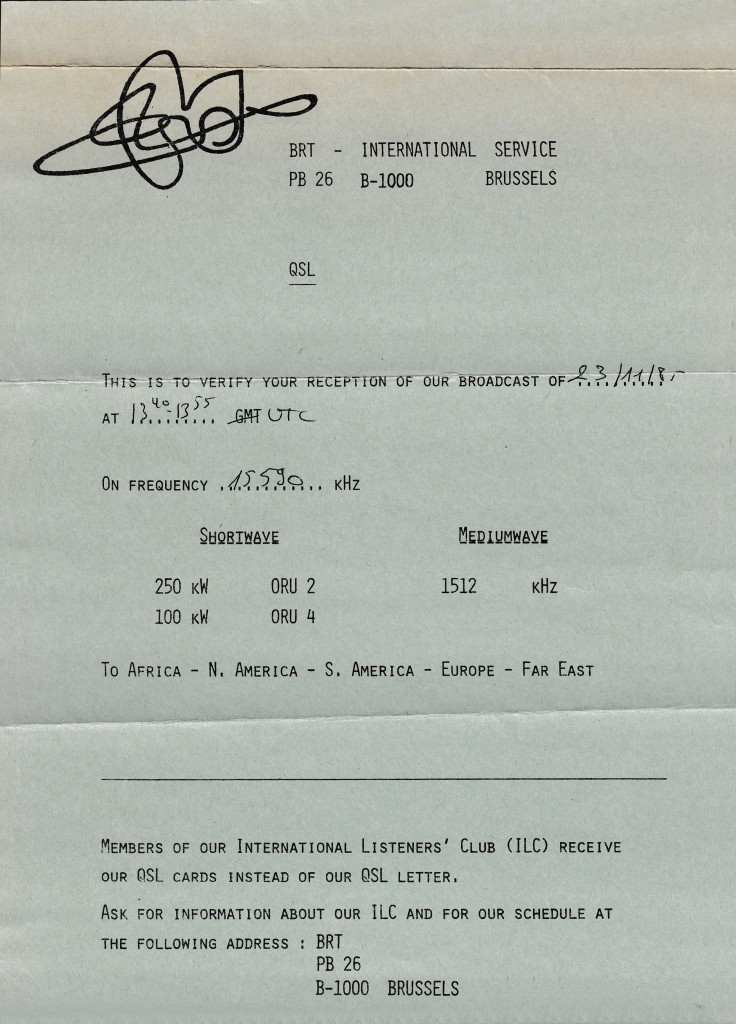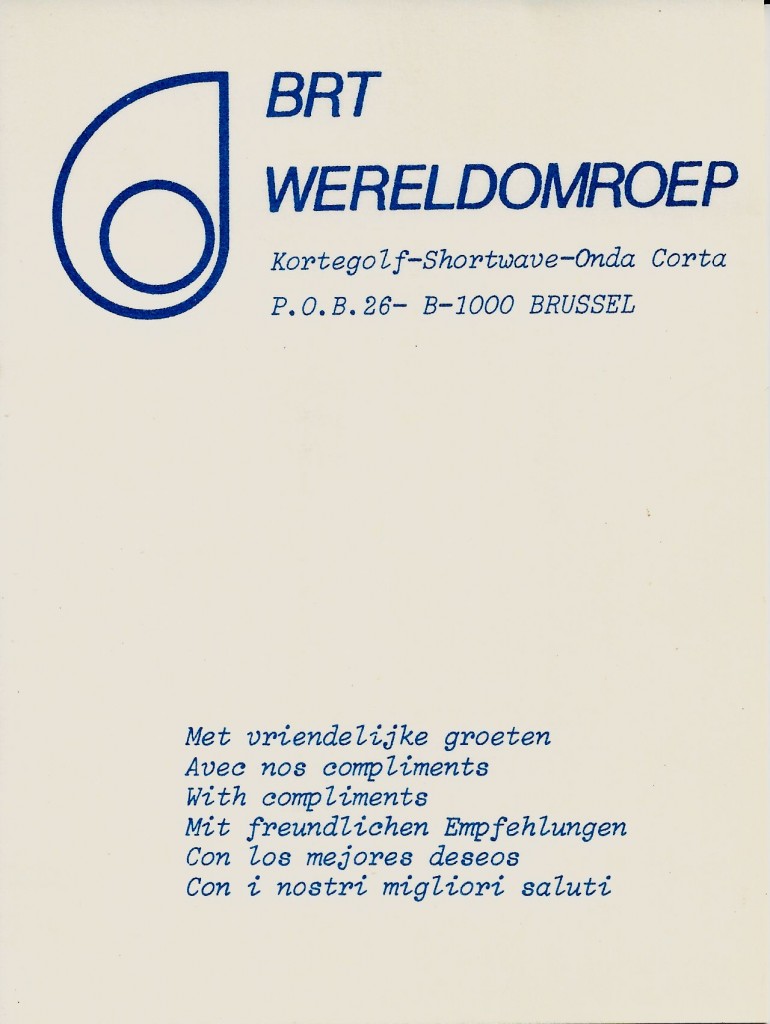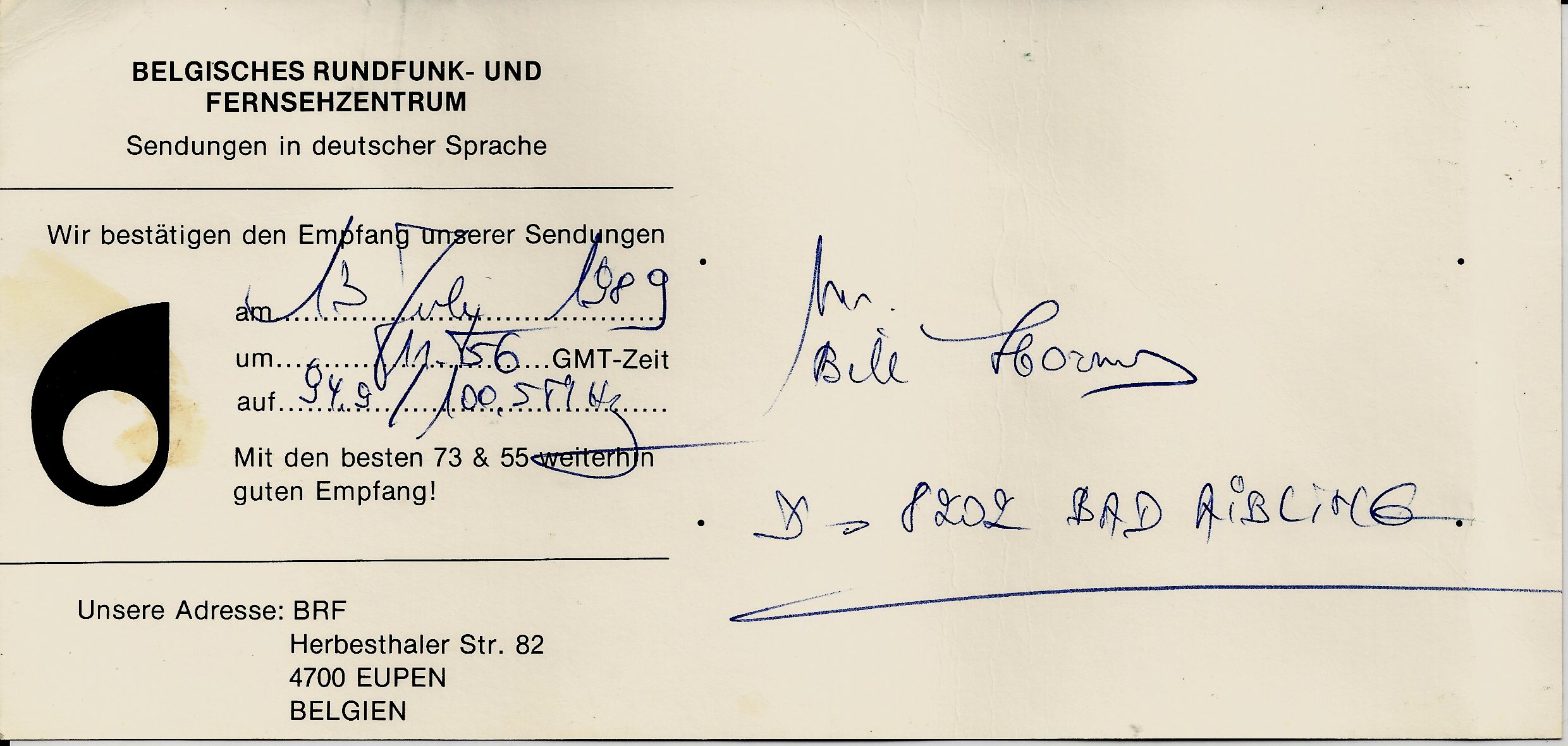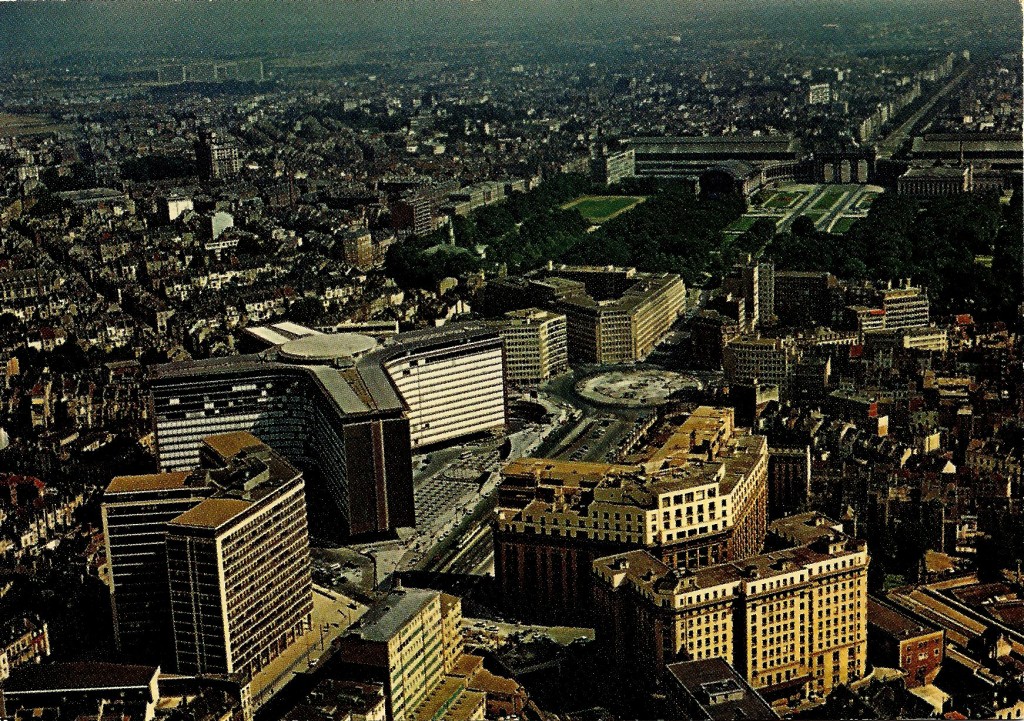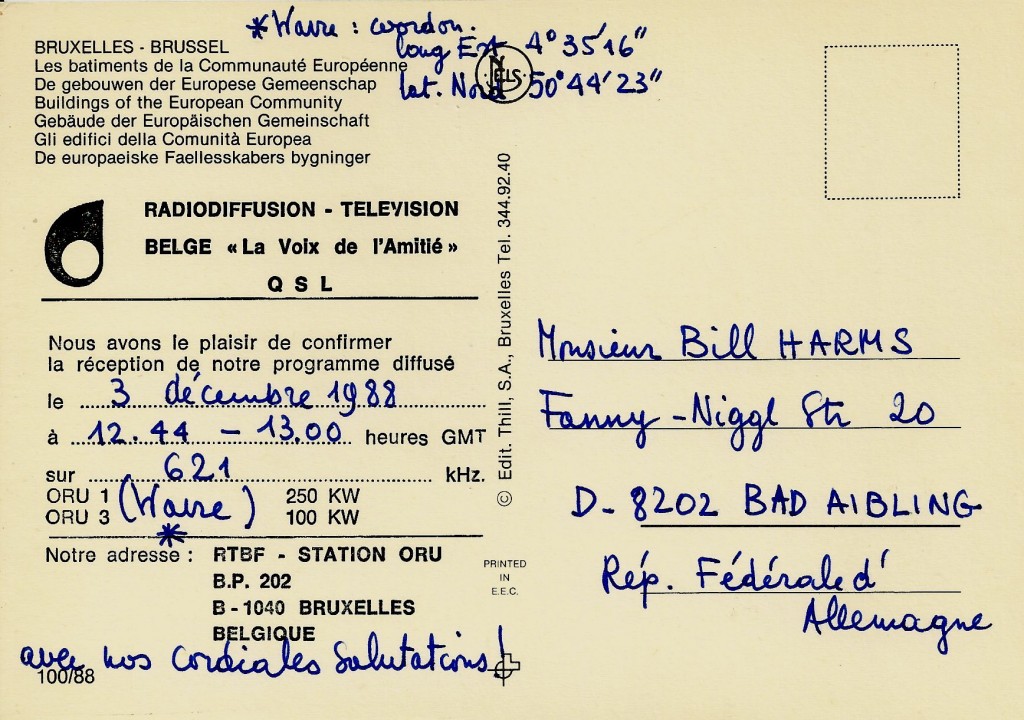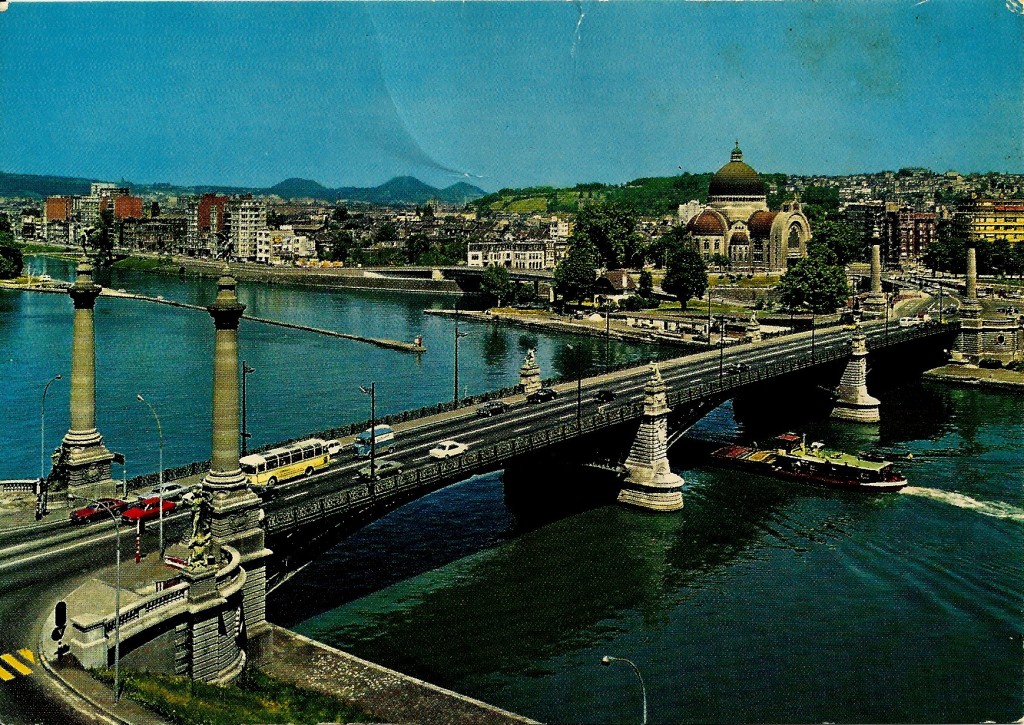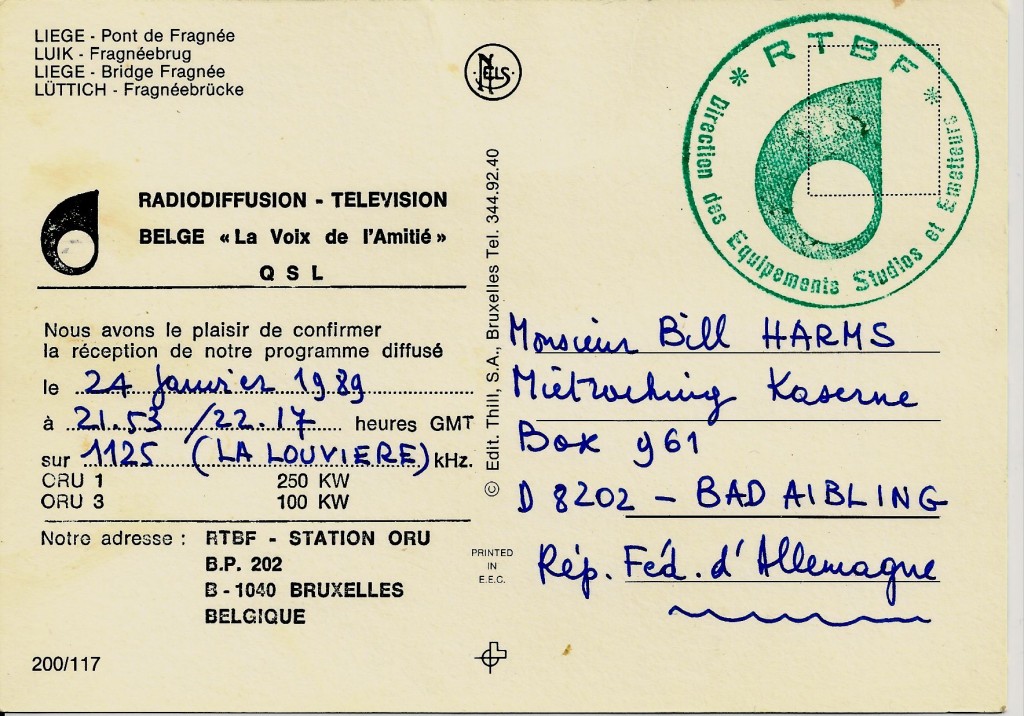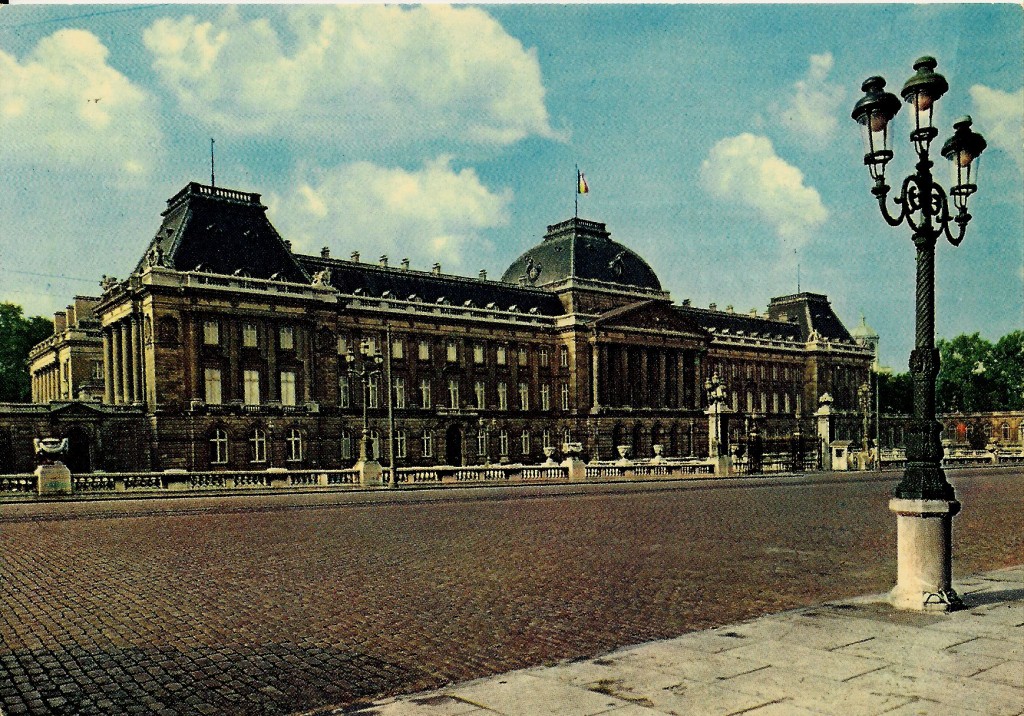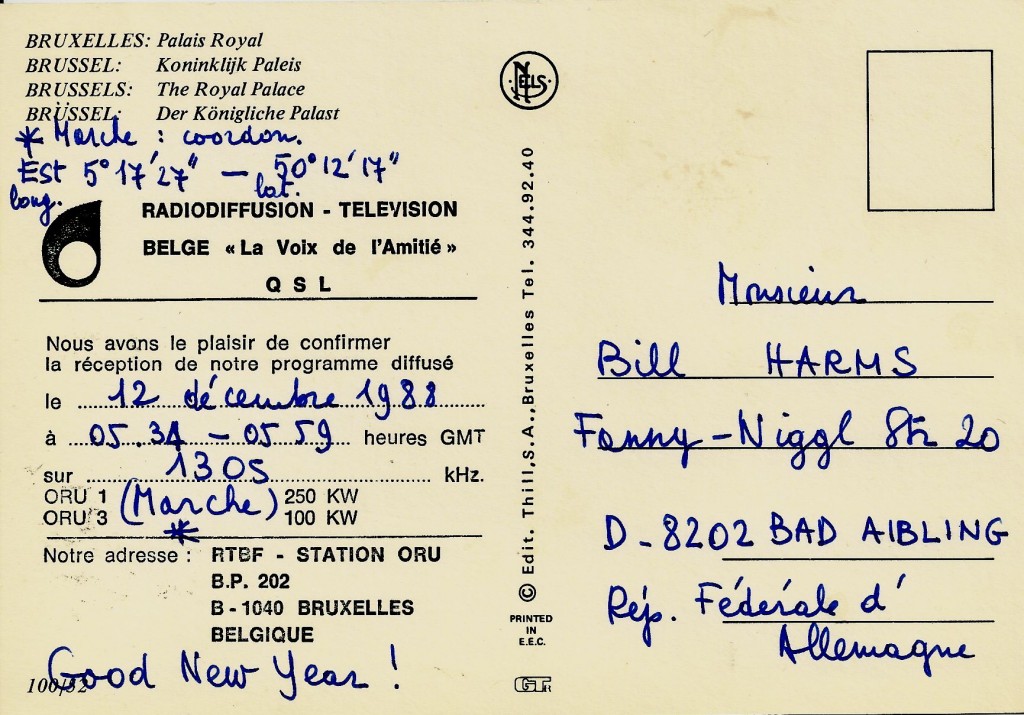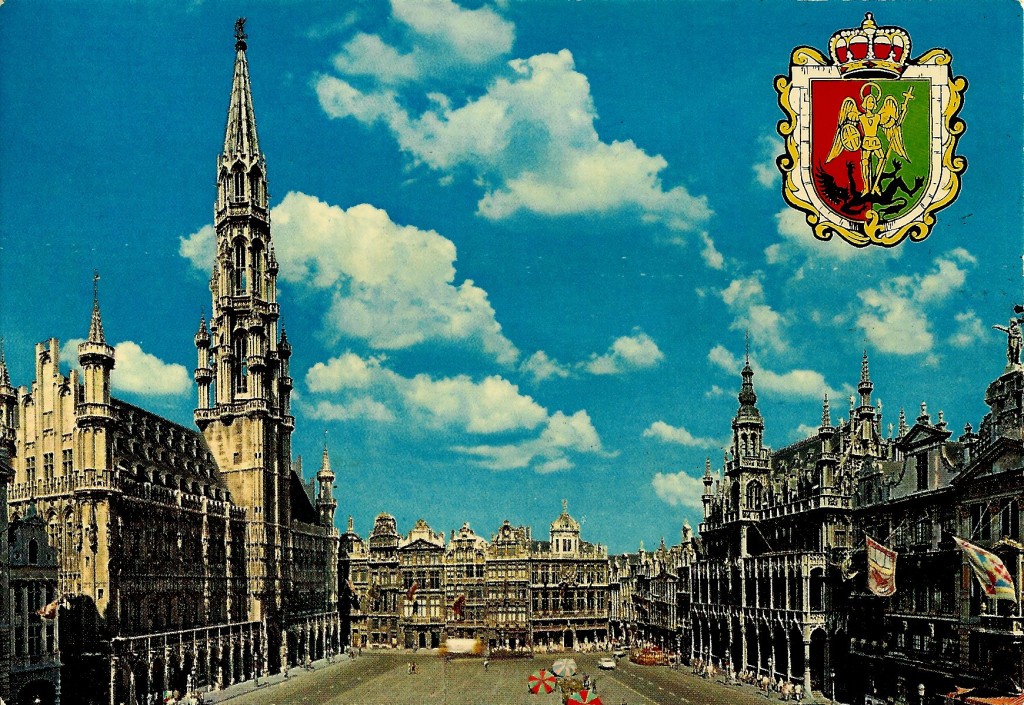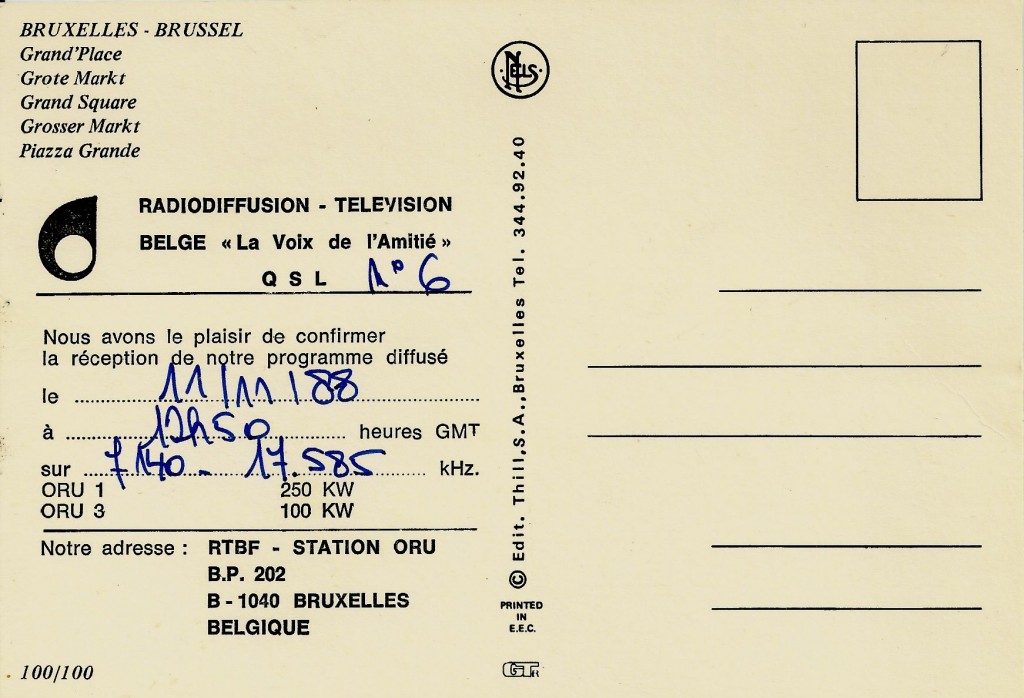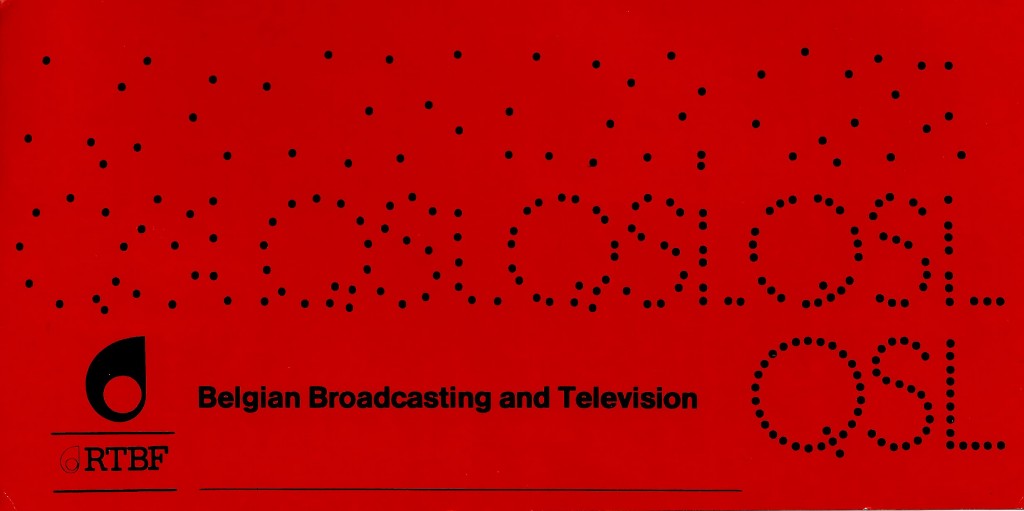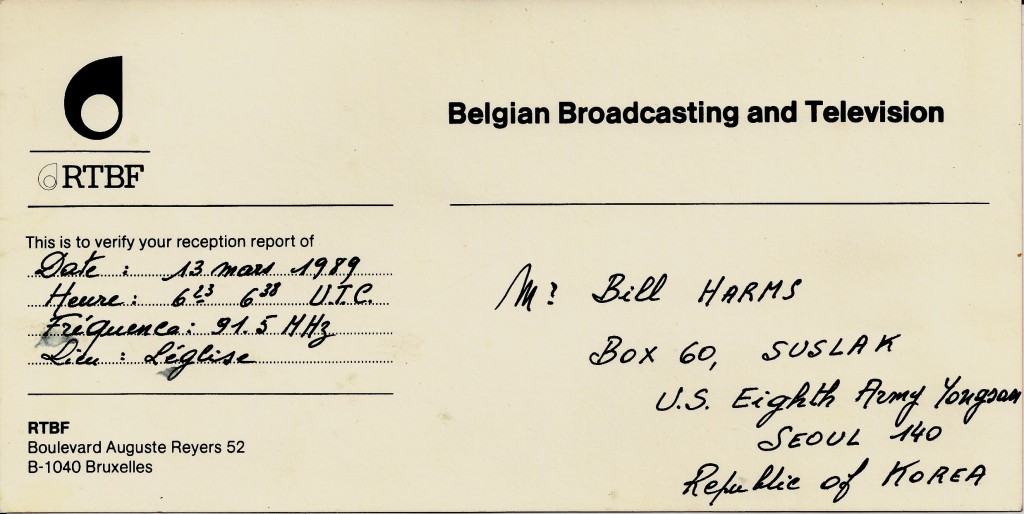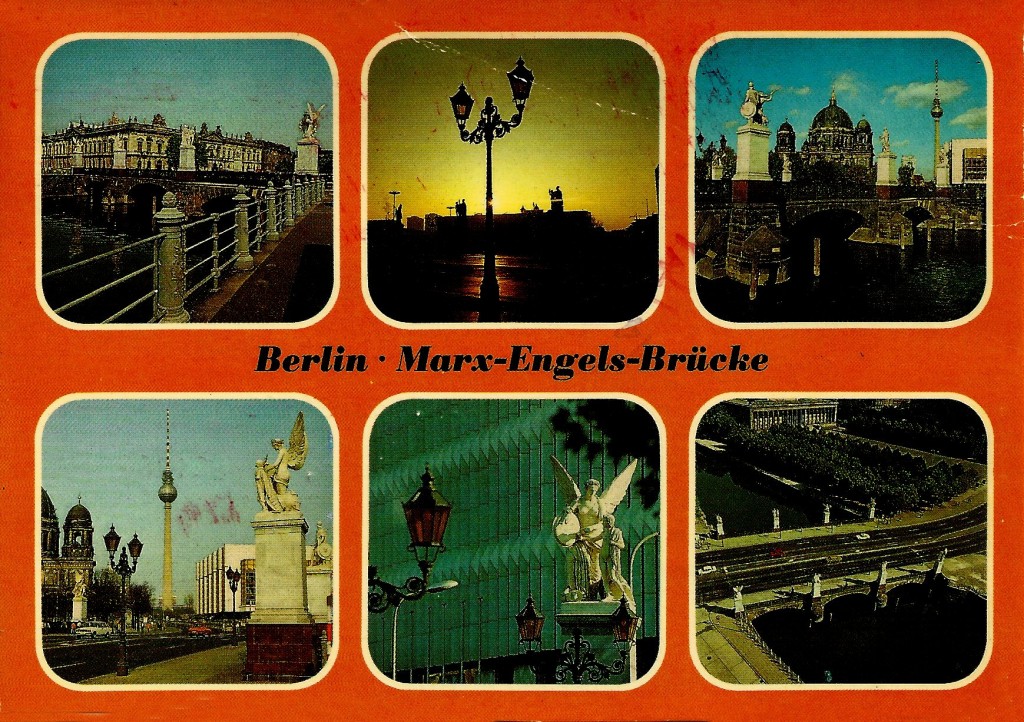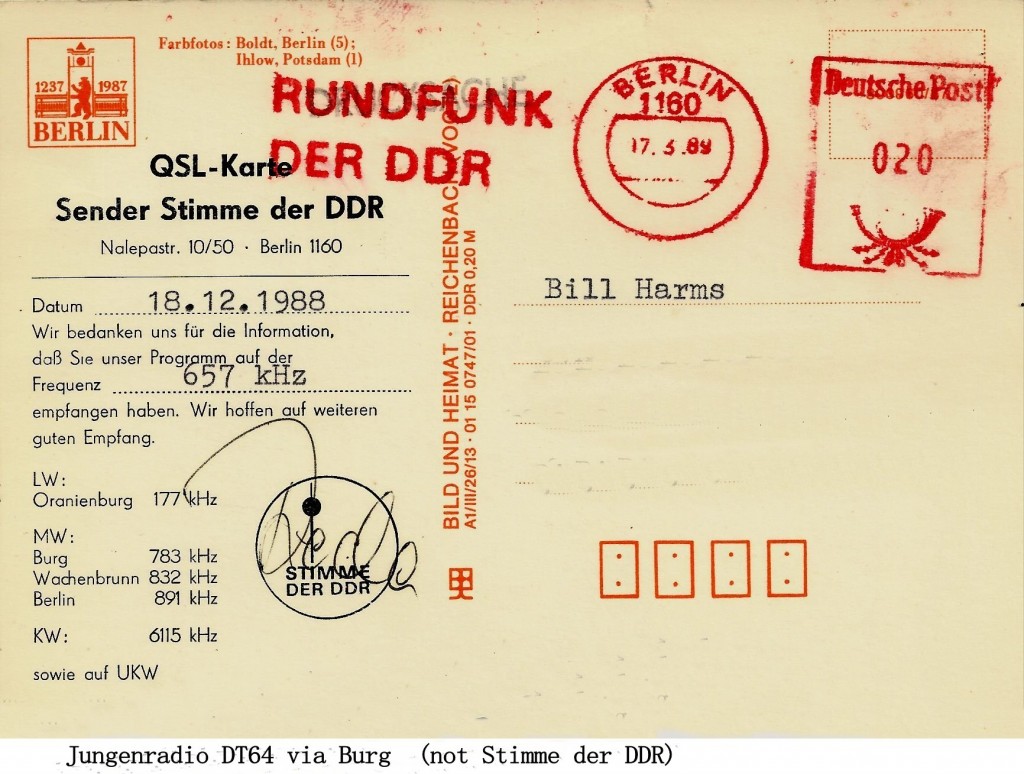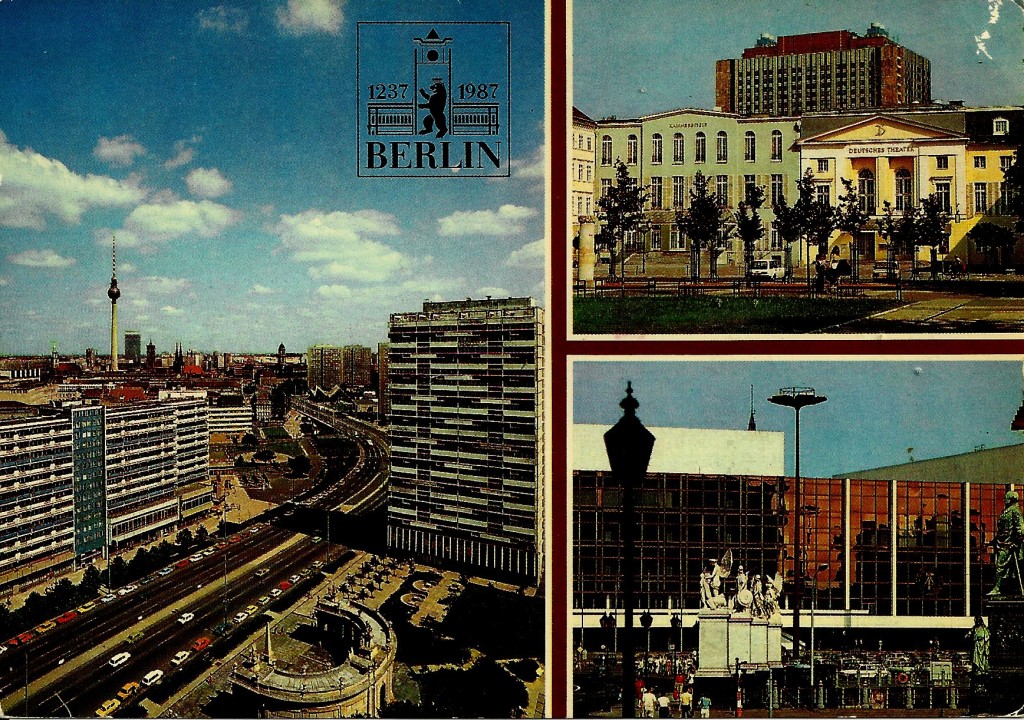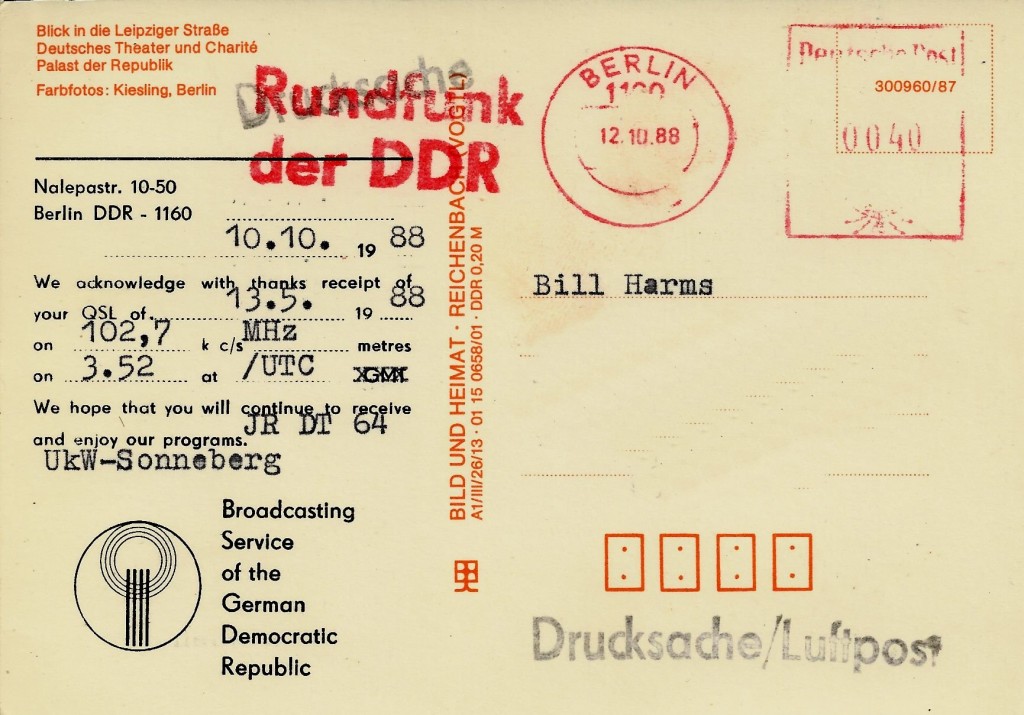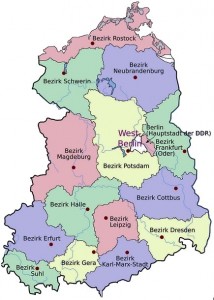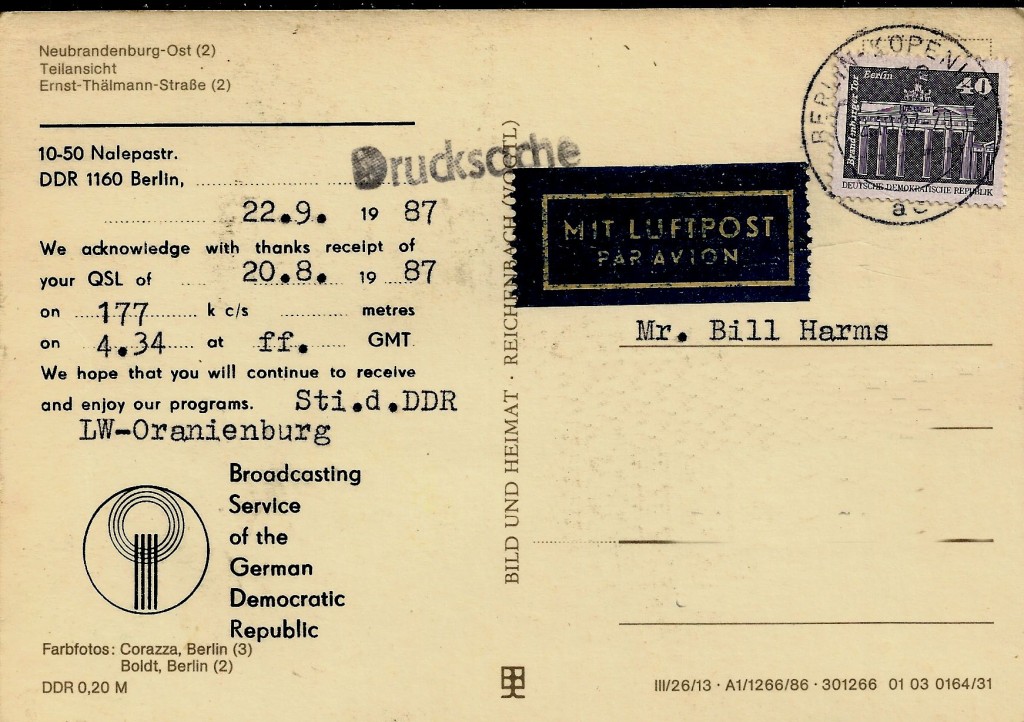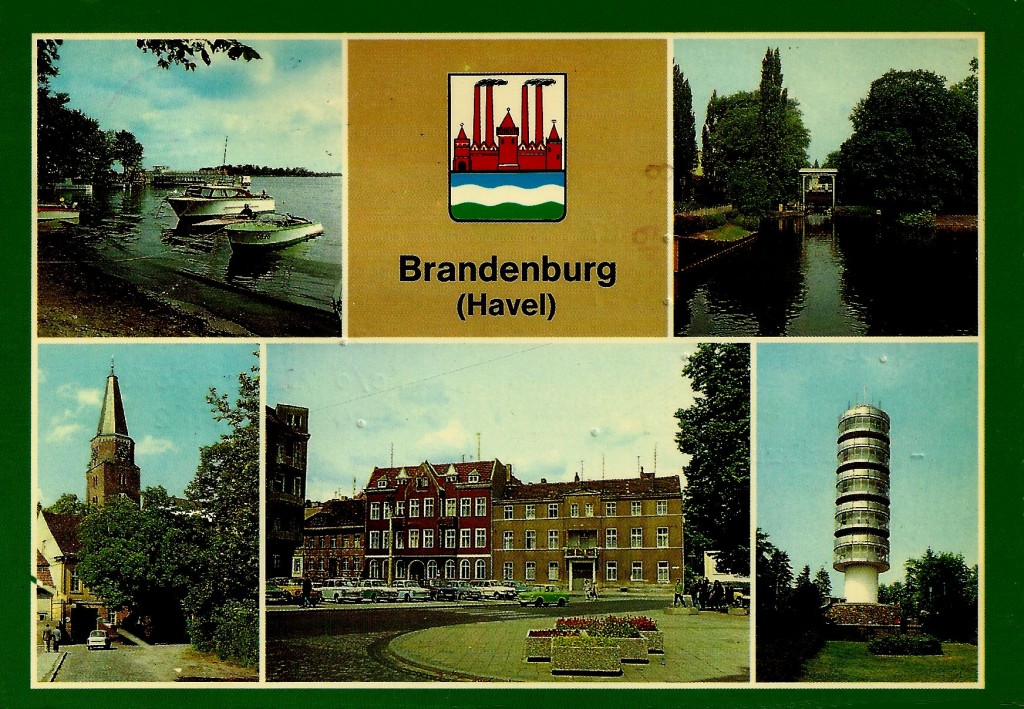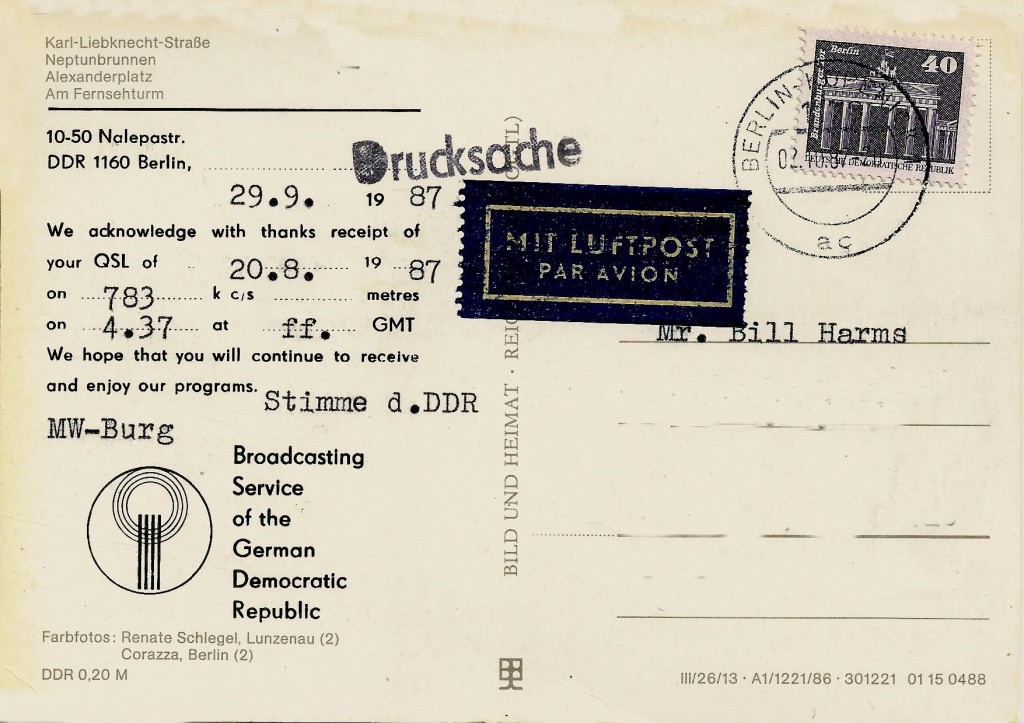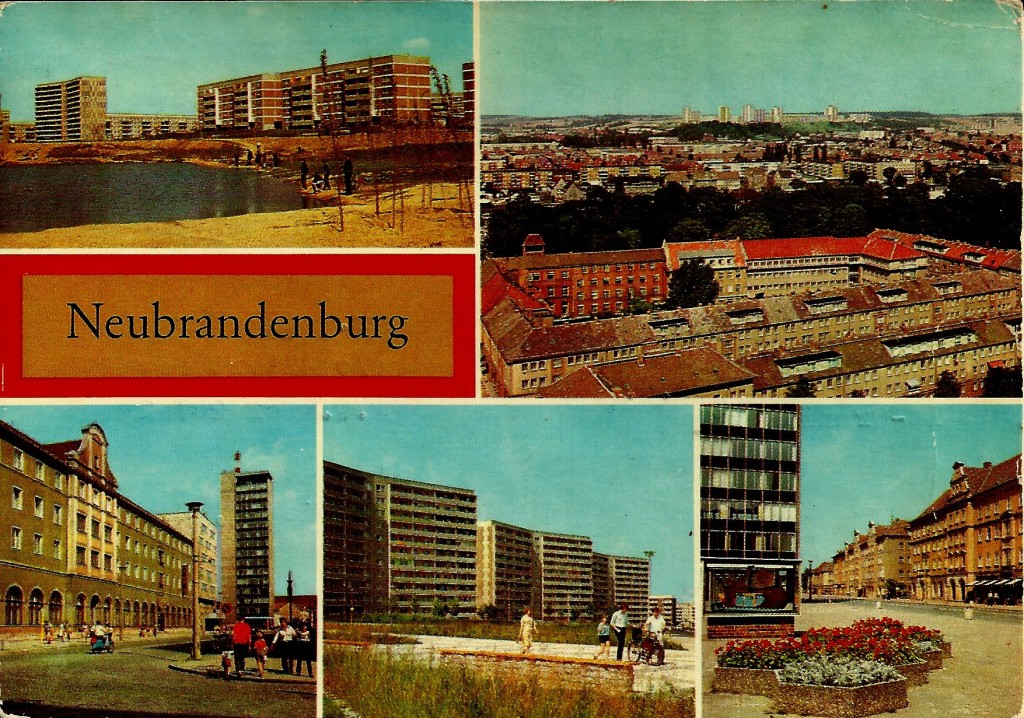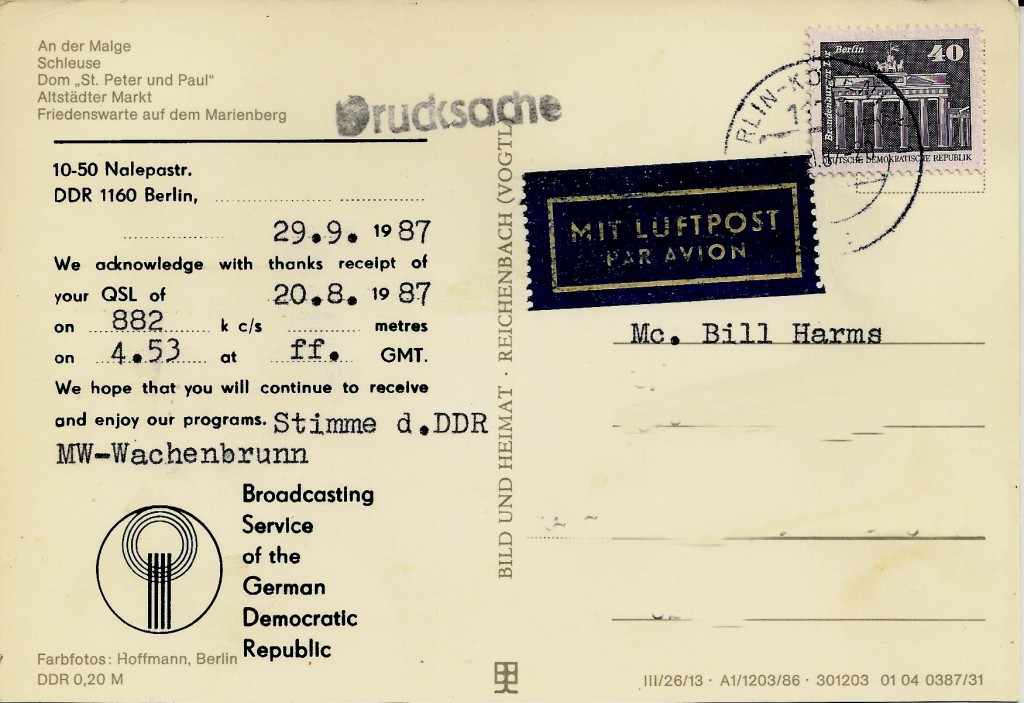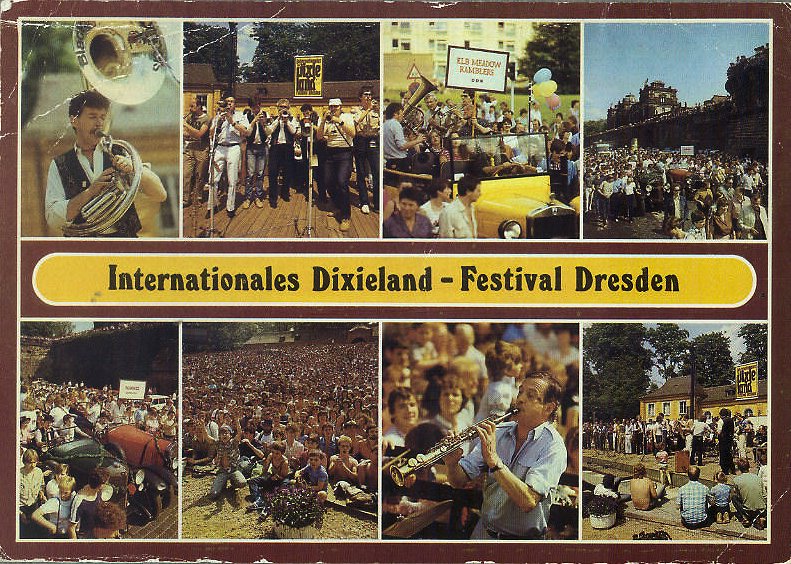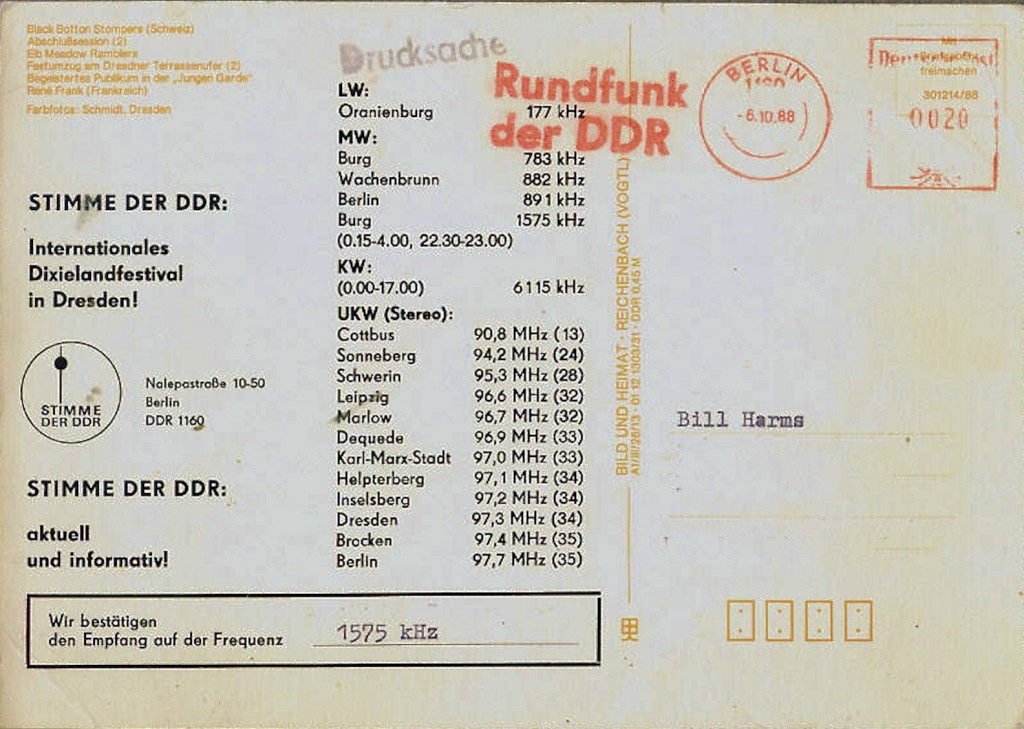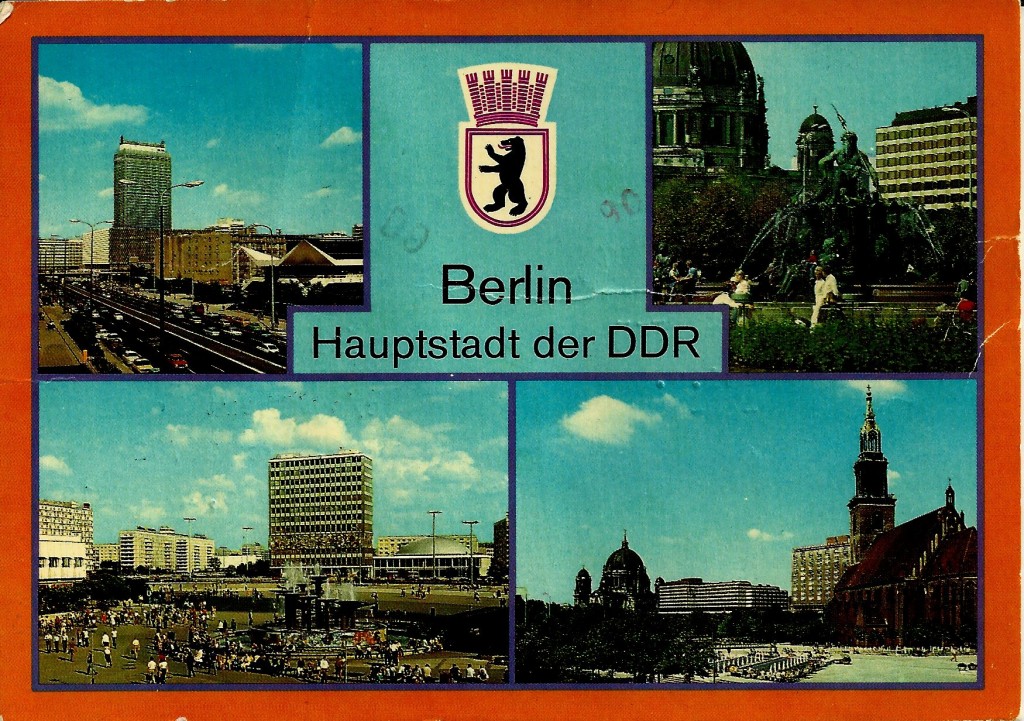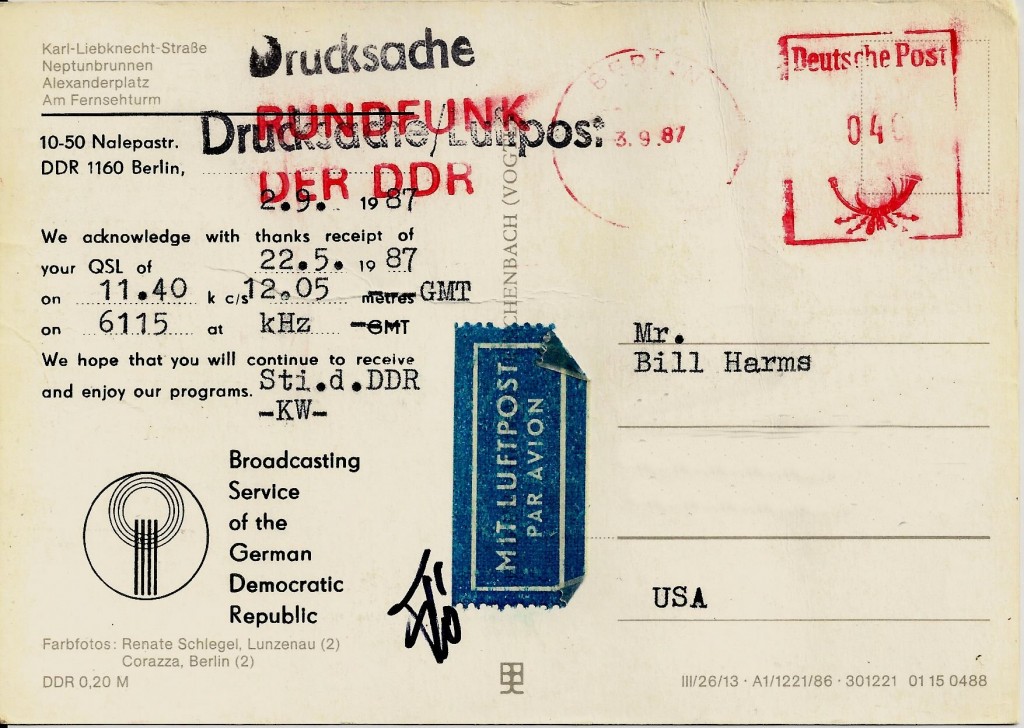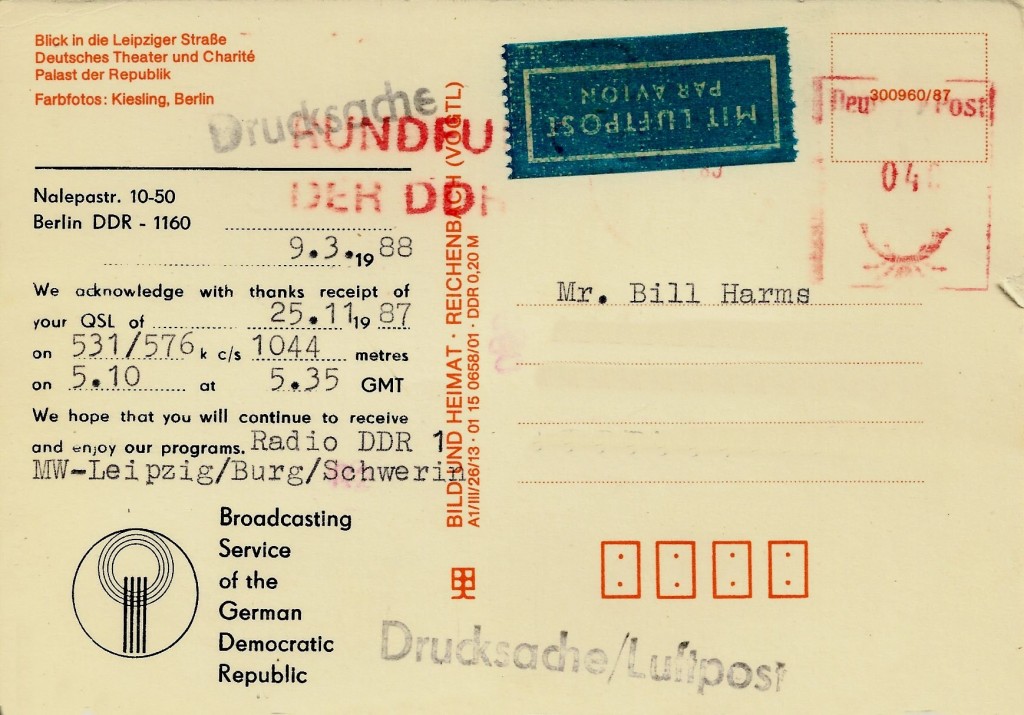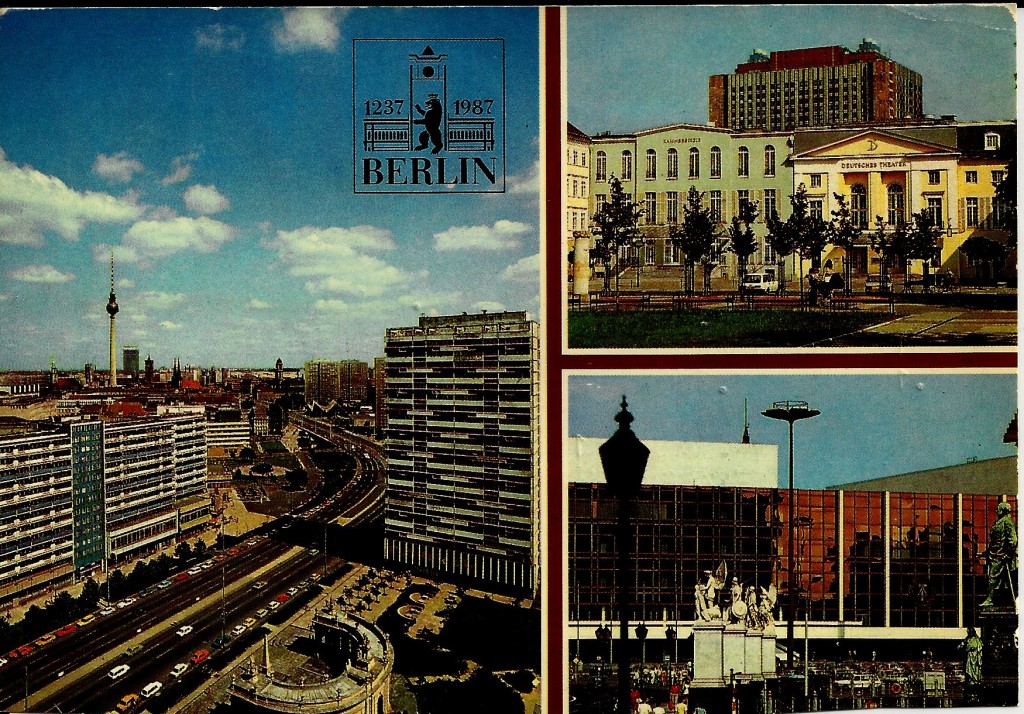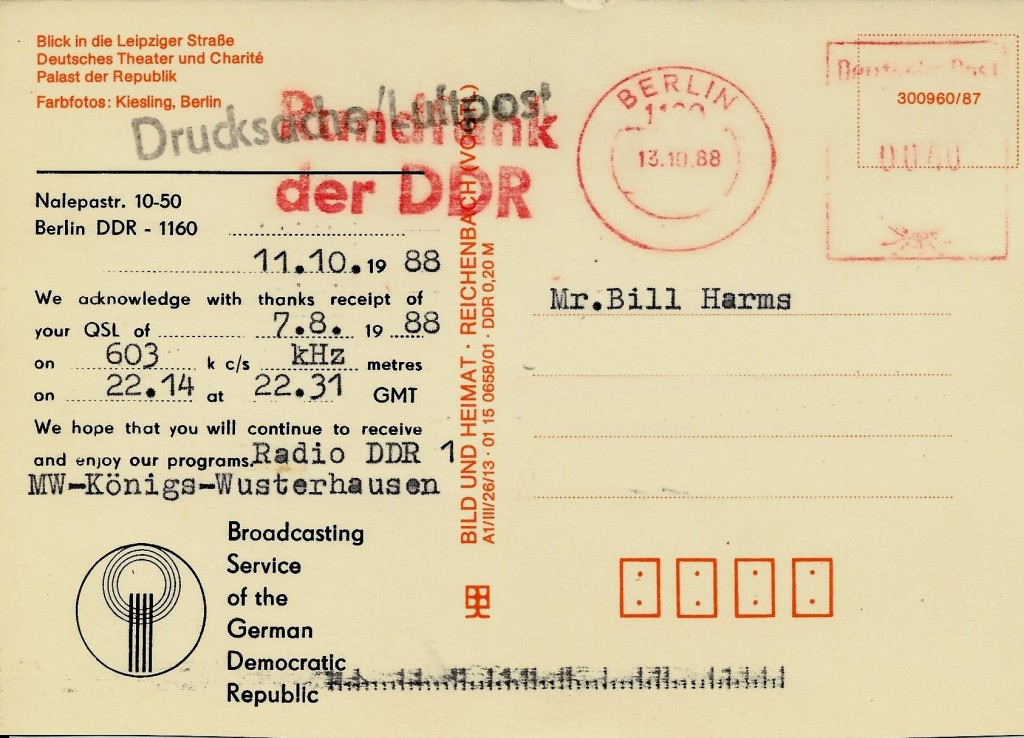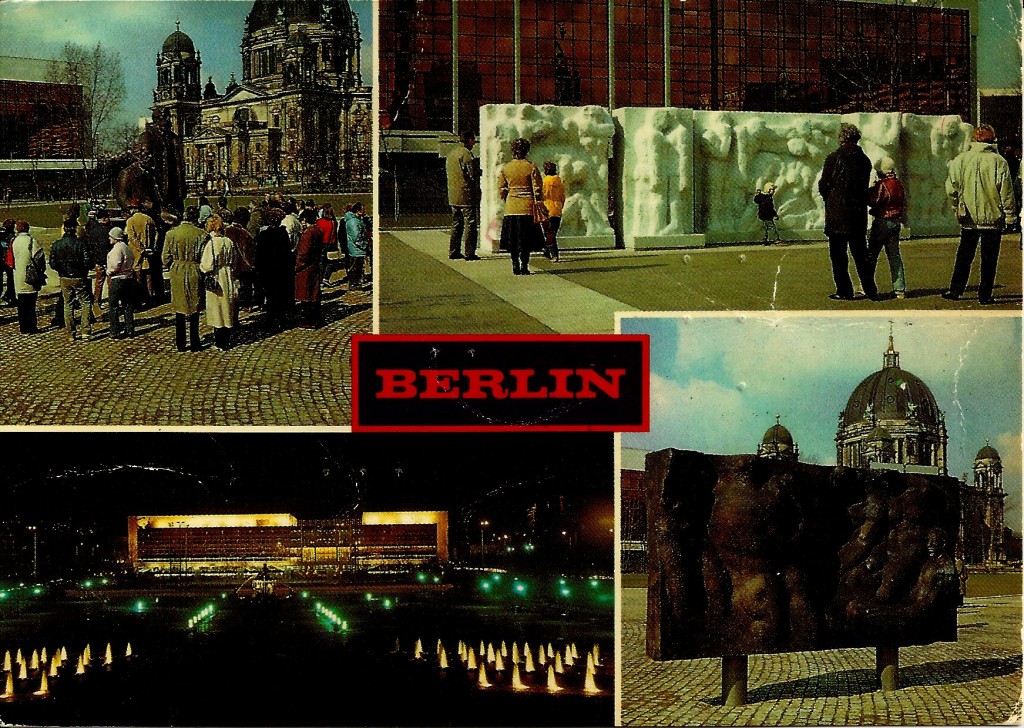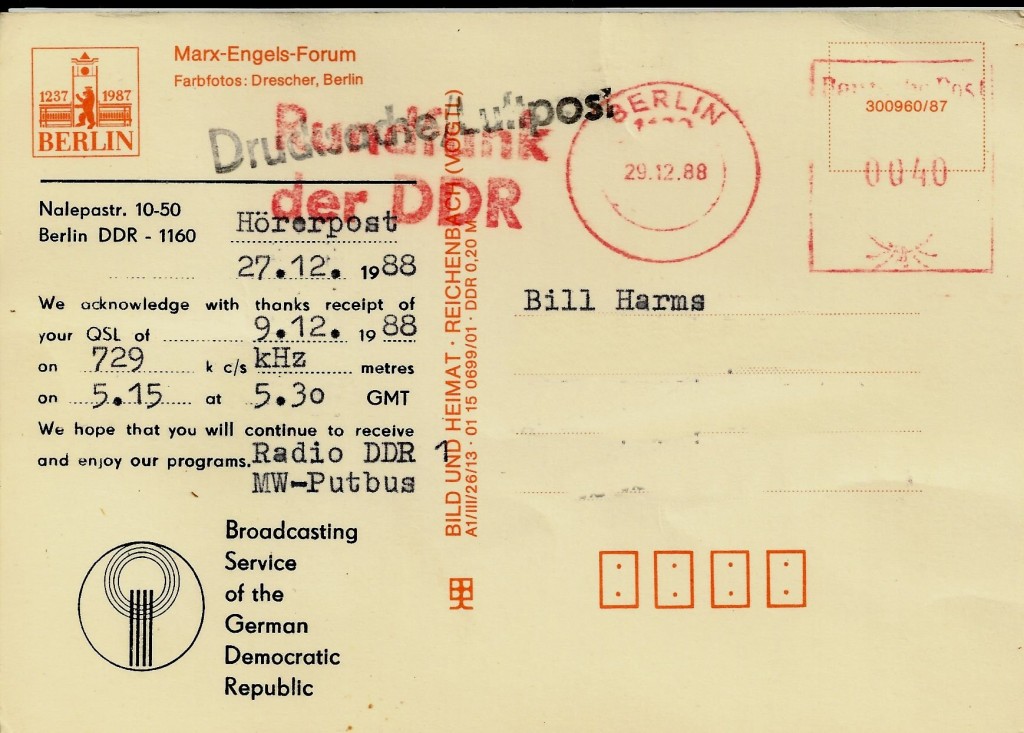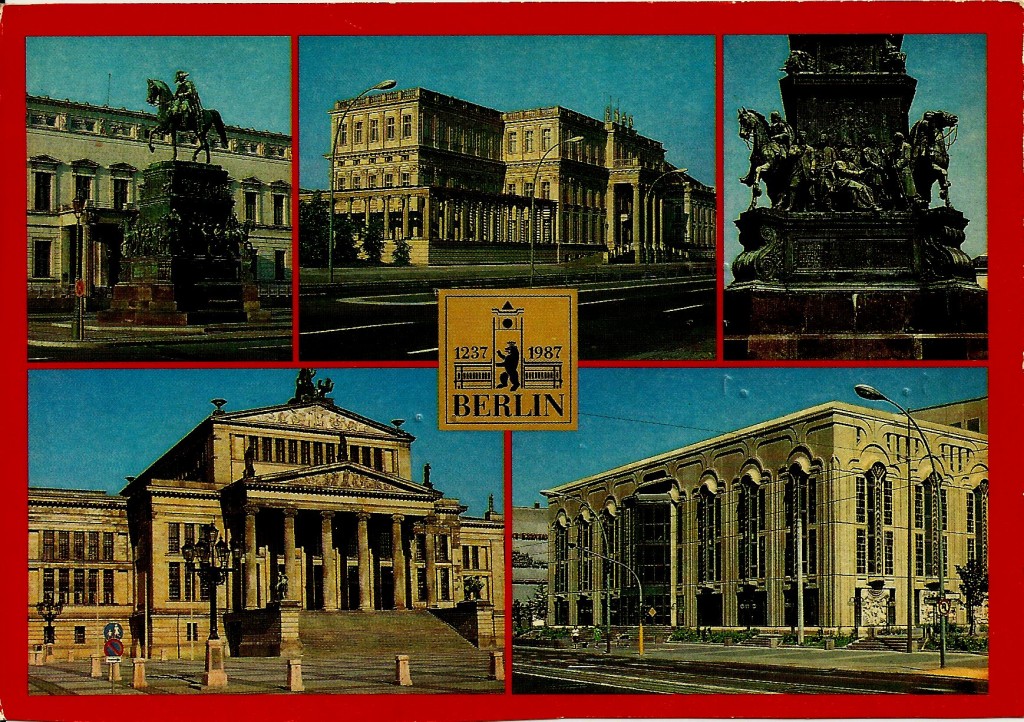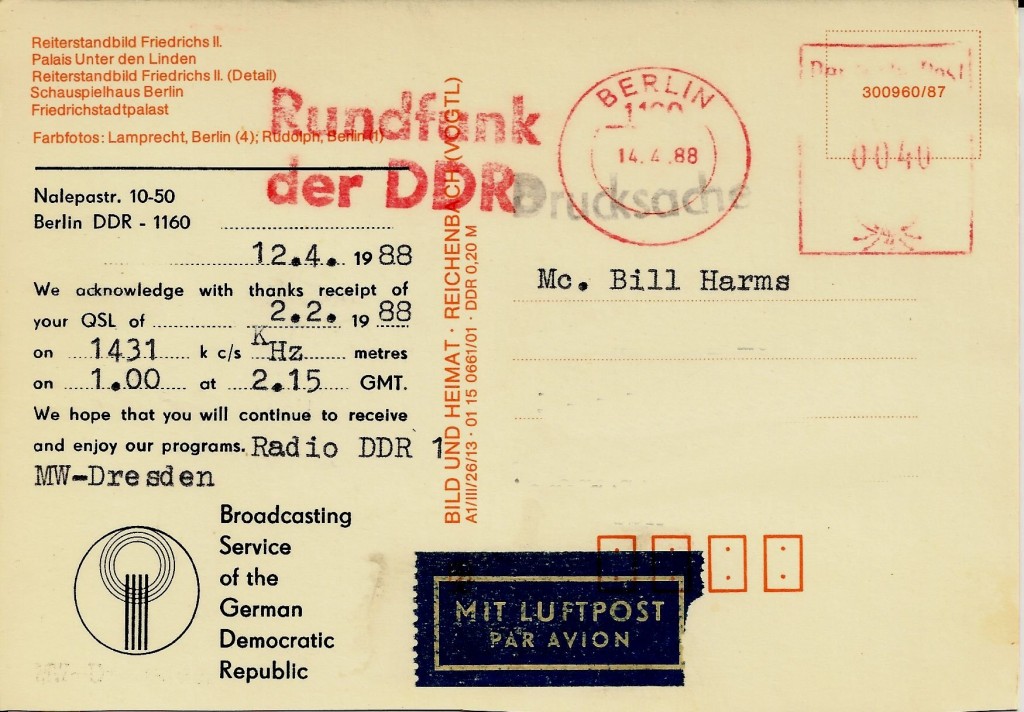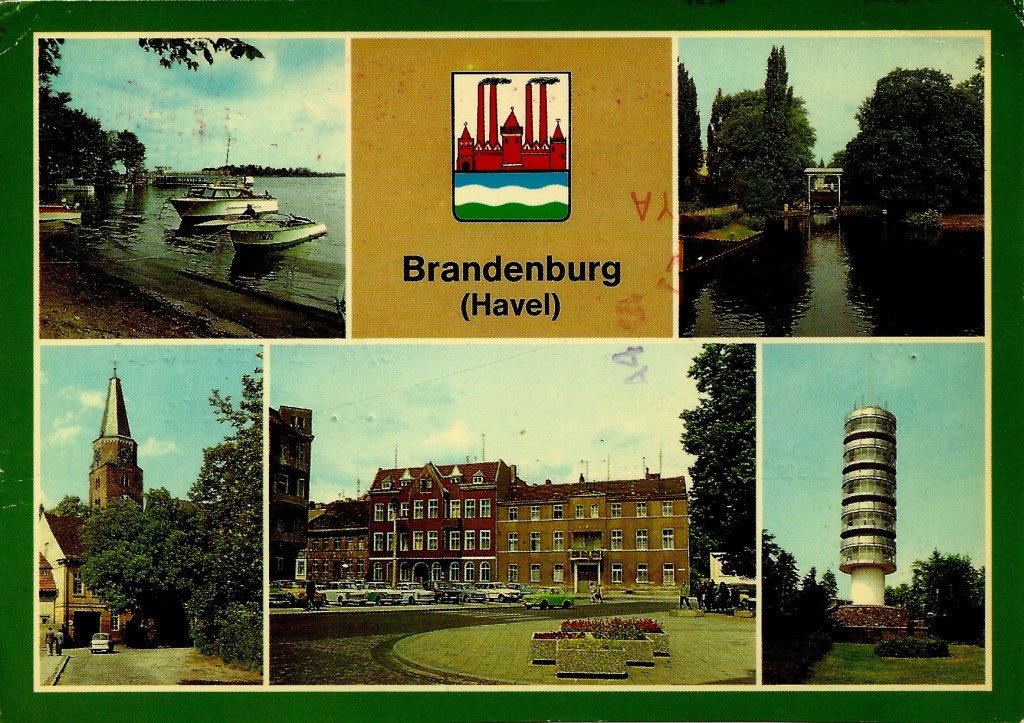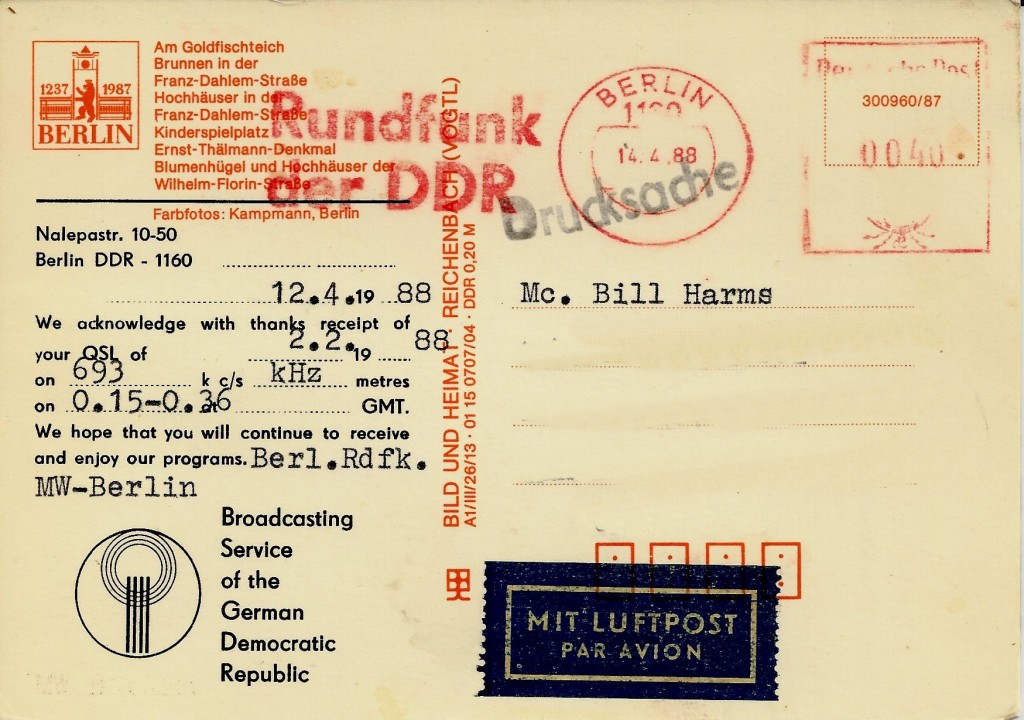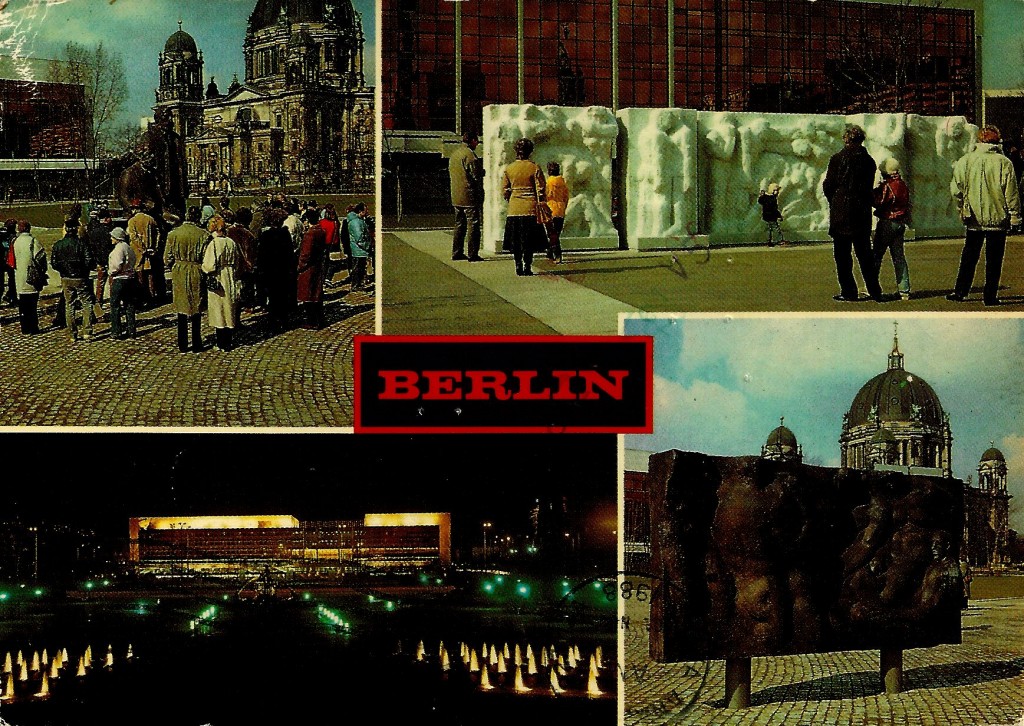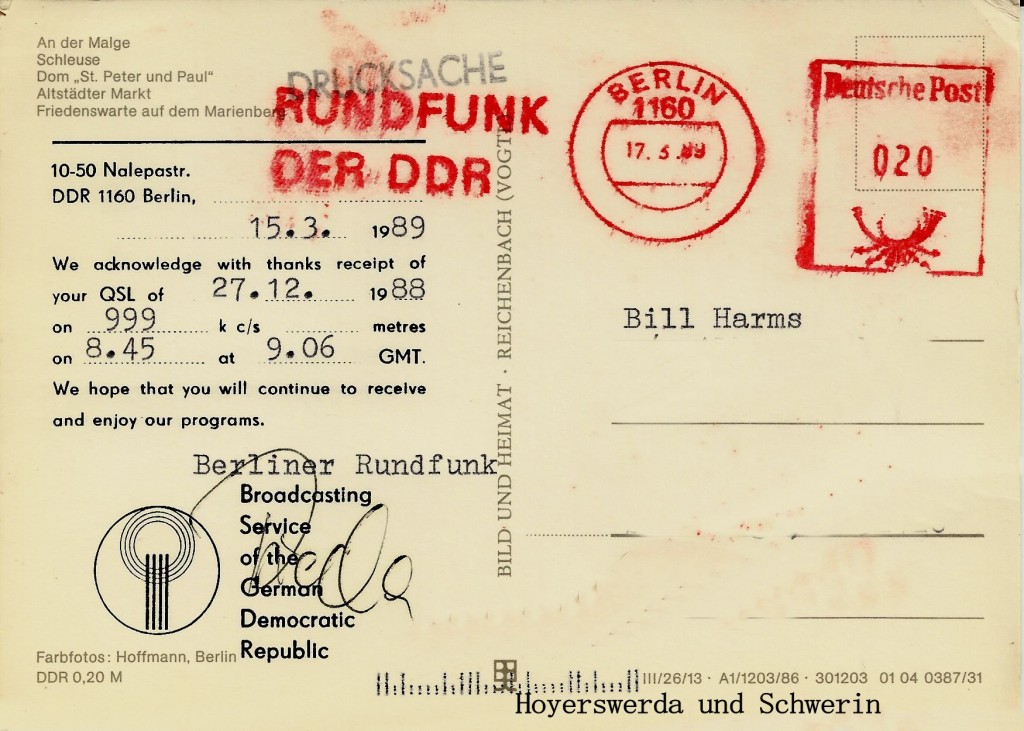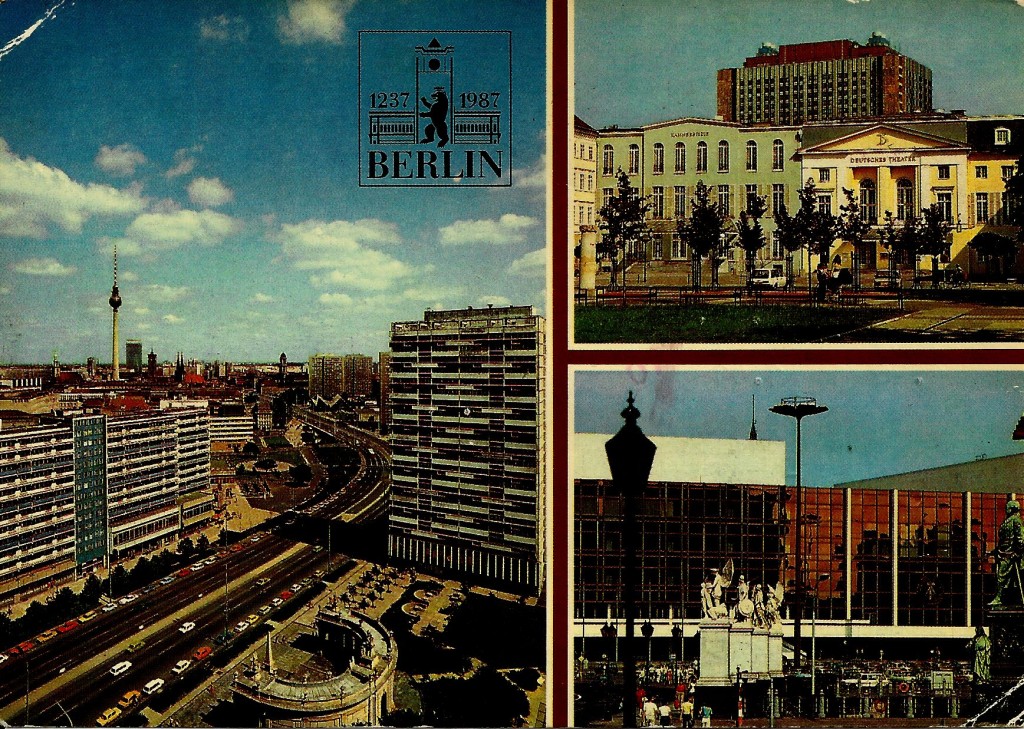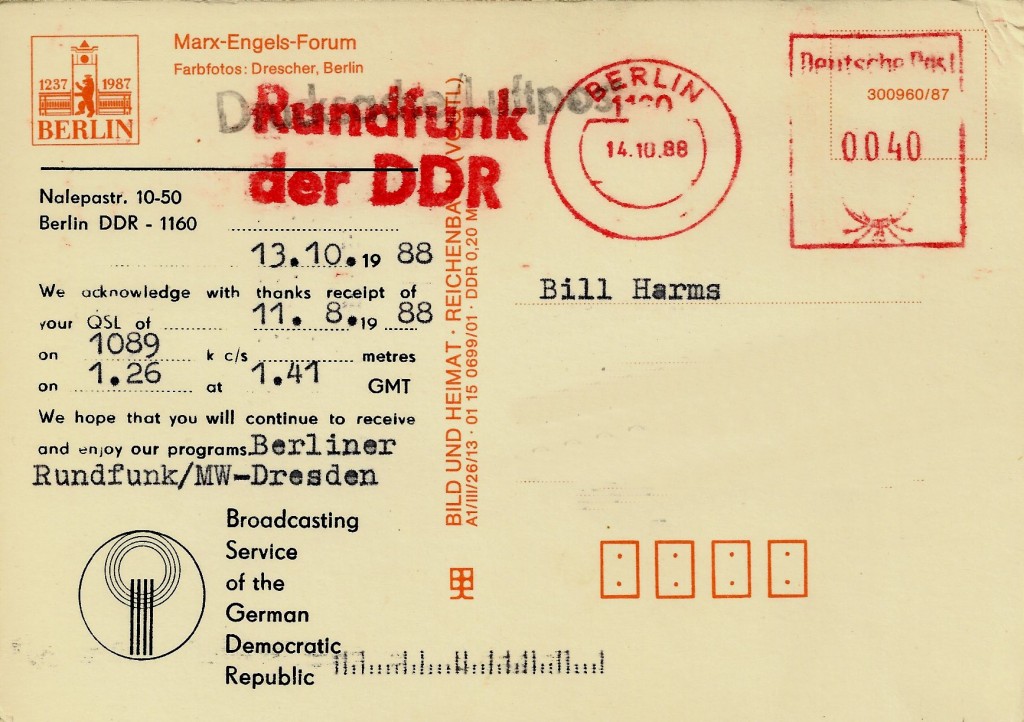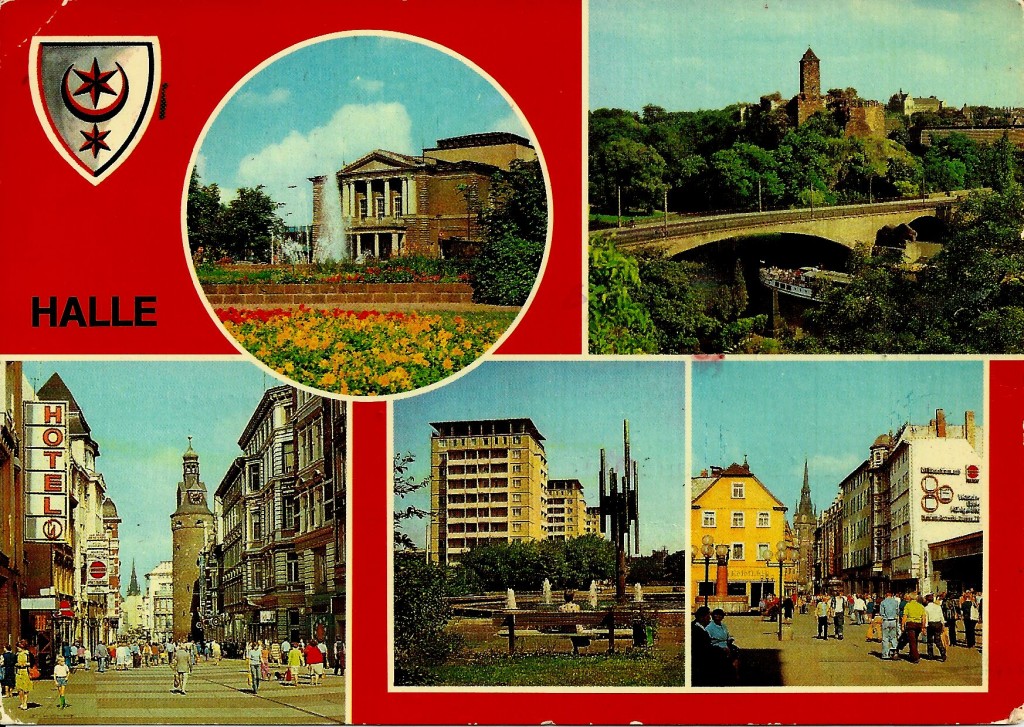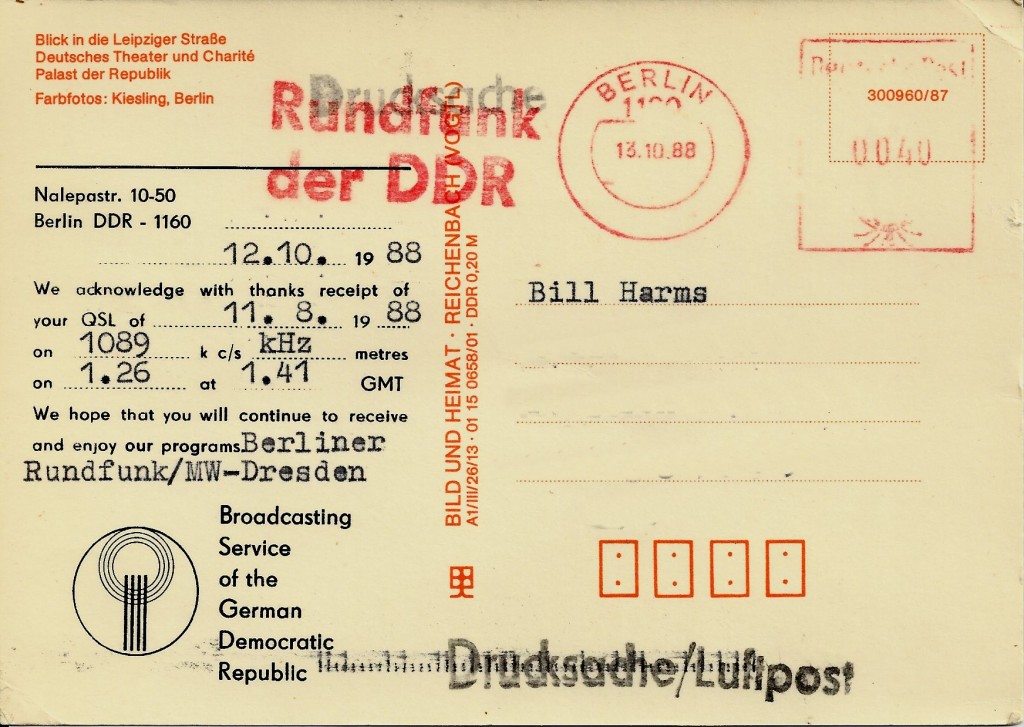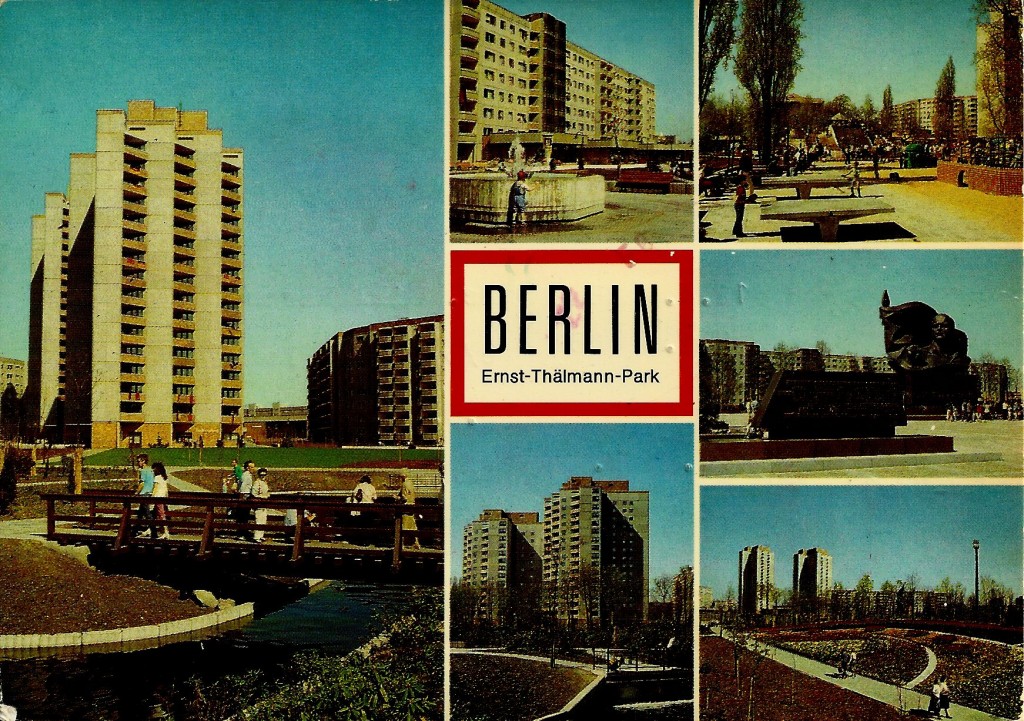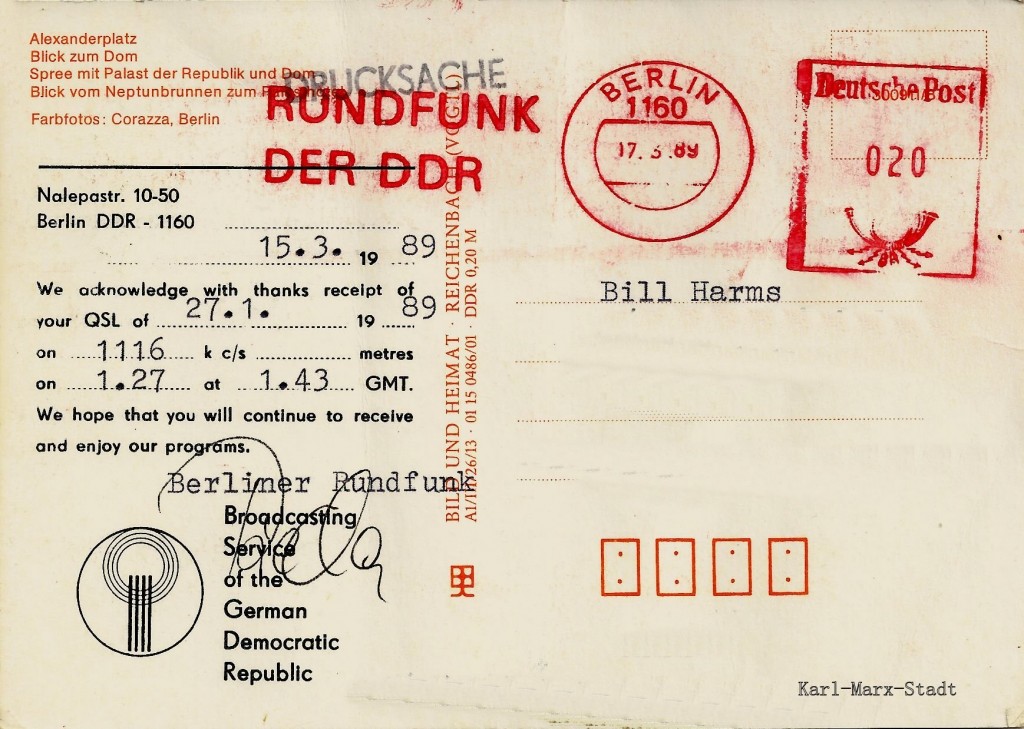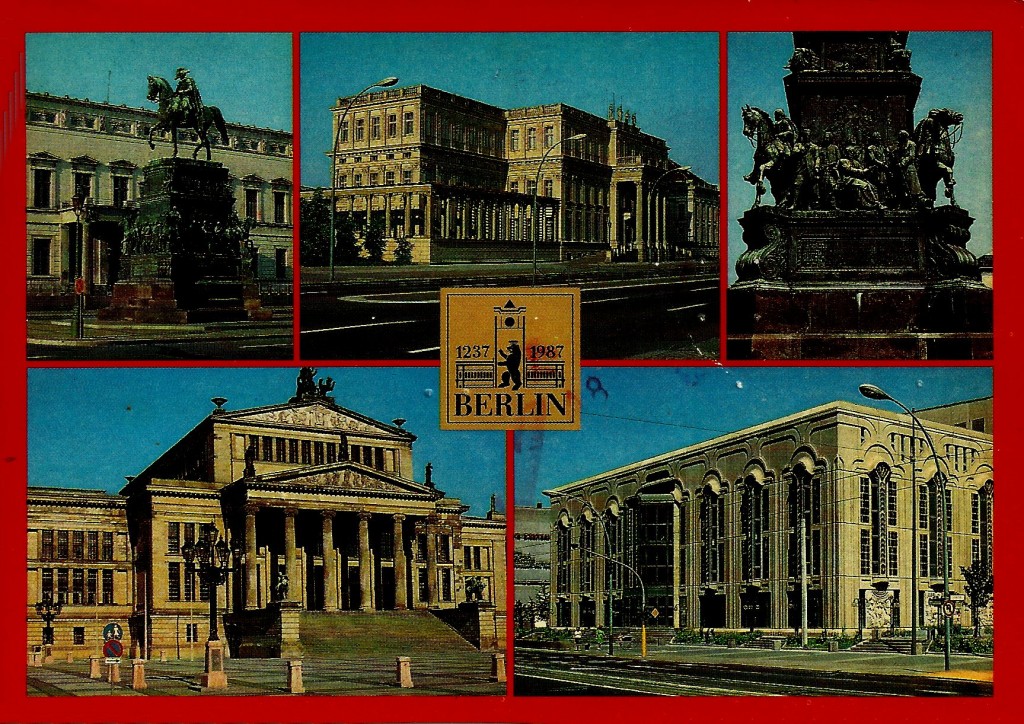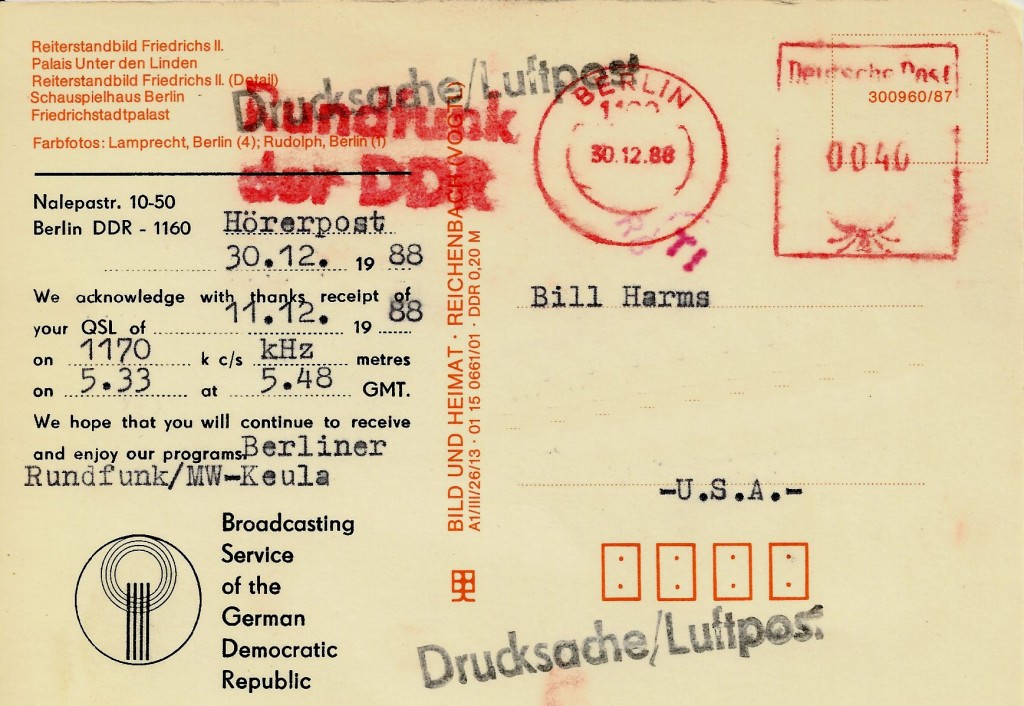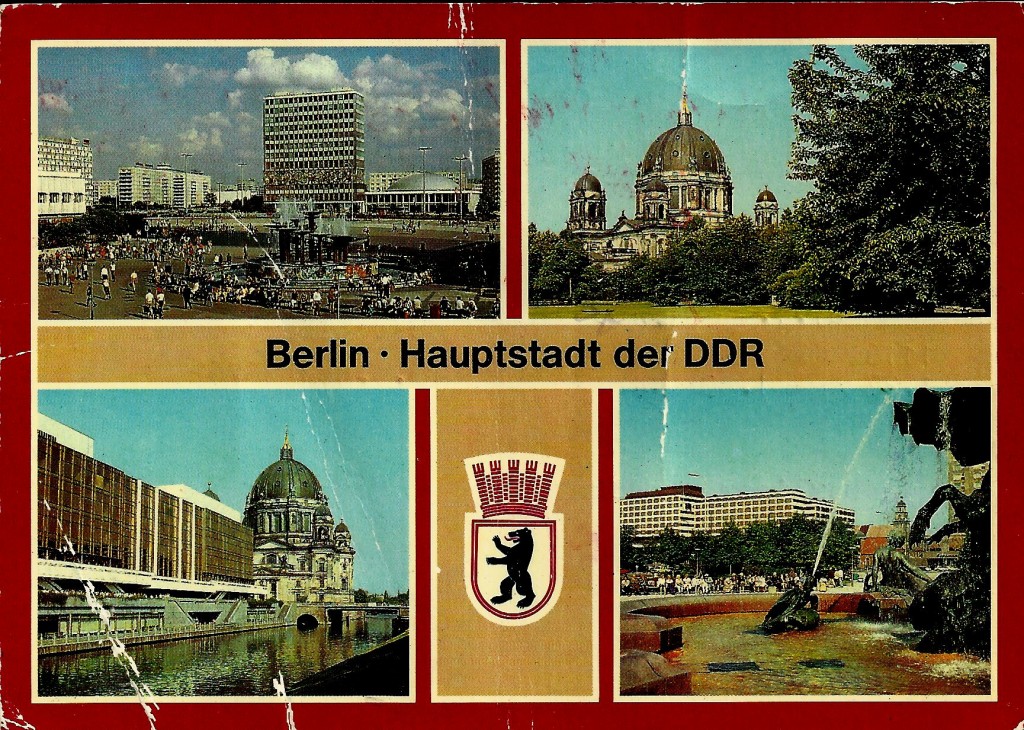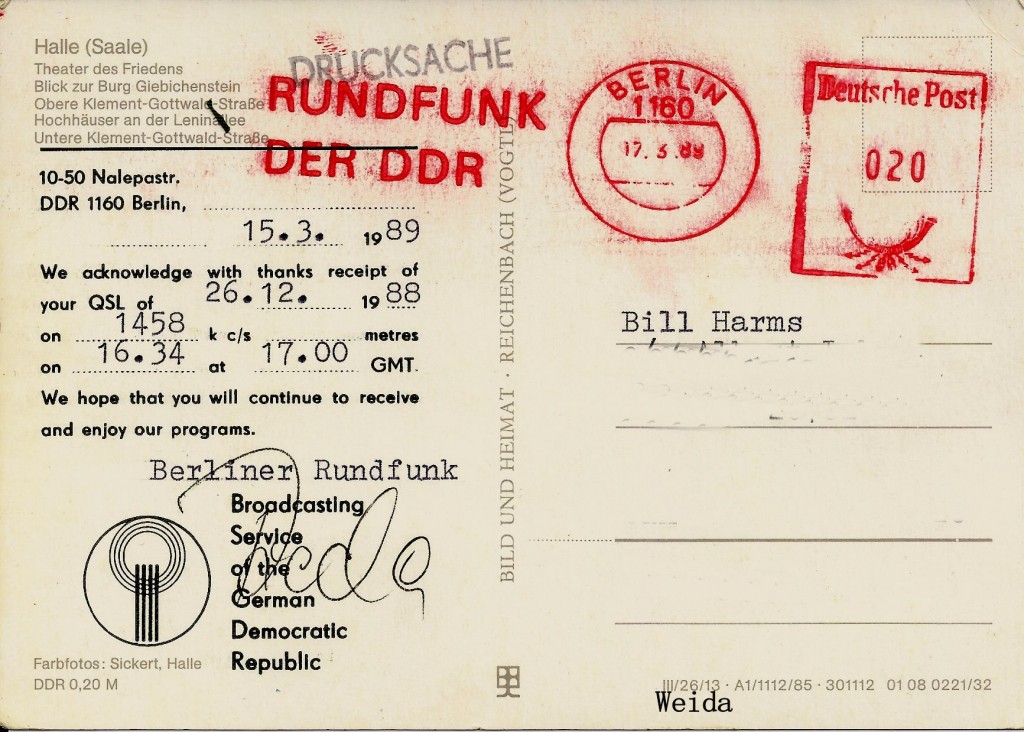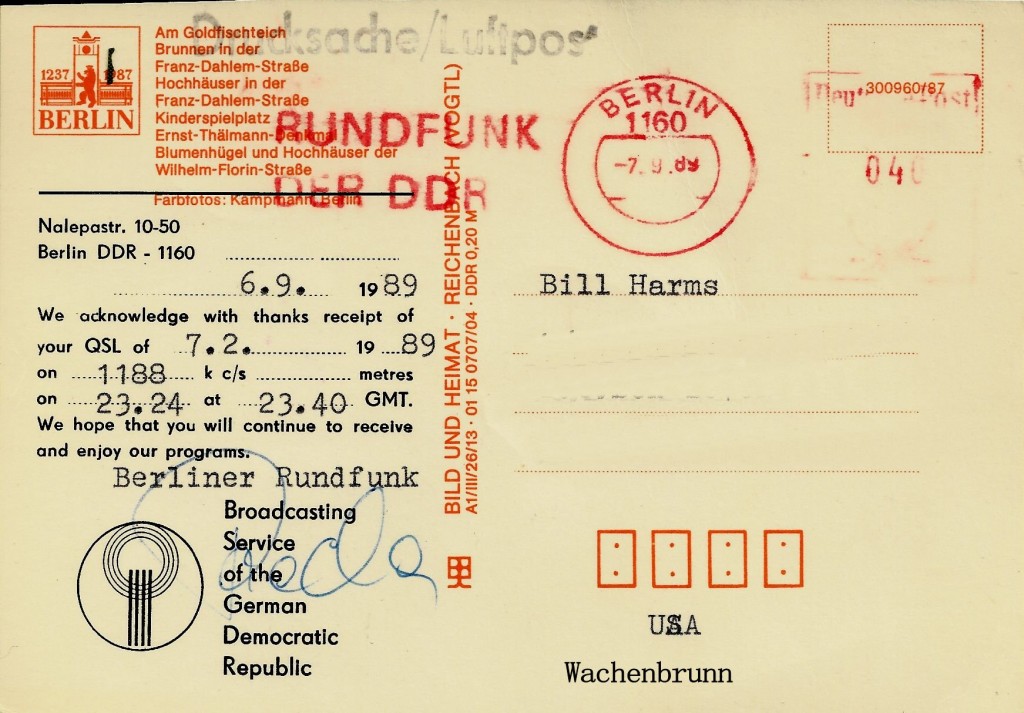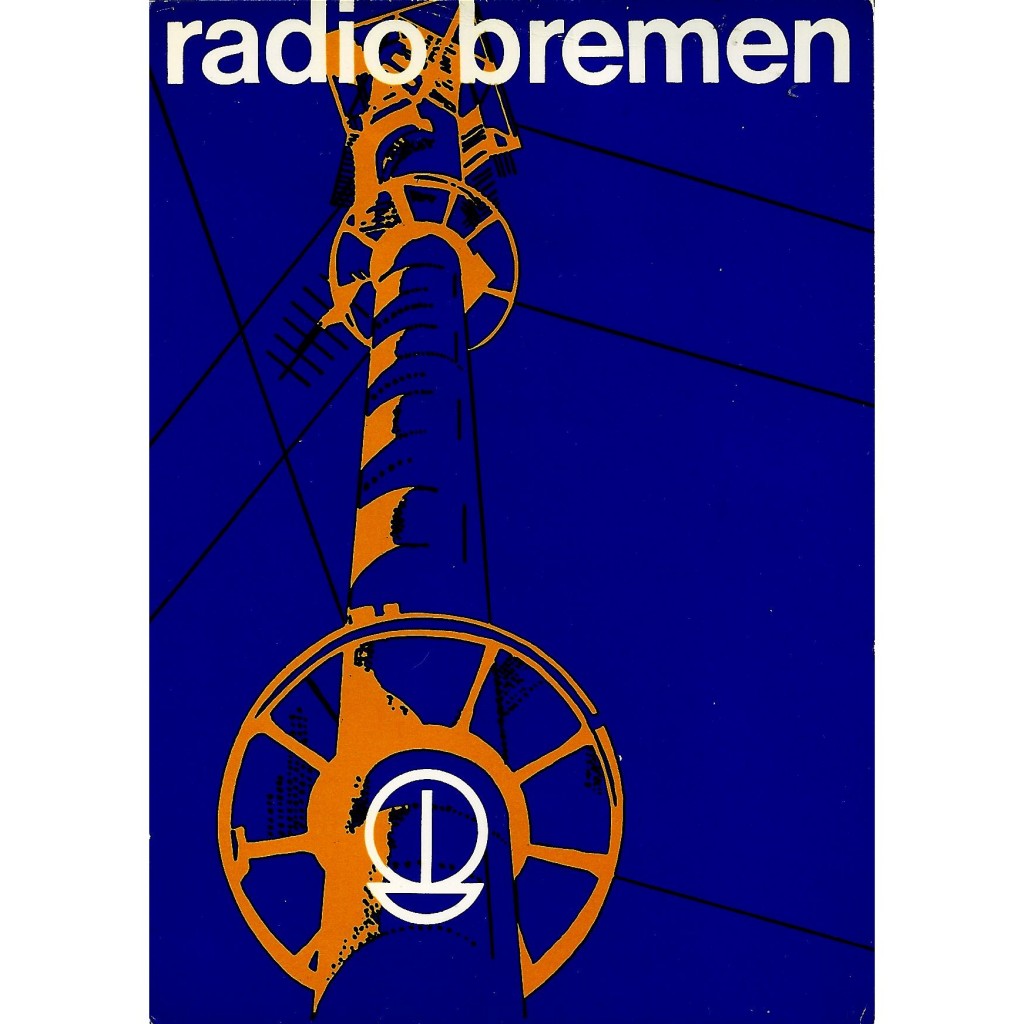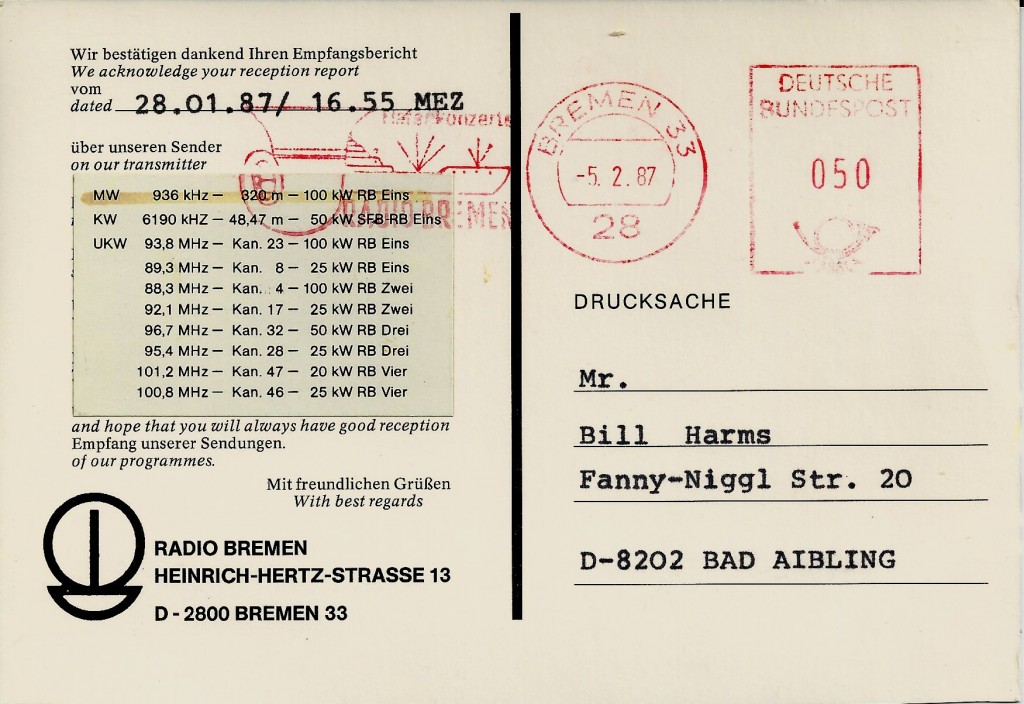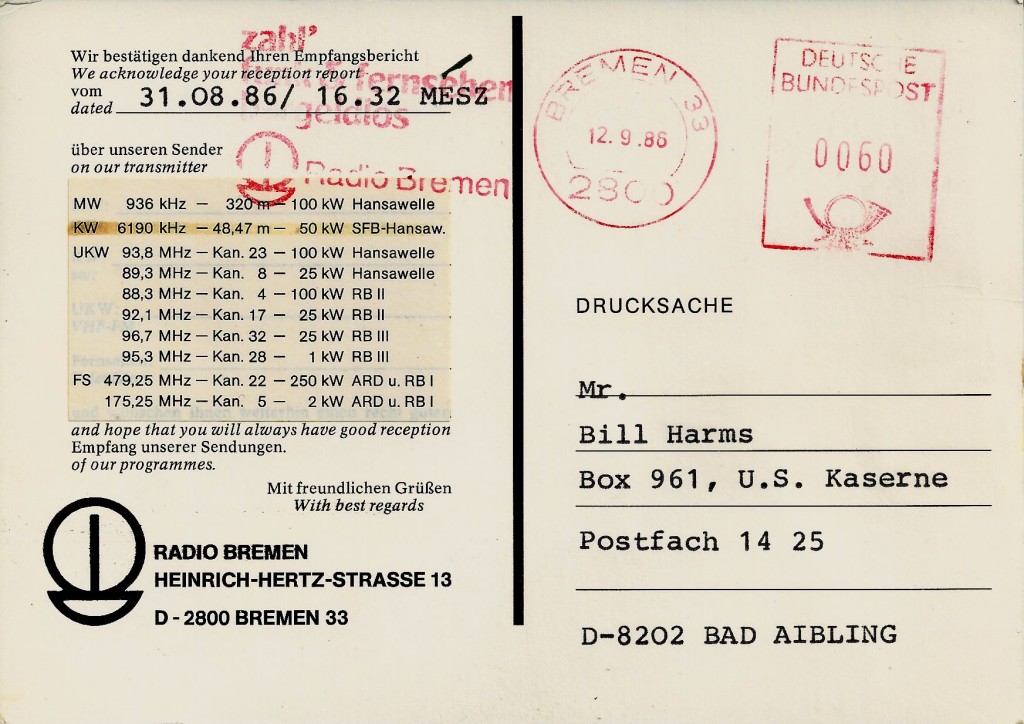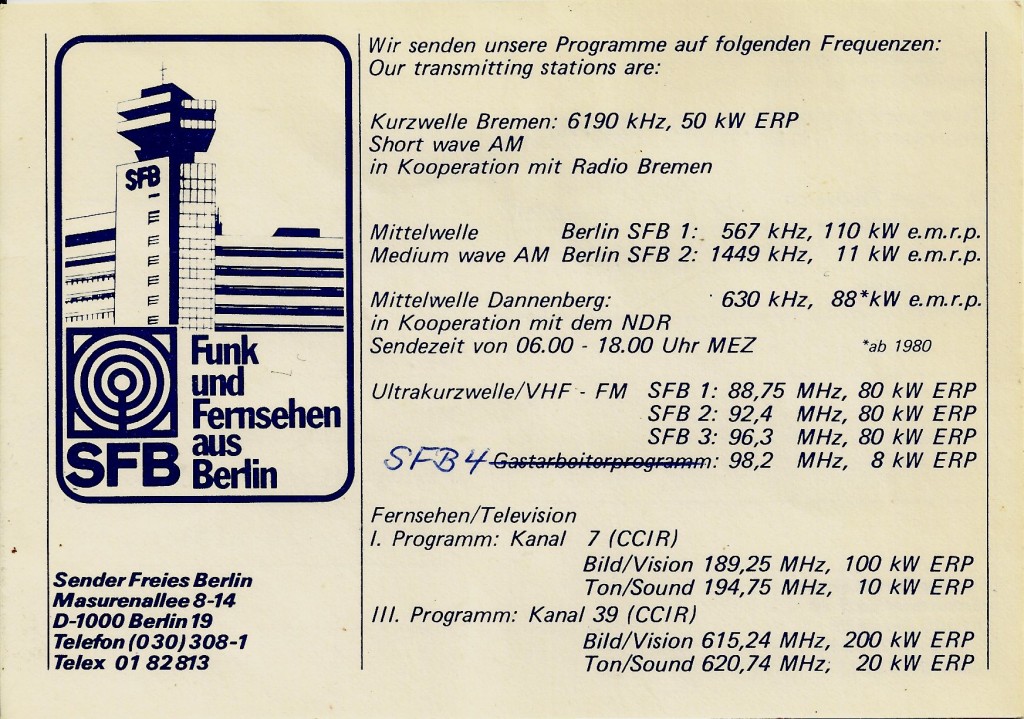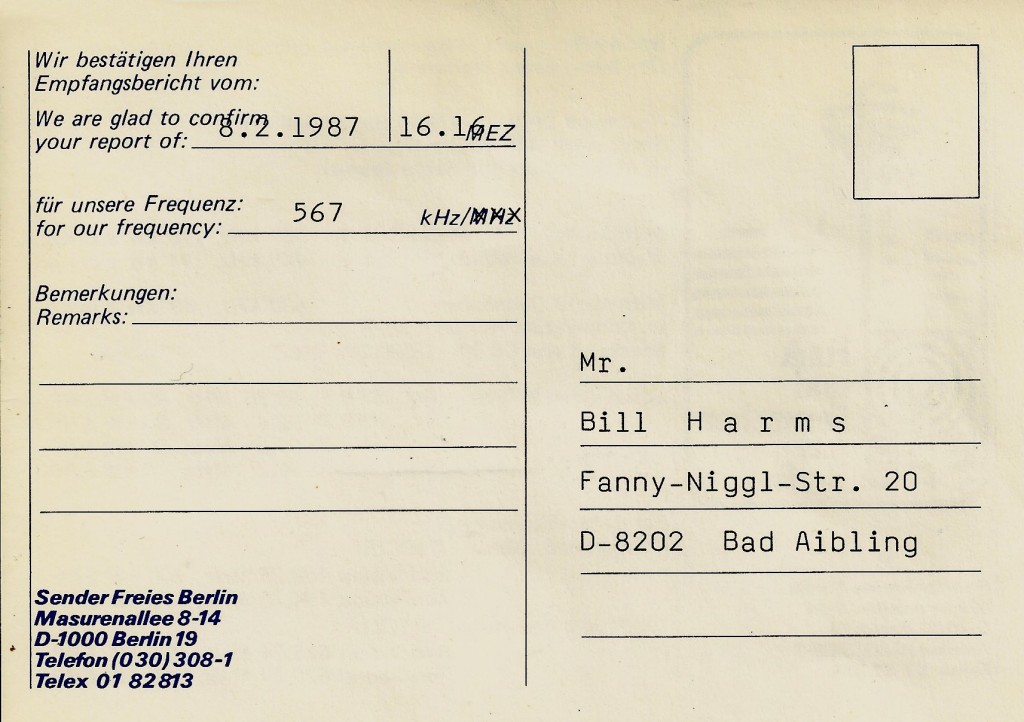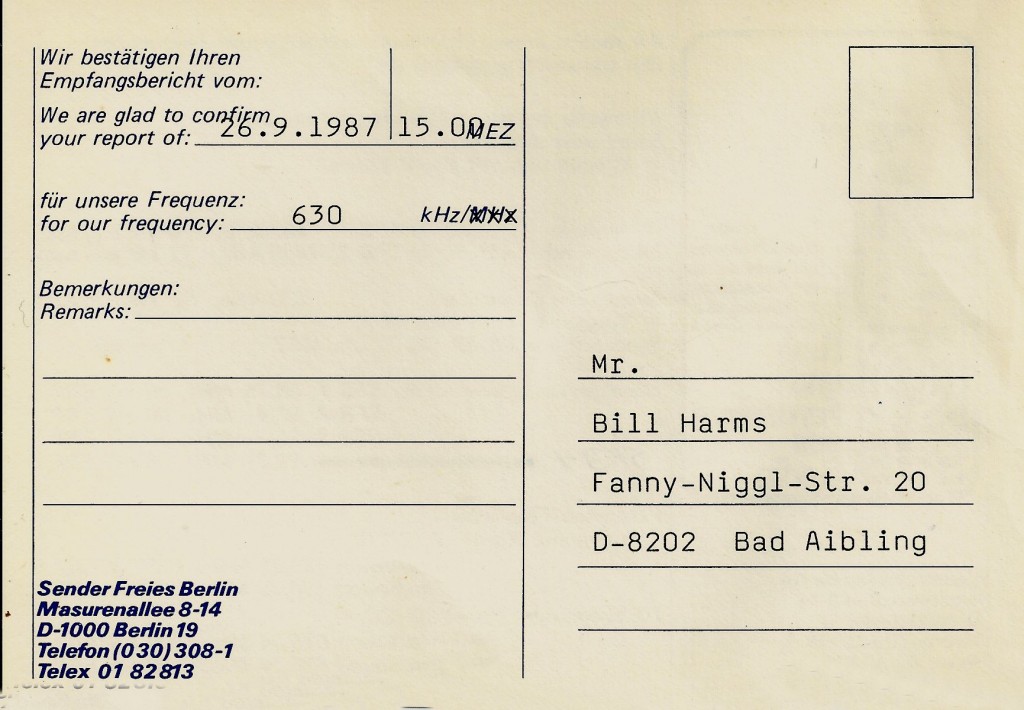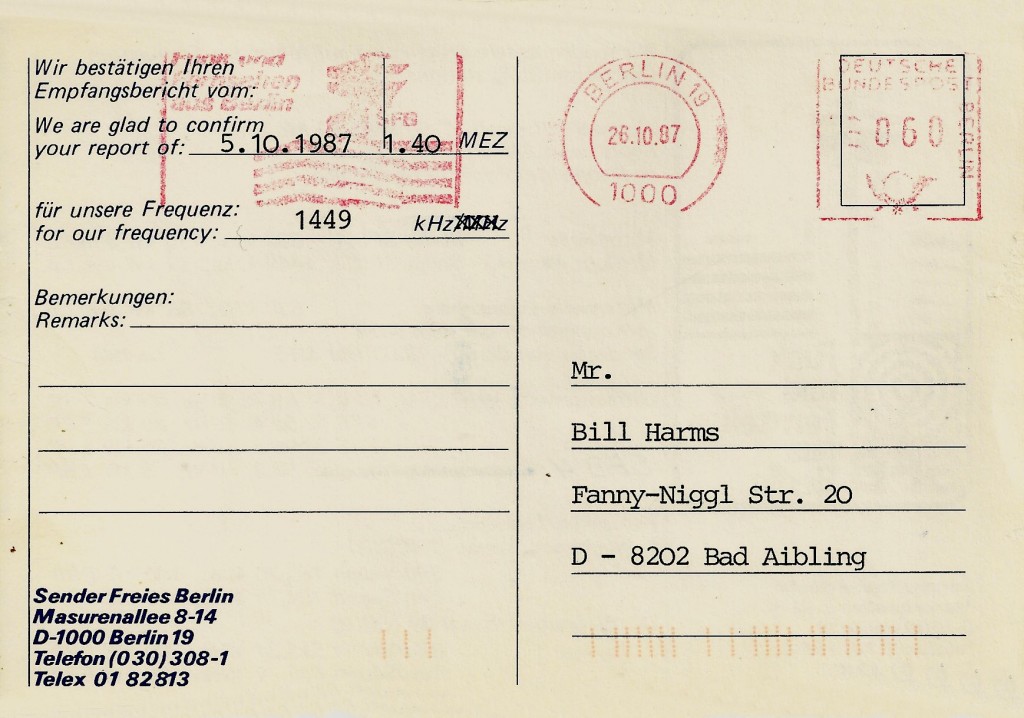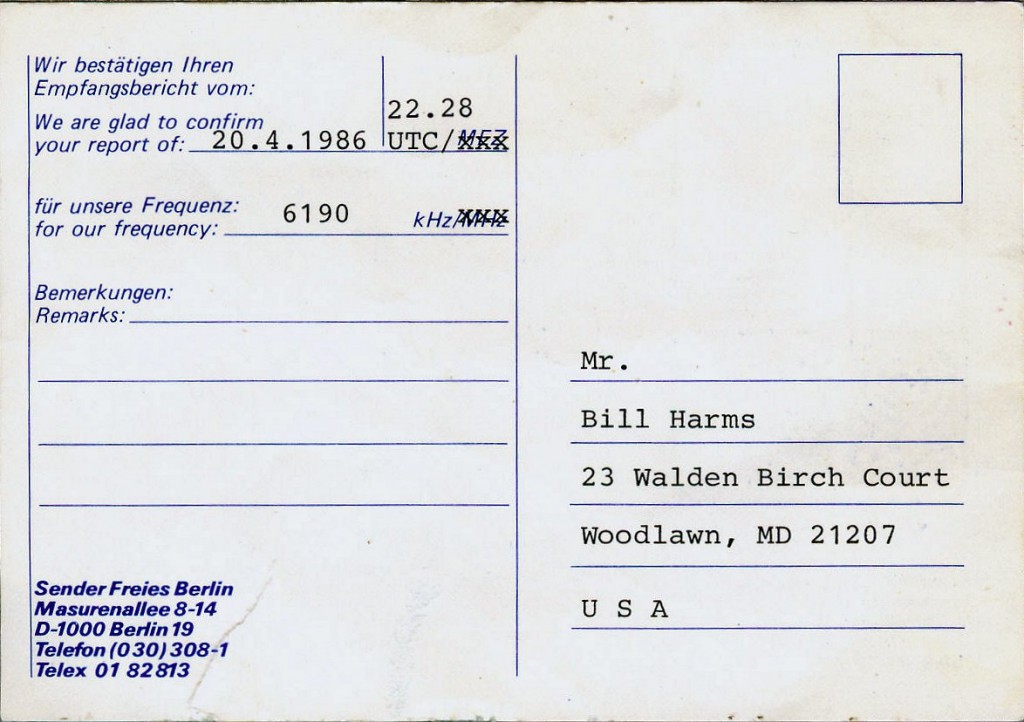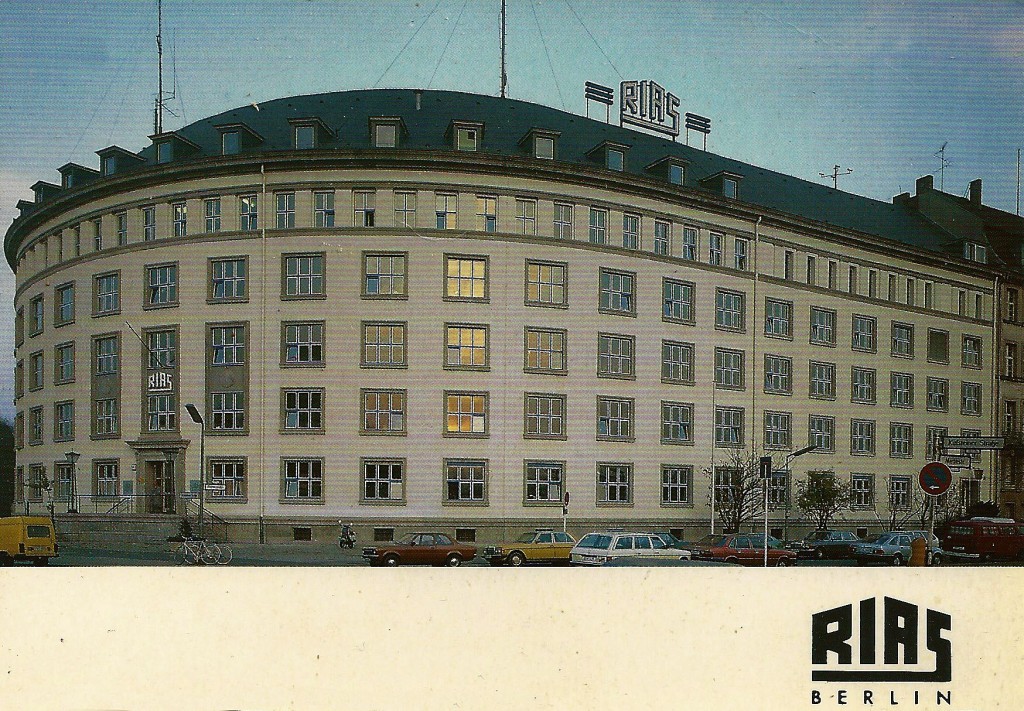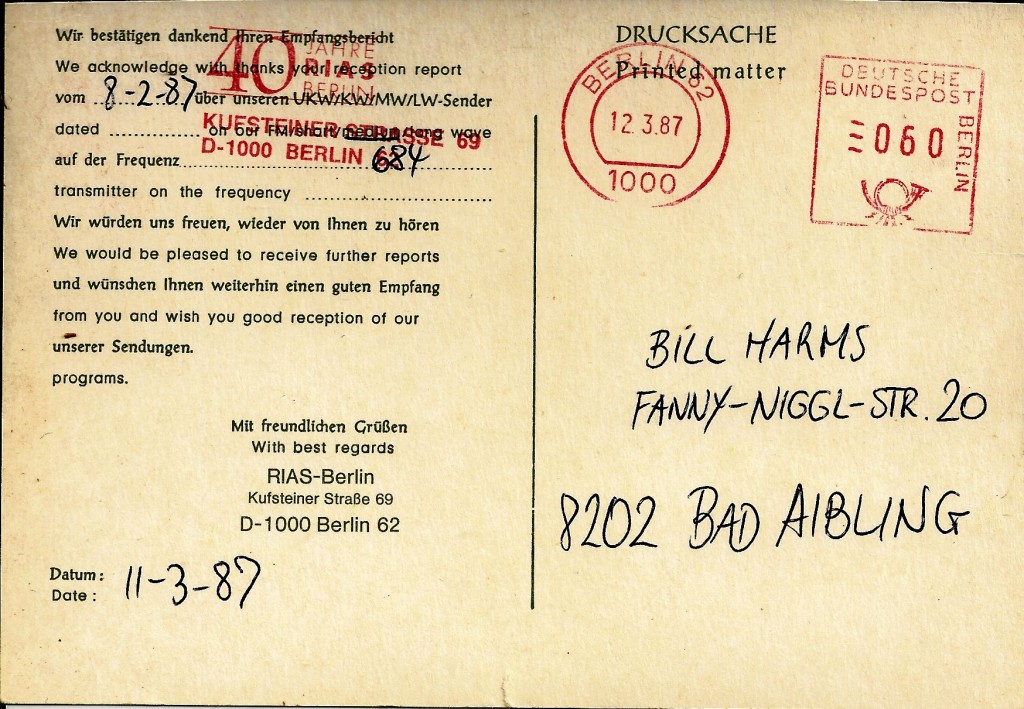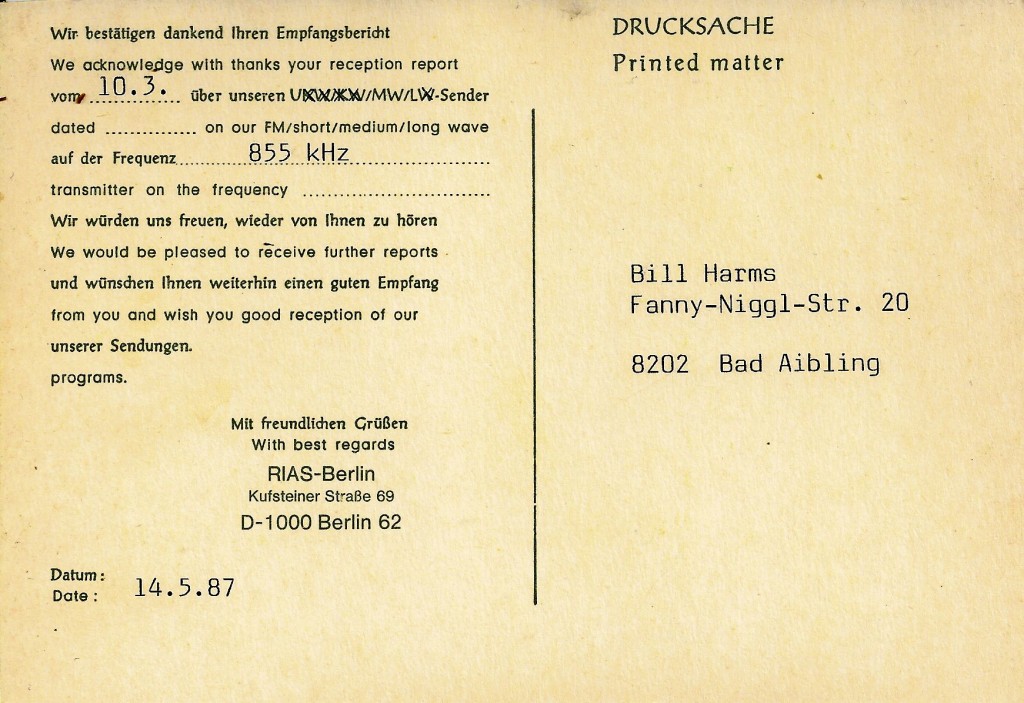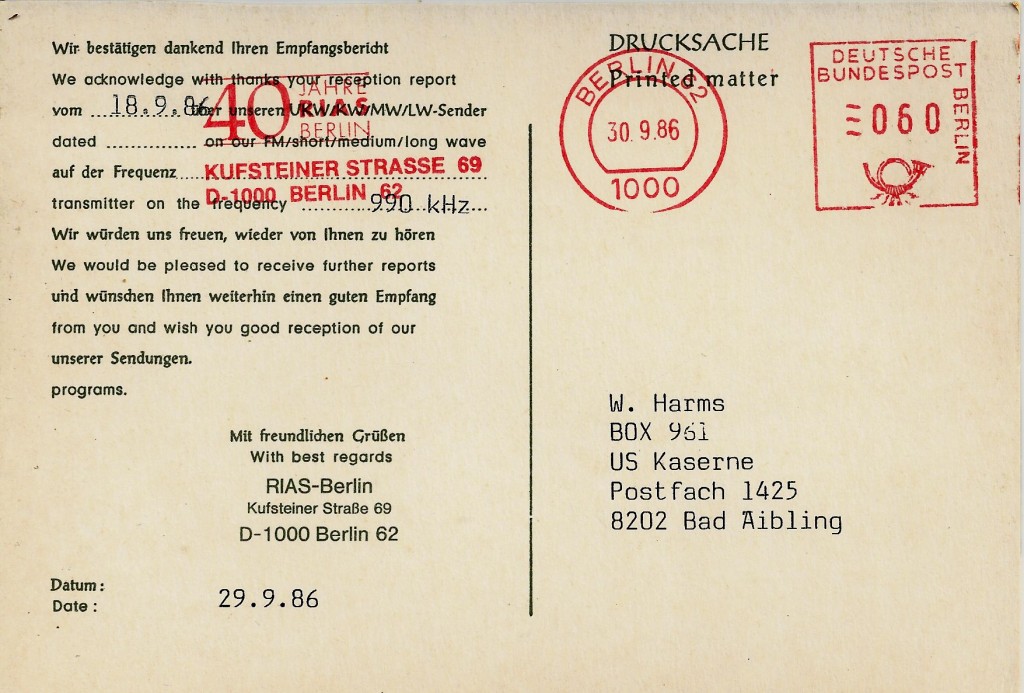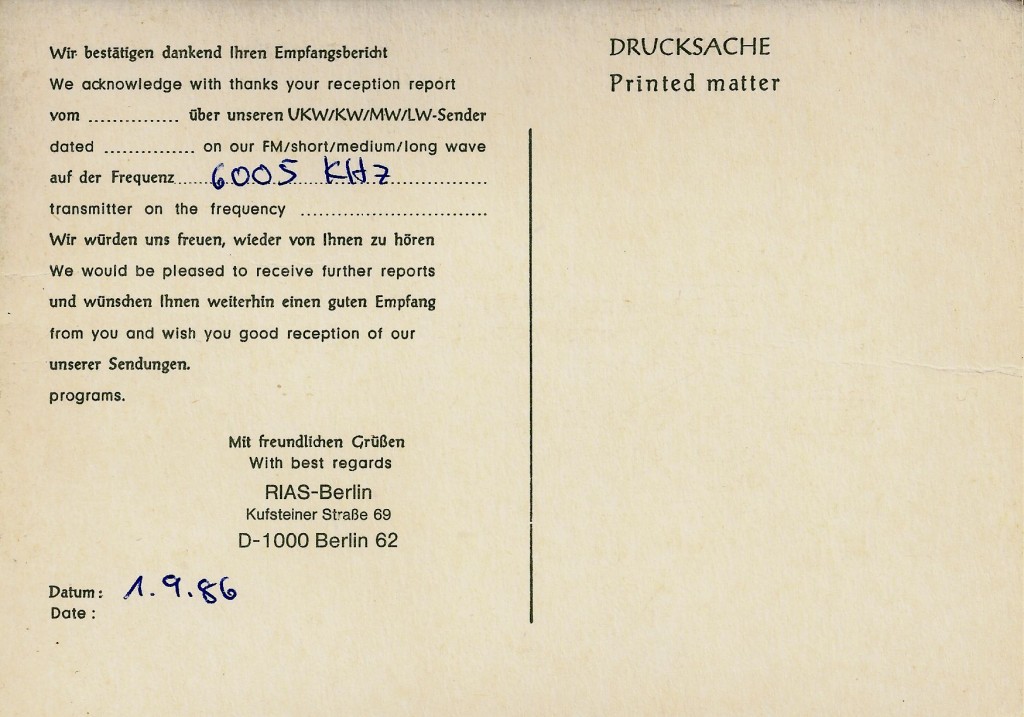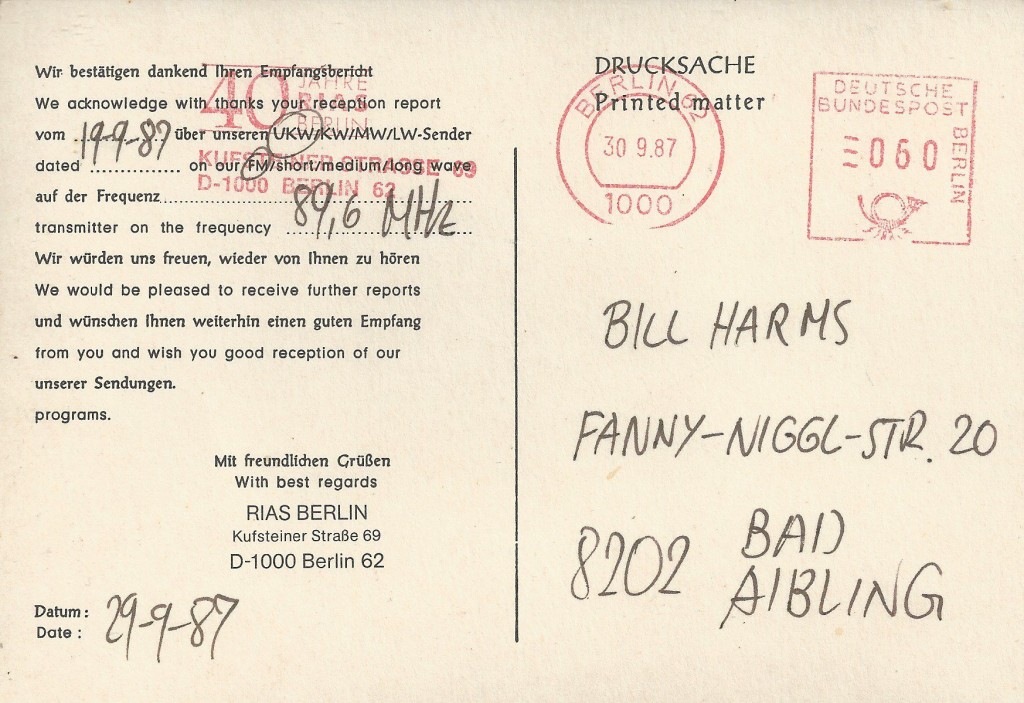Category Archives: QSL
Radio Station Peace and Progress
Vatican Radio
Radio Monte Carlo – (RMC)
Switzerland on Medium Wave
Sveriges Riksradio AB
Radio Nacional de España (RNE)
Radioteleviziunea Românăa
Polskie Radio – Radio Polonia
Radiodifusão Portuguesa (RDP)
Norsk Rikskringkasting (NRK)
NRK (an abbreviation of the Norwegian: Norsk rikskringkasting AS, generally expressed in English as the Norwegian Broadcasting Corporation)
Nederlandse Omroep Stichting (NOS)
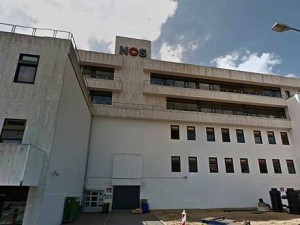
In the wake of the news that the Dutch radio stations on 675, 747, and 1251 kHz went off the air earlier this week (Click here) and that the medium wave tower at Lopik was already taken down after 75 years of service (Click here), I would like to feature this set of QSLs.
We could here the NOS medium wave outlets at our home in southern Germany. The QSL for the FM outlet is from a trip we took to Ostfriesland, Germany. That outlet was easily heard there.
Your comments are welcome. Please scroll down to see the QSL cards that they sent in reply to my reception reports.
Österreichischer Rundfunk on Medium Wave
Radio Television Luxemburg
SW and MW stations from Cyclops, Malta
Capital Radio
BBC Essex
LBC 1152 kHz
Invicta Radio
Independent Local Radio
Manx Radio 1368
Isle of Man
Manx Radio 219 on 1368 kHz was a regular at our home in Southern Germany. They first signed on the air in the mid 1960’s and should be able to be heard in coastal areas of North America.
I enjoyed listening to their local programs late at night. My second great grandmother Margaret Alice Watterson immigrated from the Isle of Man to the USA in 1850 so it was fun finding a connection through this station. They sent me this QSL, a history sheet, a program schedule, and a sticker for my reception report.
Greater London Radio (GLR) – 1458
BBC on Medium Wave
France Bleu Alsace – 1278 kHz
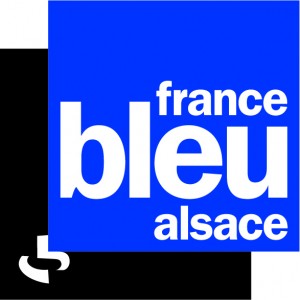 France Bleu Alsace on 1278 kHz put in a very strong signal at our home in Southern Germany, and I have heard it a few times here in Maryland. I sent a report to Radio France International (RFI) for this outlet with the hope they could help me receive a QSL verification. RFI replied with the folder card below with a handwritten verification message on it. The transmitter is located in the Strasbourg area. (Scroll down to see the QSL verification.) I understand that this outlet also broadcast RFI programs at times.
France Bleu Alsace on 1278 kHz put in a very strong signal at our home in Southern Germany, and I have heard it a few times here in Maryland. I sent a report to Radio France International (RFI) for this outlet with the hope they could help me receive a QSL verification. RFI replied with the folder card below with a handwritten verification message on it. The transmitter is located in the Strasbourg area. (Scroll down to see the QSL verification.) I understand that this outlet also broadcast RFI programs at times.
Danmarks Radio – DR
Westdeutscher Rundfunk – WDR
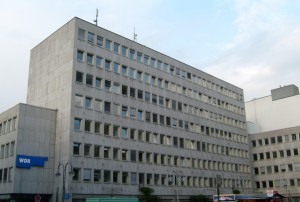
Westdeutscher Rundfunk is a public broadcaster headquartered in Cologne (Köln), which serves the German Federal State of North Rhine-Westphalia. It consists of six radio networks and a television network. It was formed in 1956 when the Nordwestdeutscher Rundfunk split into the Norddeutscher Rundfunk and Westdeutscher Rundfunk. You can find their website here http://www1.wdr.de/themen/index.html
We could regularly hear their medium wave outlets in southern Germany where we lived. We heard their FM outlets during a visit to Northern Germany. Their 1593 kHz outlet was widely heard throughout Europe and other continents. They sent the QSL cards below for my reception reports. Their QSLs for 720 and 1593 kHz are among my favorites in my collection.
(Scroll down to see the QSL cards WDR sent for my reports.)
Raidió Teilifís Éireann – RTÉ
(Above photo: Raidió Teilifís Éireann, Athlone, transmitter and antenna (612 kHz) courtesy of Scott Fybush – www.fybush.com)
Raidió Teilifís Éireann is a semi-state company and the national public service broadcaster of Ireland. Founded in January 1926 as Raidió Éireann, it is one of the oldest public broadcaster in continuous operation in the world.
I was able to easily hear Raidió Teilifís Éireann (RTÉ) on their medium wave frequencies at our home in southern Germany, and their 567 kHz outlet was an occasional catch here in Maryland before they went off the air.
As of this writing, they are still on the air on their longwave outlet of 252 kHz. In the past 20 years or so, they also have relayed their programs on shortwave. They currently relay their Radio One program for one half hour per day via a shortwave transmitter in Meyerton, South Africa on 5820 kHz at 1930 to 2000 UTC.
Their web site is at http://www.rte.ie/
(Scroll down to see the QSLs RTÉ sent back for my reports.)
REFERENCE:
Scott Fybush, Raidió Teilifís Éireann, Athlone, Ireland; http://www.fybush.com/sites/2011/site-111028.html; last accessed on 25 August 2015
RAI – Radiotelevisione Italiana
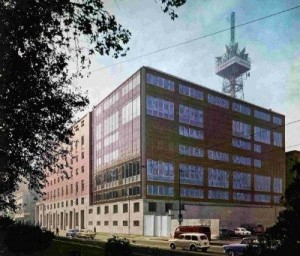
Logging the various Radiotelevisione Italiana (RAI) medium wave outlets was fun. Trying to log the individual local programs was a challenge. I managed to log about 8 or 10 of them. The receptions of RAI Bolzano on 657 kHz and 1602 kHz was for the local German language programs with the reception reports going directly to their local studio.
RAI was a very good verier with a nearly 100 percent reply rate. Below, you can see the QSLs they sent in response for my reception reports. In some cases, they sent two different QSL cards for the same reception report. Apparently, two offices saw the reports and each responded separately. I also logged their RAI 2 outlet on shortwave (7275 kHz) from Sicily and received a QSL card in return for my report.
RAI is Italy’s national public broadcast network. It consisted of three program streams on medium wave, with local breakouts at various times. Today, there are around ten program streams with RAI 1 dominating medium wave. Recently, RAI has run to debt problems with over 442 billion Euros owed.
Look for the QLS card below. (Yes, they issued both QLS and QSL cards. And yes, it is an obvious typo.)
REFERENCE: Corte dei Conti, alert sul debito della Rai http://www.repubblica.it/economia/2015/03/13/news/corte_dei_conti_rai-109444031/
BBC Radio Scotland
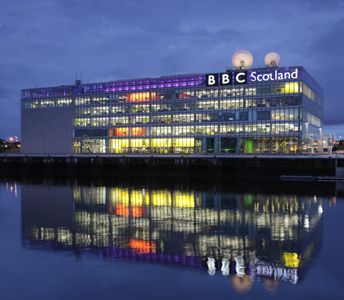 BBC Radio Scotland sent this nice looking QSL card for my reception report of their 810 kHz outlet. They were a fairly easy catch in Southern Germany but had to contend with interference from Radio Skopje in Macedonia.
BBC Radio Scotland sent this nice looking QSL card for my reception report of their 810 kHz outlet. They were a fairly easy catch in Southern Germany but had to contend with interference from Radio Skopje in Macedonia.
BBC Radio Scotland was used for the name of the Scottish opt out of BBC Radio 4 beginning in 1974. It was founded in 1978 as a full-time radio network. Its programming consists of debate, drama, sports, news, comedy, and music.
You can see the QSL I received for my reception report below.
Československý Rozhlas – Czechoslovak Radio
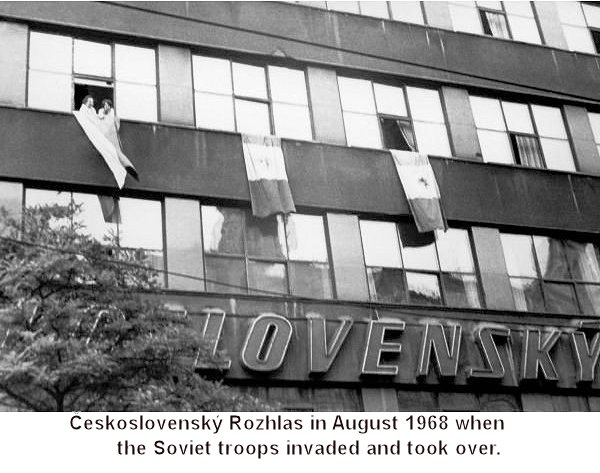 Československý Rozhlas (or Czechoslovak Radio in English) began regular broadcasts on 18 May 1923. It retained this name until 31 December 1992 when the country was split into the Czech Republic and the Slovak Republic. Each country then had their own broadcast organizations.
Československý Rozhlas (or Czechoslovak Radio in English) began regular broadcasts on 18 May 1923. It retained this name until 31 December 1992 when the country was split into the Czech Republic and the Slovak Republic. Each country then had their own broadcast organizations.
Československý Rozhlas was audible at our home in southern Germany on a number of frequencies on medium wave. Some were easier catches than others. I sent reports to their headquarters in Prague and received the regular Radio Praha (Prague) QSL cards in return. The personnel got the frequency correct on only one of the cards (1098 kHz.) I assume that it was because they normally did not handle reception reports for non-shortwave transmissions. I have noticed this type of thing from other broadcasters. I photo-shopped the correct frequencies on the QSL copies below.
Belgische Radio- en Televisieomroep (BRT)
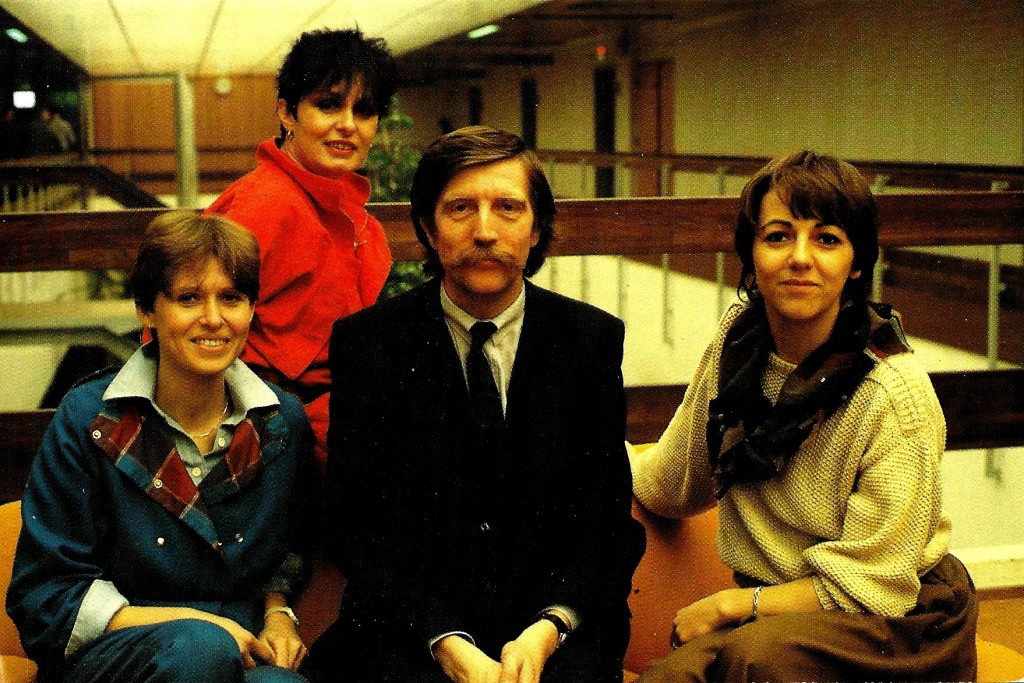
Belgische Radio- en Televisieomroep (BRT) was a broadcast service for the Flemish community in Belgium, on the air from 1960 to 1991. It was a predecessor to the current Vlaamse Radio- en Televisieomroeporganisatie. They broadcast three nationwide radio programs as well as regional programs on medium wave (540, 927, 1188, and 1512 kHz) and on FM. They also broadcast an international service on 1512 kHz and on shortwave. It was called BRT Wereldomroep. Their English program was called Brussels Calling.
I joined the BRT International Listeners’ Club so that I could send receive their QSL cards (seen below). One is for their domestic service on 927 kHz and the rest are for their international service on 1512 kHz and 9925 kHz.
Belgisches Rundfunk- und Fernsehzentrum (BRF)
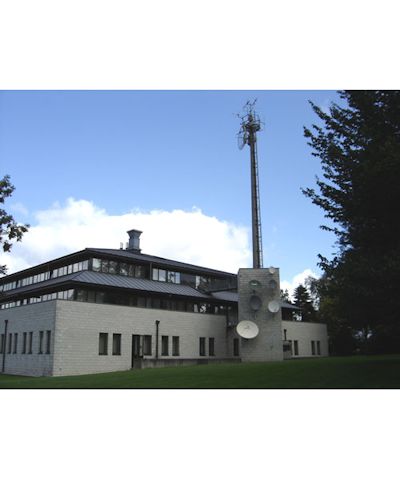
Belgisches Rundfunk- und Fernsehzentrum (BRF) is public service broadcaster serving the German speaking community in Belgium. It has two radio channels of its own and a joint channel with Germany’s Deutschlandfunk. It also produces a German language television channel which is broadcast via cable. Their main office is located in Eupen. You can find them on the web at http://brf.be/
When traveling through Belgium in July 1989, we heard their broadcasts on 94.9 MHZ (St. Vith) and 100.5 (Eupen). (NOTE: Transmitter locations from the 1989 World Radio and TV Handbook – WRTH). They sent a QSL card verifying both of those frequencies for my reception report
I am not sure of the current name of this broadcaster. The name given above is from the QSL card below. However, I have seen more recent references which state their name is simply Belgische Rundfunk.
Radio Télévision Belge Francophone (RTBF)
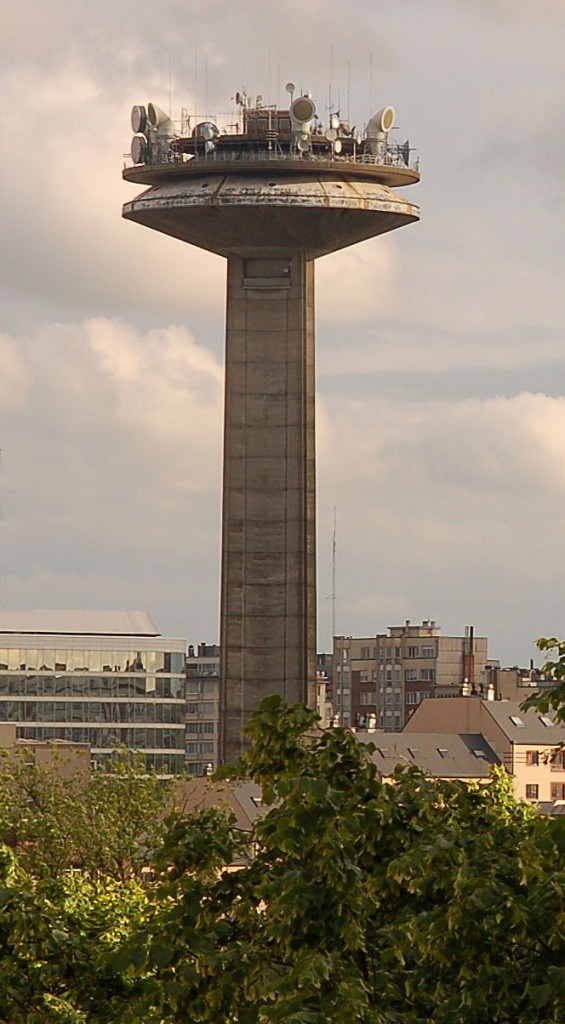
Radio Télévision Belge Francophone (RTBF) is the public broadcaster which serves the French speaking community of Belgium. It operates several television and radio networks. Its website is at www.rtbf.be.
I was able to hear their medium wave outlets at our home in southern Germany. We heard one of their FM outlets during a trip to Belgium in 1989. The FM transmitter was located in Léglise near the Luxembourg border. They also had a shortwave service for French speaking Belgians living aboard. You can see the QSL cards they sent for my receptions reports below. This is one of my favorite QSL card sets.
Jungendradio DT64
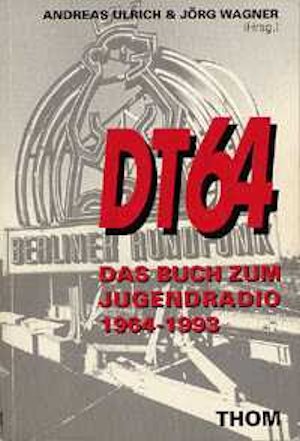
Jungendradio DT64 was a youth-oriented program which was produced by the Rundfunk der DDR. It was founded in 1964 and finally ceased operation as DT64 1986 in May 1993.
The medium wave frequency of 657 kHz was used exclusively by Berliner Rundfunk up to 1987. Jungendradio occupied the frequency after that. On FM before Antenne Bayern signed on to 102.7 MHz transmitting from Zugspitze, Jungendradio was audible on that channel near Munich. That would make sense because Sonneberg was just inside East Germany.
Rundfunk der DDR responded to my reception reports of 657 and 102.7 with the QSL cards you see below. I believe that the person handling the QSLs did not know or understand that Jungendradio was broadcast on 657 because they sent a card printed with Stimme der DDR on it. I will take it anyway.
Stimme der DDR
above graphic by Ericmetro [Public domain], via Wikimedia Commons
Stimme der DDR (Voice of GDR) was a radio program for German speakers who lived outside of East Germany. The programming consisted mainly of political, information, culture. On 15 November 1971, it was established as a result of the merger of Deutschlandsender and Berliner Welle. In 1990 after the two Germanys united, Stimme der DDR ceased transmissions and its facilities were absorbed by other German broadcasters.
Their medium wave outlets were all audible in our home in southern Germany, and I managed to also receive their shortwave outlet on 6115 kHz. I heard one or two of their FM outlets during a trip to Berlin. You can see the QSL cards they sent for my reception reports below.
(Scroll down.)
Radio DDR 1
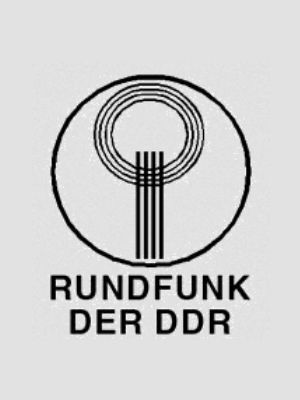
Radio DDR 1 was a radio network in East Germany. Its programming consisted of light entertainment and news. It was founded in 1953 and ceased transmissions in 1990 when the two Germany’s united. Its broadcasting facilities were absorbed by other German broadcasters.
It was possible to hear all of Radio DDR 1’s from our home in southern Germany. You can see the QSL cards they sent back for my receptions reports.
Berliner Rundfunk
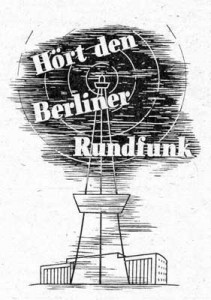 Berliner Rundfunk was a radio station network in East Germany. It was established soon after World War II by the Soviet Military Administration in Germany. The station’s focus was political and primarily centered around events in East Berlin. It ceased transmissions in February 1990 when the two parts of Germany united. Soon after, a private radio station co-opted the network’s name and started broadcasting on 91.4 MHz in Berlin.
Berliner Rundfunk was a radio station network in East Germany. It was established soon after World War II by the Soviet Military Administration in Germany. The station’s focus was political and primarily centered around events in East Berlin. It ceased transmissions in February 1990 when the two parts of Germany united. Soon after, a private radio station co-opted the network’s name and started broadcasting on 91.4 MHz in Berlin.
I was able to receive all of their medium wave outlets at our home in Southern Germany. They sent these full data QSL cards in response to my reception reports. (Scroll down to view all of the QSL cards I received from them.)
Radio Bremen
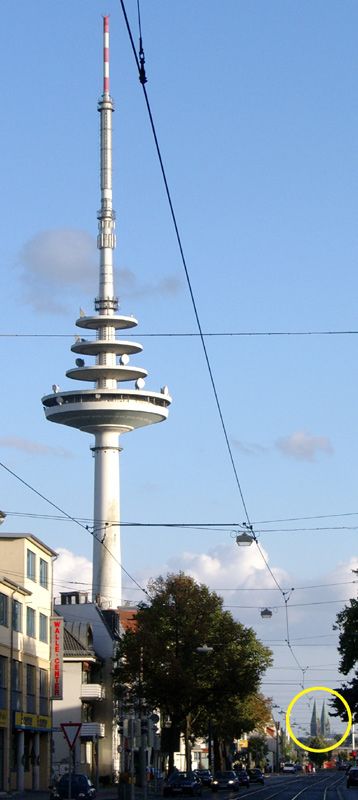
(Public Domain – wikipedia.com)
Radio Bremen is the smallest public broadcaster in Germany, serving the city state of Bremen, which also includes Bremerhaven. Their medium wave transmitter using 936 kHz is operated by Radio Bremen. The Deutsche Telekom operates the transmitters for Radio Bremen’s FM and TV signals from the Bremen-Walle Telecommouncation Tower (seen on the left) and from a site in Bremerhaven. They also used to broadcast their programs on a shortwave transmitter on 6190 kHz.
The station responded to my reception reports by issuing the QSL cards seen below.
Sender Freies Berlin (SFB)
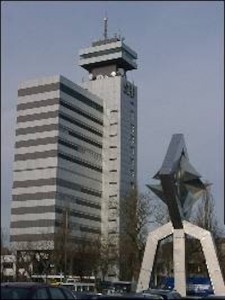 Sender Freies Berlin (SFB) was a public broadcaster for West Berlin from 1954 to 1990 when East and West Germany united, and for all of Berlin until 2003 when it merged with Ostdeutscher Rundfunk Brandenburg (ORB) to form Rundfunk Berlin-Brandenburg (RBB). Their medium wave outlets were all heard fairly easily at our home in southern Germany. I heard their shortwave outlet in 1986 when we lived in Maryland. Below, you can see the QSL cards they sent in response to my reception reports. I heard their FM outlets on my trip to Berlin.
Sender Freies Berlin (SFB) was a public broadcaster for West Berlin from 1954 to 1990 when East and West Germany united, and for all of Berlin until 2003 when it merged with Ostdeutscher Rundfunk Brandenburg (ORB) to form Rundfunk Berlin-Brandenburg (RBB). Their medium wave outlets were all heard fairly easily at our home in southern Germany. I heard their shortwave outlet in 1986 when we lived in Maryland. Below, you can see the QSL cards they sent in response to my reception reports. I heard their FM outlets on my trip to Berlin.
RIAS – Rundfunk im amerikanischen Sektor
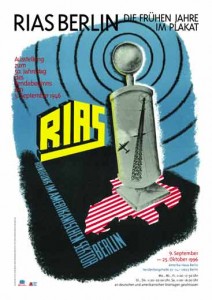 The US occupation authorities established the broadcaster Rundfunk im amerikanischen Sektor (Broadcast in the American Sector or RIAS) just after World War II to provide the German population in and around Berlin with news and political information. By the end of the Cold War, the broadcaster’s importance faded away and by the early 1990’s other German broadcasters absorbed its broadcasting facilities.
The US occupation authorities established the broadcaster Rundfunk im amerikanischen Sektor (Broadcast in the American Sector or RIAS) just after World War II to provide the German population in and around Berlin with news and political information. By the end of the Cold War, the broadcaster’s importance faded away and by the early 1990’s other German broadcasters absorbed its broadcasting facilities.
I heard them on FM during a trip to Berlin in 1987. Their medium wave (AM) outlets were all easily audible at our home in southern Germany. I also heard them on shortwave in the USA on 6005 kHz. They responded with QSL cards, which can be seen below, for my reception reports.
